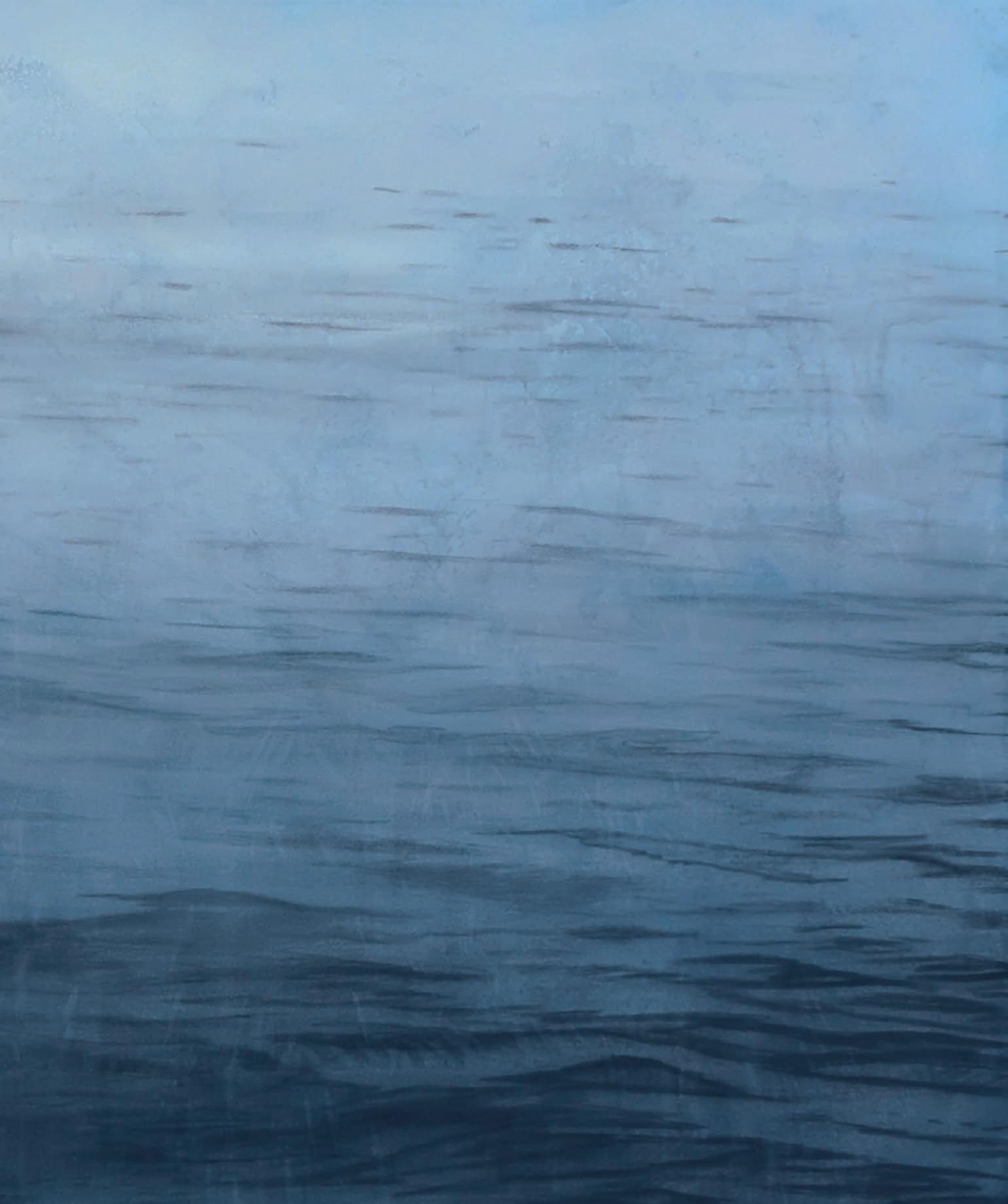

LU X URY M A GAZIN E
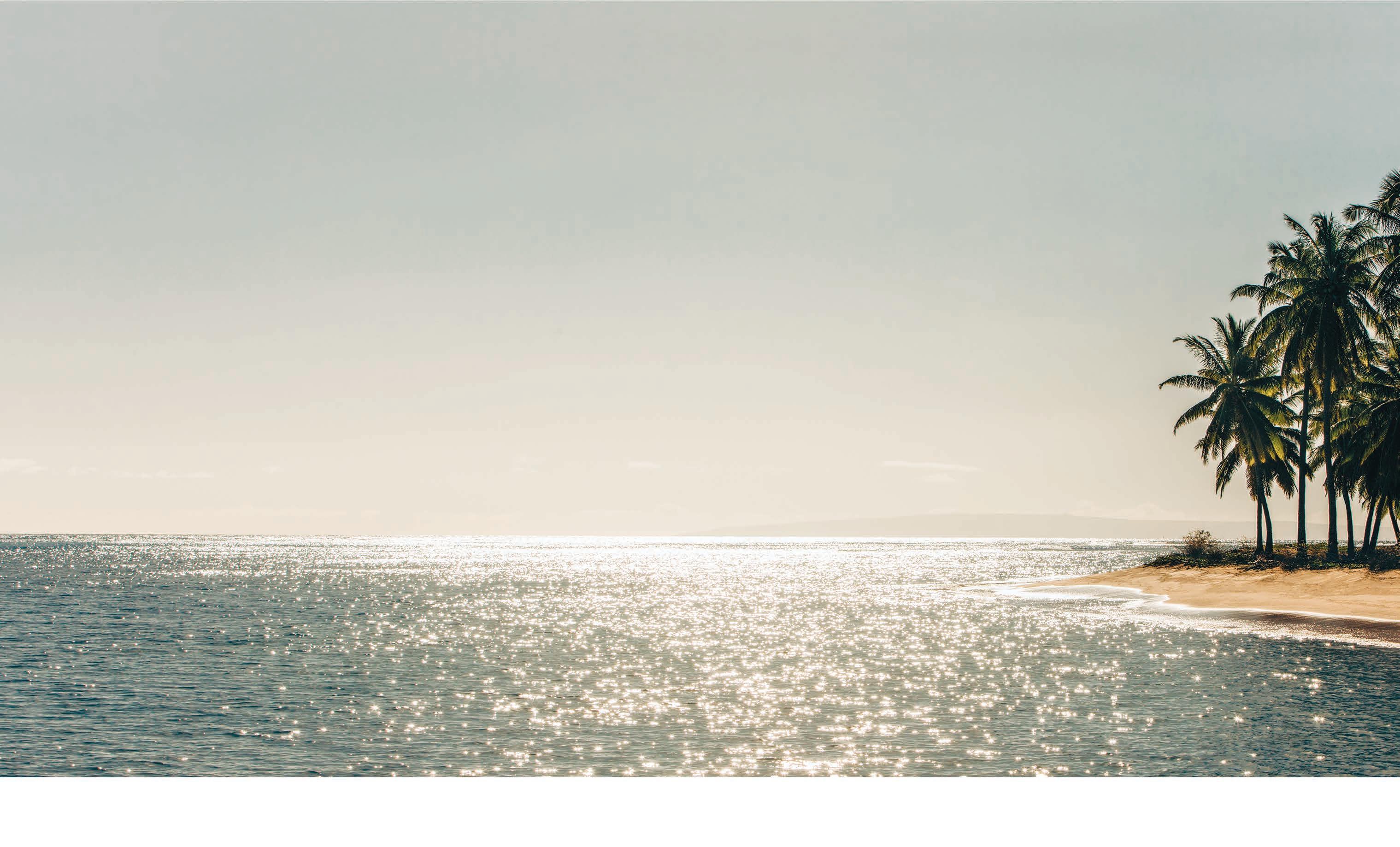
cd: ROBB AARON GORDON


cd: ROBB AARON GORDON

Urs Fischer, The Breach, 2017 © Urs Fischer. Courtesy of the artist
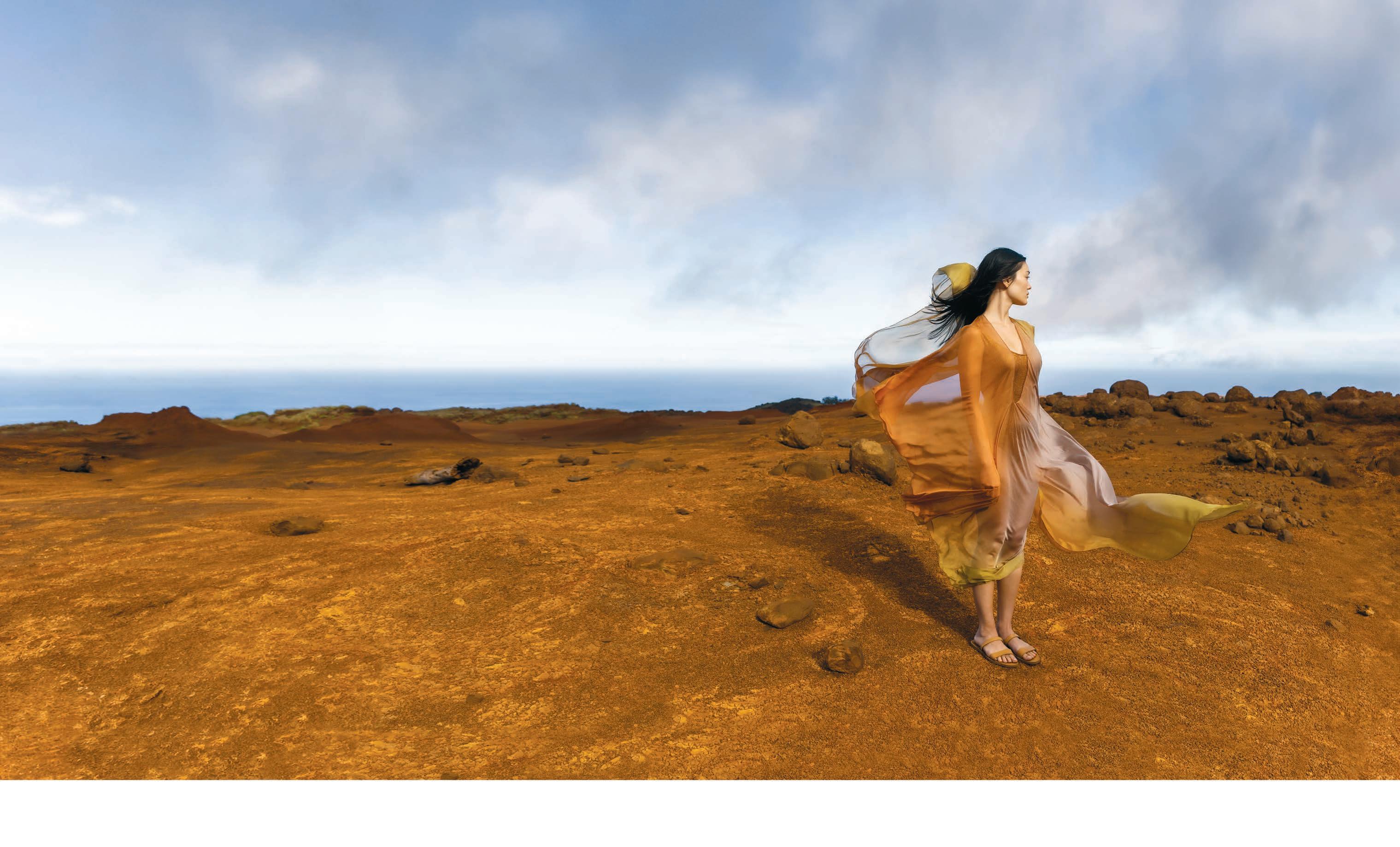
cd: ROBB AARON GORDON

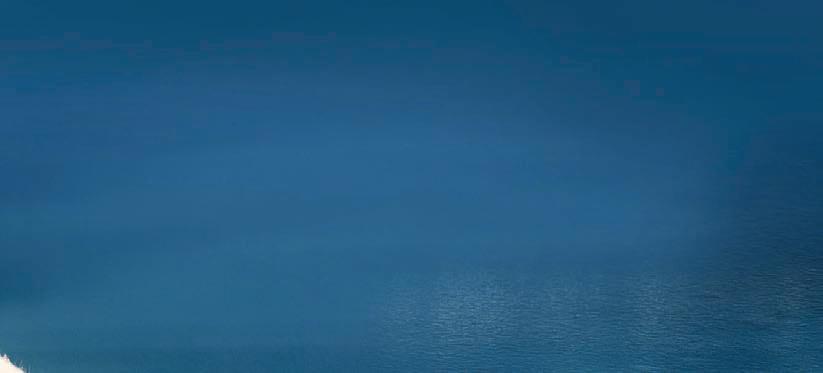
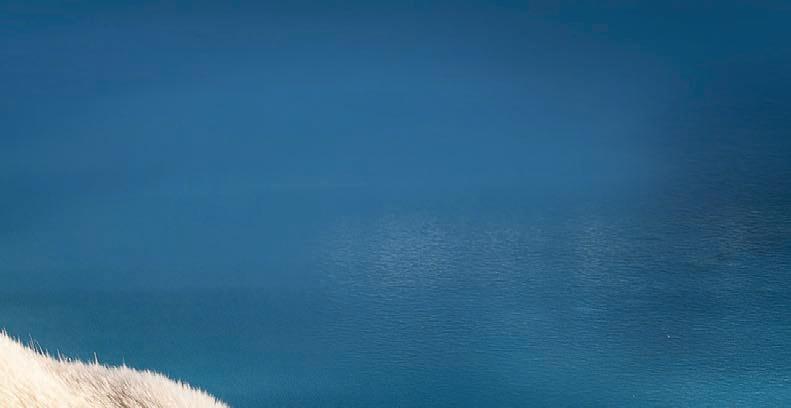
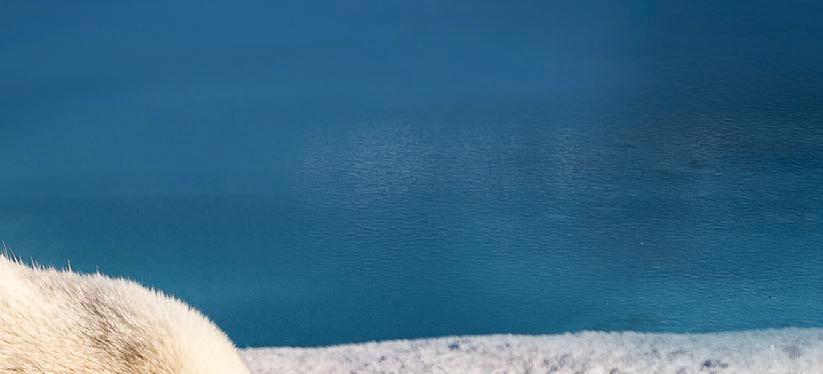

MEDITERRANEAN



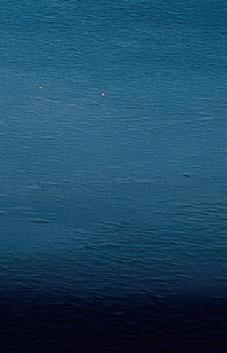
ANTARCTICA / SOUTH AMERICA / CARIBBEAN & BERMUDA
/ NORTHERN EUROPE / ARCTIC

At Atlas, we have set a new course for expedition cruise travel, curated for spirited explorers, led by expert guides, and enhanced by a genuine and caring crew who share a desire to connect with people, places, and our cherished natural world. From bold adventures in the Arctic and Antarctica to Cultural and Epicurean Expeditions year-round, travelers return to our luxury yachts to savor moments well-lived among new friends in a relaxed, après expedition atmosphere.
Begin exploring at AtlasOceanVoyages.com
ALWAYS INCLUDED BY ATLAS: Expedition Guides + Enriching Experiences, L’OCCITANE Amenities, Unlimited Wines + Spirits, Gratuities and More
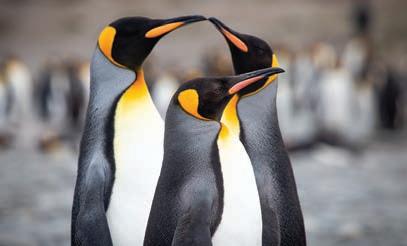
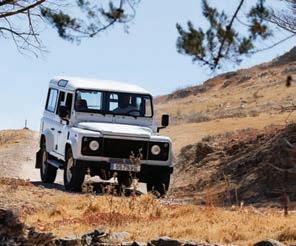
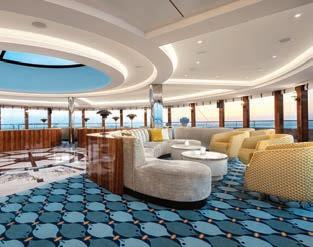
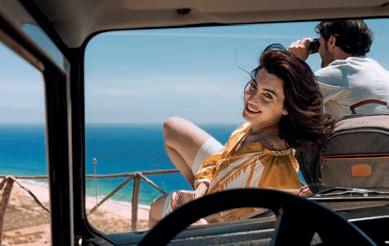

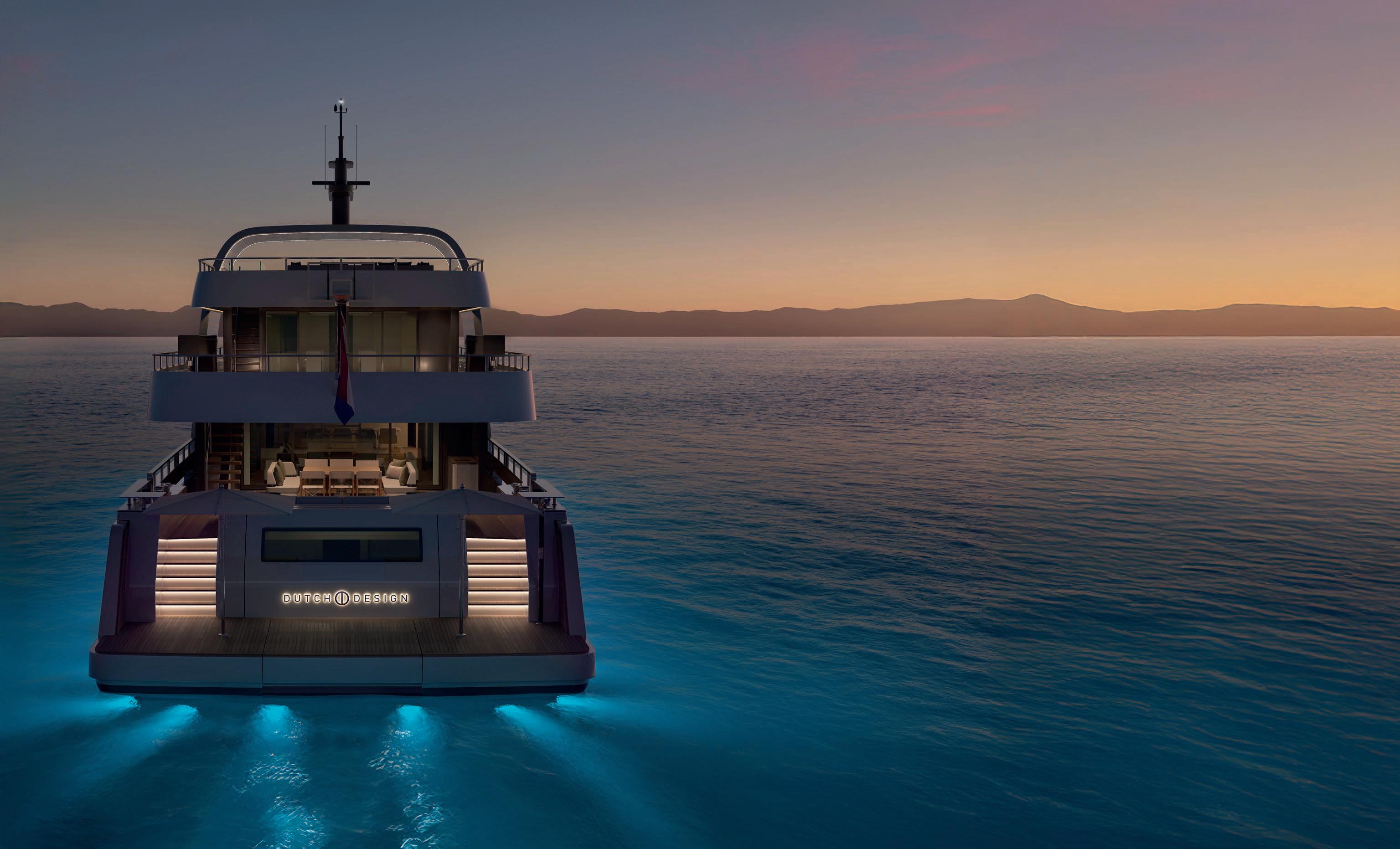


Dear Luxury Card Member:
LUXURY MAGAZINE® presents its 2025 Issue with a focus on bespoke adventure travel, collectible cars and 1960s-inspired high fashion. From discovering the secrets of South America to booking the best in recovery in Las Vegas, readers gain the insider knowledge needed to follow through on their next great pursuit—whether it’s playing a premier private course in the U.K., booking the most exclusive suite in the BVI or knowing which niche bourbon to order next. Plus, cover artist Ricky Lee Gordon talks about his great Balinese escape and the meditative practice of painting the ocean.
Weekend in the City
Feminine silhouettes were forever changed by the 1960s counterculture movement. Mod is marvelous always, and again, in vintage psychedelic prints and global textiles. Our fashion editorial—shot in New York at the famed Hotel Chelsea—features elegant looks for going to the market or meeting for drinks.
Track Attack
Rare and expensive track special collectibles can be impossible to find, whether you’re after the thrill of driving them, or the thrill of carefully parking them in your garage. These almost mythical models by Ferrari, McLaren, Aston Martin and Maserati deliver on both extreme rarity and gravity-defying performance.
Hiking Around the World
The best hiking trips highlight memorable sites at a pace you can enjoy and are paired with stays at luxury hotels and custom private departures. Heli-hike in British Columbia, explore Ireland and Scotland or trek right up to glimpse gorillas in Rwanda.
Accept your invitation to indulge your passions and determine your next great adventure. Turn the page for spotlights on American cities and craft bourbons, European furnishings and automobiles, exclusive Caribbean resorts, backyard pool houses, luxury branded vacation homes and more.
Best regards,
Marina Kissam Vice President, Customer Experience



Earn up to 7X the national average on qualifying balances.*
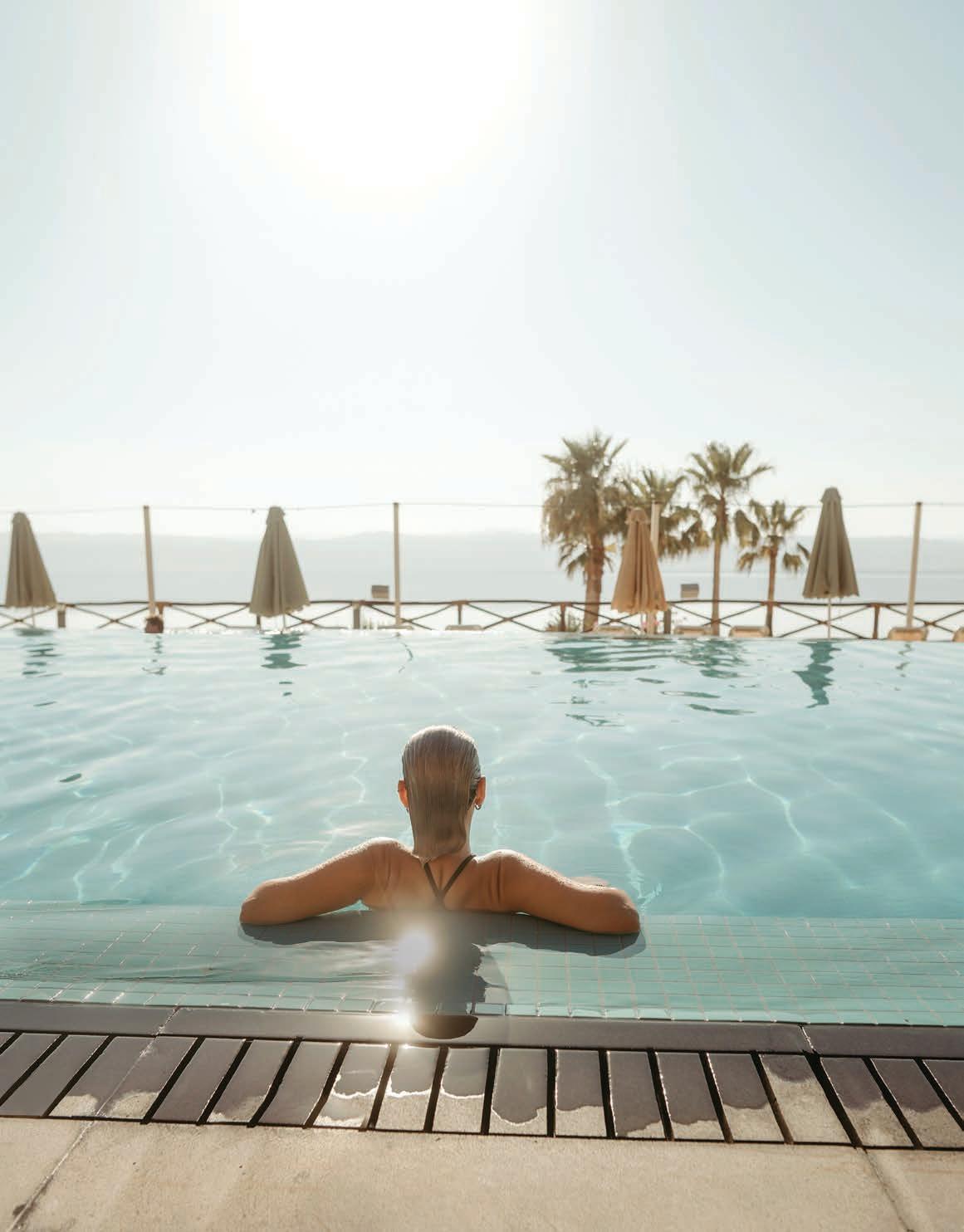

* The APY for the Barclays Tiered Savings account for balance tiers $0 to <$10,000, $10,000 to <$25,000, $25,000 to <$100,000, $100,000 to <$250,000, and $250,000 to $1,000,000 are currently 7X the national average of 0.41% APY, based on the national average of savings account rates published in the FDIC’s National Rates and Rate Caps, accurate as of 4/21/2025. Member FDIC.

From art exhibits and hotel openings to adventure and travel experiences.

DESIGN THE DENVER EFFECT
Find the new Populus hotel at the intersection of sustainability and luxury.

CHEAT SHEET
NASHVILLE
Music City maintains its reputation for a good time.
CHEAT SHEET FORT WORTH
Where cowboy culture is ingrained like wellworn leather.
The latest and greatest golf clubs, gear, tech, and accessories.
AUTOMOTIVE TRACK ATTACK
Rare and expensive track special collectibles.
A new generation of smallbatch distilleries are crafting exceptional whiskeys in unexpected locales.
FASHION
CHELSEA WEEKEND Shot in New York at the famed Hotel Chelsea.
Six standout pool houses from Connecticut to California.
FURNISHINGS HOLD MY DRINK
These side tables stand out as sculptural statement pieces.
LUXURY MA GAZINE

WELLNESS TRAVEL
SEVEN SPA DAYS IN SIN CITY
Las Vegas is winning in the world of wellness and recovery.
104
TRAVEL
VIP BVI
Rediscovering the British Virgin Islands, one exclusive resort at a time.
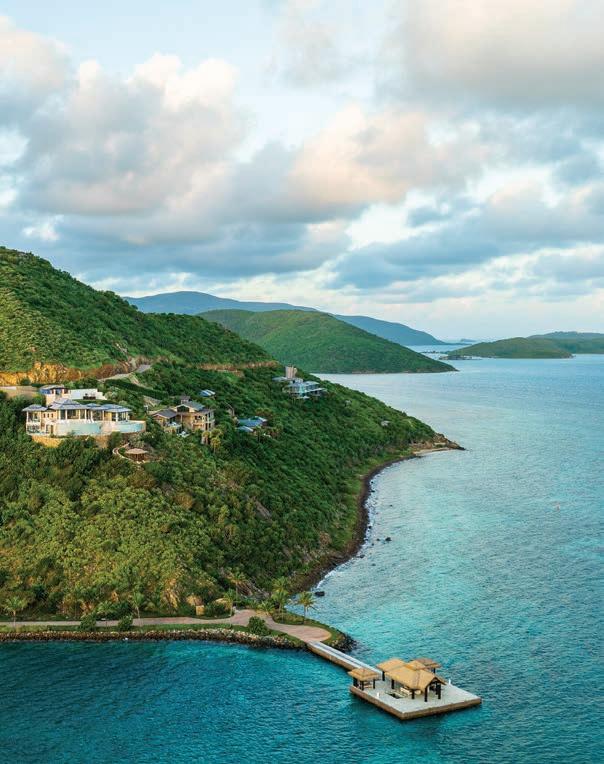
112
ADVENTURE
SOUTH AMERICA
Uncover four of the continent’s most remote, awe-inspiring escapes.
124
SPORTS TRAVEL
PRONE TO WANDER
The world’s best hiking trips highlight memorable sites at a pace you can enjoy.
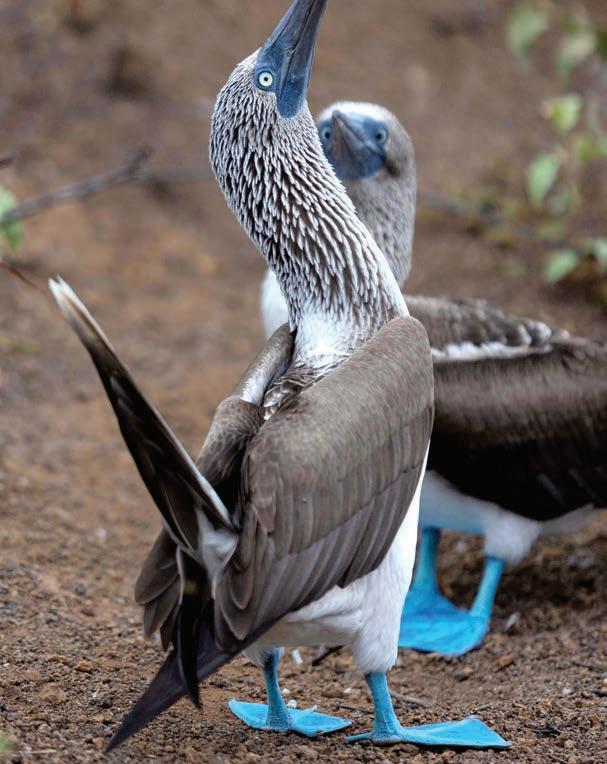
LUXURY MA GAZINE
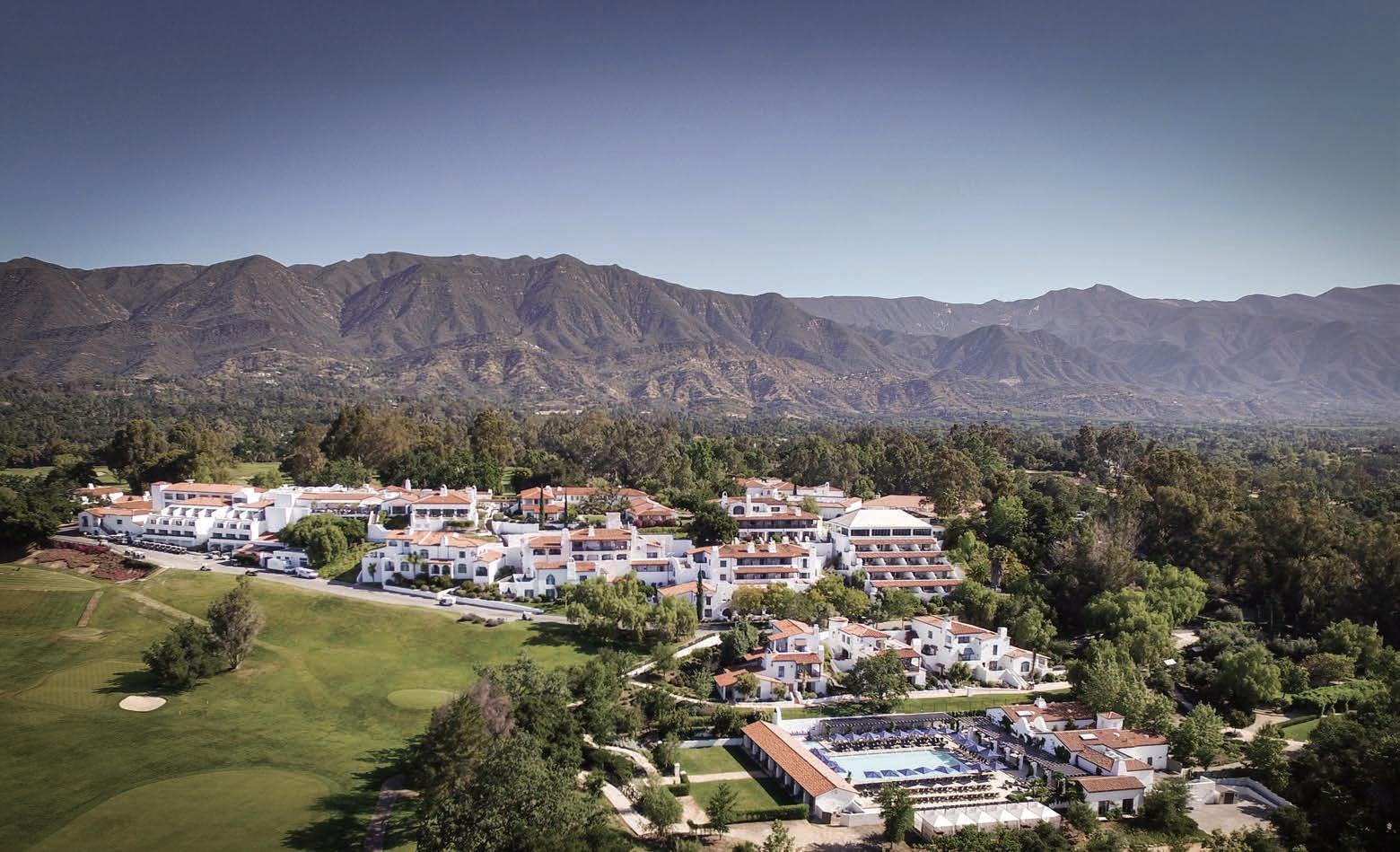
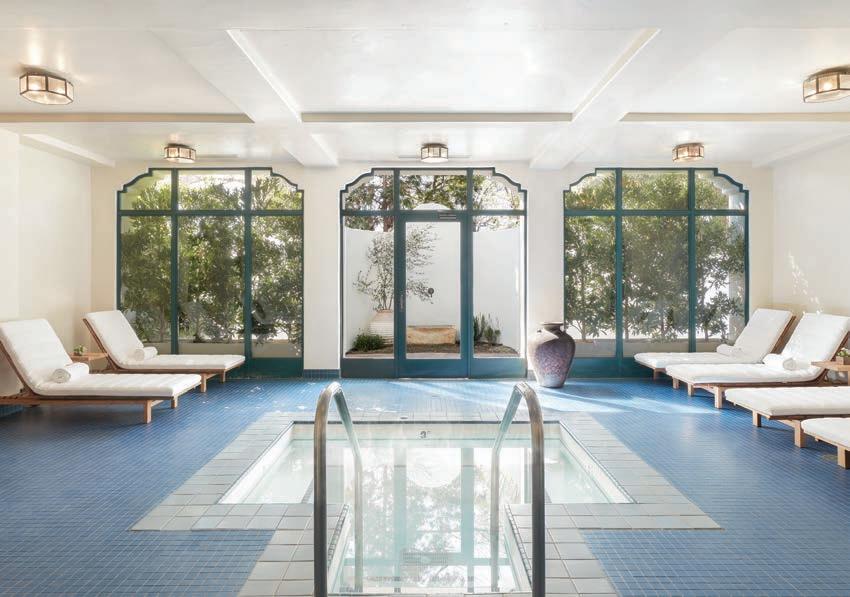
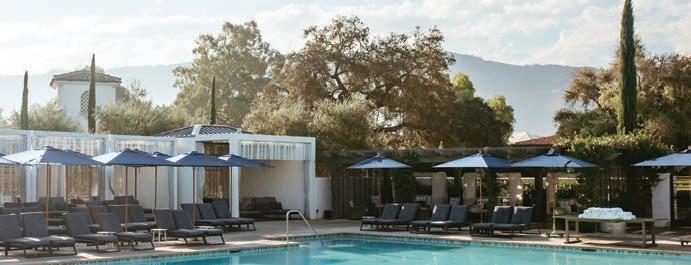
ESCAPE IN A MOMENT
Take time to revel in the joy of travel, share magical moments with loved ones, and discover new adventures at Ojai’s beloved 220-acre retreat. Come rejuvenate at our Forbes Five-Star Spa Ojai, delight your palate at The Farmhouse, and find sanctuary in our private villas and fully refreshed guestrooms. Our serene mountain valley welcomes you to escape in a moment with Ojai’s rare spirit.
(855) 969-2621 OjaiValleyInn.com
134
SPORTS TRAVEL PLAYING THE HEATHLAND FIELDS
These aren’t diamonds in the rough; they’re jewels in the heather.
140 REAL ESTATE WHAT’S IN A NAME Branded residences are the fastest-growing segment of the luxury real estate market.
152 ARTIST PROFILE THE OCEAN IN FRONT OF YOU Vast indigo works by RICKY LEE GORDON captivate audiences the world over.
162
THE LAST PAGES WHAT’S NEXT
From fun shops and coffee table books to new restaurants, bars, and spirits.
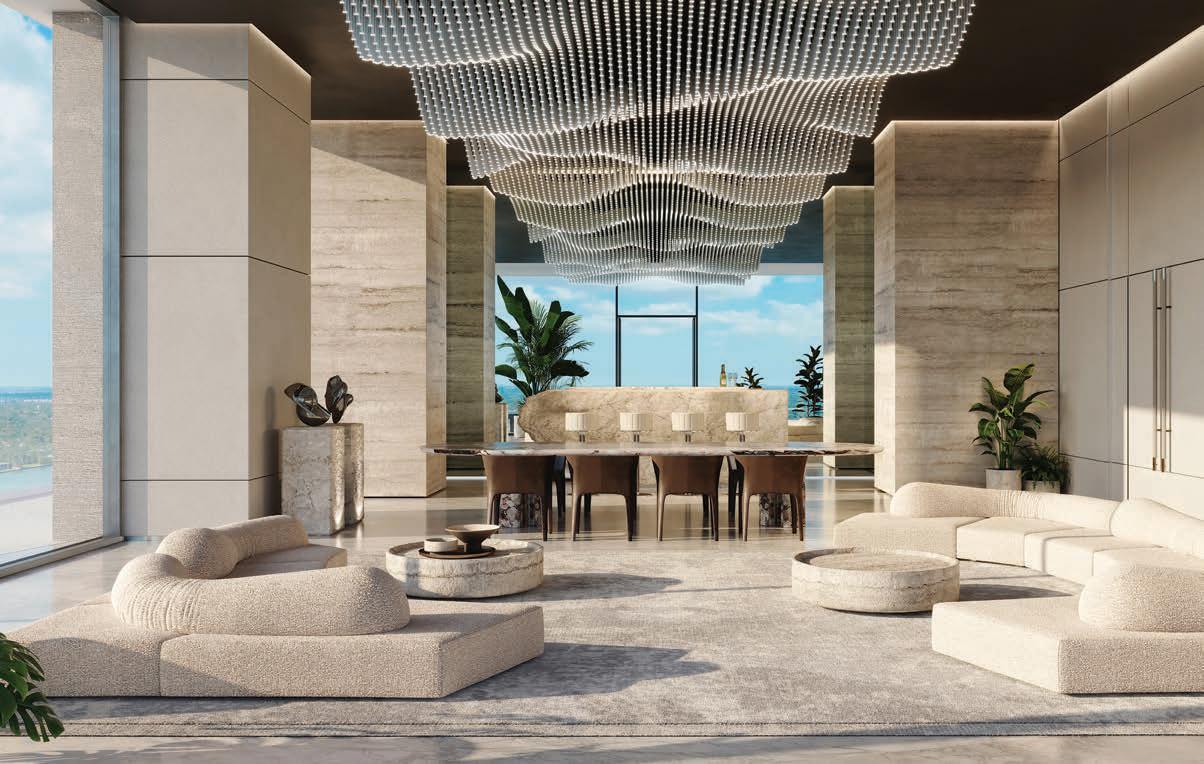
LUXURY MA GAZINE
WHERE LUXURY REIGNS

Witness the Most Exciting Two Minutes in Sports® like few can. Elevate your 2026 Kentucky Derby experience with the new Conservatory Project! The Conservatory Project adds luxury, premium ticket options, including the Pagoda Club and Terrace, 36 private suites with a rooftop, and the Stargazer Lounge. Reserve your luxury experience today. Contact our Premium Sales Team at 502.636.4447


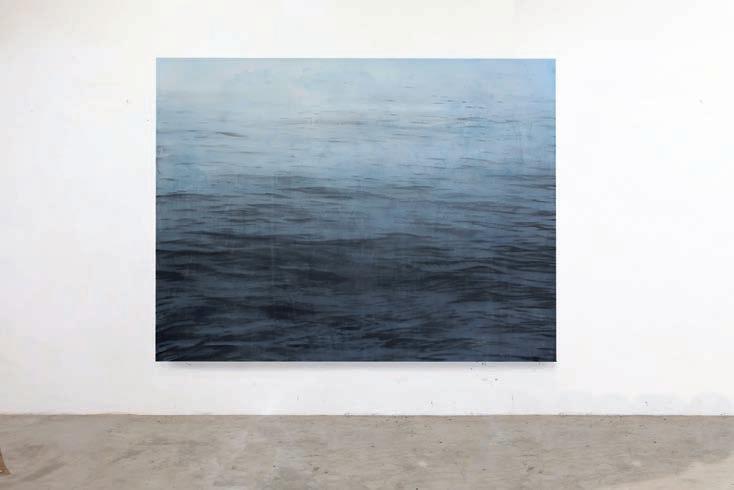
On the Cover
“You can’t be human alone,” says South African–born, Bali-based artist Ricky Lee Gordon. “Being human is community, looking after each other, raising each other up. Moving together as a tribe. That was the origin of man. It’s what I saw in nature, in growing up in South Africa, and what I found again in Buddhism, which says, ‘To prevent a drop of water from drying out, throw it in the sea.’”
You can sense this sentiment of continual movement and connection in Indigo Blue, 2023. To stare at the work is also to find and go with the flow of the artist and his subject. “Most of the time I liken the painting to Japanese calligraphy, one flow movement. Whatever happens in that experience is the result. And the energy is held in that.”
The gradation of blue draws the eye simultaneously into powdery light levity and down into deep marine darkness. Everything is derived from a single pigment: indigo. In Bali, where Lee Gordon helms Sun.Contemporary—a gallery he founded in 2024 to create connections between the island’s creative community—he met the artist and indigo master Sebastian Mesdag, who showed him how to harvest and make his own dye from the plant.
For Lee Gordon, the process of painting this way is cathartic. “On the best day it’s like the first time I found my rhythm,” he says. “I was 21 when I danced in tune for the first time. Growing up I thought I had no rhythm, and then all of a sudden I was dancing all night and I was like: ‘Oh my god! That feels so good.’ You get to a point where intuition takes over and all of your worries go away, all of your stress goes away. It’s not a sense of escapism; it’s a sense of fully present awareness.”
LUXURY MAGAZINE’s profile of Ricky Lee Gordon begins on page 152.
© Ricky Lee Gordon

EDITOR
Jennifer Ashton Ryan
CREATIVE
Jennifer Fahey
SENIOR
Marie Sumino
FASHION
Ambika Blackburn
PHOTO
Kristen Hill
COPY EDITORS
Kersten Deck
Jenna Sims
CONTRIBUTING
Jorge S. Arango
Mark Hacking
Brooke Mazurek
Larry Olmsted
Irene Rawlings
Hillary Richard
Paul Rubio
Shaun Tolson
Frank Vizard
Nora Zelevansky LUXURY
CONTRIBUTING
Dean Isidro
Rima Dorsey PUBLISHED
CONTRIBUTING STYLIST
Christopher Campbell
VICE PRESIDENT
Caren Kabot
ADVERTISING SALES
Trica Baak



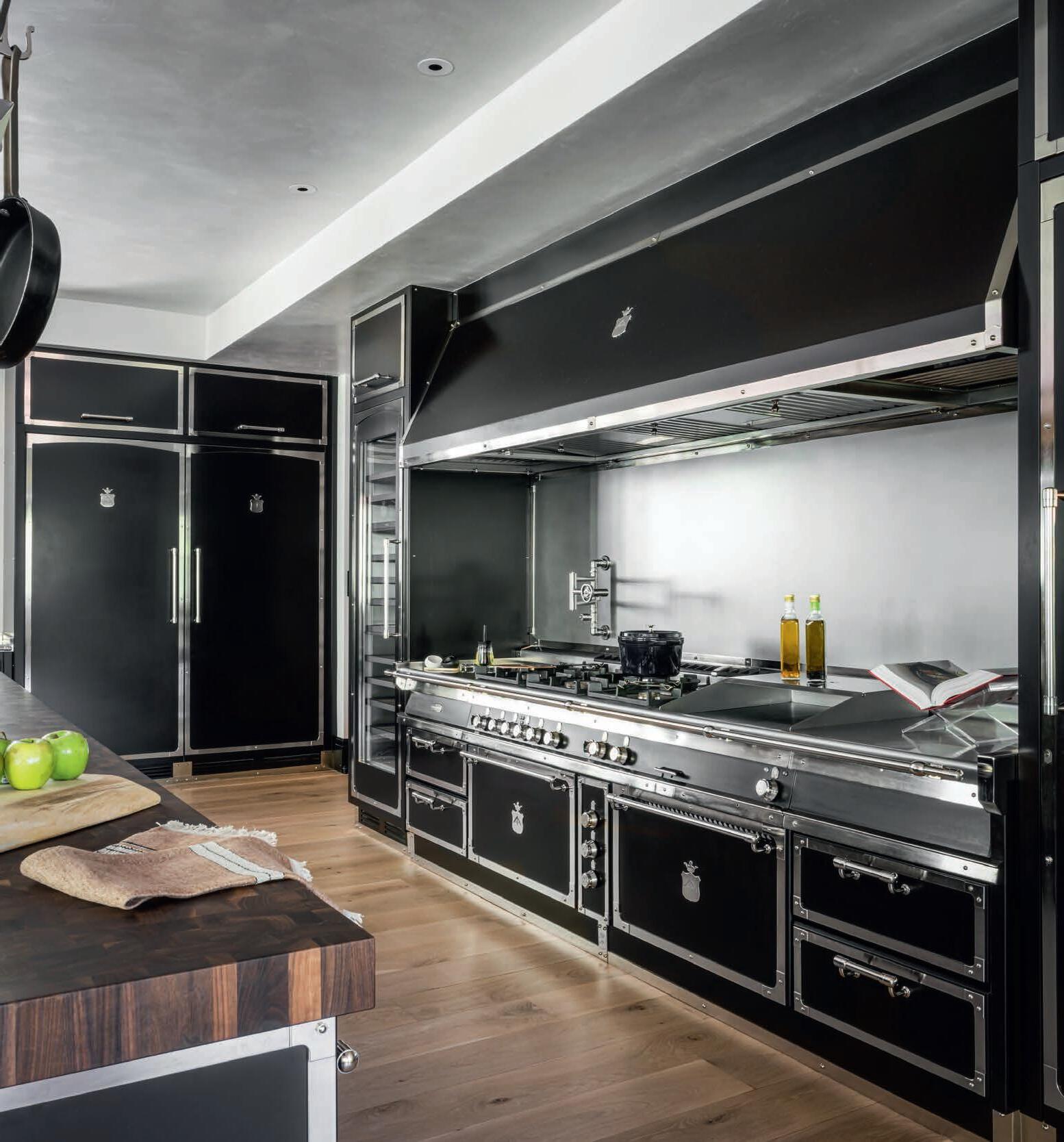
What’s What
ART, CULTURE & DESIGN
Historic Stays: From Lake Garda, Italy, to the California coast, many 20th-century architectural masterpieces that were falling into disrepair have been reborn as house museums and rental properties open for overnight stays. Now such properties are searchable via ICONIC HOUSES, including Casa Salvati on Italy’s Lake Garda. This frozen-in-time, 1970s gem sleeps five. Volman Villa (near Prague) is a treasure of Czech modernism, Casa Navenga (near Zurich) showcases the Neues Bauen style, and Case Study House #26 in San Rafael, California, exemplifies the American postwar movement. iconichouses.org
Fashion Forward: A first-ever exhibition featuring her clothing, shoes, and accessories, Marie Antoinette Style is at V&A South Kensington September 20 through March 22, 2026. And if you love big diamonds and dazzling tiaras, don’t miss Cartier, through November 16. vam.ac.uk

To celebrate its bicentenary, London’s National Gallery hangs C C Land: The Wonder of Art, a once-in-a-generation redisplay
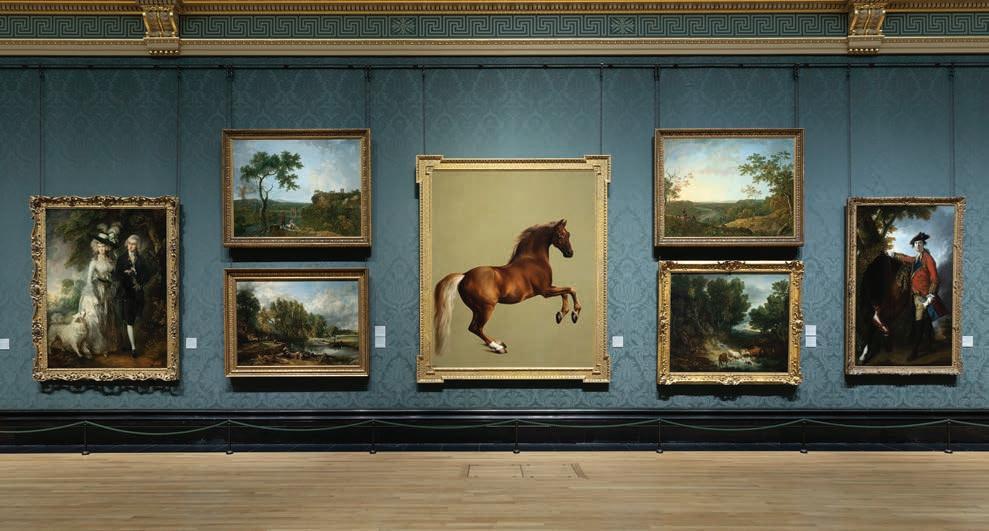
of more than 1,000 works from its permanent collection. For some of the museum’s most recognizable artists (including Titian and Monet), dedicated rooms have been set up. nationalgallery.org.uk
The Scharf Collection (notable for its 19th- and 20th-century French art, including pieces by Monet, Cézanne, Degas, and Bonnard) displays its entire collection for the first time at Alte Nationalgalerie in Berlin, October 24–February 15, 2026. smb.museum
A new museum dedicated entirely to Chinese ceramics, the Albuquerque Foundation opens in Sintra, Portugal. Previously known only to scholars, the collection has an encyclopedic body of Chinese ceramics, with special emphasis on Chinese export porcelain, which flourished between the 16th and 20th centuries. albuquerquefoundation.pt
The Stars We Do Not See: Australian Indigenous Art reveals a rich history of creativity of the Aboriginal Australians, including conceptional map paintings (dot paintings), ochre bark painting, and weaving. Also included: the
work of contemporary new media artists. At the National Gallery of Art, Washington, D.C., October 18–March 1, 2026. Then the exhibit travels through January 2028 to the Denver Art Museum, the Portland Art Museum, the Peabody Essex Museum in Salem, Mass., and the Royal Ontario Museum in Toronto. nga.org
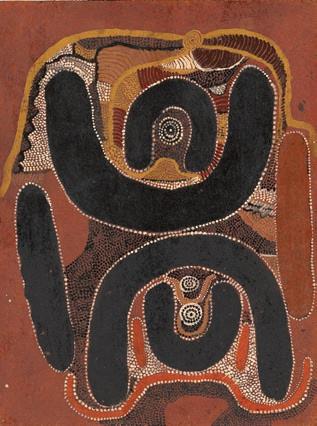
Headstrong – Basquiat on Paper is the first comprehensive show dedicated to Jean-Michel Basquiat’s powerful depictions of the human head—which he, fascinated by what lay beneath, called “the visible façade.” From January 29 to May 17, 2026 at the Louisiana Museum of Modern Art, Denmark. louisiana.dk
Sargent The Paris Years (1874–1884) shows more than 90 works from the artist’s arrival in Paris (at age 18, where he quickly became a sought-after portrait painter) until he was forced to move to London, following the scandal caused by his now-iconic Portrait of Madame X. At the Musée d’Orsay in Paris September 23–January 11, 2026. musee-orsay.fr
At the Moderna Museet Stockholm, November 22–April 5, 2026, Late Picasso features 70 broad-brush paintings from a prolific but often-overlooked period (1963–1972) of the artist’s life. He died in 1973. modernamuseet.se
Organized in close collaboration with the artist, the Yayoi Kusama Retrospective offers a

C C Land: The Wonder of Art
Australian indigenous art
Women with Bird by Pablo Picasso
Antoinetta, 2005 by Manolo Blahnik

complete overview of Kusama’s more than seven-decade career, including the artist’s celebrated Infinity Mirror Rooms—at Switzerland’s Fondation Beyeler (fondationbeyeler.ch) October 12–

Glenstone Museum
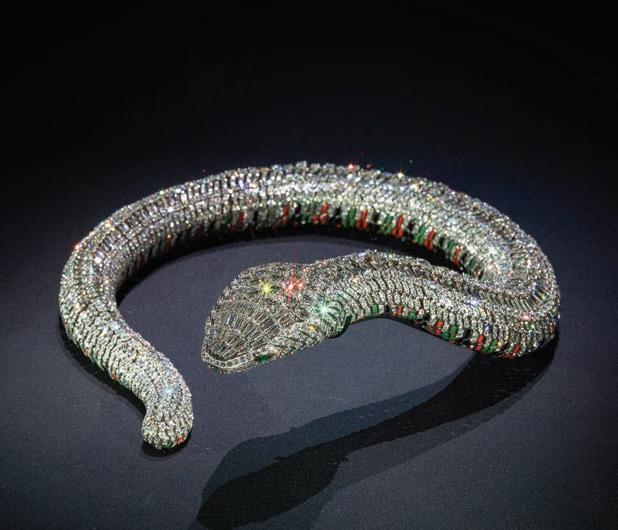
January 25, 2026. If you miss this, the exhibition moves to Cologne, Germany, and then to Amsterdam through January 2027. There is also the Yayoi Kusama Museum (yayoikusamamuseum.jp) in Tokyo, but plan ahead; tickets sell out weeks in advance.
Turner and Constable explores the legacies of two of Britain’s greatest landscape painters— colleagues born 250 years ago, but also the greatest of rivals. They share a common


thread: their deep connection to nature, which, in the 19th century, was undergoing profound changes. November 27–April 12, 2026, at the Tate in London. tate.org.uk
Encompassing the entirety of the museum’s rotunda, Rashid Johnson: A Poem for Deep Thinkers shows almost 90 two- and threedimensional works from the pivotal phases of Johnson’s career. Live performances Friday through Monday at the Guggenheim in New York,
LISTEN UP
Opera buffs should start planning for a big opera season worldwide. At NYC’s Metropolitan Opera (metopera.org): a much anticipated premiere of El Último Sueño de Frida y Diego (“Frida and Diego’s Last Dream”) At the Vienna State Opera (wienerstaatsoper.at), the season highlight is the Opera Ball, held annually in January. You can rent a gown, invite a partner, and take waltz classes before the big event. Milan’s La Scala (teatroallascala.org) presents a new take on Richard Wagner’s legendary Ring Cycle.
From January through July 2026—as a major centerpiece of its season—Carnegie Hall presents United in Sound: America at 250 (carnegiehall .org), a citywide festival highlighting the extraordinary musical riches that have evolved and flourished in the United States since the signing of the Declaration of Independence in 1776. Broadway, film music, jazz, rock ‘n’ roll, hip-hop, bluegrass, and classical styles will showcase the American spirit through music.
—I.R.
through January 18, 2026. guggenheim.org
See art, eat, and stay at the recently opened Simose Art Museum, overlooking the Seto Sea, in Hiroshima Prefecture, Japan. In the museum: Art Nouveau glass, Japanese dolls, and modern masters like Chagall and Higashiyama. Enjoy an omakase French menu prepared with local ingredients. Stay in a forest or waterfront villa designed by architect Shigeru Ban. simosemuseum.jp
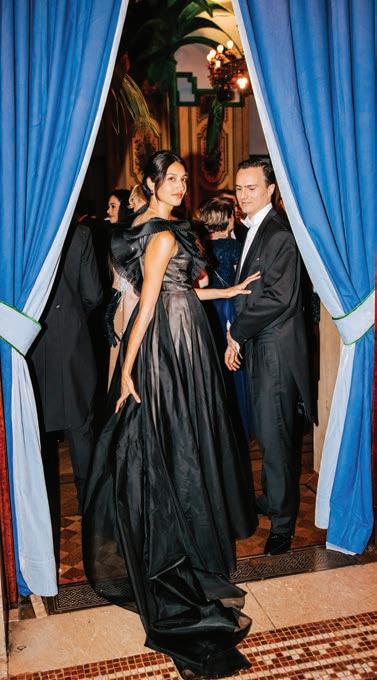
Cartier at the V&A
South Kensington
Yayoi Kusama
—Irene Rawlings
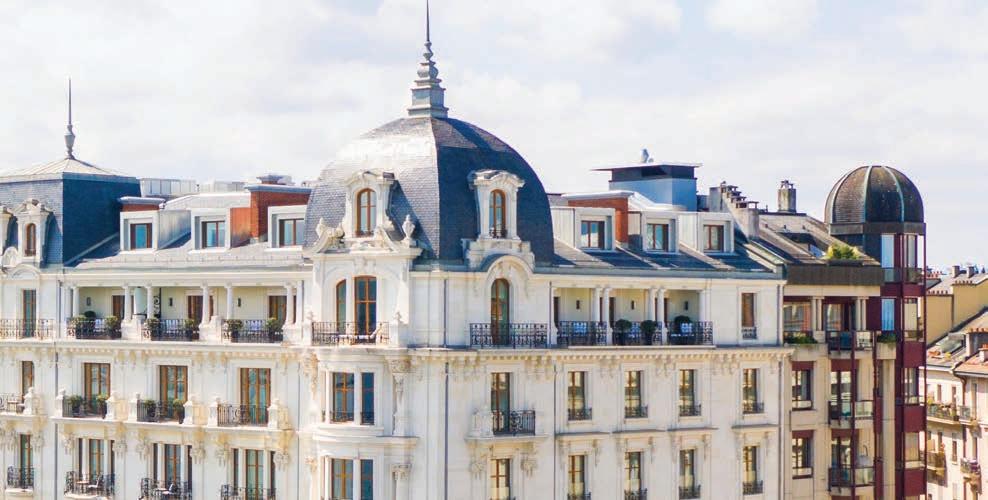
HOTELS
Raffles Sentosa Singapore launches in the famed resort enclave with 62 one- to fourbedroom, butler-serviced villas, each with a plunge pool and outdoor terrace. Choose among five restaurants or opt for in-villa dining or toes-in-the-sand beach picnics. From $1,550; raffles.com
In Japan, the 248-room Waldorf Astoria Osaka overlooks Umekita Park with 360-degree views from Osaka Bay to the Hyogo mountaintops. Echos of the original Waldorf Astoria New York can be found throughout, from the service to the decor and signature Peacock Alley bar. Local culture features at Tsukimi’s sushi and teppanyaki counter and treatments at the spa, informed by Japanese healing traditions. From $1,000; hilton.com
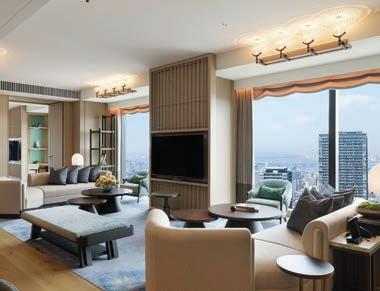
When in Rome, you can now enjoy Orient Express La Minerva, a 129-room hotel opened within a 17th-century palazzo on historic Piazza della Minerva. Staying on brand, the Hugo Toro–designed rooms and suites evoke the golden age of train travel. From $1,200, including breakfast; laminerva.orient-express.com
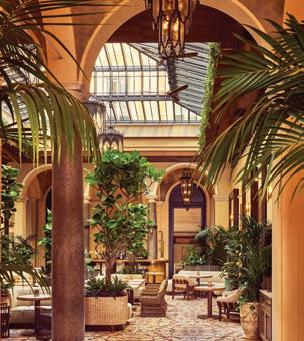
Audrey Gelman, owner of country-chic The Six Bells housewares store in Cobble Hill, Brooklyn, will expand to New York’s Hudson Valley this summer. Gelman describes the 11-room, antique-filled Six Bells Inn as “a storybook you can sleep in.” From $350; thesixbellshotel.com

On Lake Geneva with views of Mont Blanc, The Woodward opens with 26 suites. The Auberge Resorts Collection property dedicated two floors to wellness and has two restaurants (including open-kitchen-concept L’Atelier Robuchon), plus a convivial piano bar. From $1,480; aubergeresorts.com
The bucolic Penicuik Estate collection of architecturally significant houses and small stone cottages dates to 1654. Surrounded by ancient woodland but just 10 miles south of Edinburgh, the 7,600-plus-acre estate offers biking, trail running, wild swimming, a sauna, and a cold plunge. From $400; penicuikestate.com
In Houston’s Museum District and adjacent to the Menil Collection of fine art, Hotel Saint Augustine by Bunkhouse Hotels opens with 71 rooms spread among five two-story buildings connected by gardens, courtyards, and pathways. Rooms feature highly rated Wright mattresses and customdesigned robes. From $420; bunkhousehotels.com
The Evok Collection of boutique European hotels has expanded its Brach brand from Paris to Madrid, and soon, to Rome. The contemporary-and-bright, Philippe Starck–designed Brach Madrid opened in January in the middle of the city’s Gran Via with 57 rooms (the suites have terraces with daybeds), a holistic spa, a Parisian-style pastry shop, a Mediterraneancentric restaurant, and a leafy rooftop terrace with endless views of Madrid’s skyline. From $770; brachmadrid.com
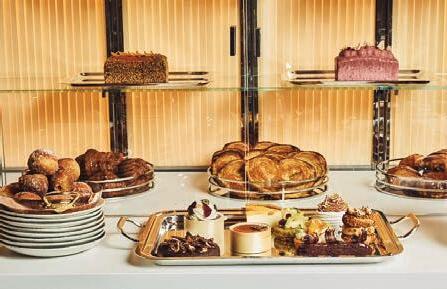
A historical mansion in Franktown, Kentucky, once home to bourbon pioneer E.H. Taylor, has opened as The Ashbrook Hotel. In addition to the 14 individually decorated rooms is an artful restaurant with a Southern-leaning menu,
Courtesy
Images
From Top:
The Woodward (2);
Orient Express La Minerva/
Alexandre
Tabaste;
Evok Collection; Waldorf
Astoria Osaka
Orient Express La Minerva
Brach
Madrid
Waldorf Astoria Osaka
The Woodward
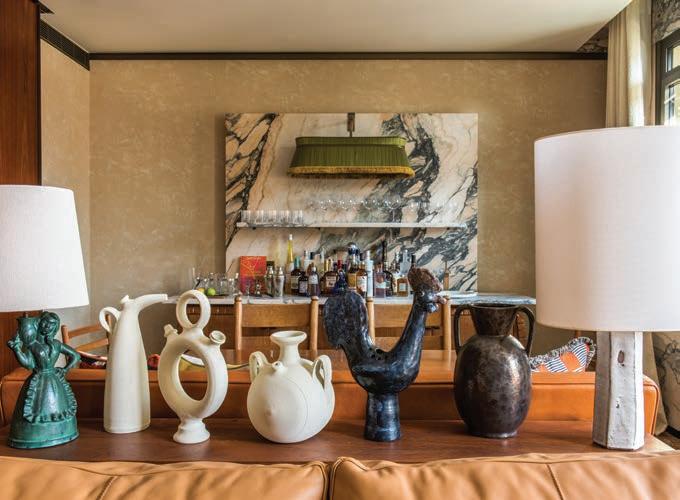
and a hidden bourbon bar to savor a well-crafted cocktail. From $190; ashbrookhotel.com
Hotel Saint Augustine

Experimental Chalet Val d’Isère in the French Alps offers a long snow-sure season (from December to mid-April). Beyond the 110 well-detailed rooms, lofts, and suites, guests can cozy up to the ceiling-height stone fireplace in the great room and enjoy two restaurants, plus the brand’s signature Experimental Cocktail Club. From $385; experimentalchaletvaldisere.com
Rocco Forte Hotel Group is betting big on Italy. Recently opened in Milan, Rocco Forte House has 11 one- and two-
bedroom apartments in an exquisite 19th-century palace. On the horizon is The Carlton Hotel, also in Milan (November); Palazzo Castelluccio, an 18th-century palace in the UNESCO World Heritage Sicilian town of Noto (2026); a to-be-named resort in Sardinia’s azure-water-andwhite-sand Costa Smeralda (2026); and, in Naples, Palazzo Sirignano—46 suites, private gardens, and a rooftop pool (2027). roccofortehotels.com
—I.R.
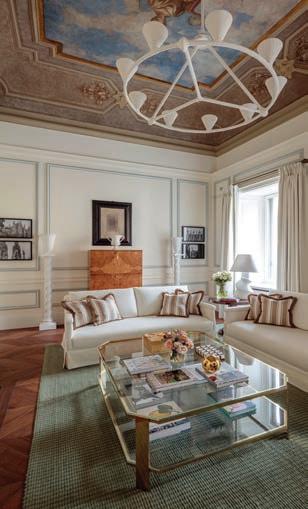
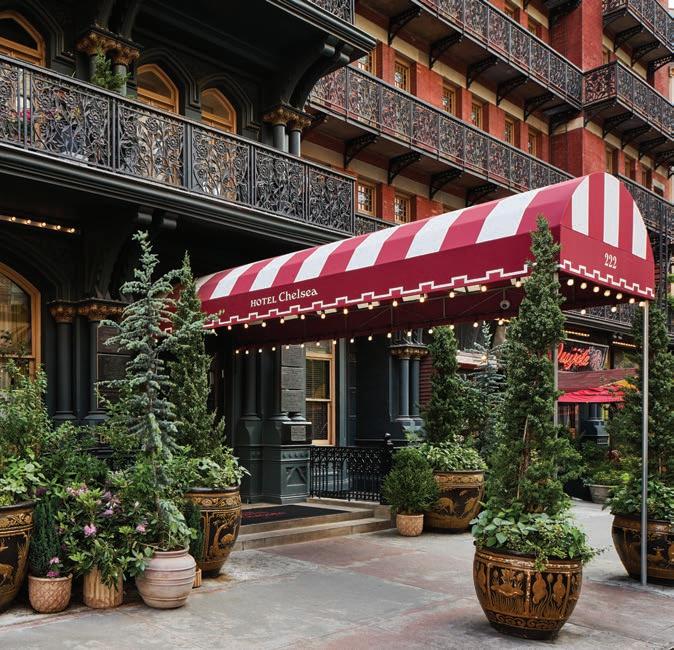
NEW YORK MOMENT
Sense of Place: Heaven forbid a cookie-cutter hotel stay. This red-brick landmark unabashedly roots its guests in the neighborhood; step inside and you can be nowhere else but Hotel Chelsea (hotelchelsea .com) on West 23rd. A 2022 overhaul amplified the building’s treasures after a century of hospitality: iron balconies, fireplaces, stained glass, varied
rooms. Maximalist interiors layer texture, color, and patina with striking works of art—from the 158 rooms (studios up to multibedroom suites) to eclectic bars and restaurants. Callbacks to famous creatives (Warhol, Joplin, Hendrix) hang on the walls in photographs and paintings. Find the gym among 40-foot ceilings in the historic steeple, next door to the penthouse spa.
—Jennifer Ashton Ryan

Rocco Forte House
Brach Madrid
What’s What ADVENTURE & TRAVEL
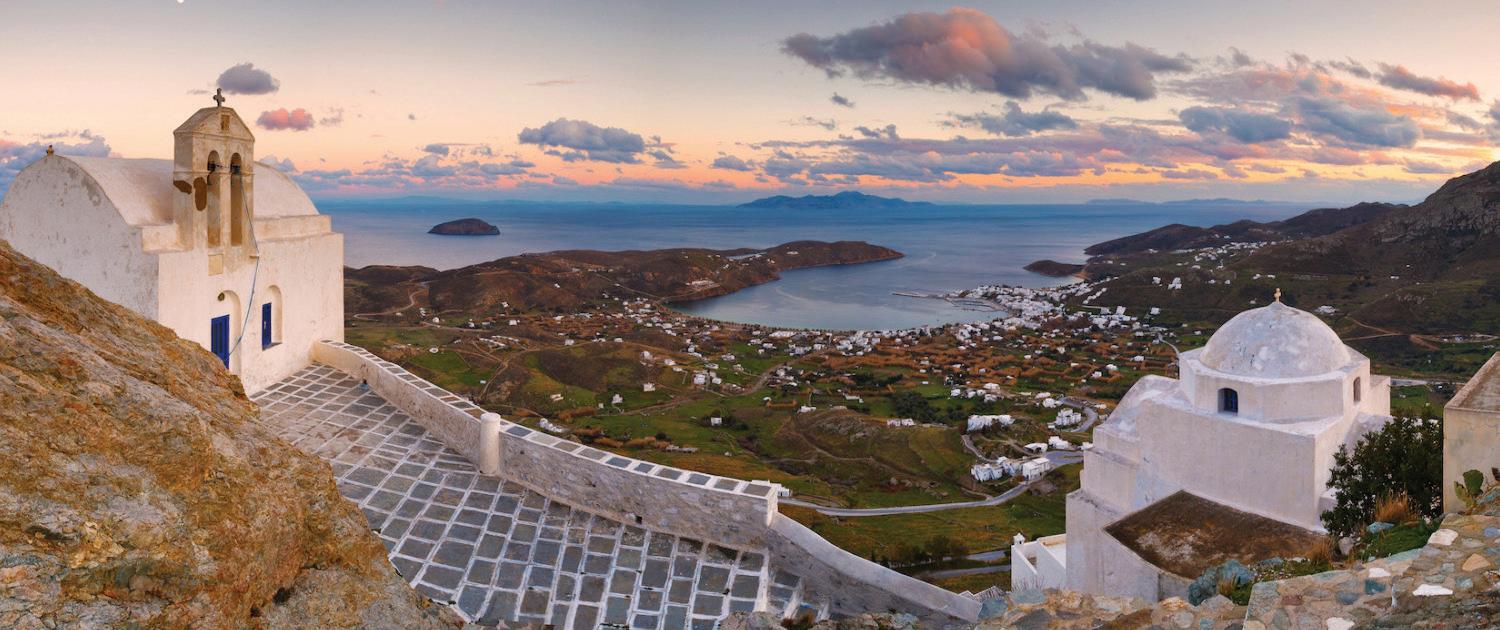
ADVENTURE & TRAVEL
Aboard the new Britannic Explorer train, renowned chef Simon Rogan, a pioneer in Britain’s farm-to-fork movement, curated the fresh food service and botanically inspired cocktails in the observation car. Passengers choose between three- and six-night itineraries through the poetic landscapes of Cornwall, the Lake District, and Wales. Other highlights: private dinner at the buzzy Michelin-backed Hauser & Wirth eatery in Somerset, wild swimming in the Lake District, and treatments in the onboard Wellness Suite. From $15,000 for three nights, all-inclusive; belmond.com
Something totally new from British travel operator Black Tomato—The Pursuit of Feeling, a collection of 100 curated experiences and five immersive itineraries. These transformative journeys cover the globe from spiritual retreats in India to secluded Greek islands to the wild landscapes of Greenland. blacktomato.com
Book now for your 2026 takeoff with Abercrombie & Kent. The 23-day Iconic Wonders: Around the World with A&K journey includes travel by private Boeing 757 jet with lie-flat seats to the ancient Cambodian temples
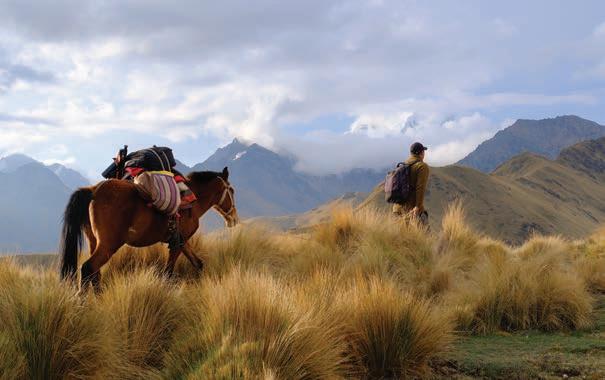
of Angkor Wat at sunrise, Australia’s Great Barrier Reef, and the dormant Ranu Kau volcano on Chile’s Easter Island. Have breakfast in the bush on the Maasai Mara and visit monuments and shrines not normally open to the public. From $159,950/ person; abercrombiekent.com
In January 2026, Four Seasons Yachts is launching a 679-foot, 14-deck ship with 95 suites, each with a spa-inspired bath and terrace. The most opulent will be the glass-enclosed Funnel Suite. The accommodation includes three bedrooms, a gym and splash pool, an outdoor shower, and a dining table on the terrace for 12. fourseasonsyachts.com
Aman New York partners with Upstate New York’s Windham Mountain Club to offer a $20,000 ski escape— a day trip for two people to the Catskills, accompanied by an Aman New York butler. Ski 1,200 acres of pristine and very private terrain and have lunch mid-mountain. Complete with après-ski
attire by Aman Essentials, the experience is available to book from December 2025 to March 2026. aman.com
A new Peruvian trip from Chilean travel specialist Explora: The Unknown Inca Trail to Machu Picchu. Hike a pre-Incan, lesser-known, less-traveled trail through the Vilcabamba Mountain range and the Sacred Valley of the Incas. Restful nights are spent at Explora Valle Sagrado Lodge and in tented camps set up in remote locations. The nine-day trip is limited to eight people. From $7,840/ person; explora.com
Spend six days with river rafting outfitter Far & Away Adventures navigating the whitewater wilderness of the North Fork of the Salmon River in the Frank Church Wilderness of No Return. Staff move all gear from campsite to campsite, where guests enjoy chef-catered meals and coffee-in-bed service to their walk-in Marmot tents equipped with comfortable beds. From $4,200/person; far-away.com
The Unknown Inca Trail to Machu Picchu
Sifnos, Greece
THOSE AEGEAN BLUES
Five New Resorts in Greece: Andronikos Canaves Suites (andronikoscanaves.gr) in Santorini occupies a 19thcentury winery, recently renovated to preserve the historic exterior but convert everything else into contemporary suites with private pools. In Mykonos, check out the chic boutique Kalesma (kalesmamykonos .com) with 19 sea-view rooms and Four Seasons Resort
Mykonos (fourseasons.com), a beachside property with 94 rooms, suites, and villas. Gundari Hotel (gundari.com) on the island of Folegandros sits atop the cliffs on 80 acres, with 27 sprawling, understated suites and villas, a swim-up bar, and an indoor/outdoor spa. On Crete, overlooking the Mediterranean, the nature-inspired Tella Thera (tellathera.com) takes advantage of both the surrounding mountains and the beach.
—I.R.
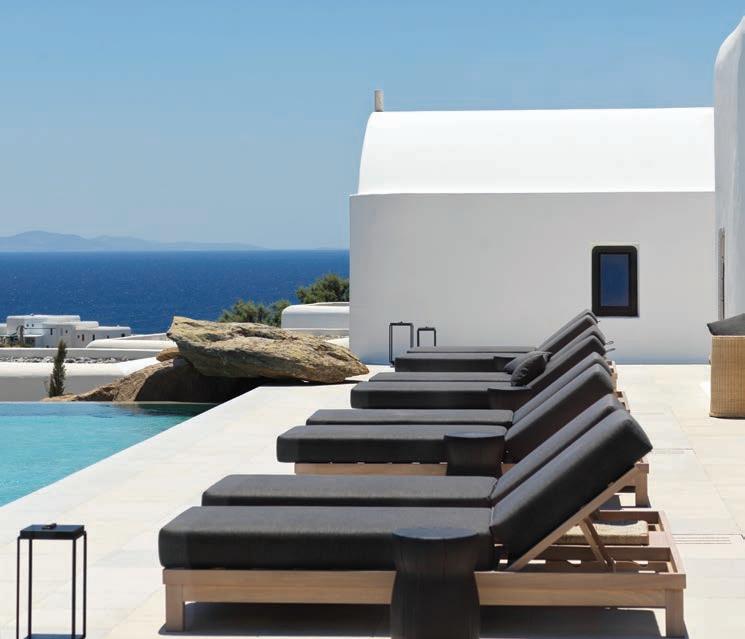
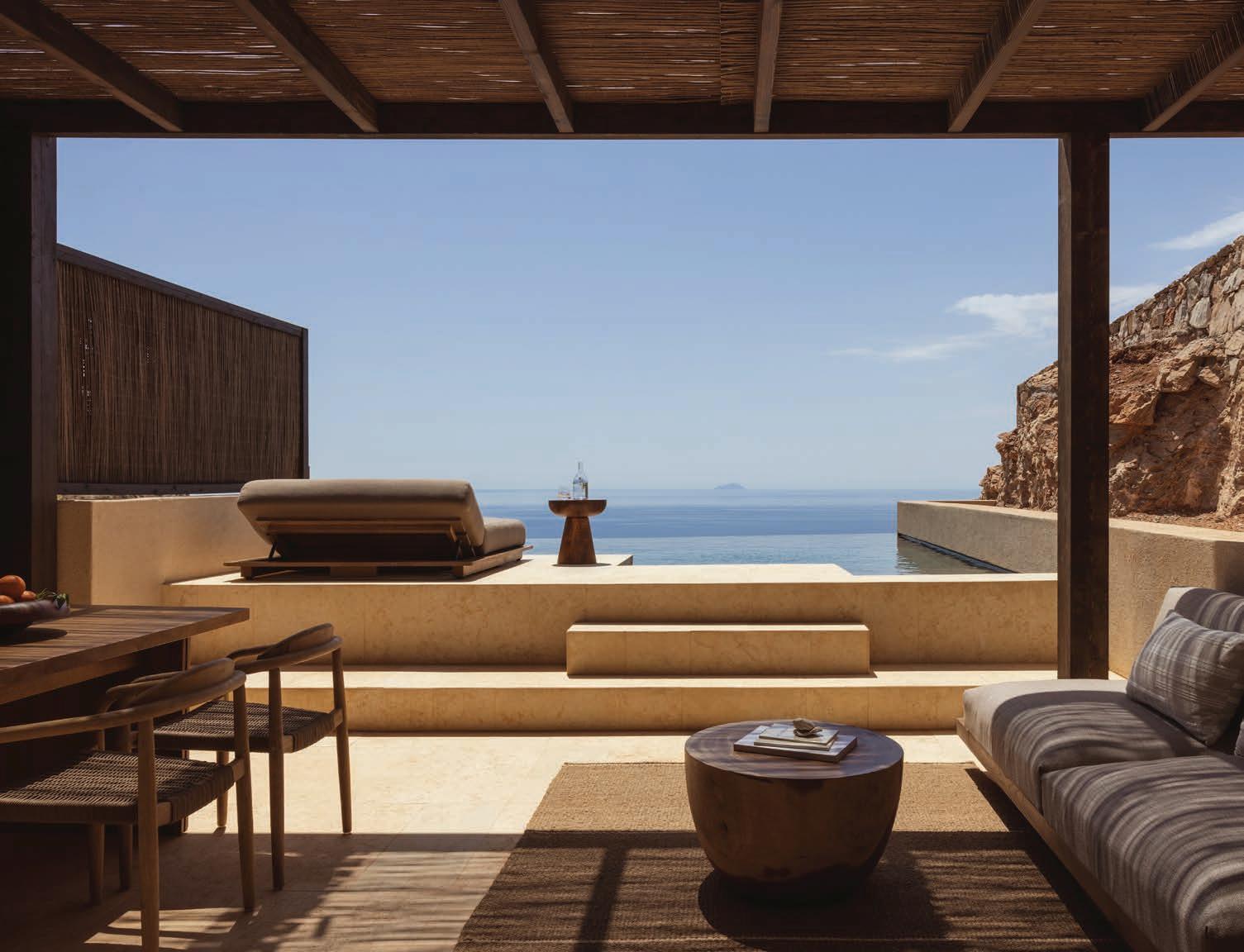
Kalesma
Gundari Hotel
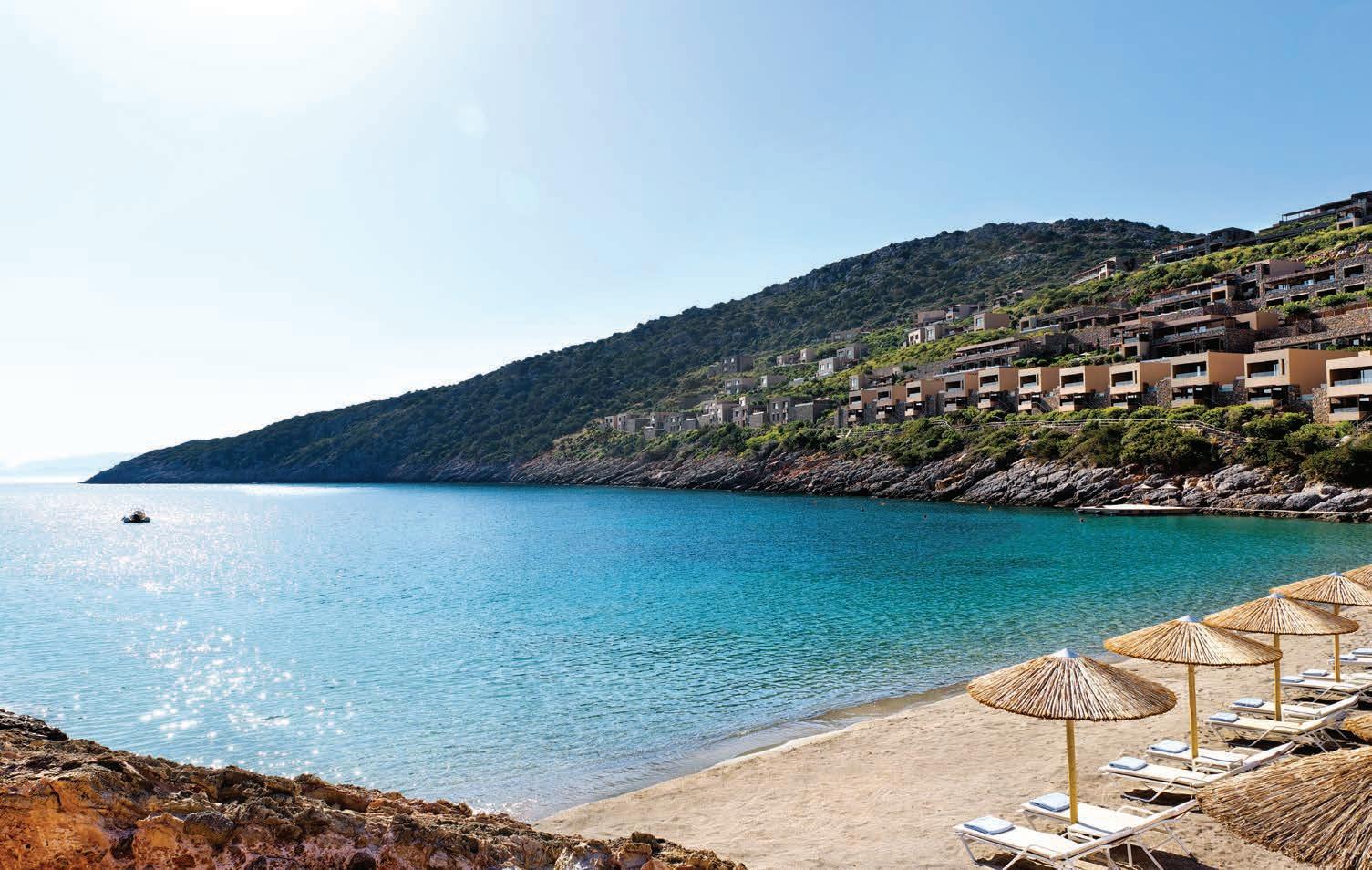
TALES BETWEEN TWO ANCIENT EMPIRES
The ease of private travel is apparent on Abercrombie & Kent’s Small Jet Journeys.
It almost feels like being in two places at once. That’s how quick the trip is between Rome and Crete in the time-shifting hands of Abercombie & Kent during a Small Jet Journeys experience.
On this day in Crete, the wind from the Sahara Desert blows across the Greek island fierce and sandy hot. It’s a wind no one in Crete likes. If it lasts any length of time, it will badly affect the olive harvest. There are over 30 million olive trees in Crete, often tended by individual families, with some so old their age is impossible to determine. When the hot winds blow in from across the Mediterranean Sea, the olive trees may decide to take the long view and skip a year producing olives. At its most severe, the desert dust turns the sky orange.
Olive tree cultivation in Crete dates back at least as far as the Greek island’s ancient Minoan civilization and it’s likely the Sahara
winds made the Minoans as anxious about their olive trees as they do the modern Greeks. The Minoans are named by historians after the mythical King Minos, who is best remembered for the story of the labyrinth that imprisoned a monstrous Minotaur.
The centerpiece of the Minoan civilization is the Bronze Age Palace of Knossos, rebuilt following an earthquake around 1700 BC. Inside are evidence of mosaic floors, a grand staircase, and a throne room that forms a baseline for imagining the life of an ancient people whose fashion sense included barebreasted dress for women. Among the remnants of Knossos, it feels like the ancient dead can be asked a question and they will answer if the old stones are read correctly.
Thinking back to a point earlier in the day in Rome, when the mind is filled with images of another empire associated with Caesars of various stripes, this hyper jump between
classical worlds is made possible by an Abercombie & Kent expeditionary link that uses a privately chartered jet to make a quick trip between a Greek world inhabited by the gods and a Roman one shaped by men. For all practical purposes, the transfer between the two may be the closest thing to instantaneous time travel.
The Abercombie & Kent Small Jet Journeys program is small-group travel at its most elevated. It’s also a very refined journey that comes with stays in luxury hotels, wine tastings, and extraordinary culinary experiences. The key ingredient is the jet link, which makes whisking through countries a seamlessly smooth process that effectively minimizes any tiresome travel travails. Breakfast at a Roman hotel is followed by lunch at a Greek vineyard, for example. The details of getting between the two are taken care of and the luggage is in your room upon
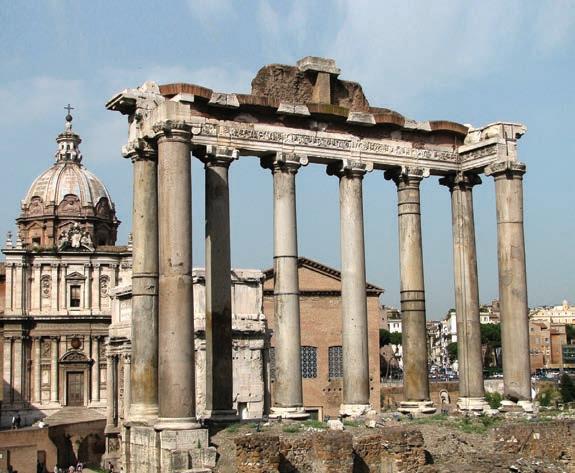
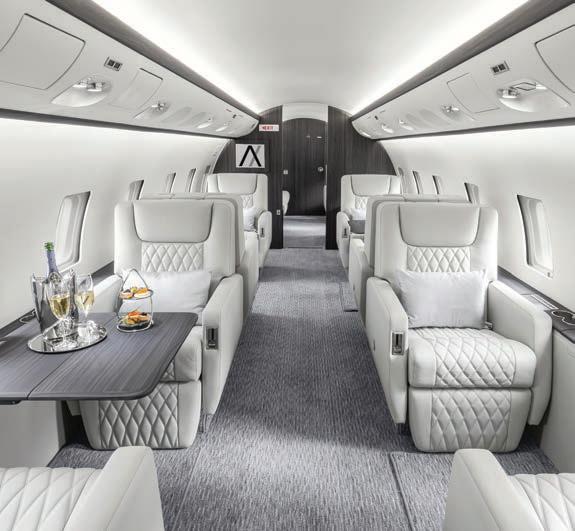
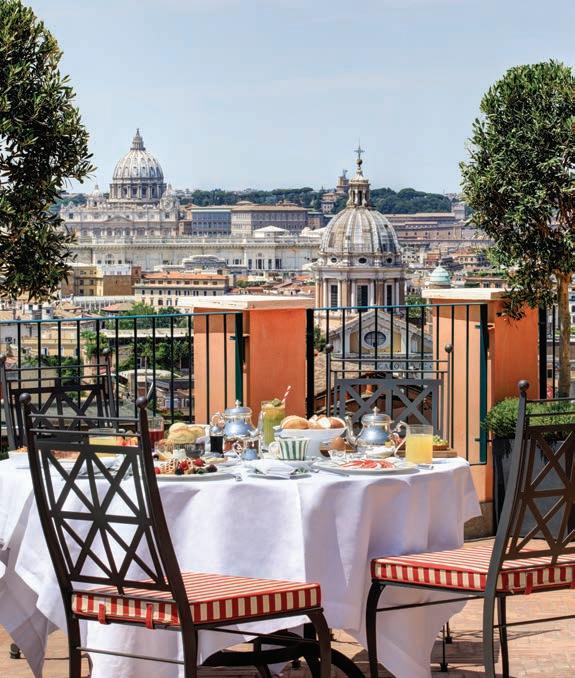
arrival. If you even partially subscribe to the notion put forth by a Cretan chef—“We go different places to eat there”—then an A&K excursion is a table setter.
In a city like Rome that attracts a multitude of visitors, A&K is like having a local fixer at your side, arranging a tour of the Castel Sant’Angelo, the personal fortress of the Pope, or opening the private doors of the church of San Lorenzo in Miranda for a new perspective on the ancient Forum from its balcony, for example. Or get a private tour of the Villa Farnesina, a 16th-century suburban estate noted for its Renaissance frescoes. In between, enjoy a lunch with pasta made by your own hand under the guidance of local chefs. A&K employs specialist guides as required for individual locations.
Hotel accommodations are at the level of the lovely Hotel de la Ville near the Spanish Steps, while an evening of fine dining in the Secret Garden of the highly regarded Hotel de Russie is a defining moment. The A&K experience in Rome is best thought of as a supplemental one best suited for those who have been to the city previously.
The A&K touch really shines in more remote locations. In Crete, for example, the first stop is a tour and
lunch at the Lyrarakis vineyard, which is developing an experimental and tasty white wine called Dafni with an exceptionally long shelf life. Next up is an exciting safari-style tour in a vintage Land Rover Discovery on the dirt roads of the plateau of Katharo, overlooking Mirabello Bay. Rural and mountainous, Katharo is steeped in myth and legend: Zeus is said to have been born in a bee-filled cave in the area and a local yellow flower called asphodel is said to carpet the underworld of Hades.
More recently, a statue to a young woman in the small village of Krassi commemorates the exploits of a World War II resistance fighter. Slip back to the present for a wine tasting at the stunning Daios Cove hotel, which employs two funiculars among its hillside transport options.
A&K Small Jet Journeys are generally run with around a dozen guests. In 2025, the company has planned 10 high-flying trips including Wings Over India, the Mediterranean, Australia, East and Southern Africa, Greece and Turkey, Spain and Morocco, Italy and its islands, the Ancient World, and the South American countries of Argentina, Brazil, and Chile. But no matter the destination, fast, hasslefree travel holds its empirical allure. abercombiekent.com u
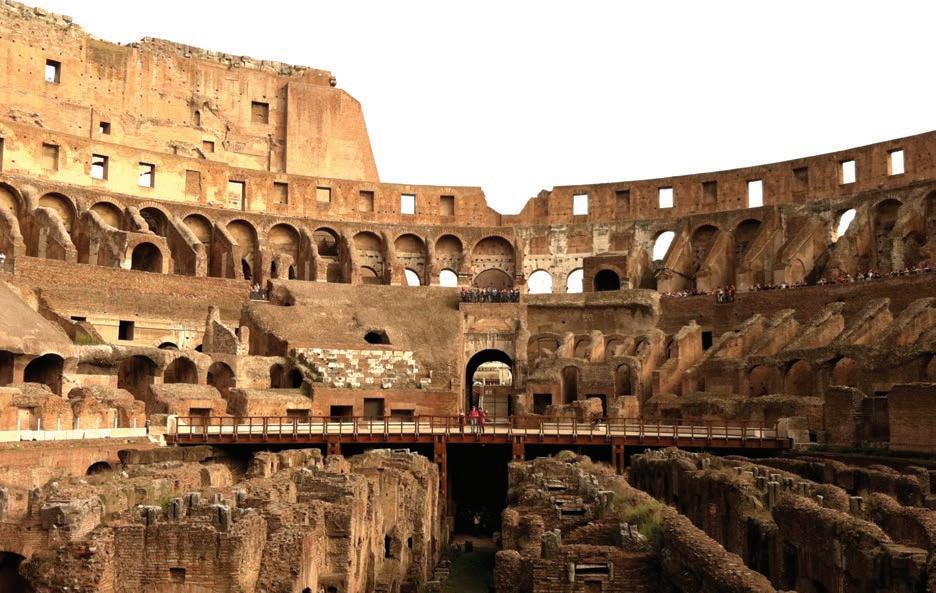
Abercombie & Kent uses a privately chartered jet to make a quick trip between a Greek world inhabited by the gods and a Roman one shaped by men.
—Frank Vizard
Cheat Sheet
NASHVILLE, TENNESSEE
From the Grand Ole Opry to bachelorette parties blasting remixed twangs and Taylor Swift from open-air buses, Nashville maintains its reputation for a good time. And yet, beyond the honkytonk bars and hot chicken joints, Music City can deliver something unexpectedly refined and even peace-filled.
BY NORA ZELEVANSKY
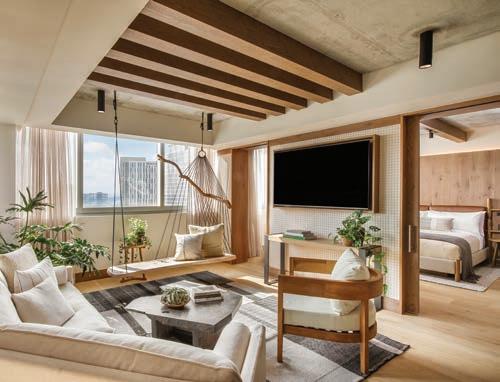
SLEEP
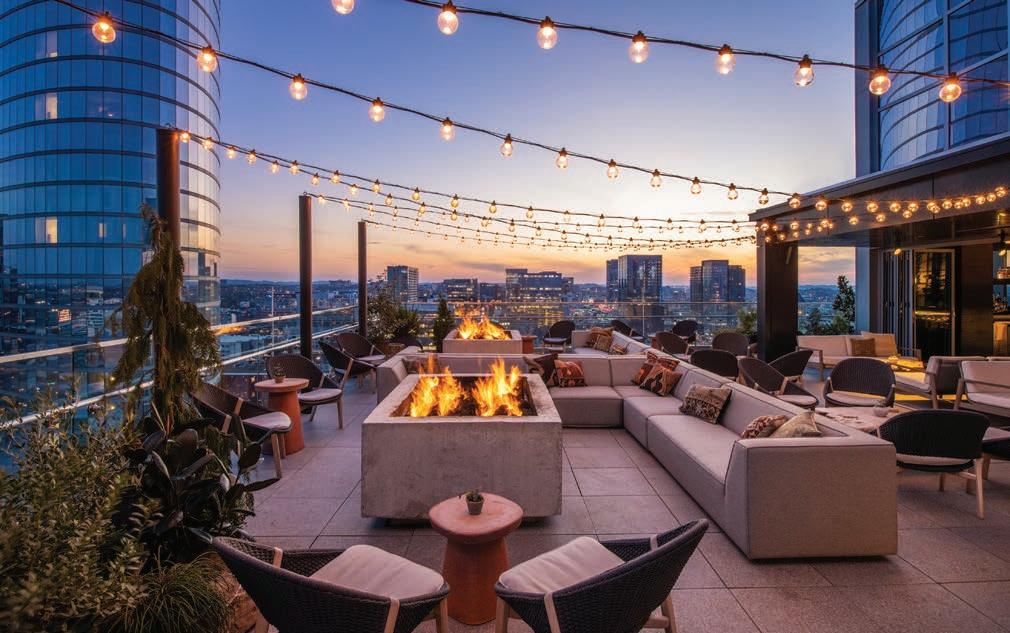
Harriet’s Rooftop
The 1 Hotel Nashvillle
The 1 Hotel Nashville
Steps from Broadway’s “Honky Tonk Highway,” this 215-room, earthen-chic hotel reflects the city’s rich history—but step inside to experience a different world. To nod to the area’s agricultural legacy via the hotelier’s signature biophilic (or nature immersive) design, tobacco leaves climb the wall behind the front desk, oversize light tubes of invasive species line the bar, and reclaimed wooden rafters crisscross above the café and shop, where you’ll peruse local wares such as Strings for Hope jewelry made from recycled guitar strings. 1hotels.com
EAT & DRINK
Harriet’s Rooftop
Whether huddled by a firepit under twinkle lights, bellied up to the reclaimed wooden bar, or lounging in a modernist chair beneath mile-high ceilings and beside tree-branch candelabras, you’ll want to have found your nook at this rooftop watering hole before the sun sets dramatically over the cityscape. That way, you can take in the view. This indoor-outdoor gathering spot on the 19th floor of the 1 Hotel is serious about its artisanal cocktails, with ingredients sourced from local farms. 1hotels.com
Locust
This intimate, 10-table spot opened its understated doors in the fall of 2020 and was voted Food & Wine’s Restaurant of the Year in 2022. Chef Trevor Moran eschews traditional Southern food (nary a biscuit in sight!). He offers up an experience that’s completely unique, blending his Irish roots with contemporary fine dining chops to create revolving dishes— from caviar, sour cream, and onion doughnuts to beef tartare handrolls— that are as captivating to look at as to taste. locustnashville.com
SEE & DO
White’s Mercantile
If you think you know what to expect from a general store in a converted gas station, think again. Welcome to White’s, where Clare V. clutches line the shelves in place of fishing lures. Now a Tennessee staple with multiple locations, this original shop on main shopping drag 12th Avenue was founded by singer-songwriter Holly Williams to fill a “shopping void.” True to the original concept, there’s bit of everything in the spacious but eclectic boutique—from amethyst body polish and batik dresses to kitschy cards and artisan dog treats. whitesmercantile.com
Locust
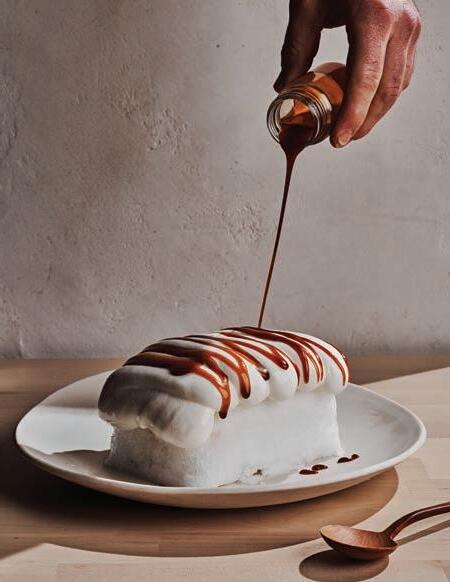
Gibson Garage
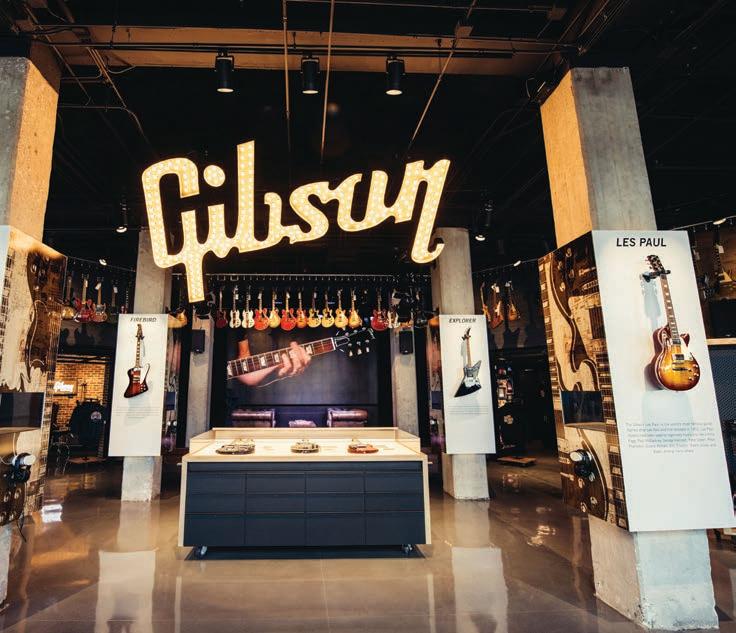
JUST OUTSIDE
Gibson Garage
In a city with countless music venues and museums, the 8,000-square-foot Gibson Garage is the one-stop shop—lined with an array of gleaming guitars and host to private shopping experiences, events, live performances, and historical exhibitions (see Orville Gibson’s original instruments here). The space opened in 2021 within the converted railway hub Cummins Station. gibson.com
Sarah Huffman
Go off the beaten path to this inconspicuous studio located in hipster East Nashville for facial treatments linked to sound healing. Huffman’s crystal gem Vibrational Tuning Fork Facial is one of a kind, working with
In the Tennessee countryside, the city of Franklin (about 45 minutes from Nashville’s center) has welcomed a new notable destination resort.
Set on 425 acres, Southall Farm & Inn (southalltn .com) reads like the 1 Hotel’s sprawling country sibling—also honoring agricultural heritage and modern sustainability with a sleek, organic aesthetic of stone and black-slatted wood. Its 62 guest rooms and suites feature murals of trees and pops of floral upholstery among the prevailing neutrals, while 16 dreamlike, spacious cottages come with suspended porch daybeds and giant soaking tubs.
Southall produces 20 percent of the food its restaurants serve, as its farmers tend to 43 varieties of apples, cultivate citrus in the orangery, grow hydroponic lettuce, and harvest honey from the apiary. To celebrate the bounty, chefs Andrew Klamar and Nate Leonard conceive seasonal outdoor dinners served at communal tables by firepits and cocktails served from a 1940s panel van.
Forget perfunctory hotel yoga—the offerings at the property’s 15,000-square-foot spa promote an interdisciplinary approach to wellness (including its own version of yoga). Book a treatment like the Rock Star massage, featuring oil from an oud-woodand-vanilla massage candle applied with Himalayan salt stones. There’s also a deeply relaxing Sound of Healing meditation that can be accompanied by a soak in the steamy granite mineral pool overlooking Lake Mishkin, which boasts 60 nourishing elements including magnesium, silver, and zinc.
For active pursuits, there is no shortage of
options. Guests can spelunk solo, take a guided hike, or mountain bike ride through five miles of canopied trails, zigzagging on ridges through the hardwood forest. Joined by hummingbirds and red-winged blackbirds, flitting between trees from persimmon to black locust, the commune with nature provides a true sense of Tennessee’s unique Southern ecosystem.
For a dose of small-town Southern charm, head into downtown Franklin for an afternoon of strolling and shopping on Main Street. Established in 1799, the quaint historic district is known for its sweet cafés, eateries, and boutiques, including a spice shop, The Now Massage for great-smelling products and treatments, and even an offshoot of White’s Mercantile. For dinner, head to relaxed Italian spot Culaccino (culaccinotn.com) for a glass of wine and cavatelli with slow-braised oxtail ragu and baby kale. There’s also Fox & Locke (foxandlocke.com) on Franklin’s outskirts, in the smaller, even more rural historic village of Leiper’s Fork. The low-key honky-tonk for live music, drinks, and eats remains a best-kept-secret venue. First established as a grocery store and town gathering spot in 1947, the venue attracts Grammy-winning and up-and-coming surprise performers, especially on raucous Thursday open-mic nights (which tend to sell out). Come for the tunes, stay for the Southern fare: fried catfish, pickles, and okra. It’s still Tennessee, after all. —N.Z.
acupressure meridians in the face to tone and firm facial muscles, increase lymphatic drainage, and even restore emotional balance. sarahhuffmansound.com
Carter Vintage Guitars
New meets old and becomes new again at the reimagined Carter Vintage Guitars showroom, now housed at the historic Antiques building in the industrial-cumpolished Gulch neighborhood. This new location—where a weathered brick façade is now adorned with bright murals—is already legendary, attracting bigwig collectors and musicians from Post Malone to Keith Urban with its 12,500-squarefoot space below lofted ceilings, 2,000 guitars (many vintage), and an expert repair shop. cartervintage.com
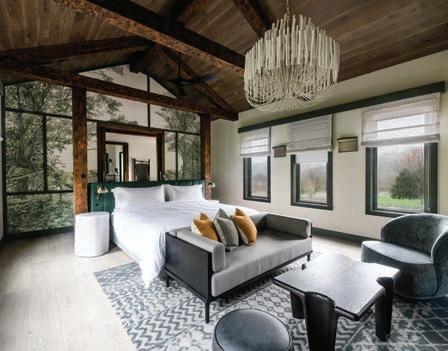


Cheat Sheet
FORT WORTH, TEXAS
Fort Worth is “Where the West Begins,” as the tagline goes. Its distance from Dallas is only about 30 miles, but the city is where cowboy culture is ingrained like well-worn leather and the social calendar revolves around rodeos. It’s a sprawling city in that key neighborhoods are widely separated, often miles apart, and entertainment and cultural venues are similarly dispersed. In recent years, it’s been quietly establishing itself as the cool “it” city to visit in the Lone Star State.
BY FRANK VIZARD
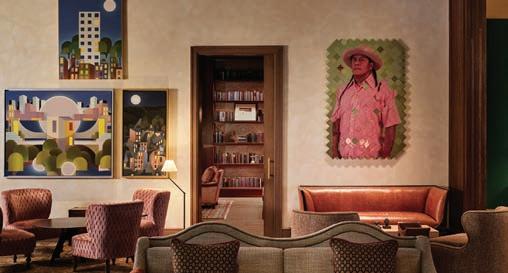
SLEEP
Bowie House
Considered Fort Worth’s new living room, Bowie House (pronounced “boo-wee,” as in Jim Bowie of Battle of the Alamo fame and a key figure in Texas independence) feels more like a visit to the home of a wealthy rancher with a taste for modern Western art than a 106-room hotel. That’s because owner Jo Ellard is the real deal, being a National Cutting Horse Association Hall of Fame member. Most of the numerous artworks on display—you’d better like horses—come from her personal 400-piece collection. The social
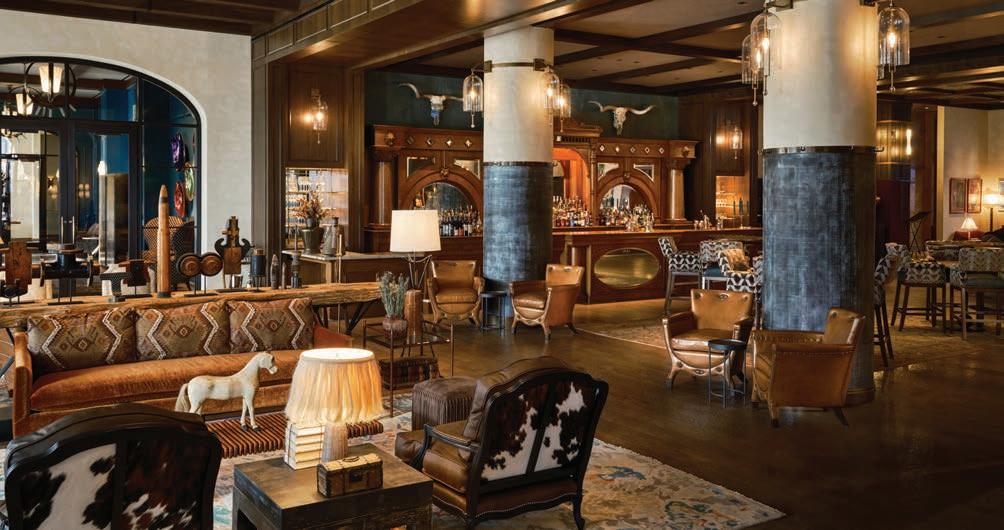
center on property is a massive, 200-yearold saloon-style bar that Ellard found at an auction house in Waco. The bar is placed front and center, and tucked off to the side is an excellent restaurant called Bricks and Horses. More intimate spaces include the Billet Room with a billiards table and the Mulberry Room, a cozy library with a warming fireplace. Guests can rely on the House as a cowboy culture indoctrination center, partaking in a heel-toe-split session of Western-style dancing. Rooms feature a special stand for your cowboy hat and a boot jack to help remove your footwear. aubergeresorts.com

The Harper While Fort Worth boasts its share of modern, glassy hotels, a more colorful alternative is this Kimpton-owned property located in the downtown section of Fort Worth between the entertainment-heavy
Sundance Square and the Fort Worth Convention Center. The 226-room Harper occupies what began as the Farmers and Mechanics National Bank a century ago and was reincarnated as a hotel in 2021. Original fixtures, including the elevators, preserve an architectural authenticity that’s in keeping with many of the wellpreserved buildings in the area. Up the street is the former gambling house where famous outlaws Butch Cassidy and the Sundance Kid tried their luck. Guests can explore the nearby Trinity River network of trails riding hotel-provided bicycles. theharperfortworth.com
EAT & DRINK
A cattle-centric city like Fort Worth has a plethora of excellent, old-school steakhouses such as Del Frisco’s (delfriscos.com). Adding an Italian-style twist is the contemporary il Modo (ilmodorestaurant.com) that blends local fare like rib-eye and Texas redfish with Italian specialties and a well-curated wine list. Don Artemio (donartemio.us) comes highly recommended for upscale Mexican cuisine.
Jazz pops up in Fort Worth where you least expect it. Find the atmospheric subterranean club Scat Jazz Lounge (scatjazzlounge.com) down an alley off Sundance Square. The joint caters to a small but devoted clientele and baseball caps, tank tops, and torn jeans are strictly forbidden. Unquestionably, country
Bowie House
Bowie House
The Harper
Courtesy Images From Top: Auberge Resorts Collection/Stephen Karlisch (2); The Kimpton Harper.
Opposite: Courtesy Visit Fort Worth (5)
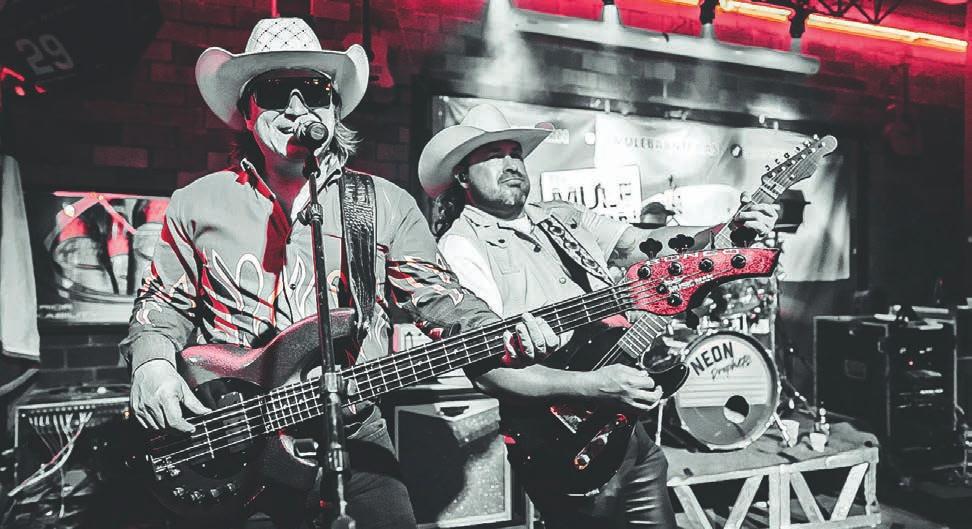
music plays the dominant tune and Billy Bob’s Texas (billybobstexas.com) remains the mecca for country music fans. “The World’s Largest Honky-Tonk” nightly features top stars, bull-riding, and a huge, crowded dance floor.
On a more intimate honky-tonk scale is the legendary White Elephant Saloon (whiteelephantsaloon.com) located in the Stockyards and named for a glassed-in gallery of white elephant figures at the rear of the bar. On the walls and overhead are a collection of cowboy hats worn by notable locals over the years and the dance floor
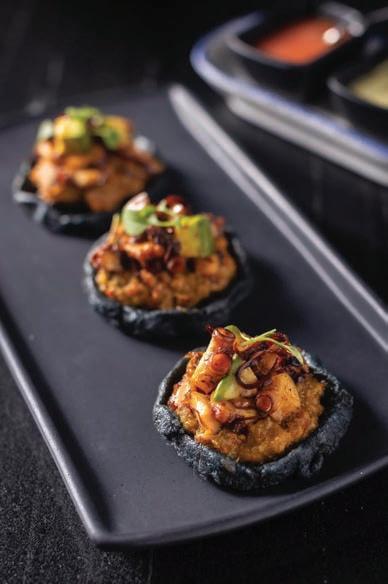
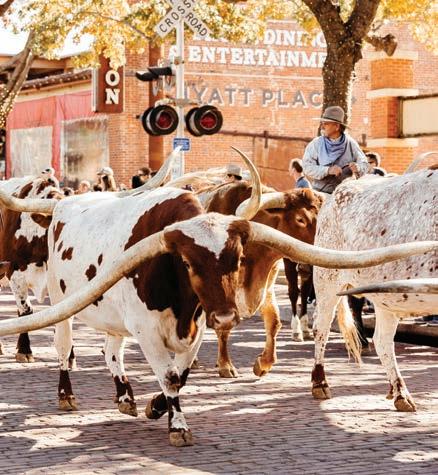
appeals to a wide range of age groups. The bar has a storied history: In Wild West lore, it was the host for the last gunfight in Fort Worth between then-owner Luke Short and city marshal Longhair Jim Courtright in 1887. Most think the lawman was the bad guy. Today there is a lawman at the door to ensure everyone’s safety.
The truth is Fort Worth has numerous country music venues of note where you can embrace your inner cowboy. One tip: Track the appearances of the very popular Fort Worth 90s country cover band The Neon Prophets (neonprophets.com) Wherever they are playing, there’s sure to be a line at the door so get there early. Bring your hat and wear your boots.
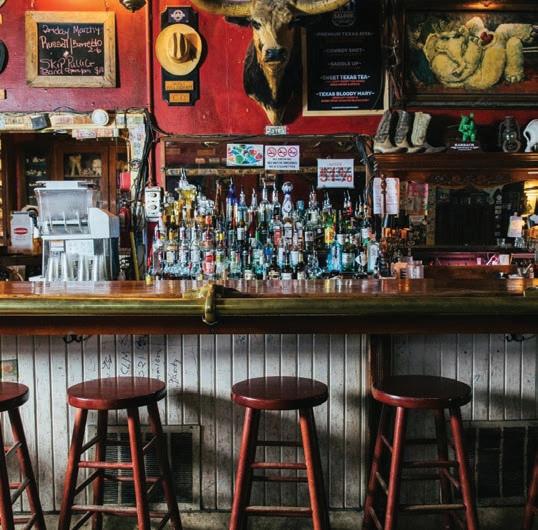
SEE & DO
Fort Worth Stockyards
The must-see attraction in town, with a vast number of cowboy-themed shops and fancy pickup trucks cruising the streets, the Fort Worth Stockyards hosts a twice-daily parade of Texas longhorns. It traces its origins to the days when as many as 1 million head of cattle per year were shipped via railroad and Fort Worth was the last destination for drovers on the Chisholm Trail. fortworthstockyards.org
Rodeos
While rodeos happen frequently, the crown jewel is the annual Fort Worth Stock Show & Rodeo (fwssr.com), since 1896. Held in the Dickies Arena (dickiesarena.com), the event takes place over two weeks in January and February (prime rodeo season) and
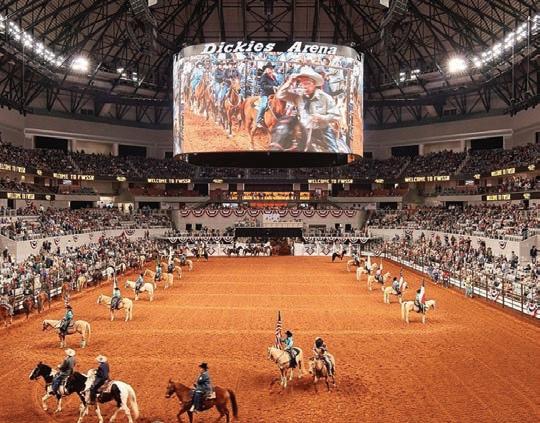
The Neon Prophets; White Elephant Saloon, right
Don Artemio
Fort Worth Stock Show & Rodeo
Fort Worth Stockyards
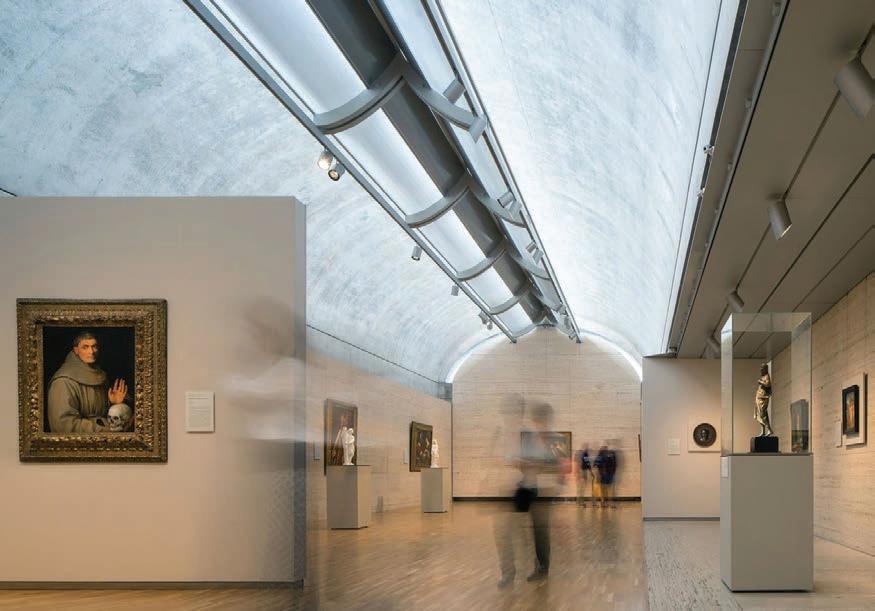
features a range of cowboy skills contests such as steer wrestling, cattle roping, barrel racing, bull riding, and chuckwagon racing (a modern-day equivalent of a contest between Roman chariots). Adjacent to Dickies is the National Cowgirl Museum and Hall of Fame (cowgirl.net), where legendary sharpshooter Annie Oakley is a star. Across the street is a large complex full of thousands of horses, cows, sheep, and swine that is a magnet for kids and is anchored by the Will Rogers Memorial Center (willrogersmemorialcenter.com), which hosts a variety of mostly equestrian-oriented events.
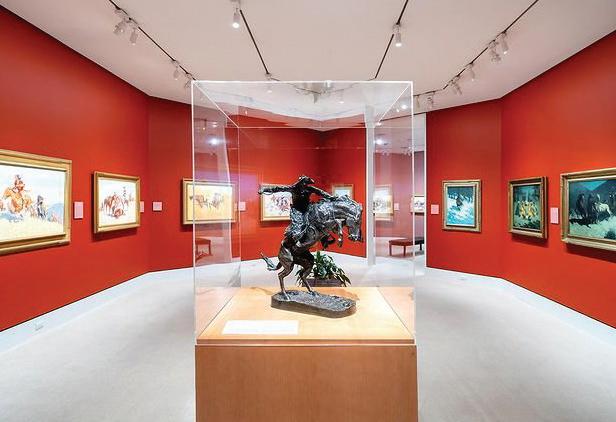
Museums
Culture in Fort Worth centers on cowboys as much as agriculture, and the exceptions are its art museums. Founded in 1892, the Modern Art Museum of Fort Worth (themodern.org) is the oldest museum in Texas, and is focused on art from the 1940s to the present. Nearby, the 50-year-old Kimbell Art Museum (kimbellart.org) remains popular with visitors as much as locals for its small but impressive 350 international works spanning from the third millennium B.C. to the mid-20th century. An impressively well-focused look at classic Western art can be seen at the Sid Richardson Museum (sidrichardsonmuseum.org), which features the works of Charles M. Russell and Frederic Remington and their contemporaries from the 19th and early 20th centuries.
SHOP
Fort Worth may be one of those few places where a quick shopping trip for a proper hat is a serious matter and The Best Hat Store (besthatstore.com), which supplies rodeo stars, makes theirs by hand in Texas from straw, beaver, mink, and rabbit. The key service is provided by in-store shapers, who make sure yours is a perfect fit.
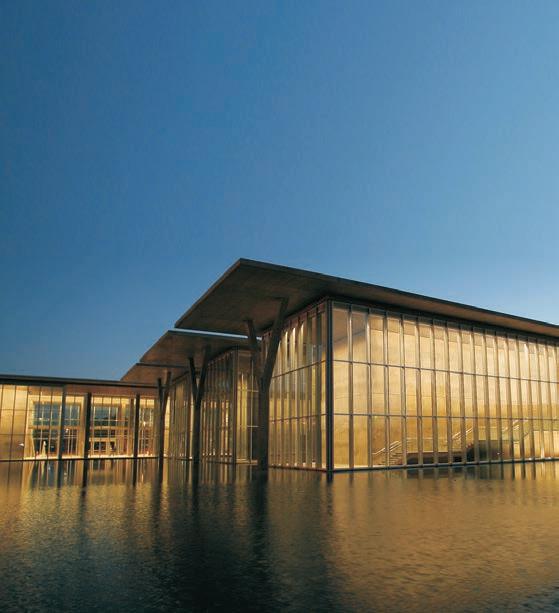
Founded in 1883, Lucchese Bootmaker (lucchese.com) makes their cowboy boots by hand in Texas, and each is a work of art. (No relation to a certain infamous New York family of the same name known for concrete footwear, by the way.) A key construction technique is the use of lemonwood pegs that are more malleable than metal, so they expand and contract when exposed to moisture at the same rate as the leather itself; the boot’s integrity is maintained even when exposed to water. There’s a good chance your pair will be the most comfortable footwear you’ve ever owned. u
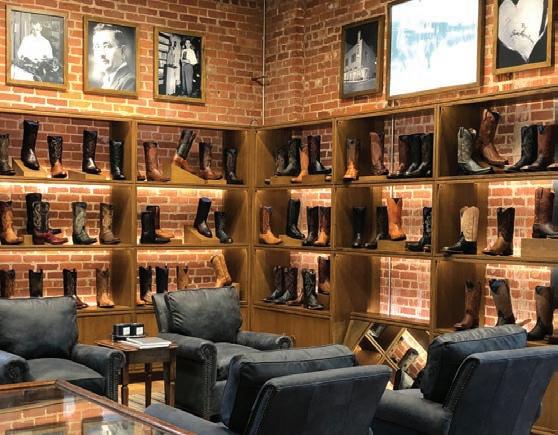
Clockwise from top left: Kimbell Art Museum; Modern Art Museum of Fort Worth; Lucchese Bootmaker; Sid Richardson Museum
Courtesy
Visit Fort Worth (4)

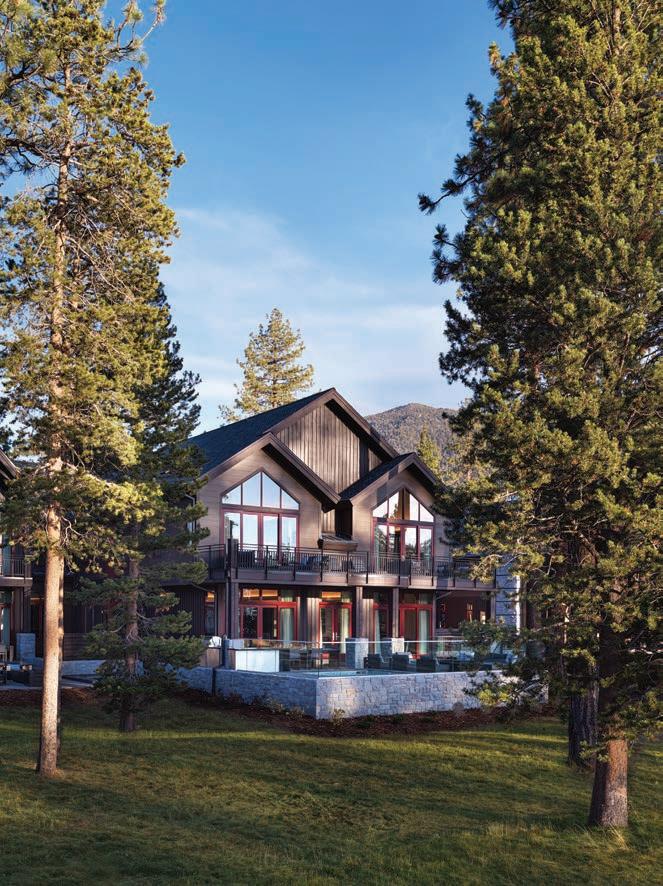

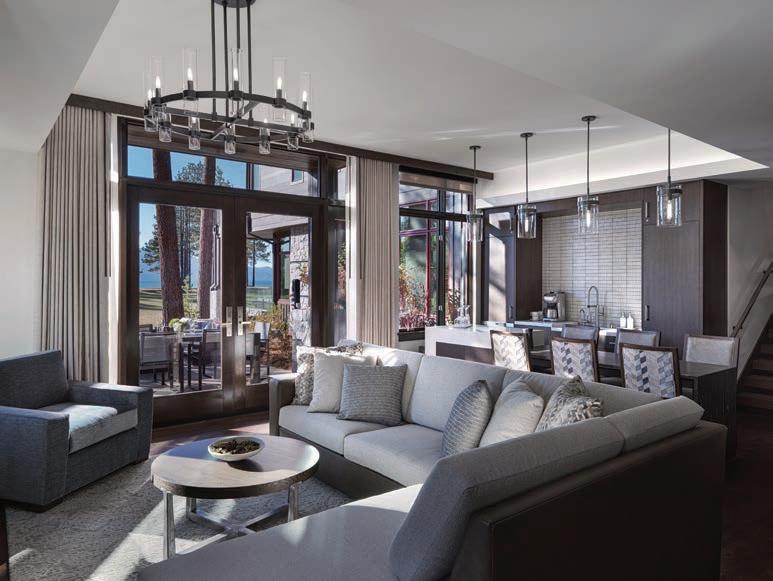

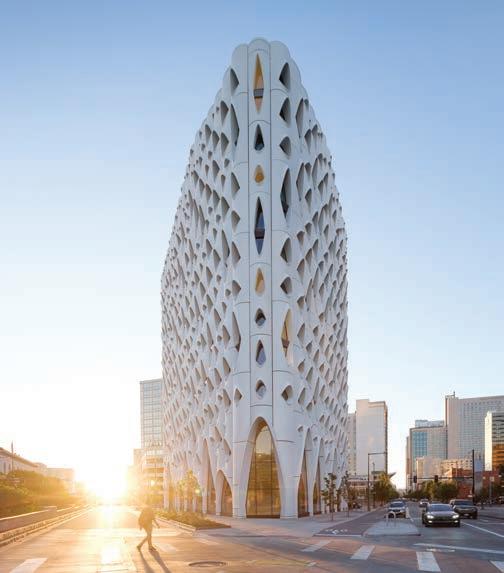

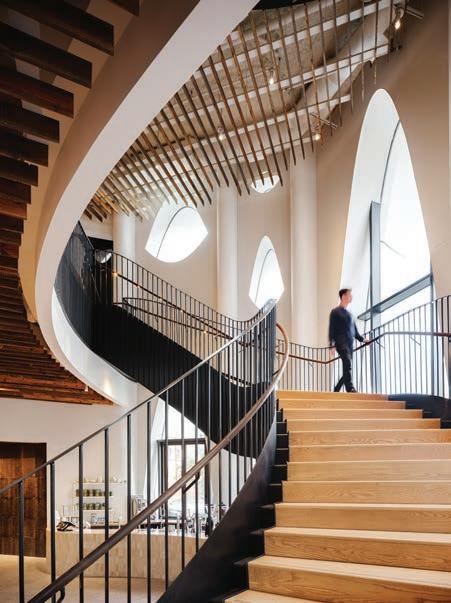
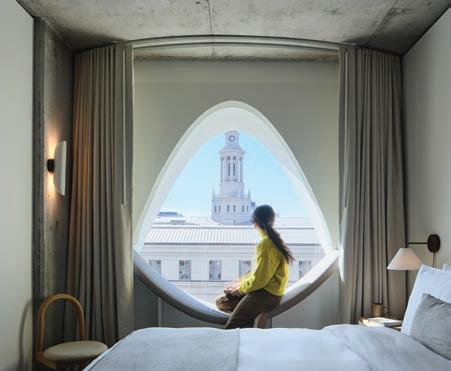
The Denver Effect
In Colorado, find the new Populus hotel at the intersection of sustainability and luxury.
BY JORGE S. ARANGO
Are luxury and environmental stewardship compatible? Jon Buerge, president of specialty real estate developer Urban Villages, says definitively, yes. “We’ve been trained to think that doing the right thing for the planet means we have to give some things up,” he says. Building the Populus (populusdenver.com) in Denver, Buerge proved how restraint “can actually be enriching for the guest experience.”
Take the hotel’s zero-waste dining program. Farm-to-table menus feature fresh seasonal produce and regionally sourced proteins, which from the get-go, he believes, “already taste better.” Behind the scenes, 100 percent of food waste is processed in a continual-feed, aerobic digesting system that returns compost and fertilizer products back to local farmers for their fields. The hotel works with organizations to provide Colorado farmers and ranchers with grants that help them practice regenerative
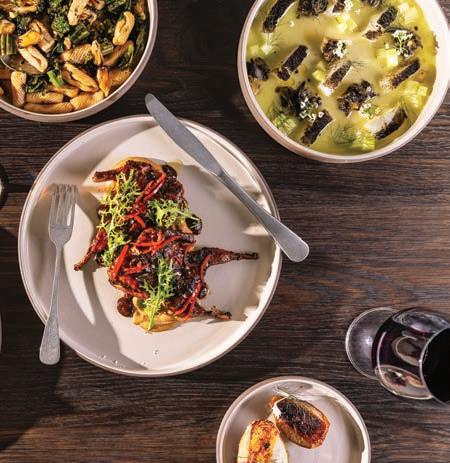

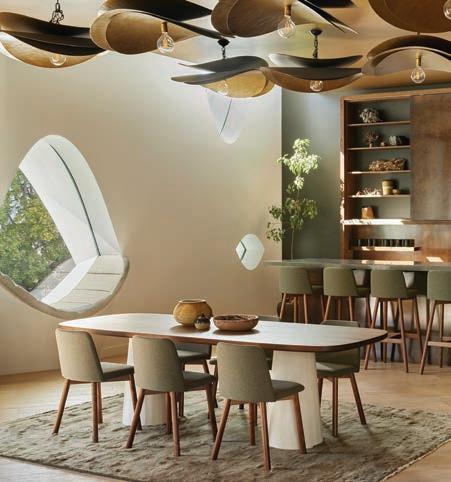

agriculture and ranching—which restores soil health, traps carbon that would otherwise contribute to climate change, and improves food systems.
Populus is not the first LEED-certified hotel, but it is the first carbon-positive one in the U.S. “Urban Villages started 20 years ago with a simple question: Was there a better way to build hotels that were in sync with nature?” Buerge says. “We wanted to build the hotel that Mother Nature would create, one that would leave the world better off than the way we found it.”
For Populus, that meant looking at things holistically and engaging the award-winning architects at Studio Gang—known for, among other things, environmental design
and advocacy. The studio took inspiration from Colorado’s iconic aspen trees (Populus tremuloides), designing windows that mimic the eye-shaped markings left on the trunks after shedding their lower branches. But the architecture is more than visually striking. “We asked ourselves with every single material that we used, ‘Is there a material that’s more environmentally responsible?’” Buerge says. Outcomes included the building’s fly-ash concrete alternative (which reduced its carbon footprint by 30 percent), wind electricity that powers the building, and clay to-go coffee cups (that “decompose over a couple of days and turn into soil,” says Buerge). Beyond that, the hotel’s One Night, One Tree program planted up to 20,000 trees
in 2024, each representing one night’s stay by a guest.
As consumers increasingly look for environmentally friendly travel solutions, Urban Villages rises to the occasion and works toward its larger mission. “Almost half of climate change is attributable to the real estate industry,” Buerge says. “More than half the materials we extract from the earth go into buildings, half the materials in landfills come from construction waste, and 40 percent of global greenhouse gas emissions come from buildings. We believe that if we’re serious as a species about addressing these major earth emergencies, we need to address the real estate industry. It’s an inexhaustible journey.” u
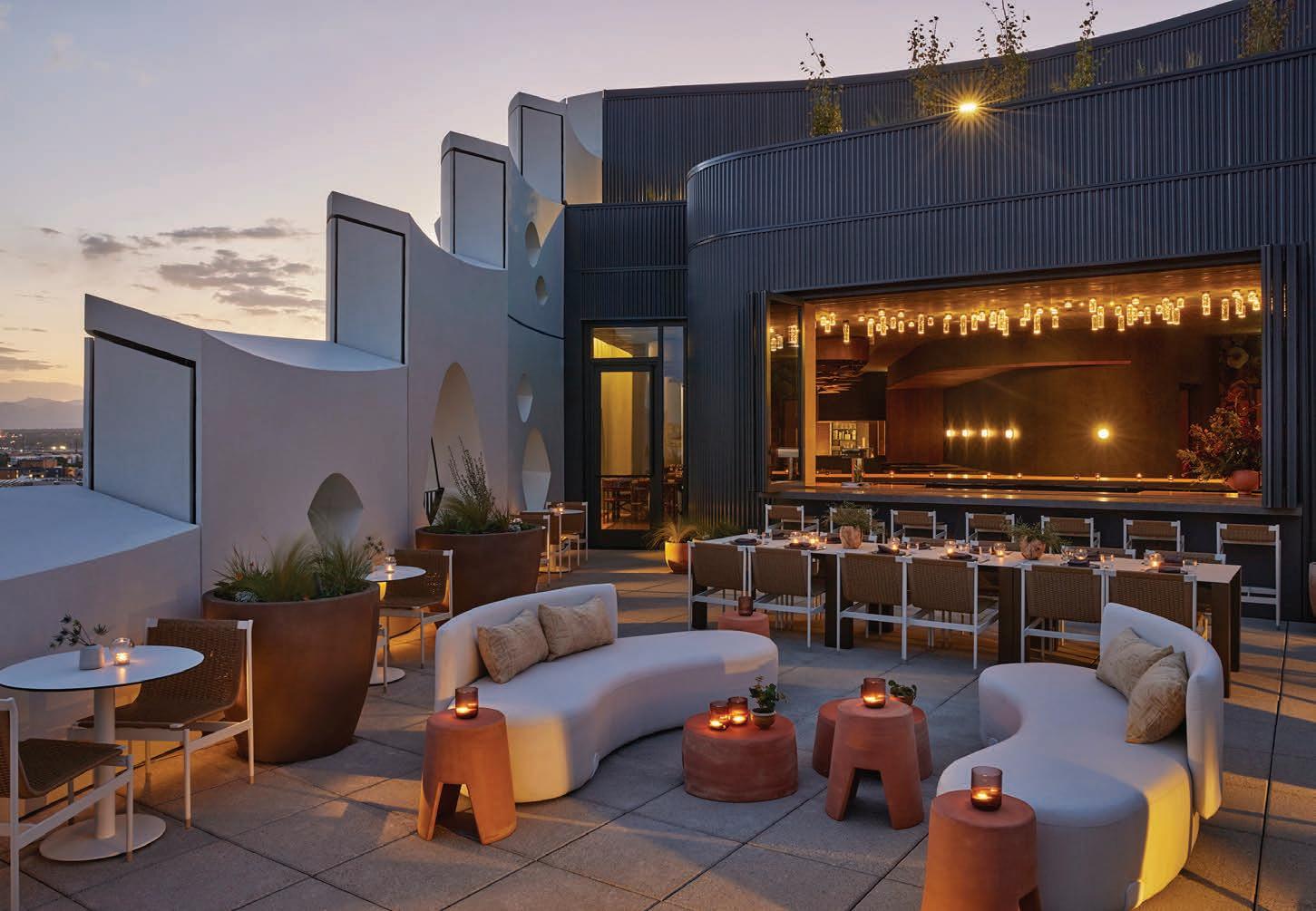


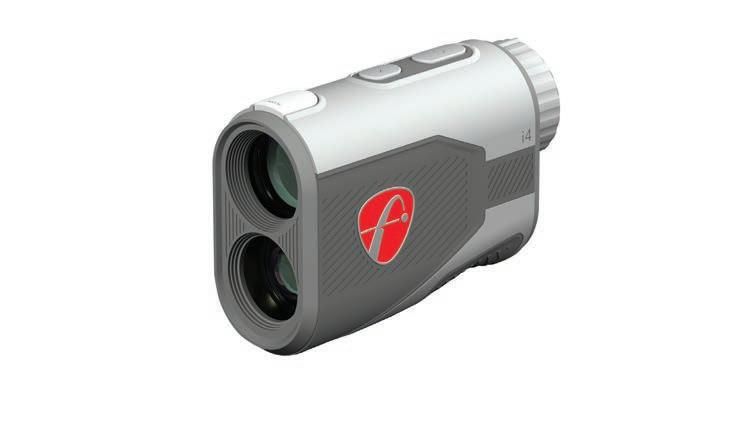


Game Changers
The latest and greatest golf clubs, gear, tech, and accessories.
BY SHAUN TOLSON





WOODS & HYBRIDS
1. Ping G440 Hybrids
The G440 family is full of impressive clubs in every category; however, Ping’s latest hybrids steal the show. Featuring a carbonfly wrap that replaces steel, as well as shallower and thinner clubfaces, these hybrids are defined by a low CG (center of gravity), which allowed the company’s engineers to boost lofts without sacrificing ball speeds or spin rates. Best of all, each hybrid is designed with specific shot shapes in mind—the 3 and 4, for example, promote straighter ball flights, while the 5, 6, and 7 are engineered with draw bias. $325; ping.com
2. Callaway Elyte 3-Wood
Callaway may be best known for its drivers, but the thermoforged carbon crowns and aerodynamic shapes found in its new Elyte model lineup are most impressive with the 3-wood. The step-sole design streamlines the club’s turf interaction, while a tungsten speed wave is uniquely positioned on the sole to create significantly more forgiveness low on the clubface. The result is a 3-wood that can act like a rocket launcher. $350; callawaygolf.com
IRONS & WEDGES
3. Cleveland RTZ Tour Rack (Raw) Wedges
Cleveland Golf’s latest tour-level wedges are a short-game revelation. Made from an alloy that took years of R&D to chemically engineer (not to mention being softer, less dense, and rust-proof when compared to steel), these wedges can be made in a raw iteration that offers zero glare and unparalleled feel. They can also be ordered with full-face grooves, which allow players to open the clubface with confidence, knowing that they’re certain to strike the ball in an area of the club that will impart predictable amounts of spin. $190; us.dunlopsports.com
4. Cobra 3D Printed Tour Irons
Some club manufacturers are leaning into AI for design advancements; Cobra is investing strongly in 3D printing. Proving the technology may represent the future of club design, Cobra’s newest irons feature an intricate interior lattice structure that imparts rigidity but strips weight from all around the club head. Two 50-gram pieces of tungsten are later inset in the heel and toe of the club,
which lower the CG dramatically, increasing performance and forgiveness on off-center hits. From $2,100/set; cobragolf.com
RANGEFINDERS
5. FlightScope i4
Launch monitor expert FlightScope debuts its first distance-measuring device: the i4 Rangefinder. Through Bluetooth connectivity, the device can pull weather data from local stations to offer real-time wind measurements—both speed and direction. It can also utilize stored launch monitor data for a golfer’s average carry distances with each club to provide personalized club recommendations out on the course—which also account for elevation change and environmental conditions. It’s like having a personal caddy in the palm of your hand. $500; flightscope.com
6. Bushnell Golf Tour Hybrid
Through its lineup of rangefinders, Bushnell Golf has led the way in slope-adjusted distance calculations for years; and with the brand’s new Tour Hybrid, the tech company is pushing the envelope again—now pairing that laser-aided technology with slopecompensated GPS capability for the first time. That combination allows the Tour Hybrid to accurately make slope-adjusted measurements to both the flag and to the front, middle, and back of the green. It’s data that gives players even more confidence as they’re selecting clubs and determining the best shots to hit in any given scenario. $500; bushnellgolf.com
ACCESSORIES
7. ShotScope G6
Preloaded with hole maps for more than 36,000 courses around the world, ShotScope’s new G6 golf watch delivers basic course-management info via a large digital display. It’s lightweight and the battery lasts at least two rounds of golf when GPS mode is activated. $180; shotscope.com
8. SkyCaddie Pro 5X with GameTrax 360
The trouble with so many golf improvement apps, especially those with GPS-based
course management functionality, is that they require users to be constantly looking at their phones. By contrast, the SkyCaddie Pro 5X looks and feels like a smartphone, but it’s only capable of tracking shots and posting scores. When paired with SkyGolf’s new GameTrax 360 SuperTags, which rely on sensors attached to the top of the grips for each club, the system captures in 3D every swing and putting stroke made out on the course. $900, plus $30 GameTrax 360 membership after first year; skygolf.com
PRACTICE AIDS
9. BAL.ON Smart Kit
The engineers at the technology company Continental have created a pair of high-tech shoe inner soles that serve as a go-anywhere version of a force plate training mat. Each insole is outfitted with nine pressure sensors, which fluidly measure where a golfer’s weight is positioned and how much pressure they’re exerting into the ground throughout the swing. That data is delivered via a smart app that also utilizes a phone or tablet’s camera to capture (and sync) video documentation of the swing. It’s yet another tool to better analyze your swing when it counts: out on the course. $600; bal-on.golf
10. TrueBreak Putting Platform
High-tech golf simulators get all the love, but if you want to create an indoor practice space that ensures improvement out on the course, start with the TrueBreak Putting Platform. This mechanical, indoor putting surface actuates four degrees front to back and side to side, which means it can replicate up to the maximum allowable degree of slope around hole locations that players will find on reallife putting greens (based on USGA and R&A criteria). The platform plays well with traditional simulators, so you can get your indoor golf entertainment and serious practice all in one. From $15,000; platformgolf.com u
Track Attack
Rare and expensive track special collectibles.
BY MARK HACKING

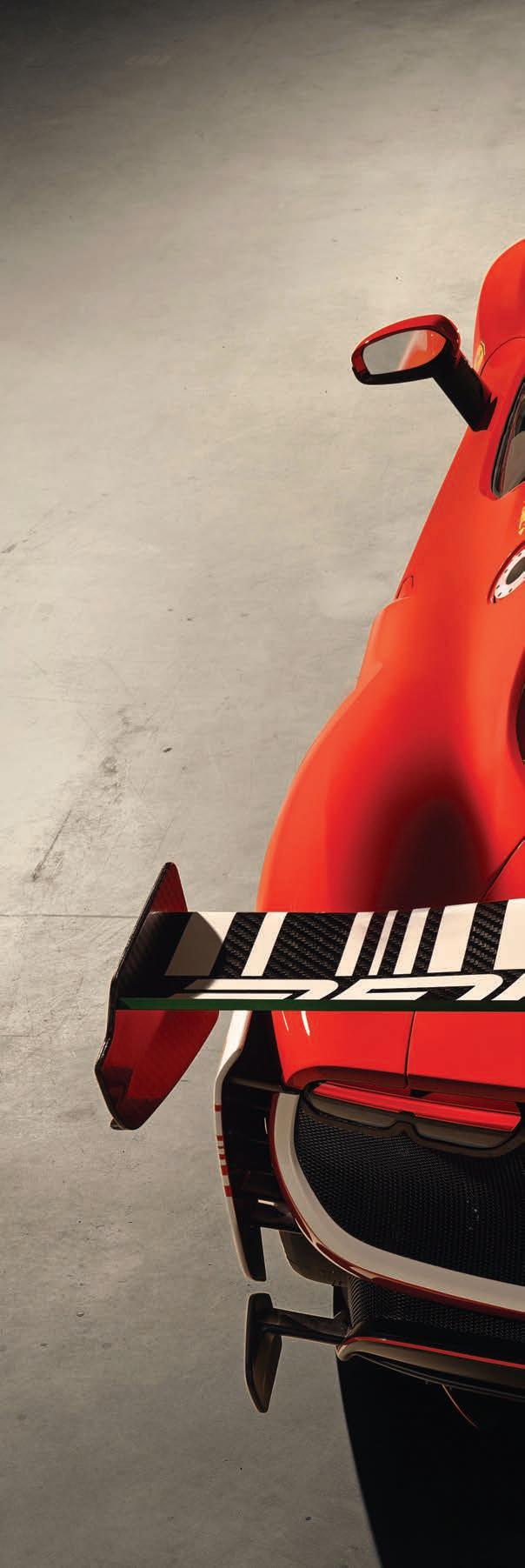
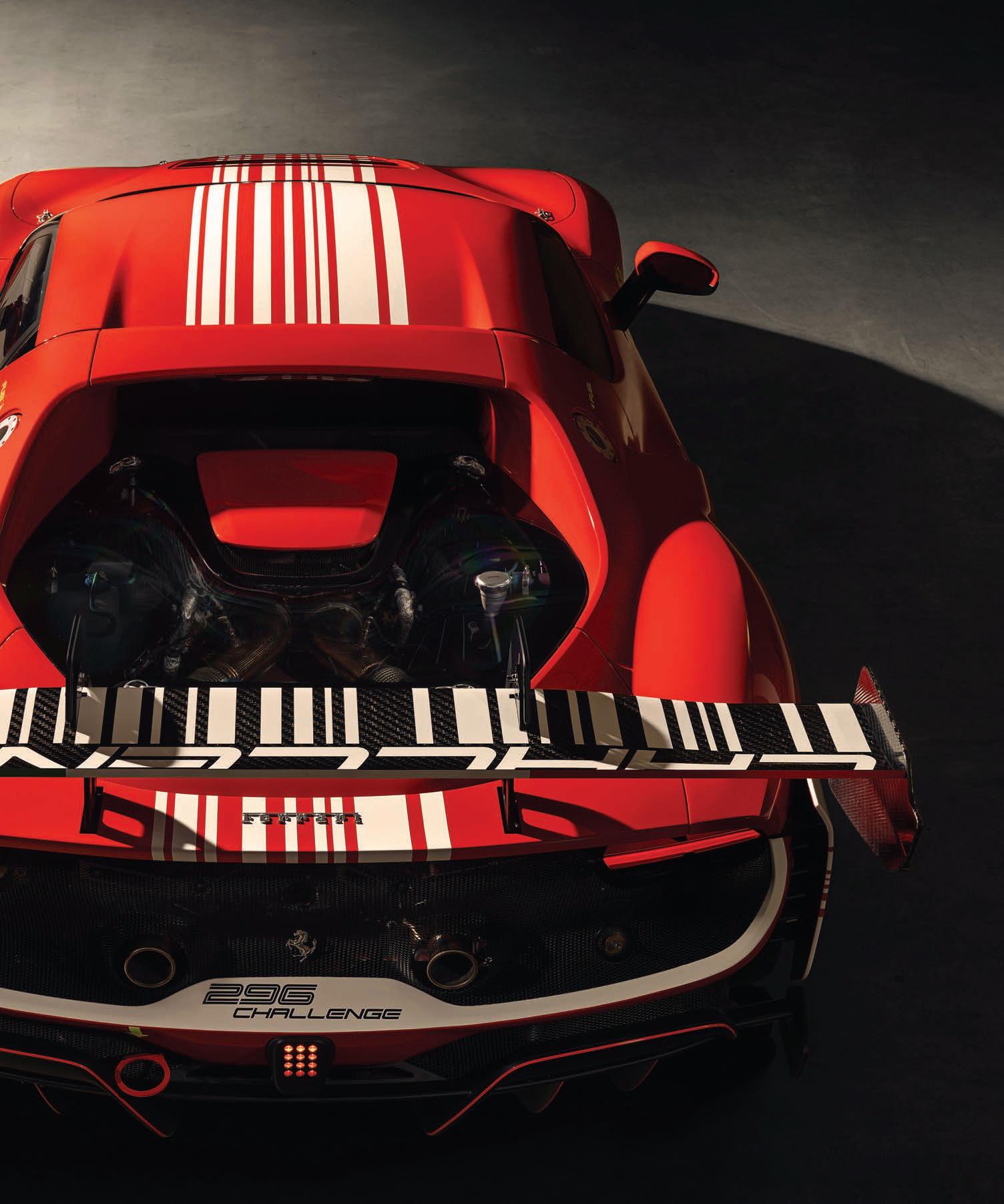



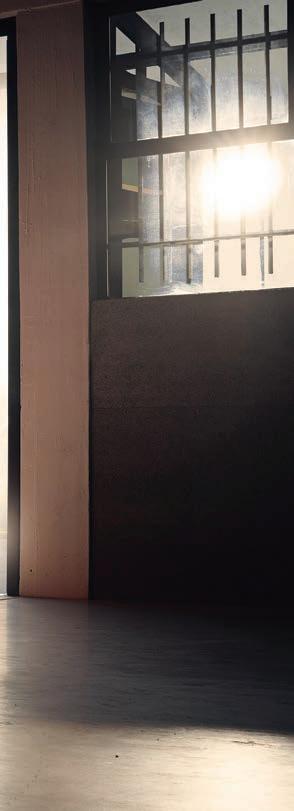
So there’s this theory about car collectors, and it goes a little something like this: There are two types out there, the collectors who actually enjoy driving their cars and those who prefer to park them. A car, after all, is a mode of transportation. But it’s more than that—it’s a diversion, a talking point, a source of adventure, a personal brand statement. A car can also represent a sliver of an investment portfolio, as legitimate an asset as real estate holdings, stocks, or bars of solid gold.
Often, the inherent value of the automotive asset hinges on a specific set of numbers: engine codes, chassis numbers, odometer readings. If any of these numbers looks out of kilter … well, that’s when the quality of the investment could suffer. A parker obsesses over the numbers. A driver, not so much. A
FERRARI 296 CHALLENGE
driver wants the experience of driving.
Arguably, the most appealing collectible car to the pure driver is the mythical track special— defined by both extreme rarity and gravitydefying performance. Engineered for pure speed on the track and little else, track specials bring performance (and pricing) to glittering new heights, challenging both types of collectors to raise their game along the way.
In an era where all the top marques have limited-edition bespoke models, keeping an eye on the auction market and listening for whispers of future releases is key. The following four car brands, among the most exclusive in the world, are ready to deliver limited-edition, sold-out track specials— to drive or to park—to those who have the connections, the funds, and, if driving, the outright courage to get things kick-started.
PREDECESSORS: FERRARI FXX, FERRARI 599XX, FERRARI FXX K, FERRARI SF90 XX STRADALE
In the world of tic-tac-toe, XX signifies two-thirds of a victory. But in the manufacturing of track specials, it has a more ominous meaning. Launched in 2005, the Ferrari XX Program takes road cars and optimizes them for the track, extracting maximum performance in the process.
The program began with the Ferrari FXX, which was based on the epic Enzo Ferrari supercar.
The original FXX churned out more than 800 hp from its naturally aspirated V12 engine. Other models to come through the program have included the 599XX (the only track special with a front-mounted V12 engine), the 1,050-hp FXX K (based on the LaFerrari hybrid hypercar), and, most recently, the SF90 XX Stradale (based on the brand’s most recent plug-in hybrid supercar).
The Ferrari XX Program represents an exclusive world, inhabited by some of the more serious
Ferrari aficionados out there. But there’s another model, the Ferrari 296 Challenge, that represents the diehard racer’s first step into not just track driving but on-track competition.
This car, based on the 296 GTB, is the star of the Ferrari Challenge Series, a one-make championship that’s based in four different parts of the globe, including North America. To prepare owners for racing in the series, Ferrari offers three separate levels of instruction at various tracks around the world.
The car itself is powered by a twin-turbocharged 3.0-liter V6 with 690 hp. While this is less than the hybrid-enabled 296 GTB road car, the race version counters by being some 300 pounds less due to various weight-saving measures. Other revisions include a full roll cage and an F1-inspired braking system. ferrari.com

MCLAREN SOLUS GT
PREDECESSORS: MCLAREN P1 GTR, MCLAREN SENNA GTR, MCLAREN ARTURA TROPHY EVO
By this point in the story, the keen reader will have noticed a distinct pattern. The car manufacturers that produce the most exciting track specials on the planet are those that also have motorsports as part of their DNA. This is certainly true of McLaren, a brand involved in topechelon racing long before it started building road cars.
Founded by race driver Bruce McLaren, the McLaren Racing Limited concern has been competing in Formula One since 1966. The road car division, now named McLaren Automotive, was formed in 1985. This division produced its first road car, the aptly
named F1, in 1992, then took a break before returning in 2011 with the MP4-12C.
Several of its more recent road cars have been transformed into track specials. These include the McLaren P1 GTR, McLaren Senna GTR, and the McLaren Artura Trophy Evo, which is based on the car that competes in the single-make McLaren Trophy race series. But another track special tops them all in terms of performance and sheer audacity.
This track special, the McLaren Solus GT, is based on a vehicle that was designed to compete only in the virtual world. In 2017, the
McLaren Ultimate Vision GT first appeared in the Gran Turismo Sport video game and has since made the unprecedented leap from vision to reality.
The real-world Solus GT is powered by a 5.2-liter V10 engine that creates 829 hp and screams like an F1 engine from the early 1990s. The reported performance figures for the car are staggering: zero to 60 mph in less than 2.5 seconds and a top speed in excess of 200 mph. There will eventually be only 25 examples of this wicked ride built, but the entire production run has already sold out.
mclaren.com





ASTON MARTIN VALKYRIE AMR PRO
PREDECESSORS: VULCAN AMR PRO, VANTAGE AMR PRO
The Aston Martin Valkyrie AMR Pro is, effectively, a Grand Prix car for the private owner. This makes sense when you consider it was penned by Adrian Newey, arguably the greatest race car designer in history. The car is derived from the streetlegal Valkyrie but is even more audacious and exceedingly rare.
For the record, AMR stands for “Aston Martin Racing,” the motorsport division that produces race cars for various series, including the Formula One World Championship. When the AMR stamp is placed, it’s etched into history. There have been 235 examples of the Valkyrie road car produced, but only 25 of the AMR Pro version.
The car is powered by a naturally aspirated 6.5-liter V12 Cosworth engine that generates 1,156 hp and can rev to a screaming 11,100 rpm. Although the manufacturer shares no definitive acceleration or top speed figures, the model landing page captures the essence of the car: “Insanely fast, by anybody’s standards.”
The Valkyrie AMR Pro is just the latest in a string of track specials from the legendary British brand. In 2015, it produced 24 examples of the Vulcan AMR Pro, a track-ready GT car that was priced at $2.4 million. There have also been AMR Pro versions of the brand’s nominal “entry-level” performance car, the Vantage
The Valkyrie project was initiated in 2016 by Aston Martin in partnership with Red Bull F1. This was back when the manufacturer was a sponsor of the F1 squad. There have been two major developments since then: Aston Martin now has its own F1 team, which has lured Newey away from Red Bull. Look for more track specials bearing the Aston Martin winged logo in the near future, but get your wallet warmed up. astonmartin.com

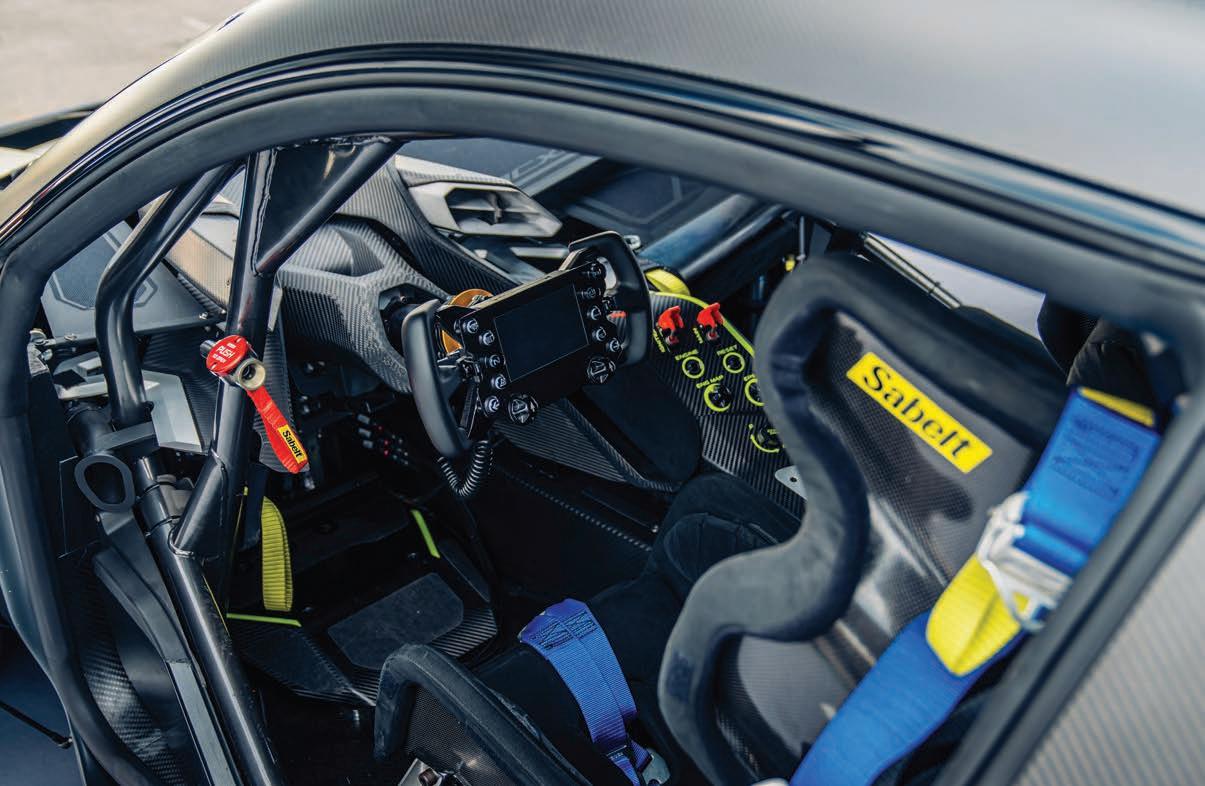
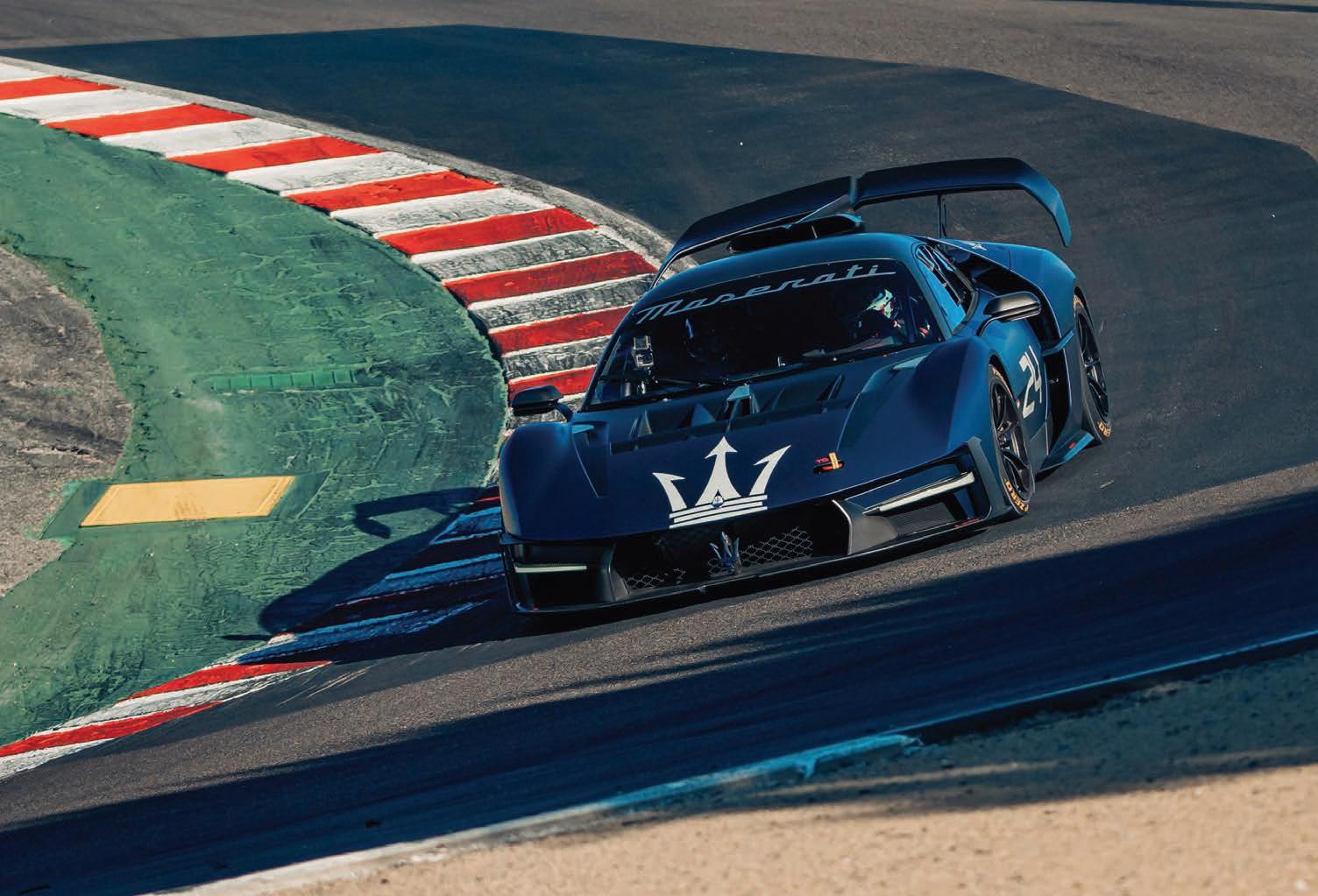
MASERATI MCXTREMA
PREDECESSOR: MASERATI MC12
VERSIONE CORSE
In the stratified world of Italian supercars with racing bloodlines, there are two just brands that spring to mind: Ferrari and Maserati. While the former is more renowned for its racing exploits, Maserati has no small legacy of its own.
The Maserati factory team competed in the Formula One World Championship from the inaugural season, 1950, through to its withdrawal following the 1957 campaign. In that relatively brief stretch of time, it captured one Manufacturers’ title and powered the legendary Juan Manuel Fangio to two Drivers’ Championships.
Seventy-five years after its debut on the global motorsport stage, Maserati
is again setting racetracks alight with the appropriately named Maserati MCXtrema. Based on the MC20 supercar, this track special features a twinturbocharged 3.0-liter V6 that generates a mammoth 734 hp.
Limited to just 62 examples for the world, all of them spoken for already, the MCXtrema also boasts a quick-shifting six-speed sequential gearbox, adjustable suspension system, racing brake kit, full roll cage, and massive rear wing. So, yes, it’s a real race car.
This latest Maserati also has ties to one of the most valuable track specials of the recent past, the Maserati MC12 Versione
Corse. Produced in 2006, the Versione Corse was based on a road-going version of the MC12 and another variation that competed—and won—in GT races around the world.
The MC12 car shared almost all its mechanical attributes with another legend from the recent past, the Ferrari Enzo. Back then, Maserati was a little stuck in the shadow of corporate cousin Ferrari. Nowadays, though, the “other Italian supercar brand” is on its own again and, with the MCXtrema, ready to reclaim its rightful place in the hearts and minds of hardcore enthusiasts from around the world. maserati.com u
The Many States of Craft Bourbon
Over the past decade and a half, the popularity of America’s only proprietary whiskey has skyrocketed. The increased demand has brought higher prices— and scarcity among top-shelf bottles—but the craze has also produced a new generation of small-batch distilleries that are crafting exceptional bourbon in unexpected locales.
BY SHAUN TOLSON
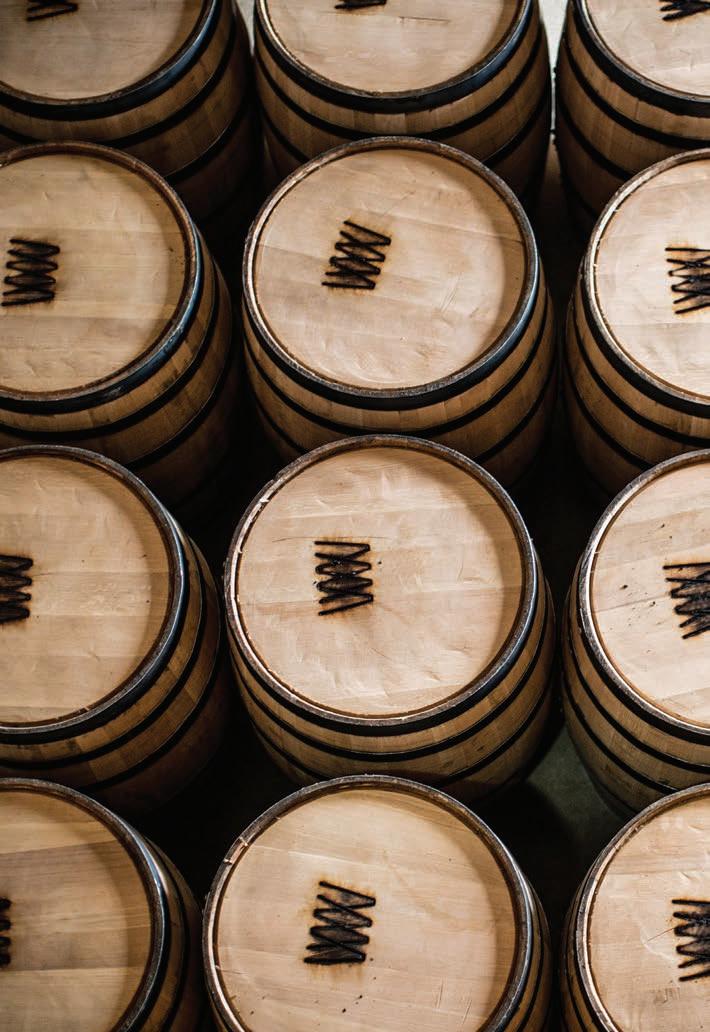
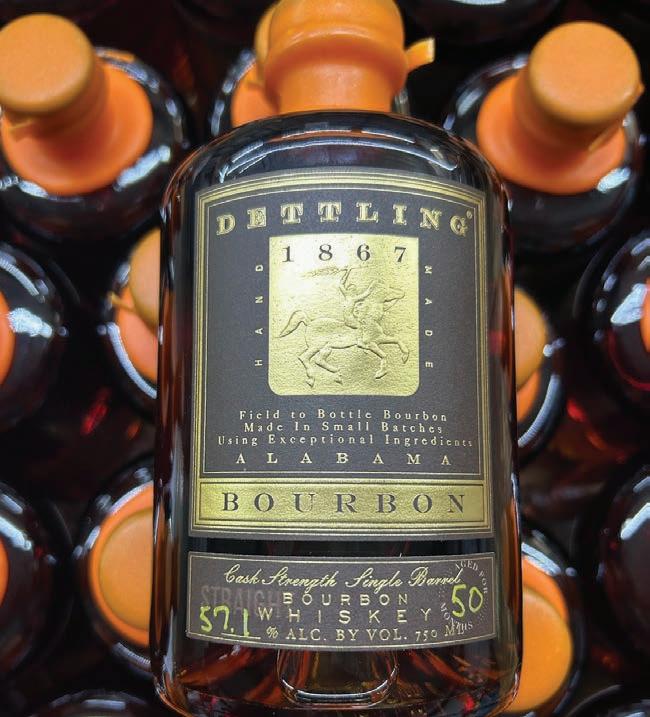

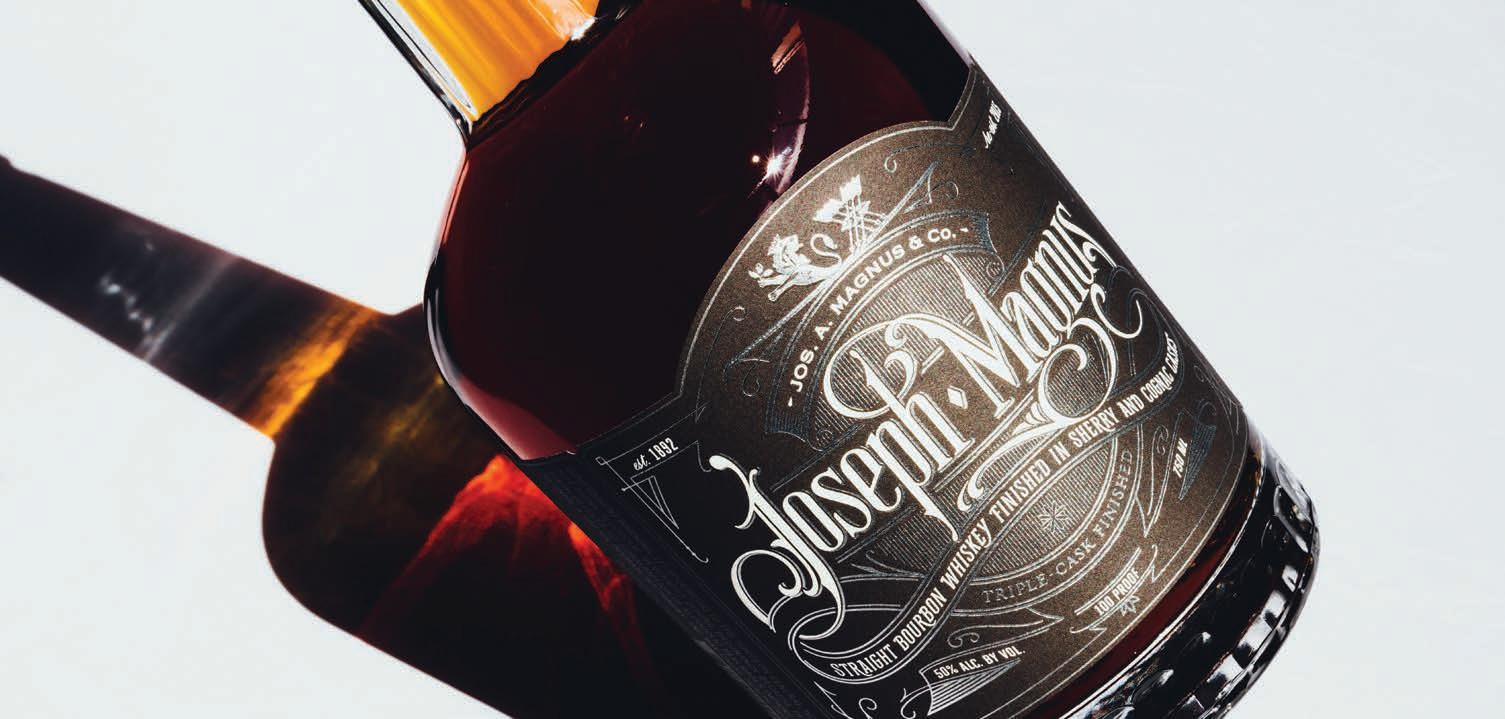

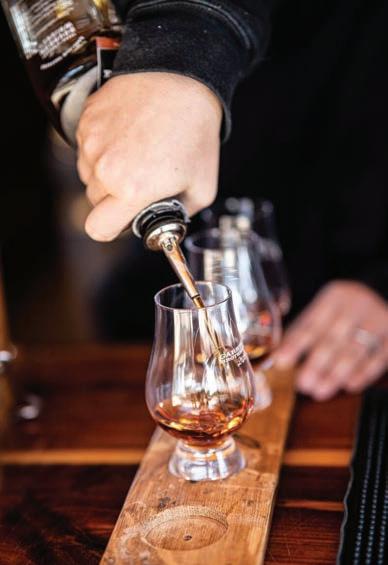
Clockwise from far left: Wyoming Whiskey barrels; Dettling; Jos. A. Magnus & Co.; Garrison Brothers; Frey Ranch; Widow Jane
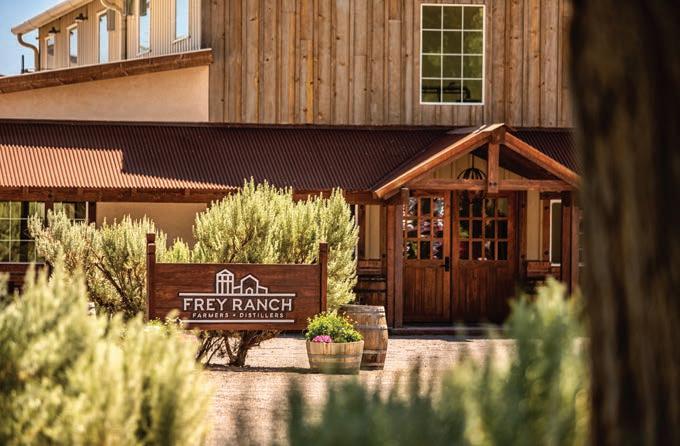

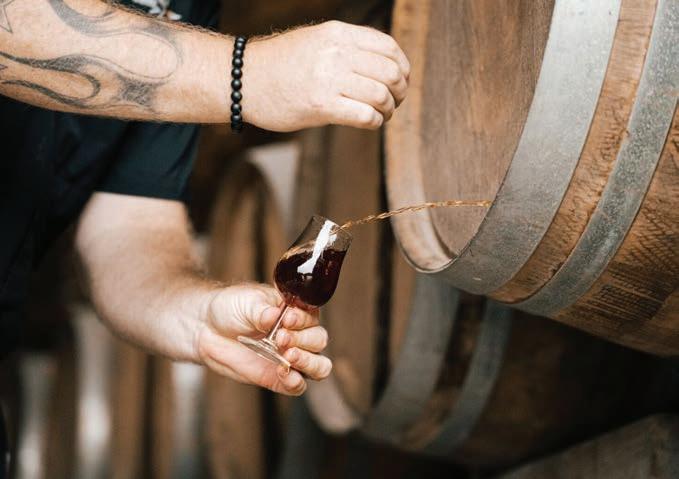
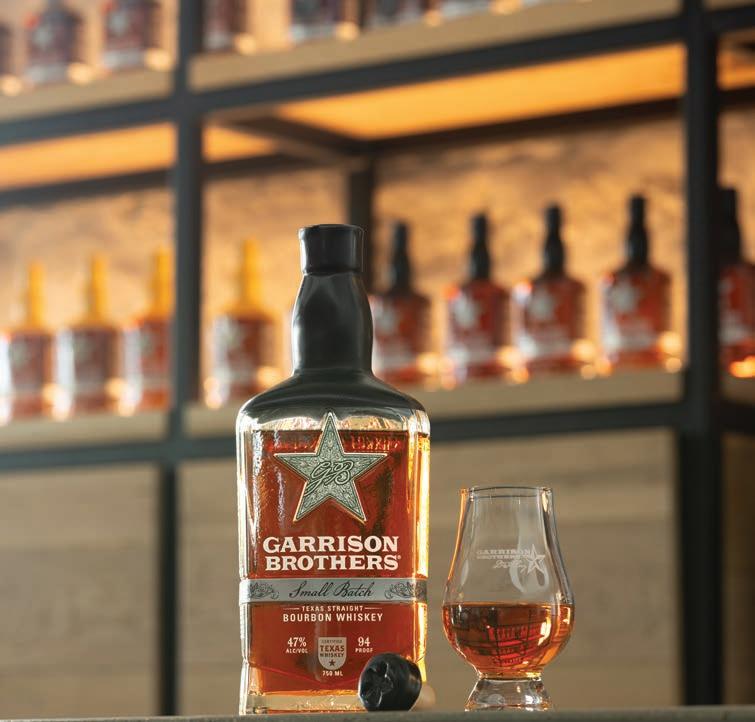
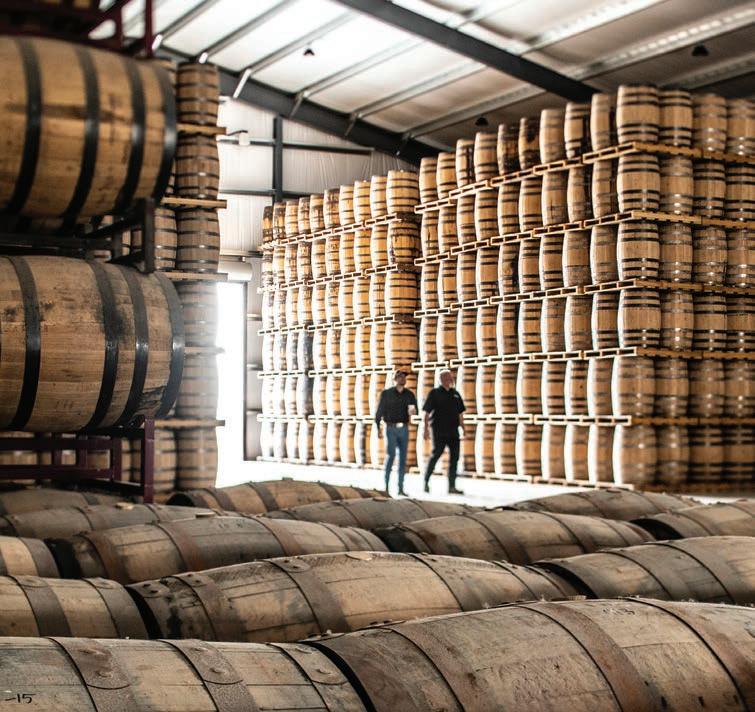
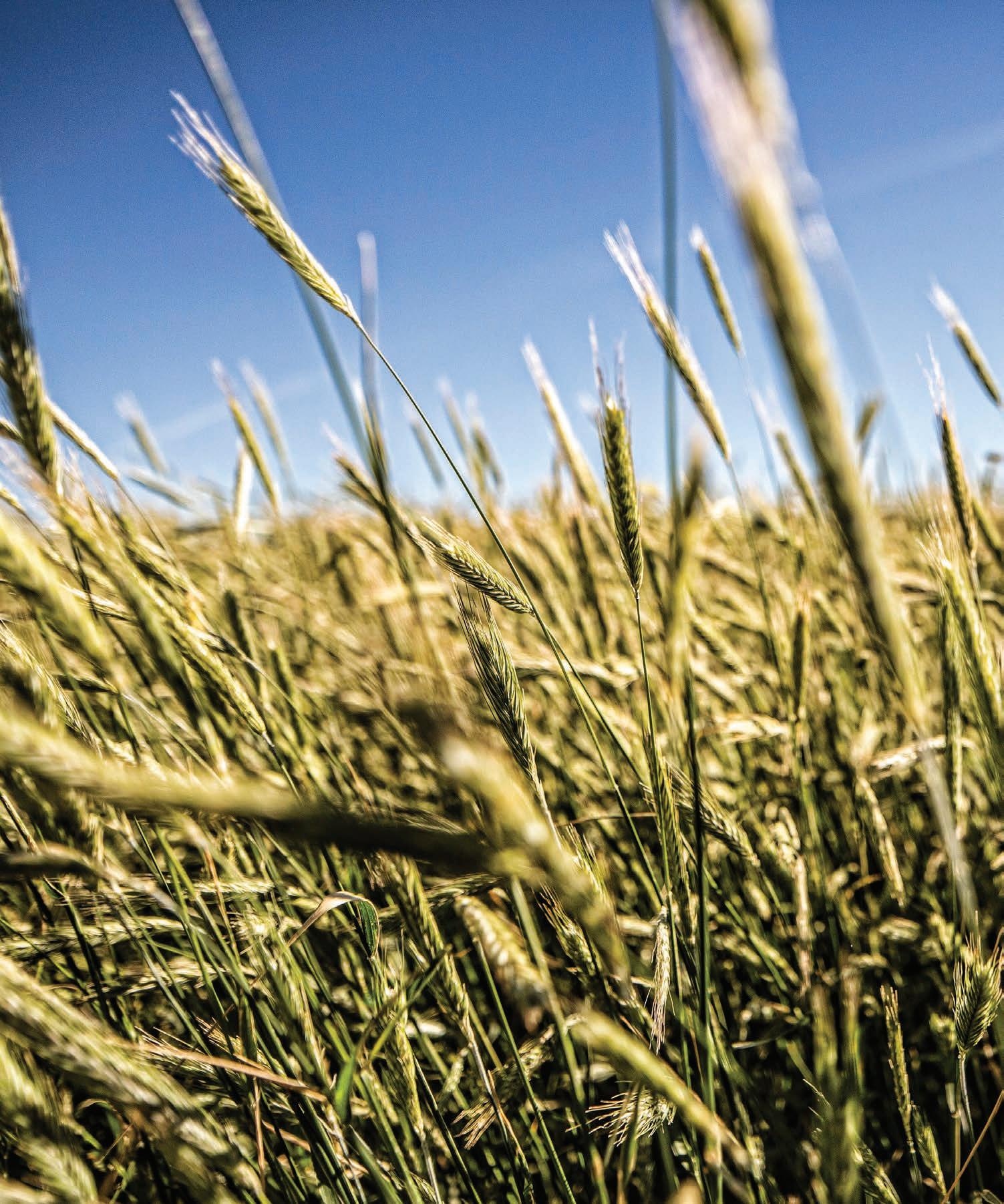
Not long ago you could walk into a liquor store, stroll down the bourbon aisle— assuming the store even had a dedicated bourbon aisle—and pass bottles of Pappy Van Winkle for the taking. The 10-year-old Rip Van Winkle, the 12-year Van Winkle Special Reserve, even the 15-year, 20-year, or 23-year Family Reserves, were all just sitting there, possibly collecting dust.
Today, those sought-after American selections carry MSRPs ranging from $130 to $450, but good luck finding bottles at those prices. Most retailers charge much more, largely because bottles on the secondary market are selling for $2,000 and up.
The days of finding top-shelf bourbon at reasonable prices may be behind us (an inevitable outcome of the bourbon craze born about 15 years ago), but the mania has had benefits too. For every pricey unicorn bottle, new producers have emerged and established roots in cities and states that would’ve seemed preposterous before the boom. These far-flung distilleries are cultivating unique stories and developing a following of loyal consumers. For any challenges their locations may pose, these producers,
in overcoming those obstacles, are crafting bourbons that not only capture a distinct sense of place but inject more complexity and variety into the category.
On the surface, Nevada and whiskey-making don’t seem to go together, yet the Silver State is far more diverse than the Mojave Desert that surrounds Las Vegas would suggest. Some 300 miles northwest of Sin City, the municipality of Fallon is a veritable oasis, a lush farming community where the high-desert climate presents ideal growing conditions for a variety of grains throughout the year. That’s the foundation of Frey Ranch, a whiskey distillery that first turned on its still in 2013 and benefits from five generations of family farming in the region. It also benefits from extreme temperature swings throughout the year, with highs peaking at 110 degrees during the hottest periods of the summer and temps dropping to zero degrees on the coldest days of the winter. Those fluctuations allow Colby Frey, the brand’s whiskey farmer, to cultivate high-quality corn, rye, wheat, and barley. “That’s where it all starts,” he says. “Our goal from the beginning was to showcase the grains that we grow. We wanted to highlight the grains, not mask them with the oak or with a secondary aging.”
Dan Garrison, the co-founder of Garrison Brothers, takes a similar approach to selecting the grains that are slowly transformed into the brand’s lineup of Texas-born bourbons. The distillery, located about 60 miles west of Austin, annually uses more than 4 million pounds of white corn, which is sourced from a collective of farmers based about 100 miles to the south. Ultimately, the corn is distilled just once inside a 2,000-gallon copper pot still designed and built to replicate the same dimensions of a historic piece of equipment used in the 20th century by legendary Kentucky distiller Elmer T. Lee.
After about 14 hours, the liquid that comes off Garrison Brothers’ stills has retained the natural oils of the corn, wheat, and barley that make up the bourbon’s mashbill.
“We want the oils from the grains to come through on the whiskey’s finish,” Garrison says.
“Our bourbon is oily. It’s thick. It’s got a big, bold mouthfeel.”
Those organic oils are imperative given the extreme heat in which Garrison Brothers’ barrels mature.
More specifically, the oils allow the grains’ natural character to hold up against the oak barrels’ influence— an element of flavor extraction that can easily grow unbalanced given the significant amount of evaporation that occurs every year.
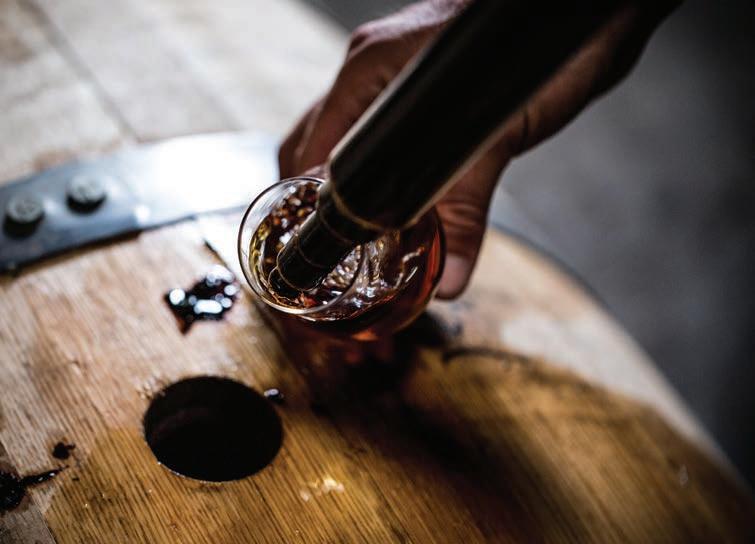
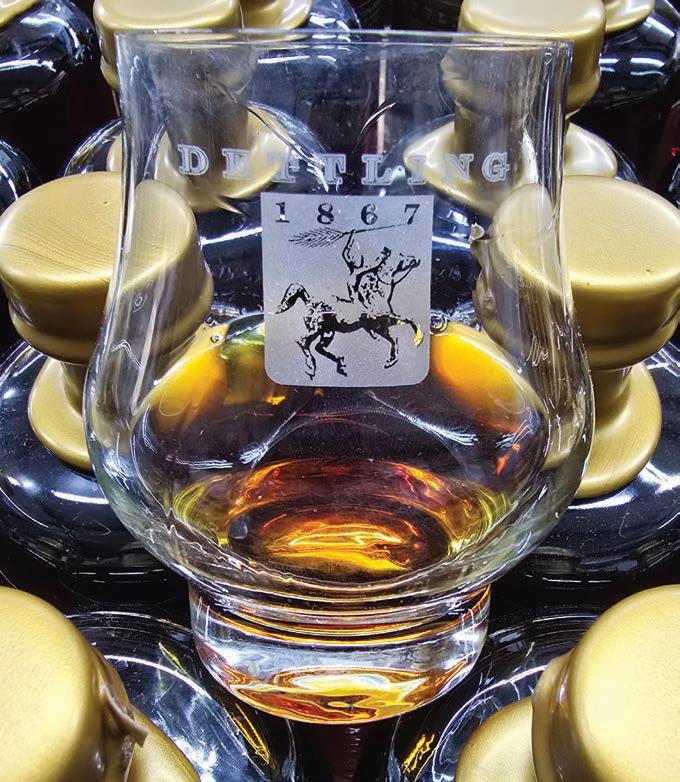
Managing extreme heat in barrel warehouses is something Seth Dettling has mastered over the past decade. Since establishing Dettling in 2014, he’s taken an artisan’s approach to crafting bourbon. More specifically, he grows nonGMO corn nearby and uses roasted malts from Germany and rye from Canada to make up the brand’s bourbon mashbill. (Dettling avoids using barley, which he views as a filler ingredient—in his opinion, it doesn’t add anything meaningful to a whiskey’s aroma or flavor profile; it only boosts volume.) He also incorporates oats in the same manner a brewer would to create a stout, and the lubricous nature of those oats allows the hints of chocolate and tobacco found in the whiskey to linger for several minutes on the finish. Dettling encourages drinkers to approach his bourbons as they would a fine wine. Or to use another analogy, he points to collector automobiles.
“You’d let a classic car engine warm up before you drove it hard, right?” he asks rhetorically. “When you have whiskey that’s aged in this kind of heat, it needs air time. I tell people that they need to sit with the glass and be patient with it. It really starts to go places after 10 or 15 minutes. You’ll start to discover more and more layers. That’s not accidental. It’s because the mashbill is complex.”
It also speaks to the sweltering conditions inside Dettling’s aging warehouse, where certain areas can surpass 150 degrees during the hottest days of the summer. The ways in which the maturing whiskey interacts with the oak barrels in that environment creates a depth of flavor that belies the bourbon’s relative youthfulness. (Dettling’s oldest bottled bourbon to date peaked at just seven years.) “We take no shortcuts at any point in the process,” he says. “The extreme Alabama heat does the rest.”
In fact, Frey has noticed a similar effect for the whiskeys that he matures in northern Nevada’s highdesert climate, especially because the cold winters force the barrels to contract, releasing the liquid that they had absorbed during the hot summer months. “It almost accelerates the aging,” he says. “You’re getting that full expansion and contraction into the wood to extract a lot of the flavors and colors.”
Extreme temperature swings are also being put to good use in Kirby, Wyoming, a township of less than 100 people located in the state’s high-elevation prairie lands. Founded as a coal-mining settlement in 1907, Kirby is now home to the state’s first legal whiskey distillery: Wyoming Whiskey, touted for its mashbill developed by Steve Nally, the former long-standing head distiller at Maker’s Mark. The region is defined by hot and dry summers that are

juxtaposed against winters where the mercury plummets below freezing. However, according to Brendan Cook, the distillery’s master blender, the more significant temperature differences are those found in the brand’s aging warehouses.
“It can get up to 115 degrees at the top of the warehouse at the same time that it’s 60 degrees at the bottom,” he says. “The barrels at the top of the warehouse develop a lot of intense spice characteristics. The ones in the middle will have more of those dark, dried fruit notes. And then at the lower levels, we’re getting a lot of caramel, orange, and vanilla [notes]. It gives me, as a blender, a lot of fun opportunities to strategically use the warehouse.”
The stark temperature shifts from summer to winter also ensure that
Wyoming Whiskey’s bourbons are subtly unique from those being made along Kentucky’s famous bourbon trail. After 10 years of maturation in Kentucky’s warmer, year-round temperatures, a bourbon will take on a lot of characteristics from the oak and develop what Cook describes as “that Kentucky chew.” From October until the end of April in central Wyoming, however, the chilly air prevents the bourbon from interacting as much with the wood.
“The whiskey is still developing,” he says, “but it’s developing a lot of tropical fruit and stone fruit notes. We’re able to produce these older whiskeys that have all of this character and flavor developed without getting the added wood spice that you would typically expect.”
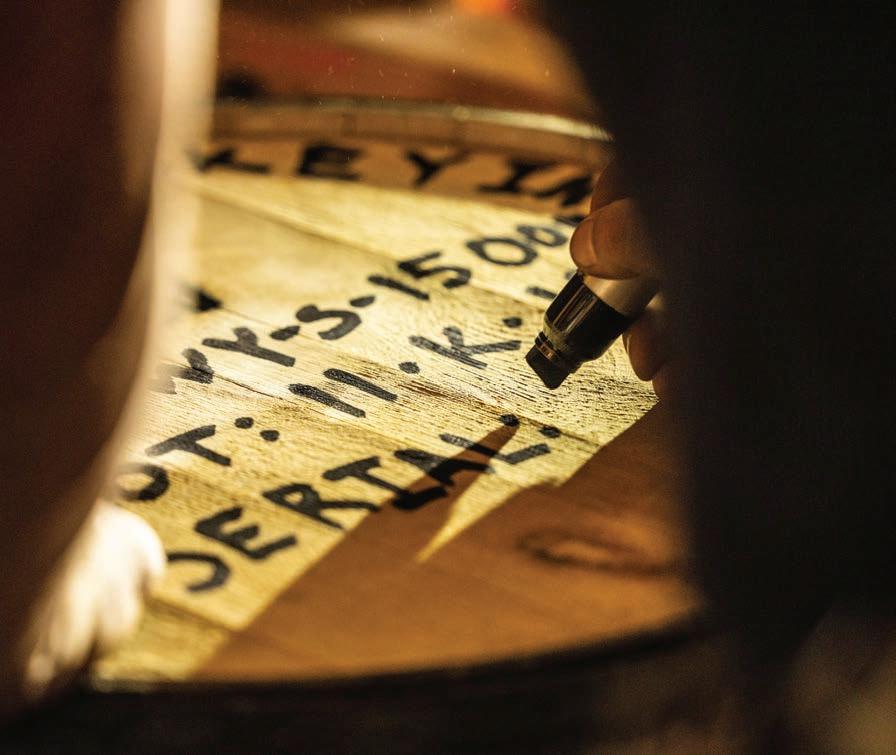
In New York, Widow Jane embraces the melting pot culture that has defined the city for centuries. From its inception in Brooklyn’s Red Hook neighborhood in 2012, the urban distillery has sourced mature whiskeys from other parts of the country, blending them to create a distinctive house style; finishing them to produce resplendent, small-batch offerings; and, most notably, proofing them with limestone-rich water sourced from springs located about 100 miles to the north, which creates a distinctive flavor profile.
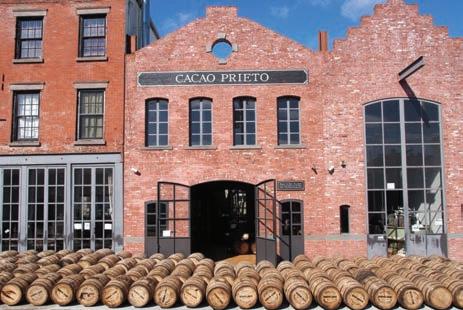
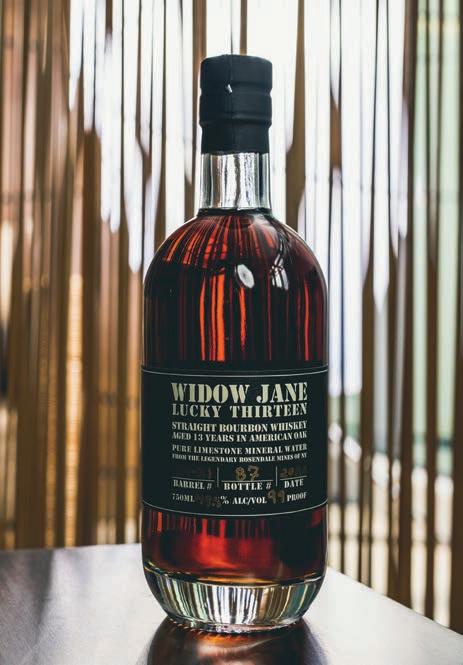
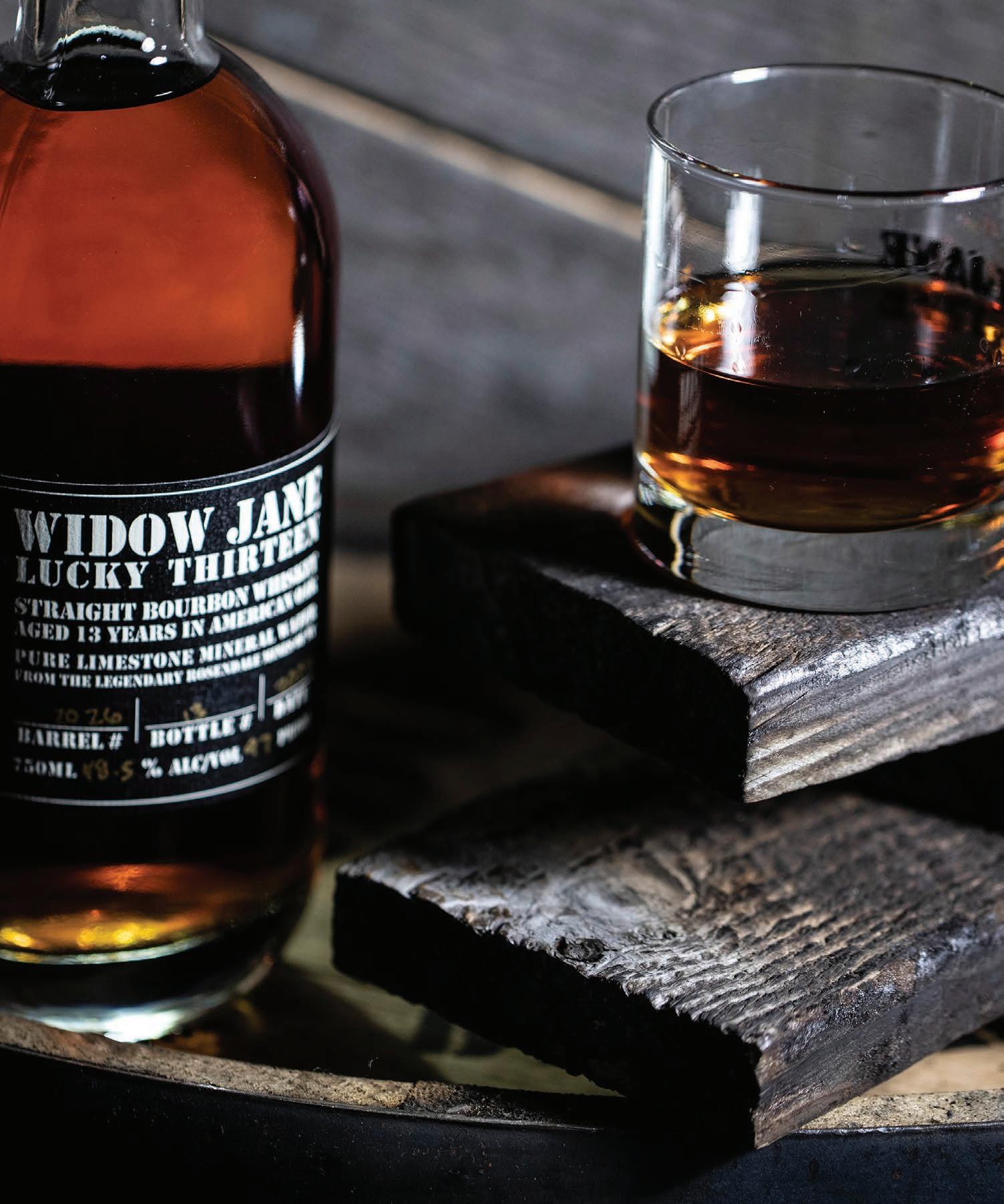
“It elevates some of the whiskey’s sweetness,” Sienna Jevremov, the brand’s head distiller, says of the water, which has a notable salinity to it and acts in much the same way that a pinch of salt does when cooking. “It allows the tangy, fruity notes to punch out. There’s a wonderful cherry note [in the whiskey] that just sings. It also helps to develop this subtle, caramel sweetness and softens up some of the spice and heat, turning it into a kind of baking spice quality.”
The water brings “extra heft,” as Jevremov describes it, which she says affects how the whiskey settles on the palate and prolongs the creamy vanilla flavors and hints of coconut that are imparted by the oak.
More recently, Widow Jane has used open-air pollination to create an heirloom varietal of corn called Baby Jane, which it’s now sourcing from a specialty farmer in upstate New York. Because Widow Jane’s production facilities are limited—such is the bane of most urban distilleries— Jevremov can only distill so much Baby Jane–based whiskey herself. To remedy this, she’s worked with outof-state distilleries that will distill a bourbon to her specs with her raw ingredients, including this heirloom varietal of corn.
“It produces a spirit that’s richer in flavor and in texture, especially when you run it on a pot still, allowing all of that unctuous flavor to come
through,” she says. In fact, she notes that even the raw distillate imparts a fruitiness as its flowing off the still.
“Depending on the way you ferment, distill, and age your whiskey, it’s these very small things that can create a wild difference,” she explains.
Less than a decade ago, consumers were quick to criticize any bourbon brand that sourced its whiskey from contract distilleries. Today, given that there’s more transparency across the industry, those methods are generally accepted. In the case of Jos. A. Magnus & Co., the Michigan-based brand is sourcing its whiskeys from one of the industry’s largest producers for an unexpected reason: to remain loyal to the history of the company, which was born in Cincinnati in 1892.
According to Master Blender Nancy Fraley, when Joseph Magnus opened his shop more than 130 years ago, he did so with a whiskey that was already at least 10 years old. (This she knows from tasting a sample of that vintage whiskey and then attempting to reverse engineer it.) Thus, she concluded that Magnus must’ve been sourcing his whiskey from the start.
The onset of Prohibition forced Magnus to shutter his business, and it was only after one of his greatgrandsons discovered a vintage bottle almost a century later that the brand was resuscitated in 2015. Fraley’s early distillation attempts
in Michigan couldn’t produce a bourbon that matched the original’s characteristics, so the brand partnered with MGP in Lawrenceburg, Indiana, which it deduced was likely the source of Magnus’ original whiskey, given its location on the Ohio River just west of Cincinnati.
Even though the whiskey is distilled in Indiana, Jos. A. Magnus & Co. matures much of it on-site in southwestern Michigan, utilizing many of the same blending and finishing techniques as the brand’s founder had done. Given the region’s cold, dry-air winters, however, Fraley had to tap into her background working in French aging cellars as an assistant Cognac distiller. More specifically, she introduced muchneeded humidity into the brand’s barrel warehouses. “You just have to work with your environment and know what it offers,” she says.
“Introducing that humidity has really been a boost for the flavor profile and the mouthfeel of the whiskey.”
As for the present day’s bourbon boom, it’s allowed a slew of small and lesser-known brands to thrive— this reality is not lost on Fraley.
“Our location in Michigan is not a hard thing to sell,” she says. “With the advent of the craft distilling movement, consumers have become a lot more educated on the fact that bourbon can be made anywhere in the United States.”
Shopping List
Broaden your American whiskey collection with these distinctive bourbons crafted by emerging distilleries far from Kentucky’s bourbon trail.
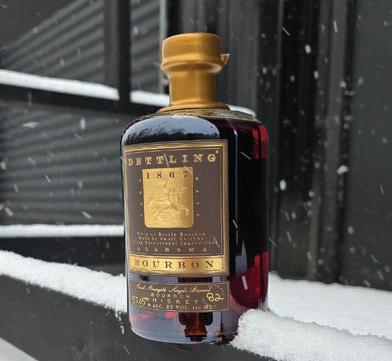

DETTLING: CASK STRENGTH
SINGLE BARREL
When given time to open up in the glass, Dettling’s single-barrel bourbon drinks like an old-fashioned. Deep brown sugar and baking spice aromas give way to buttery caramel flavors punctuated by hints of dark chocolate and tobacco. This one is deep, complex, and satisfying. dettling1867.com
FREY RANCH: FARM STRENGTH UNCUT STRAIGHT BOURBON
Luscious and syrupy, this uber-strong whiskey offers up a bouquet of dark fruits, brown sugar, and molasses, then delivers distinctive notes of caramel corn with a touch of black pepper and faint traces of vanilla. freyranch.com

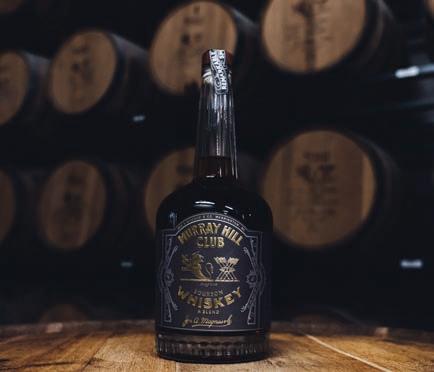
WIDOW JANE: BABY JANE
Light in body, this young bourbon is both bright and slightly peppery on the nose. On the palate, it boasts a honey-like sweetness with floral undertones. Given its youthfulness, Baby Jane can’t offer significant depth of flavor, but it’s surprisingly smooth for its age. widowjane.com
JOS. A. MAGNUS & CO.:
MURRAY
HILL CLUB
Soft and smooth, this blended bourbon smells prominently of floral vanilla with undertones of oak-imparted cherry spice. On the lips, it’s balanced between caramel and butterscotch flavors, with a fruity spiciness that conveys a high-rye mashbill in the recipe. josephmagnus.com
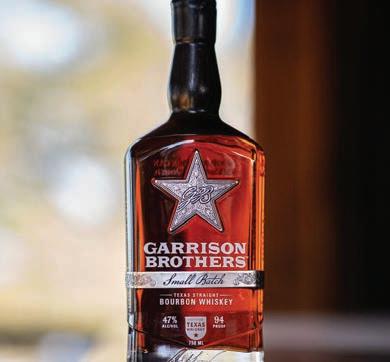

GARRISON BROTHERS: SMALL BATCH BOURBON
A rush of warm baking spices up front on the nose transitions to a subtle hint of cereal grains. Once sipped, the oily nature of this medium-bodied whiskey takes over, allowing the bourbon to coat the palate and deliver prominent flavors of sugar cookies and pound cake. garrisonbros.com
WYOMING WHISKEY: NATIONAL PARKS NO. 4
Ripe cherries and coconut swirl on the nose before acquiescing to notes of candied ginger and crème brûlée on the palate. Although fairly light in body, this whiskey boasts a surprisingly long finish, upon which it introduces subtle hints of espresso and cocoa. wyomingwhiskey.com u
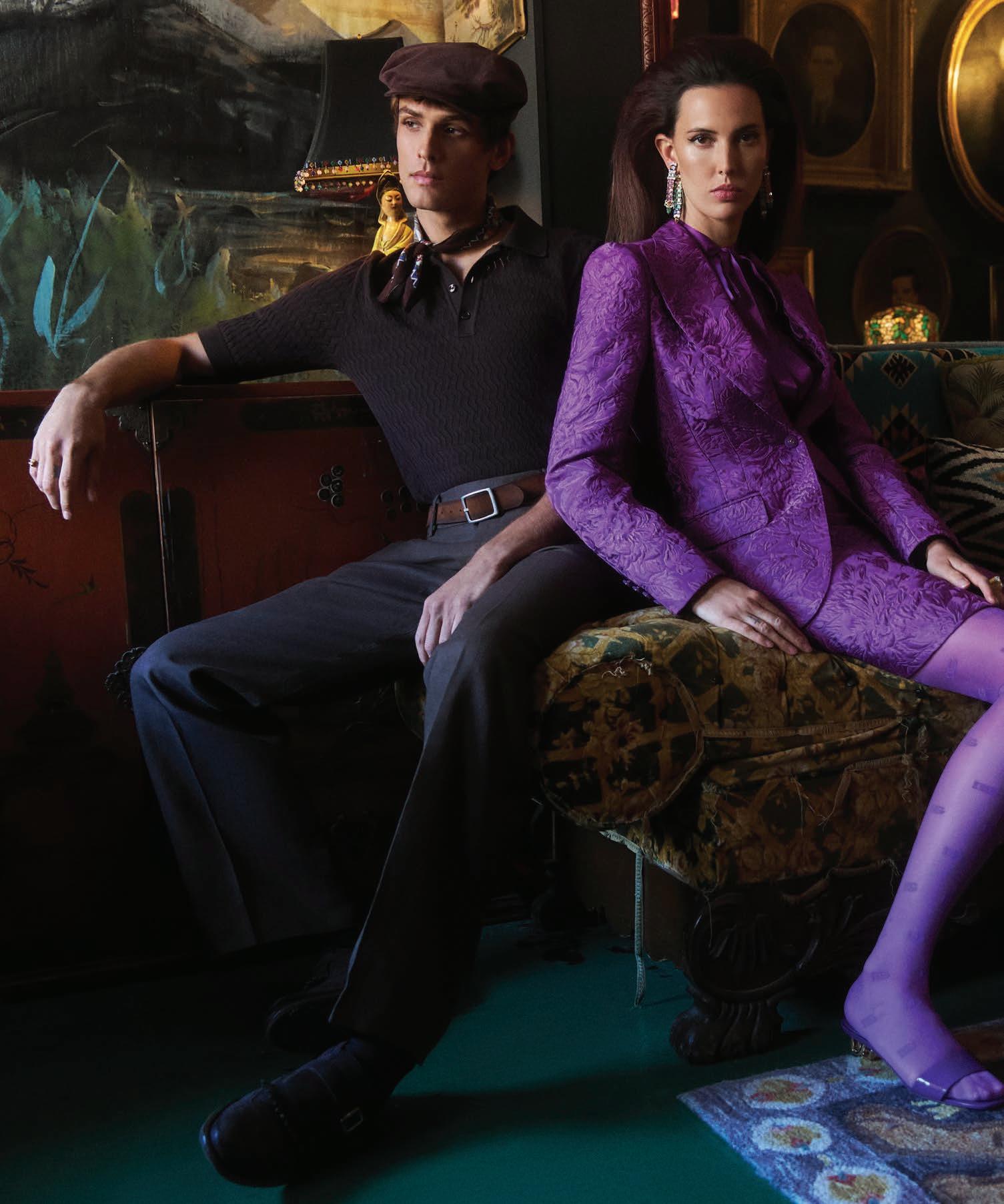
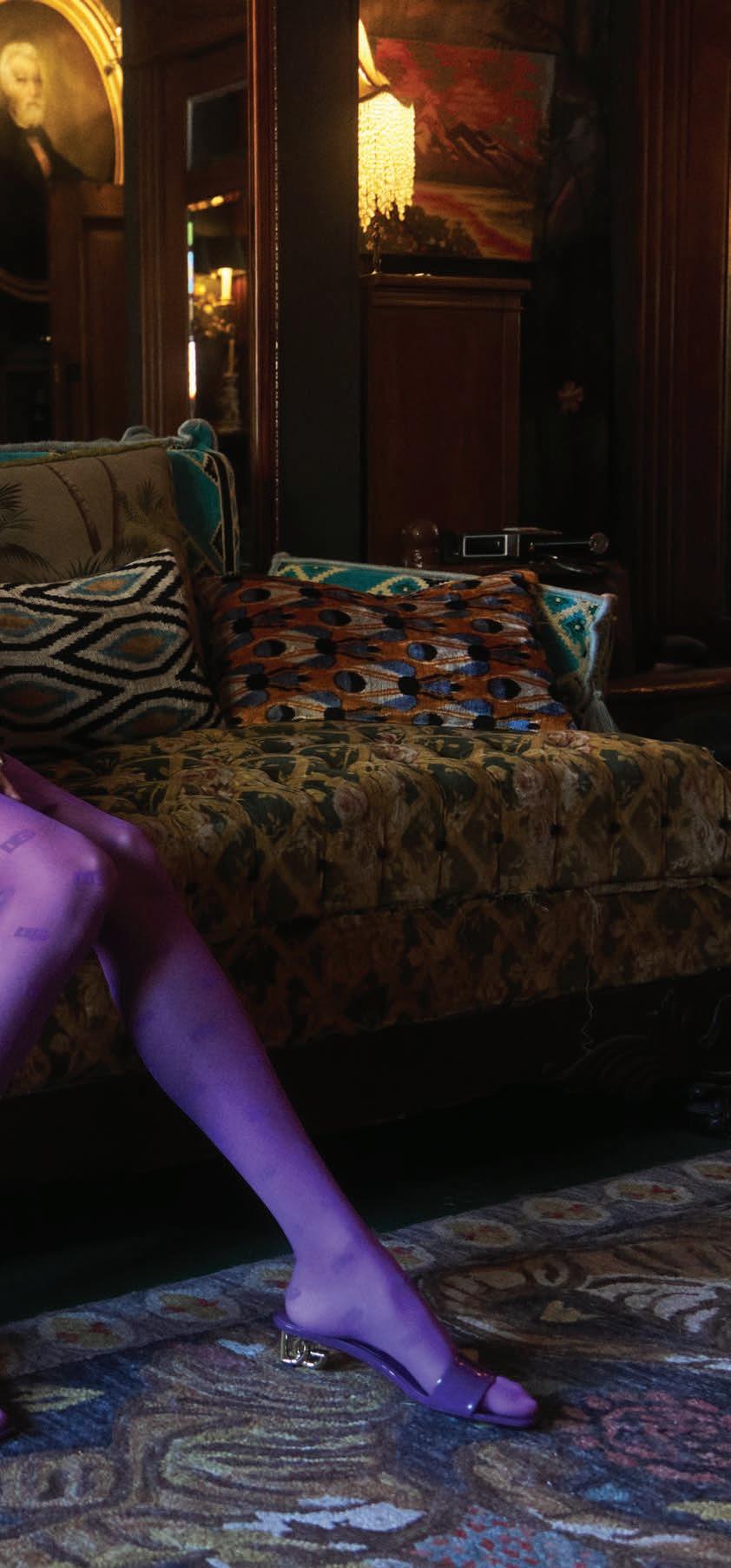
WEEKEND A CHELSEA
PHOTOGRAPHY BY DEAN ISIDRO STYLING BY CHRISTOPHER CAMPBELL HAIR BY RIAD AZAR MAKEUP BY MACY DOYLE MODELS RUBY ALDRIDGE AND CONRAD SOLAKA
Shot on location in New York City’s Chelsea neighborhood at Hotel Chelsea, Fellini Coffee, and Chelsea Florist.
On him:
DOLCE & GABBANA shirt ($1,595), pants ($975), and hat ($355); dolcegabbana.com
CHURCH’S shoes, $1,370; church-footwear.com
On her:
DOLCE & GABBANA blazer ($3,795), skirt ($1,295), top, tights, and shoes, price upon request; dolcegabbana.com
DAVID WEBB ring ($33,400) and earrings (price upon request); davidwebb.com
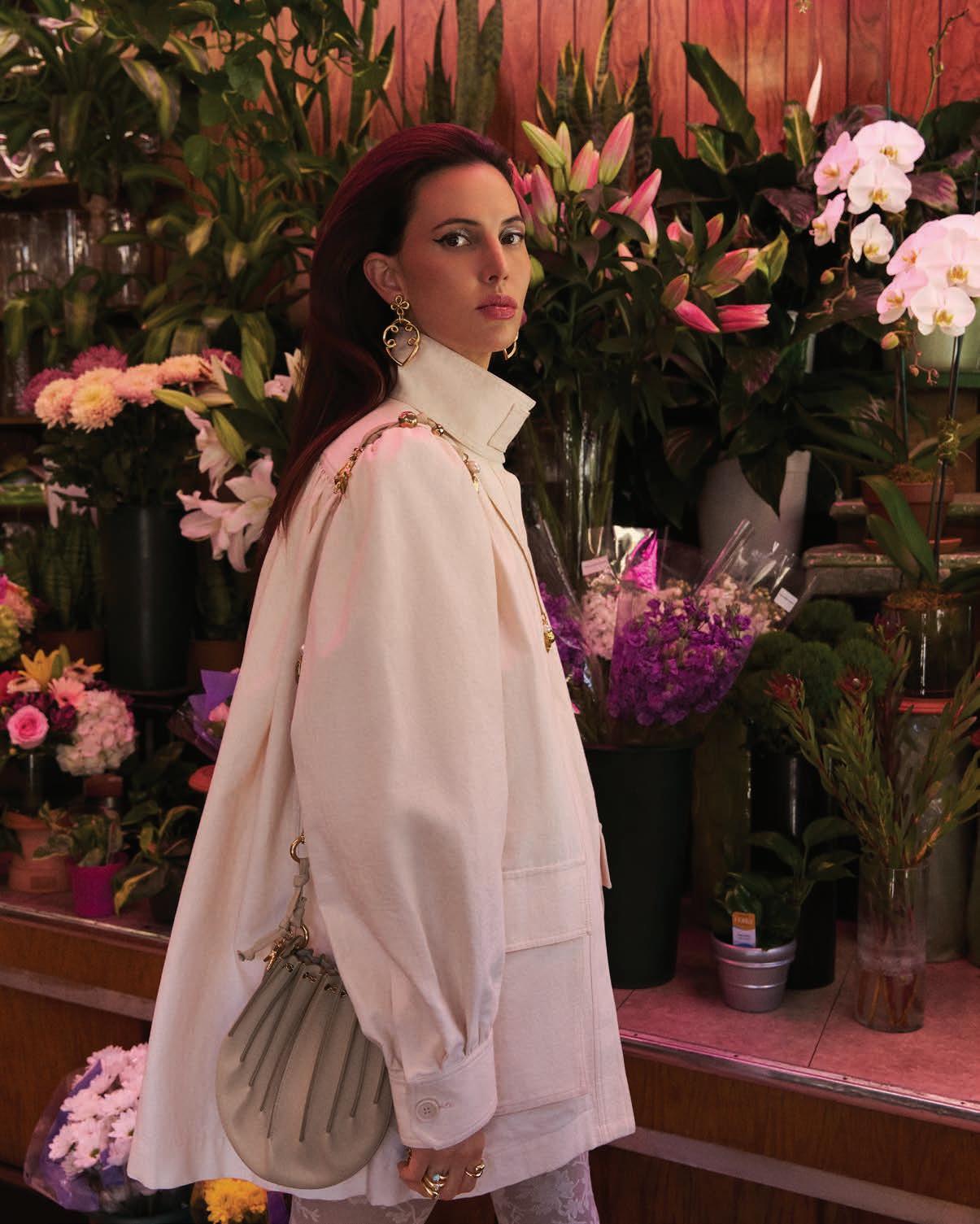
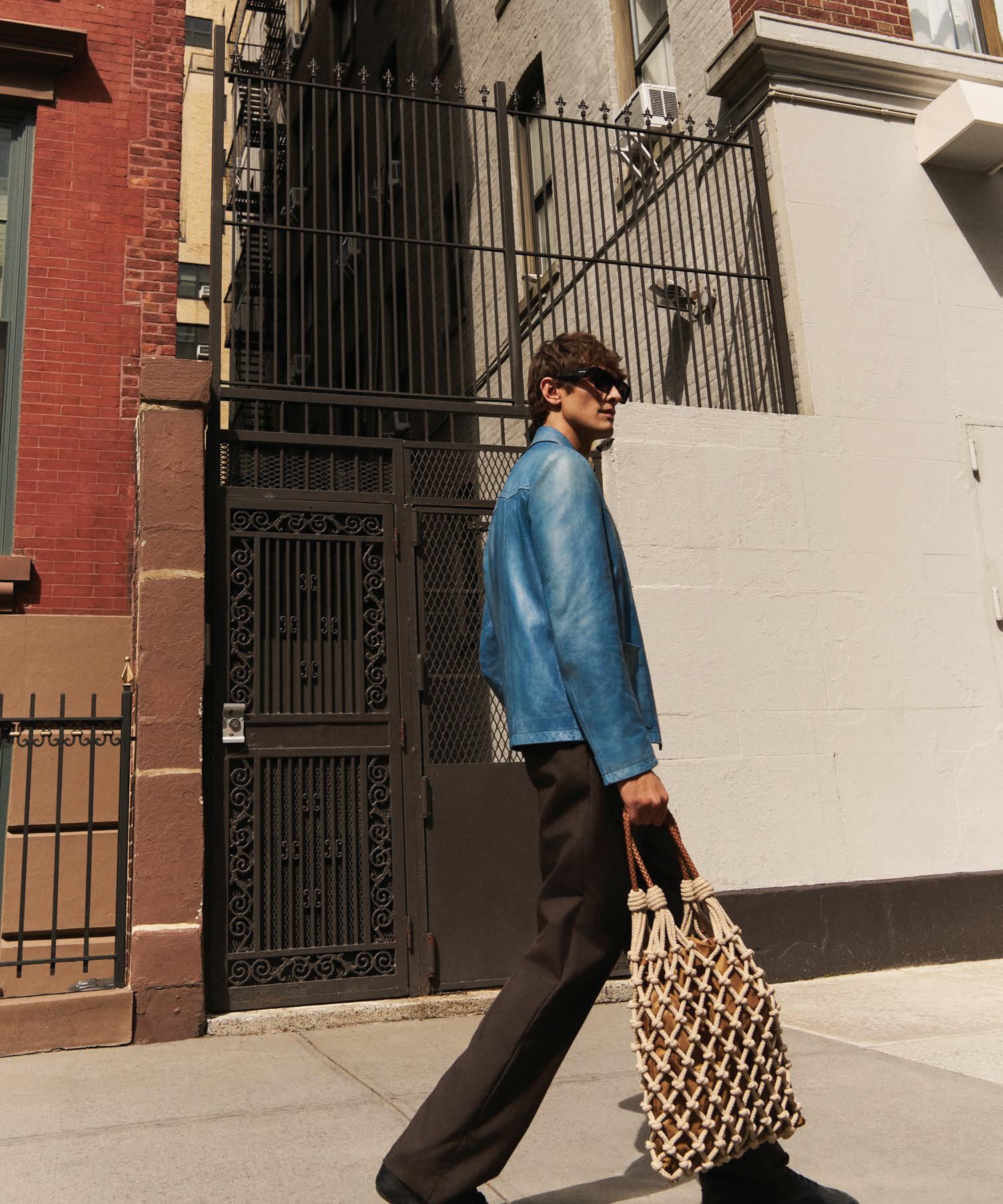
PRADA jacket ($6,500), trousers ($2,550), sneakers ($995), sunglasses, ($505), and bag ($2,100); prada.com
CASABLANCA jacket ($942) and pants ($1,225); casablancaparis.com
TODD SNYDER shirt, $798; toddsnyder.com
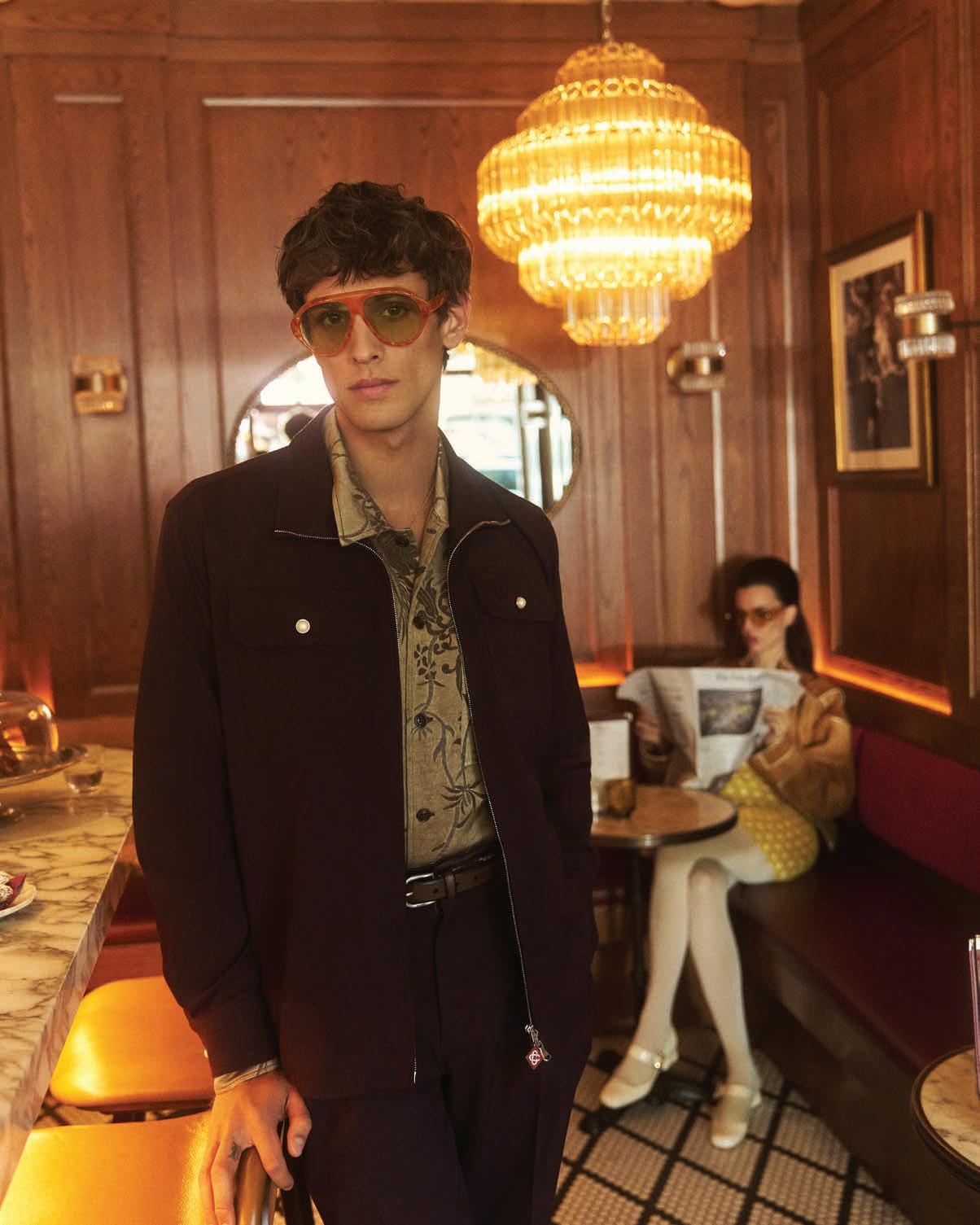
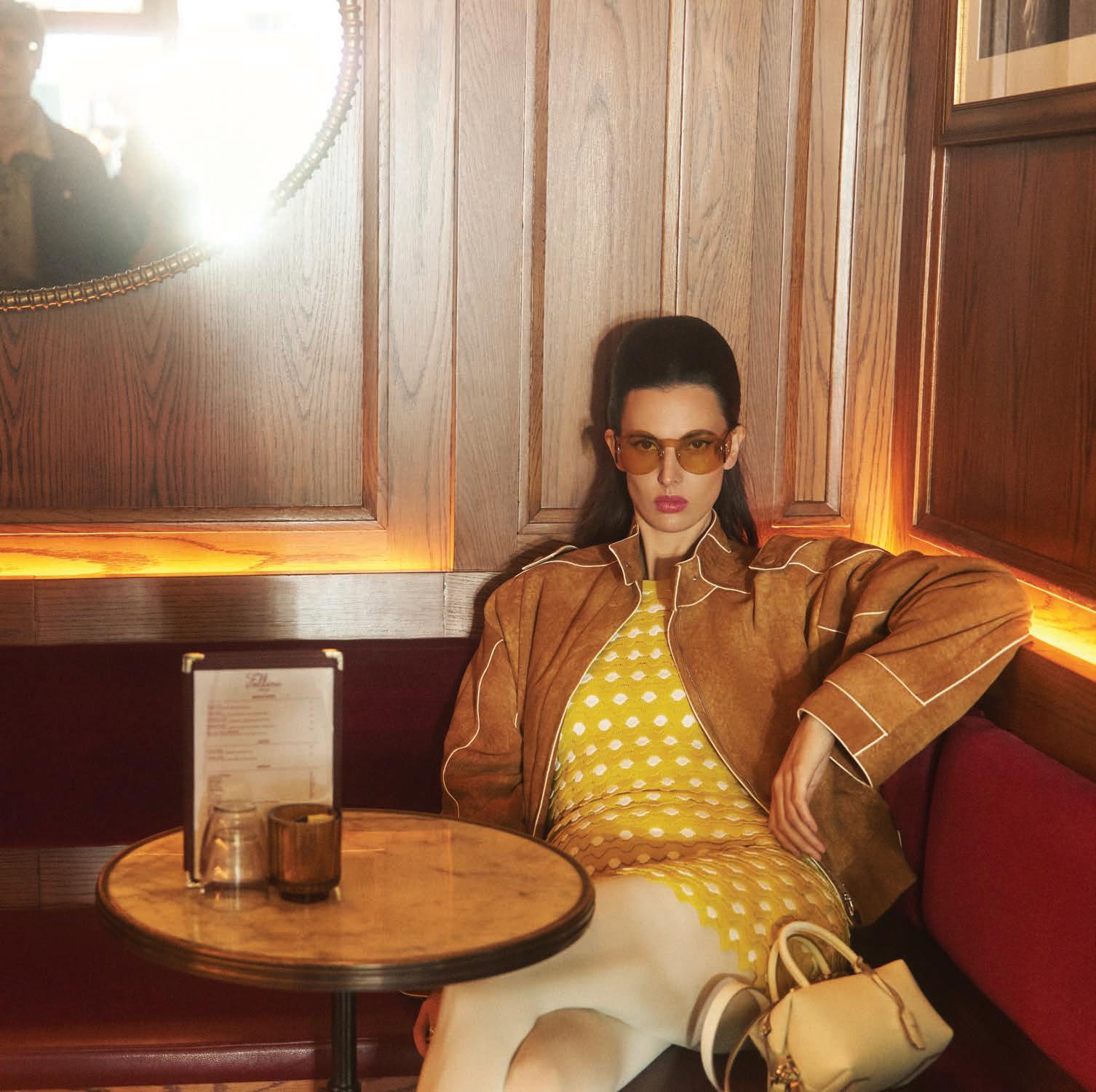
TORY BURCH jacket, $2,898; toryburch.com
LOEWE top ($1,950), skirt ($1,990), and sunglasses ($470); loewe.com
ROGER VIVIER shoes, $1,550; rogervivier.com
MAX MARA bag, $1,625; us.maxmara.com
LORO PIANA coat ($6,200), jacket ($3,890), and skirt ($2,190); us.loropiana.com
DAVID WEBB necklace, $98,000; davidwebb.com


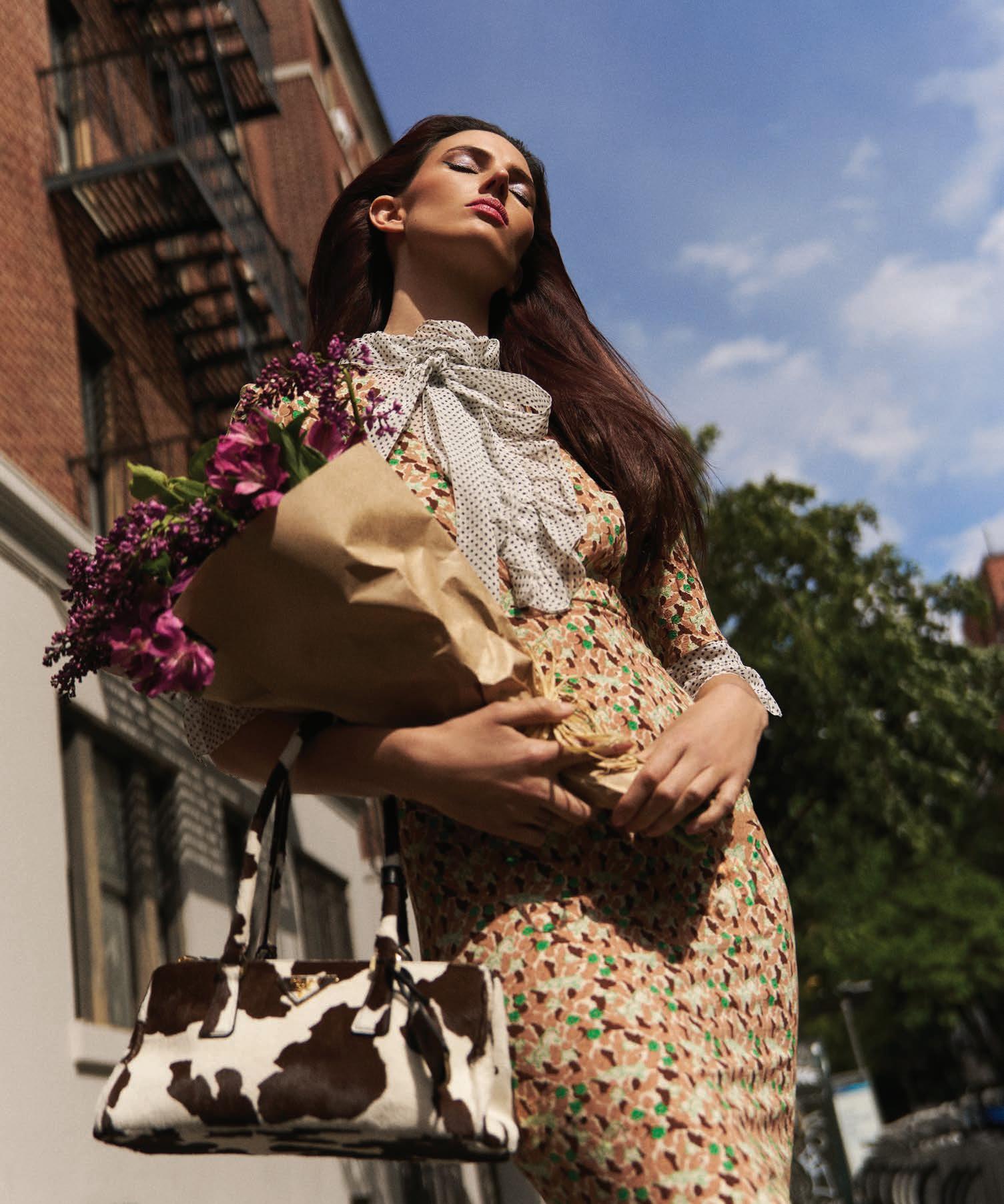

MIU MIU top ($2,650), skirt ($4,400), and chain belt necklace ($1,490); miumiu.com
ROGER VIVIER shoes, $975; rogervivier.com
DAVID WEBB ring, $33,400; davidwebb.com
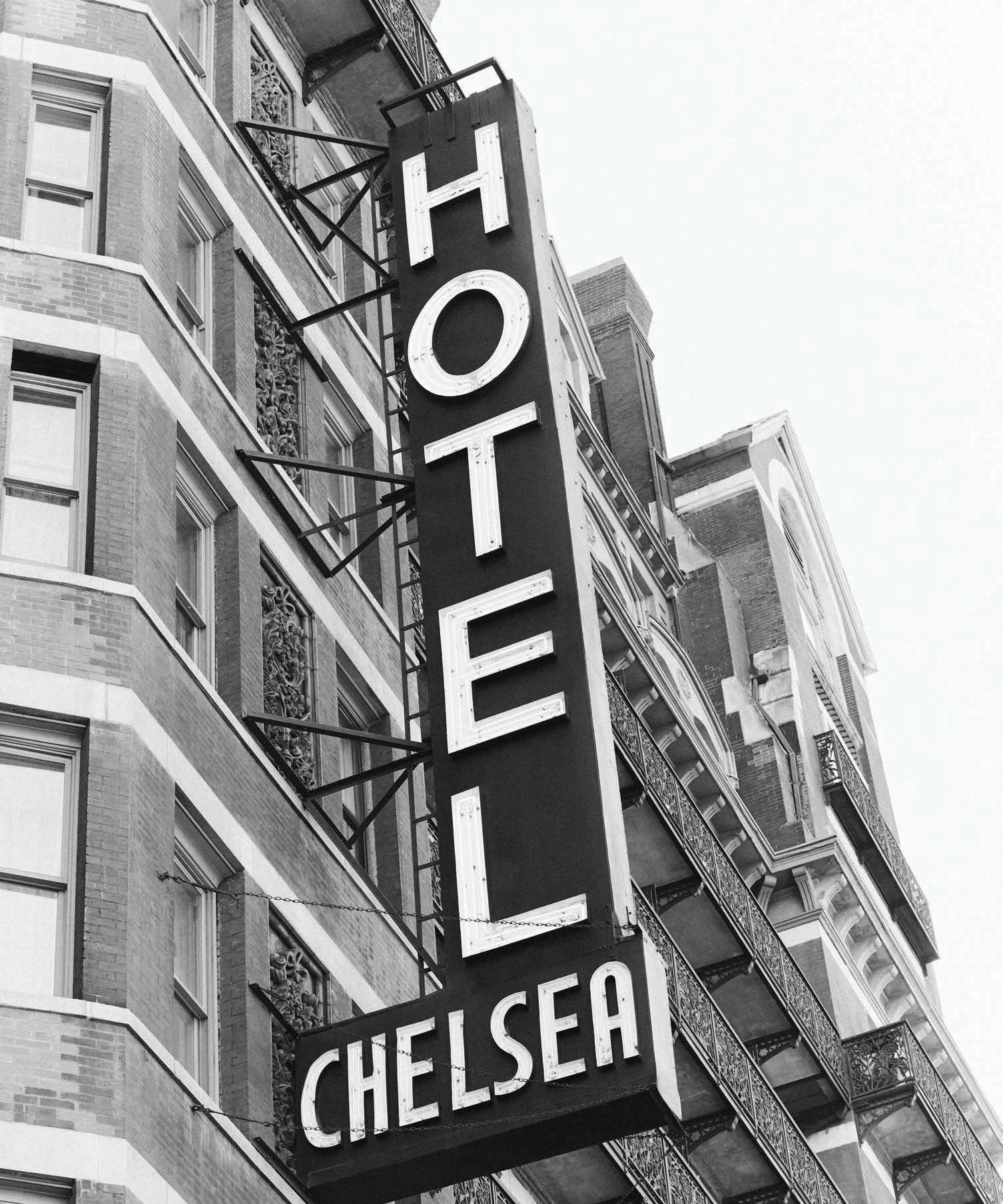
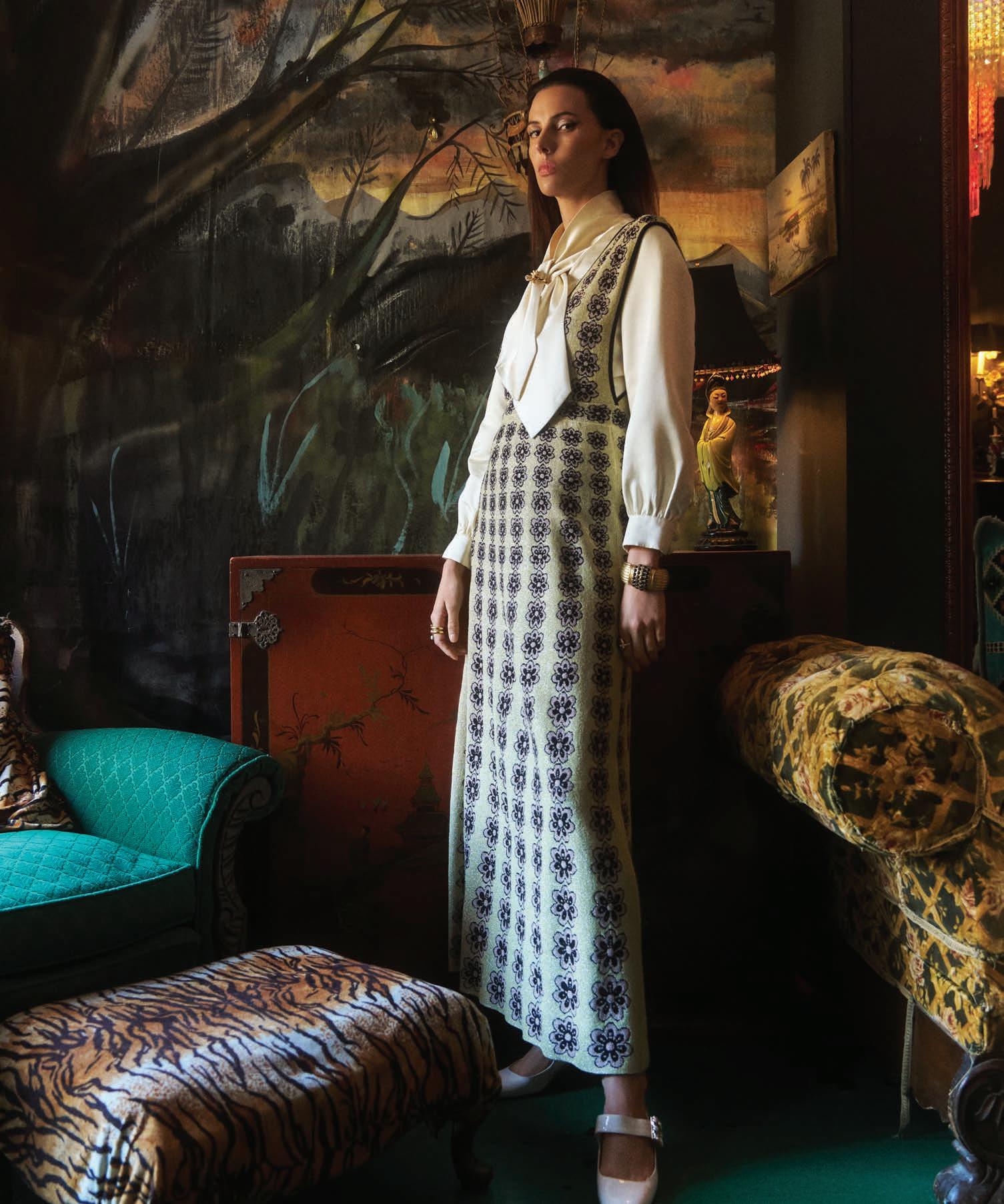
LA DOUBLEJ dress, $1,050; ladoublej.com
UPPER EAST VINTAGE top ($425) and bracelet ($225); uppereastvintagenyc.com
ROGER VIVIER shoes ($1,550) and ring ($625); rogervivier.com
DAVID WEBB ring, $10,100; davidwebb.com

UPPER EAST VINTAGE dress ($575), necklace ($145), and bracelet ($225); uppereastvintagenyc.com
DAVID WEBB earrings ($53,800), green ring ($17,800), blue ring ($10,100), and purple ring ($33,400); davidwebb.com

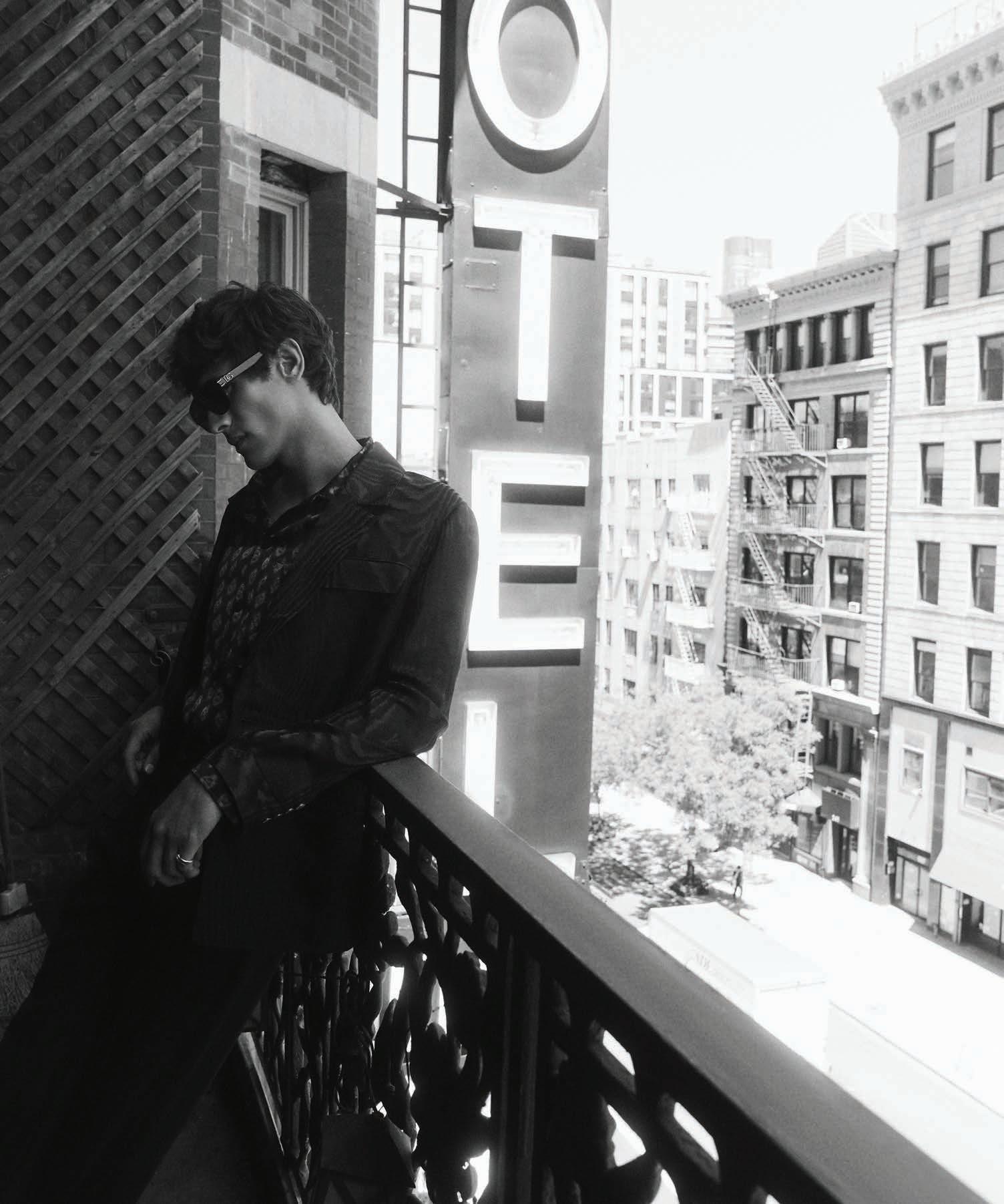
LOUIS VUITTON jacket ($3,250) and pants ($1,170); louisvuitton.com
TODD SNYDER shirt, $398; toddsnyder.com
DOLCE & GABBANA sunglasses, price upon request; dolcegabbana.com

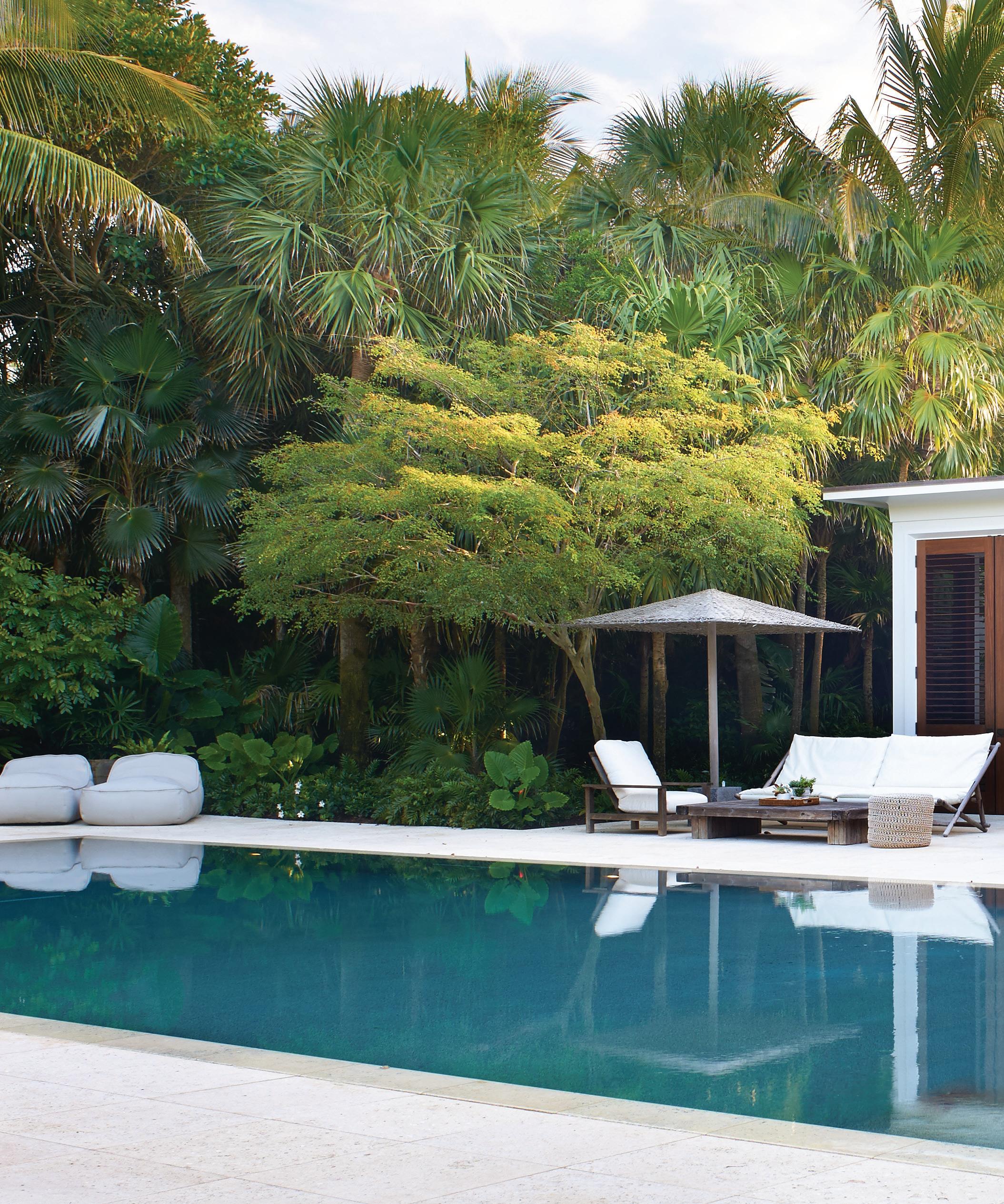
Backyard Sanctuary
Six standout pool houses from Connecticut to California.
BY JORGE S. ARANGO
Courtesy Kligerman Architecture & Design/William Waldron

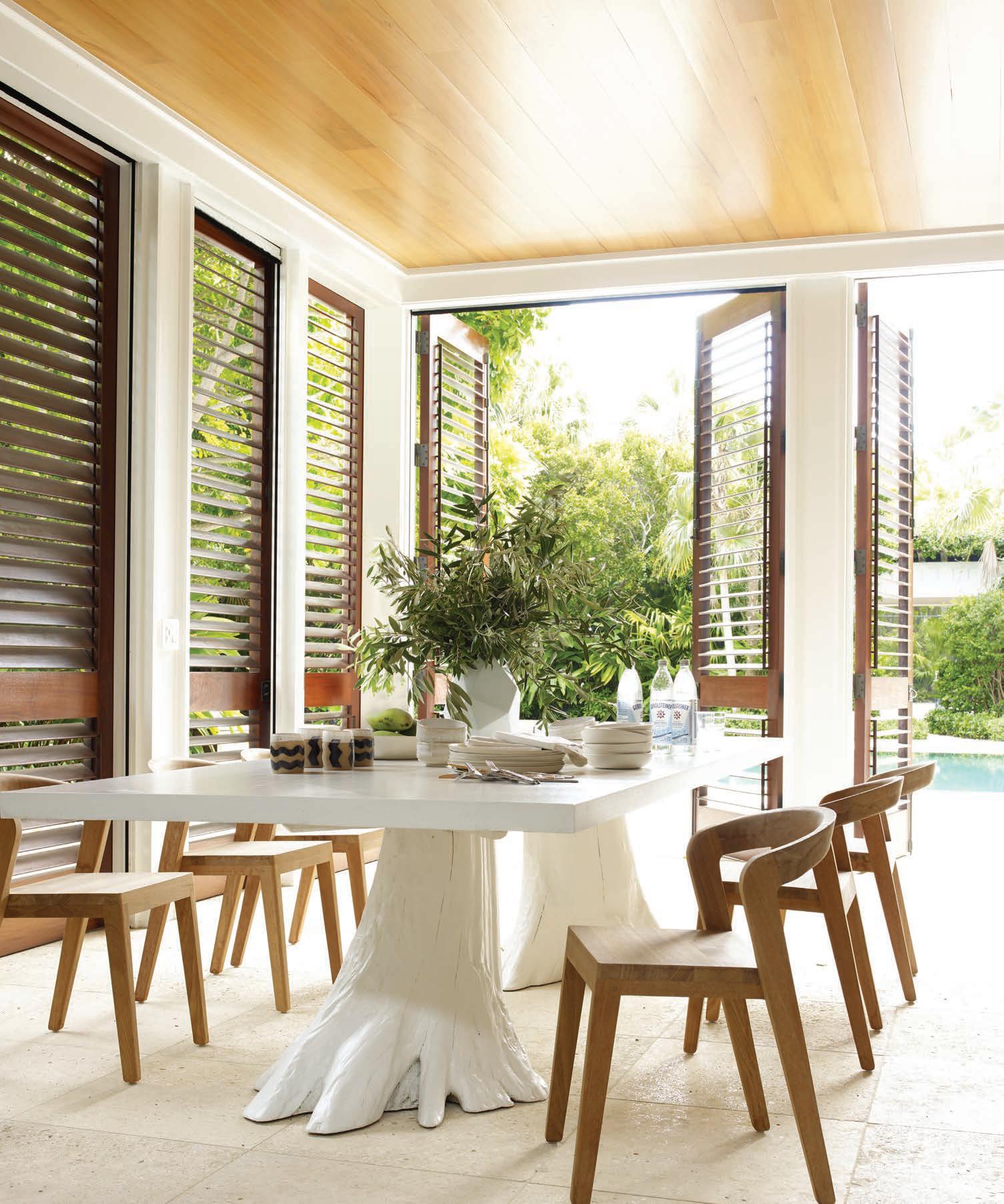
PALM BEACH COUNTY, FLORIDA
Square Feet 600
Architecture Kligerman Architecture & Design, kligermanad.com
Interior Design Terri Ricci Interiors, terriricci.com
Landscape Design Aquaterra Design Group
Special Features Mahogany louver that converts the entire space into a pavilion, coral stone floors, mechanical drop screens
“It walks a line between pavilion and screened porch,” says Thomas A. Kligerman of this handsome pool house. “It’s not a porch to the guesthouse because it stands 18 inches away from it. It’s freestanding, so we could do louvers all around. What I like about it, in fact, is that all four sides are the same; there’s no back of the house.” Wraparound louvers make the structure highly flexible. Doors can be opened to serve as a pavilion, drop screens can
keep mosquitoes out in the evenings, and it can be shuttered completely for inclement weather or partially opened and partially screened. The interior includes a lounge area and dining area. Kligerman glazed the cypress ceiling overhead to keep it from turning gray, but says “it’s also a gentle nod to nautical interiors,” which are highly varnished. This is especially welcome at night during candlelit dinners, since it reflects the light.
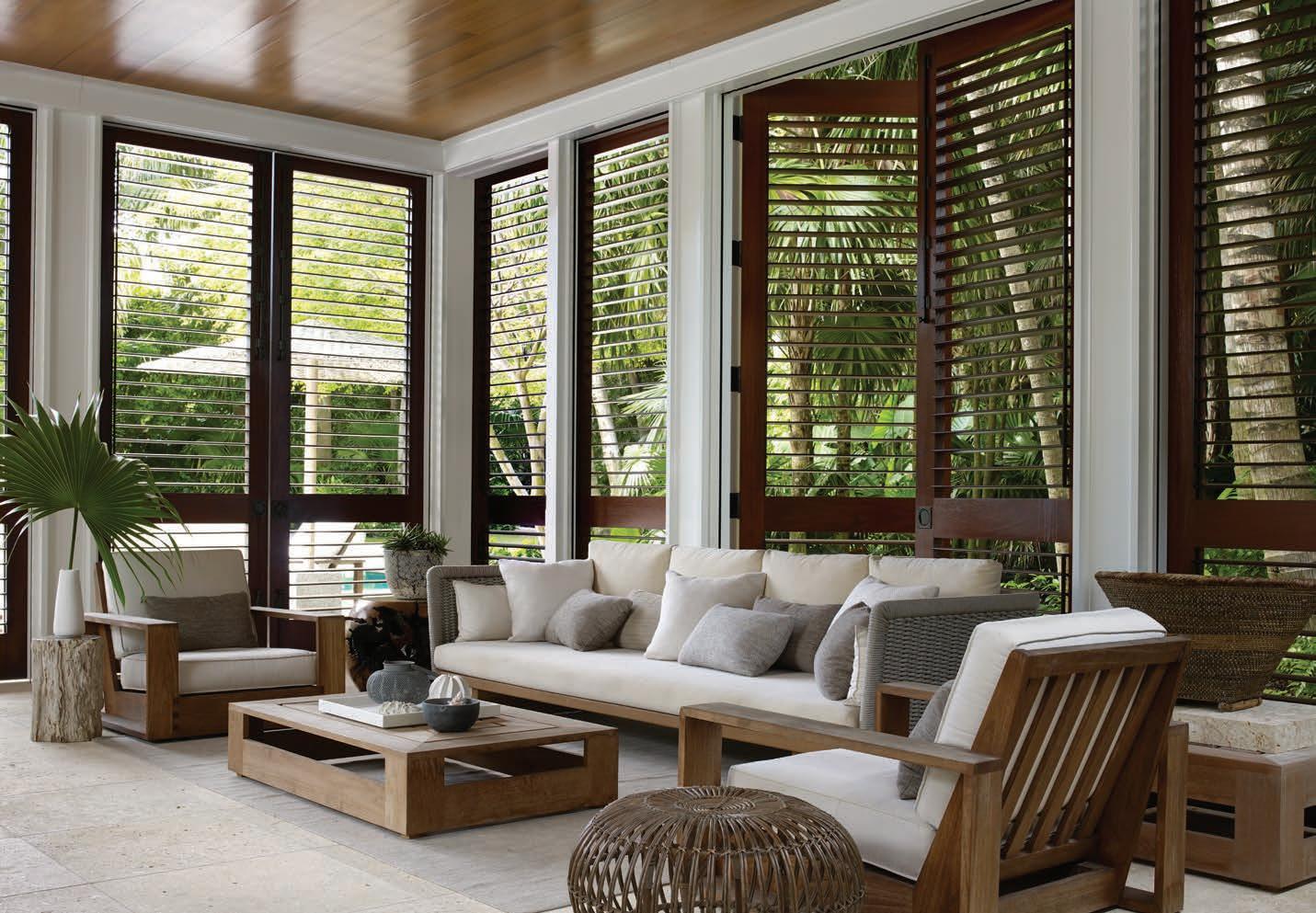
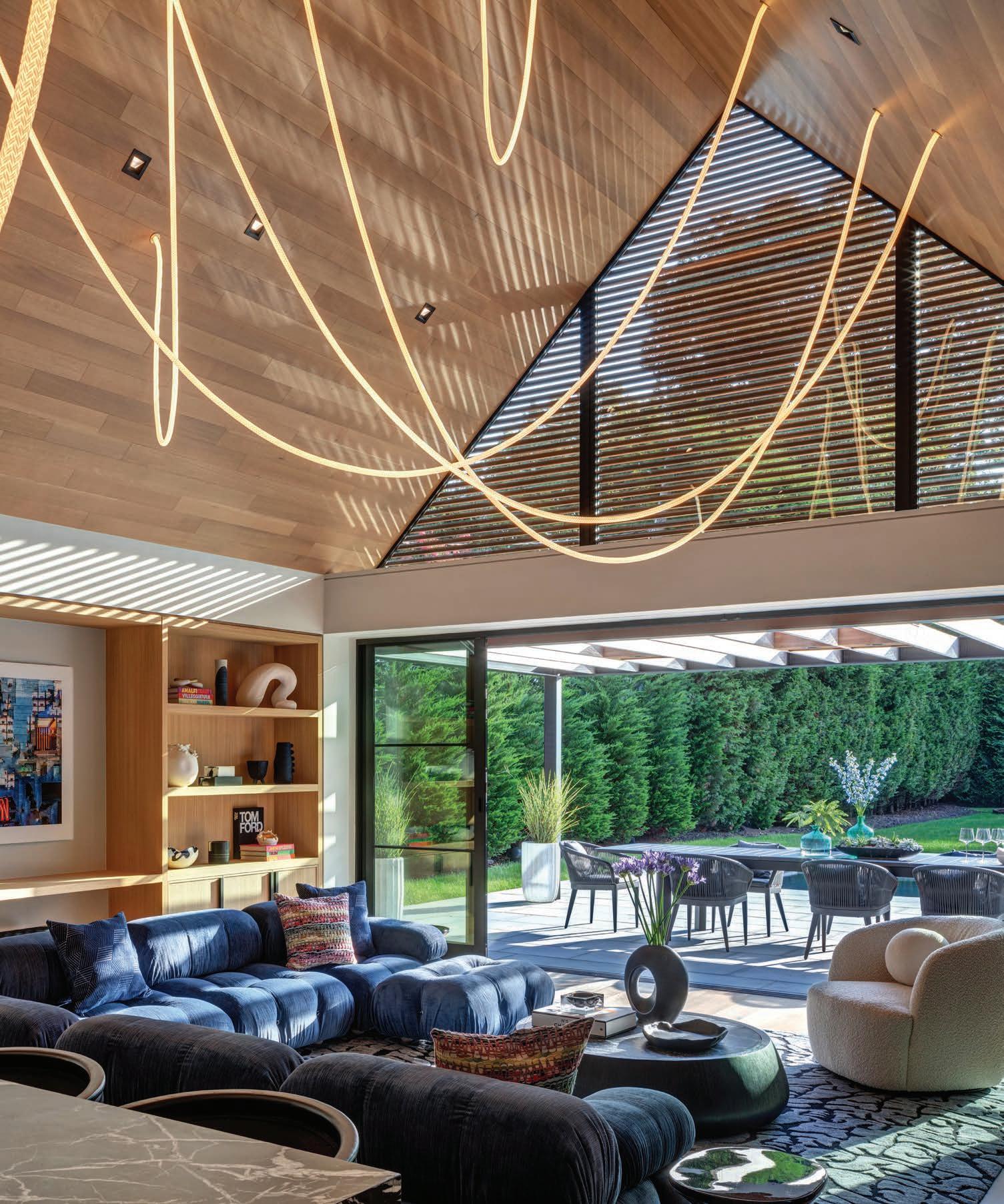
GARDEN CITY, NEW
YORK
Square Feet 3,200
Hardscape and Pool Design
Smiros & Smiros Architects, smiros.com
Interior Design Collaboration between the homeowner and Smiros & Smiros
Special Features State-of-theart fitness room, golf simulator, downstairs guest quarters, outdoor dining pergola, lounge
“There is always room for coincidence,” said German artist and musician Alva Noto. What coincided in the design process for this Long Island couple was an unexpected meeting. After purchasing a one-acre property next to their existing home, they began their search for architects to design a pool house and gym.
Smiros & Smiros popped up on the wife’s Instagram feed and the firm’s partner, Jason McHugh, turned out to be her husband’s high school classmate. Says McHugh of the project, “This is what I call ‘Hamptons Modernism.’ It adheres to local materials and forms but strips
them of any ornament and creates spaces with bigger apertures and a stronger indooroutdoor relationship.” A minimal material palette (cedar roof and shingles, ipe siding and lattice, Fleetwood glass windows, and copper) shelters oak interiors accented with exotic stones. The main floor accommodates a gym and lounge, which is dominated by a B&B Italia sectional and dramatic ropelight fixtures “that fill the volume in a way that isn’t a traditional chandelier or pendant.” Downstairs is a children’s lounge, golf simulator, and guest quarters.
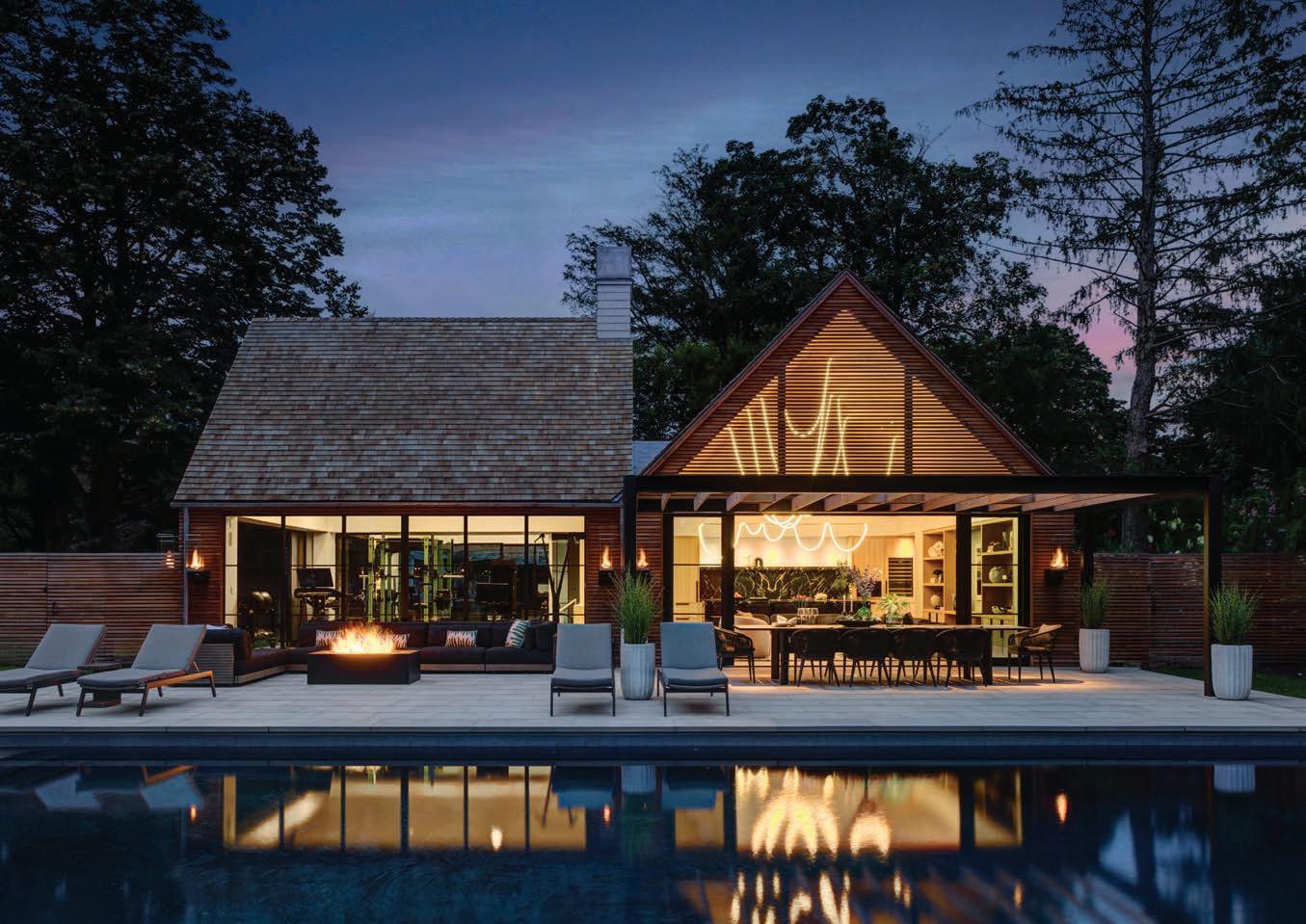
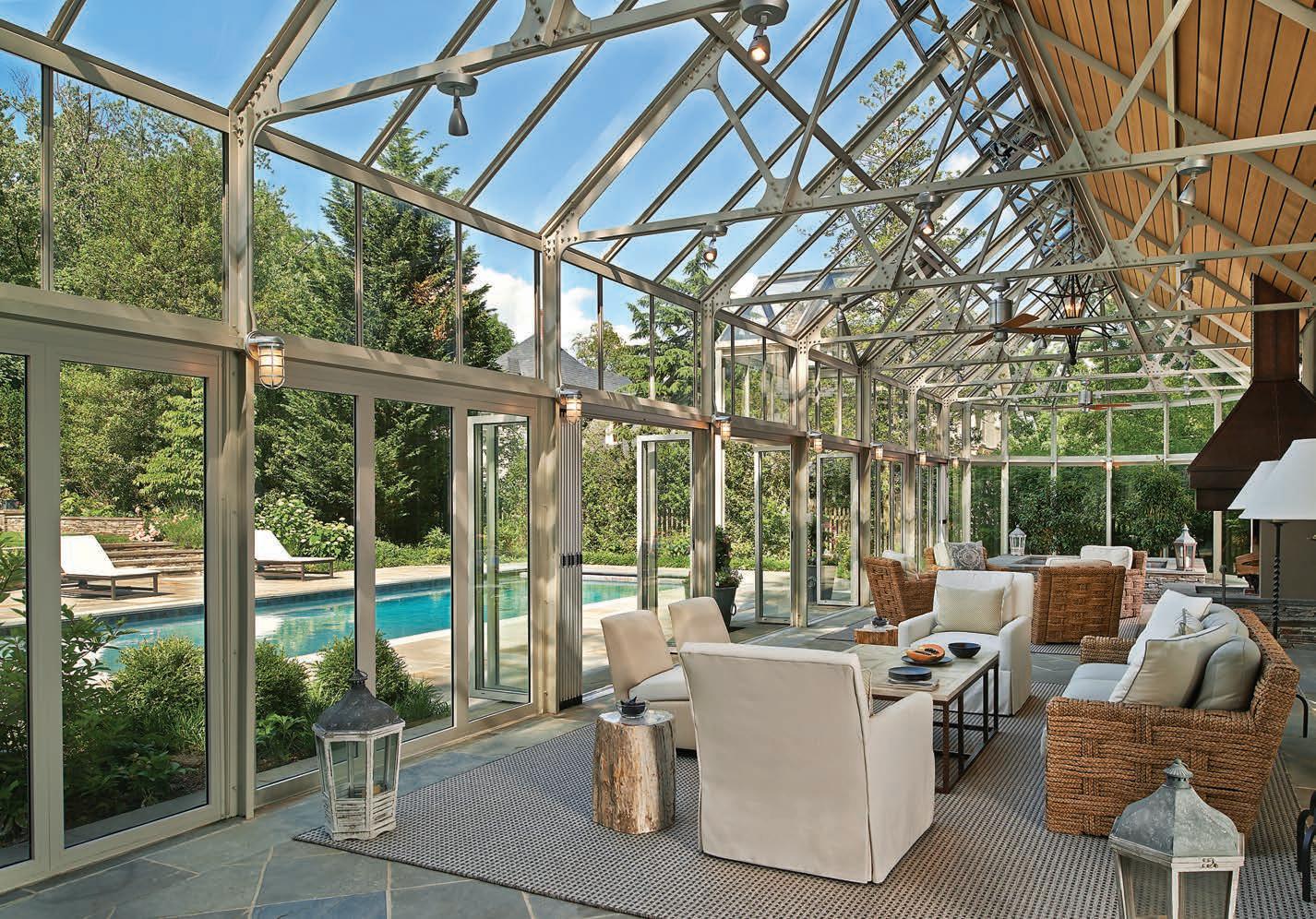
BETHESDA, MARYLAND
Square Feet 700
Architecture Barnes Vanze Architects, barnesvanze.com
Interior Design Andrew Law Interior Design, andrewlaw.net
Landscape Design DCA Landscape Architects, 202.337.1160
Special Features Renovated greenhouse, motorized arms to open roof, heated flooring, hot tub
This Chevy Chase neighborhood property included a 1960s greenhouse structure enclosing a lap pool.
“Rather than chuck it out and build something new,” says Barnes Vanze partner Wayne Adams, “we decided to repurpose it as a pool house. It was mainly for the family’s teenager to hang out in, though the parents use it too.” Adams filled in the pool, constructing a bigger pool outside, and installed radiant heat floors inside the structure. The greenhouse was
structurally sound, but, Adams says, “We sandblasted the frame, saved all the rivets, and restored the metal.” A new center gable vent “tells you where to come in” and, to mitigate the intense heat of a greenhouse, Adams swathed the back half of the pitched roof and part of the south-facing wall with teak as a sunshade. A copper fireplace now anchors the interior lounge spaces; outside, find a hot tub and two lemon trees at one end and a small kitchenbar at the other.
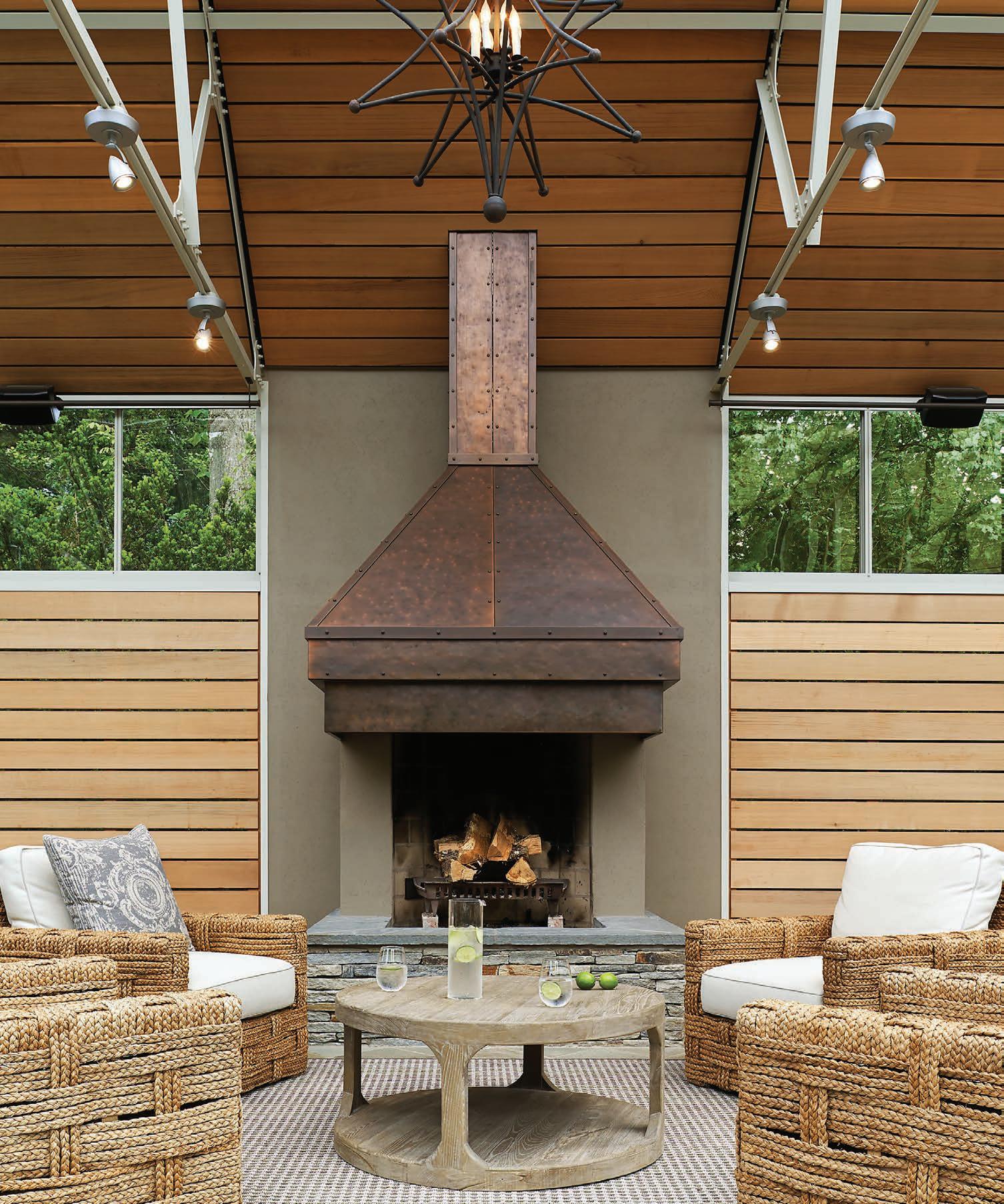
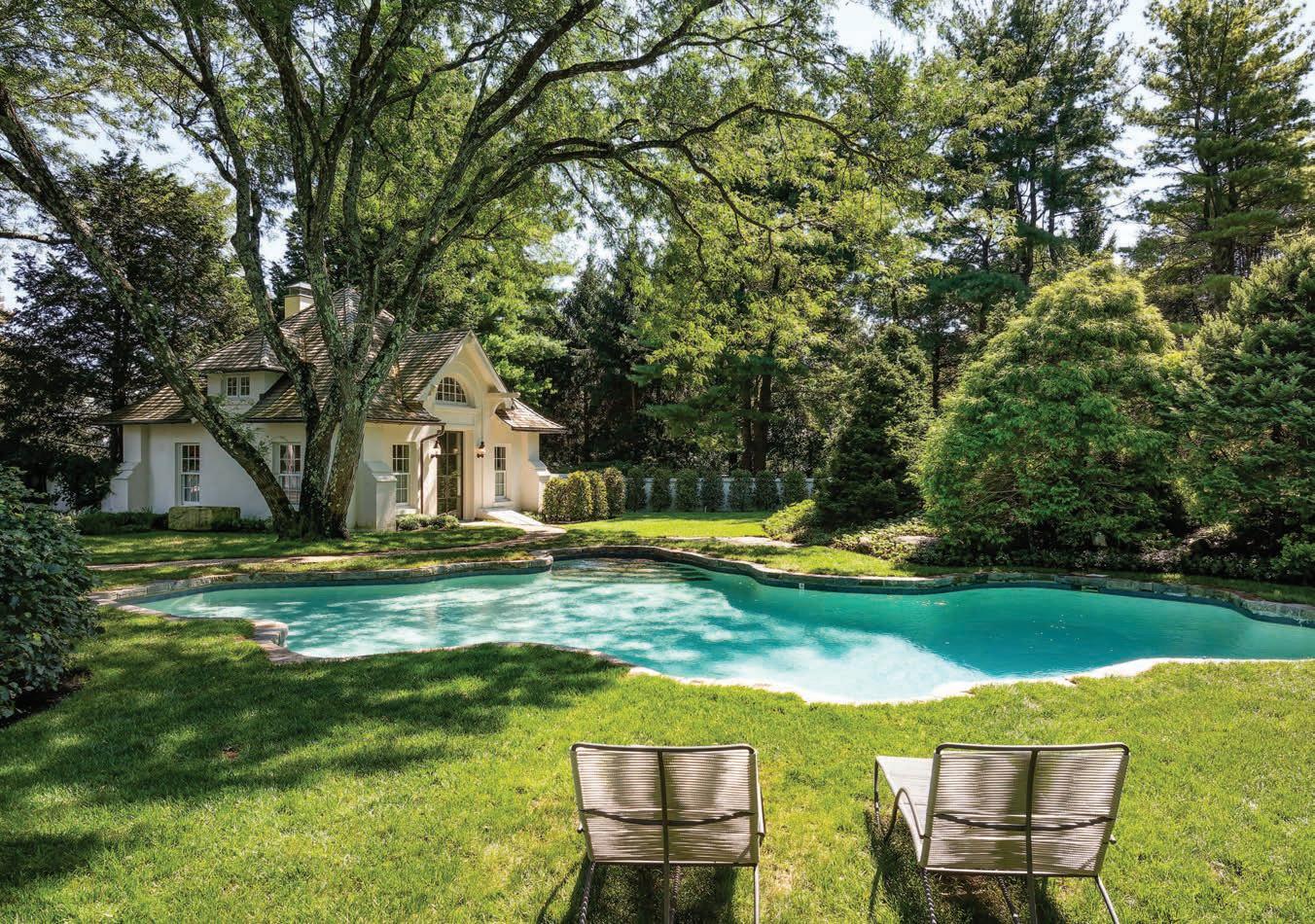
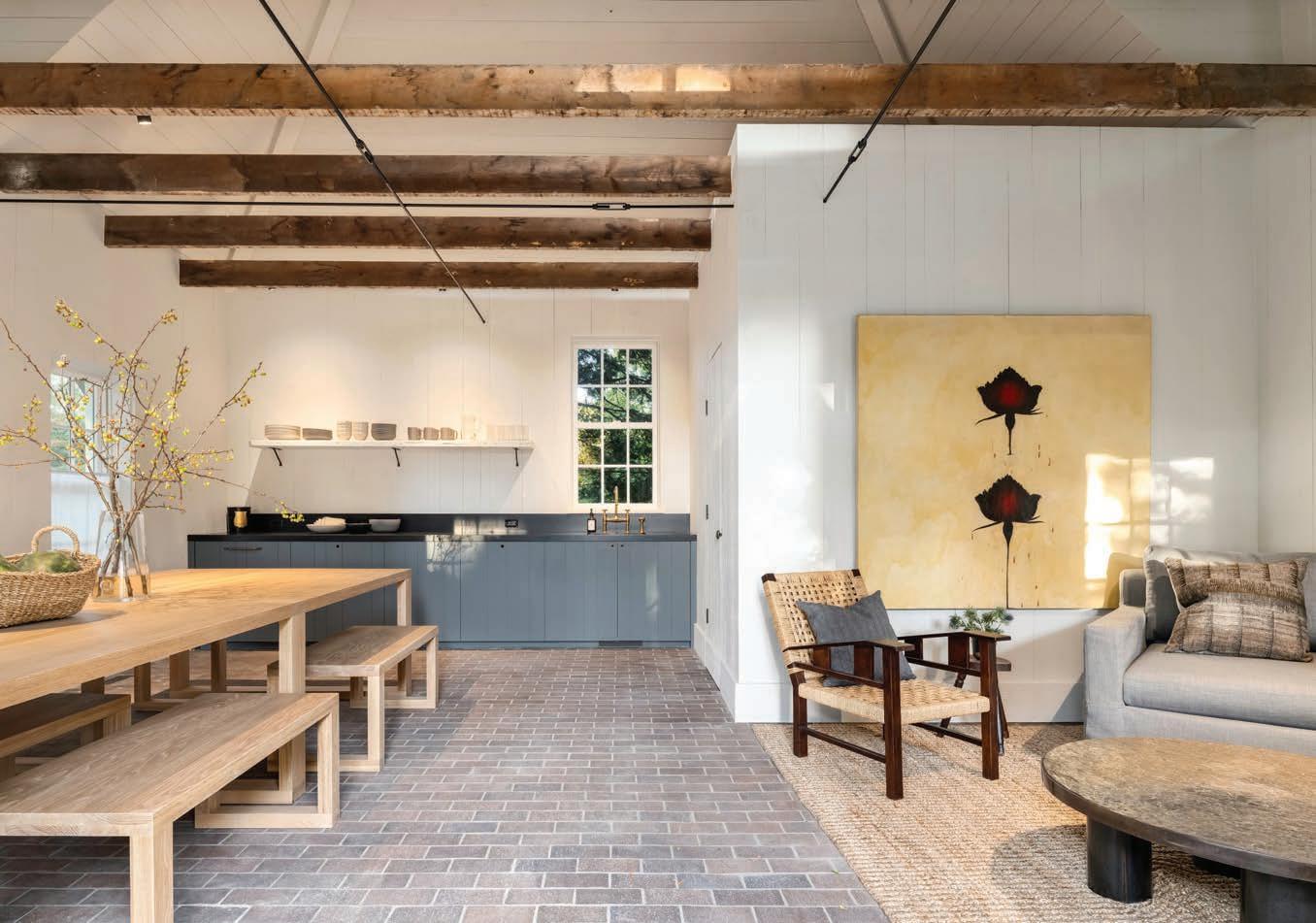
GREENWICH, CONNECTICUT
Square Feet 670
Architecture and Interior Design
Marmol Radziner, marmol-radziner.com
Landscape Design Devore Associates
Landscape Architects, devoreassoc.com
Special Features Custom dining table for crowds, Absolute Black granite bar top, reclaimed barn beams
This property is part of what was once a 60-acre estate, its pond-like pool likely added in the 1920s. When the current owner decided to transform the adjacent potting shed into a pool house, says Marmol Radziner’s studio director of interiors, Ashley Nath, “He wanted to pay homage to the shed and its connection to the main house.” The architecture, therefore, would remain the same and the design for the interior “was driven by a desire to have a raw materiality.” After gutting
and removing a drop ceiling to expose the gable, iron rods were added to secure the structure. Reclaimed beams below them and whitewashed nickel board paneling added rusticity. The reconfigured floor plan accommodates a granite-topped bar with concealed ice maker and refrigerator, a large table for buffet-style entertaining, a lounge area, and a small bath. “Furniture was picked for durability,” says Nath: washable slipcovered chairs and a rope chair to counterbalance their mass.
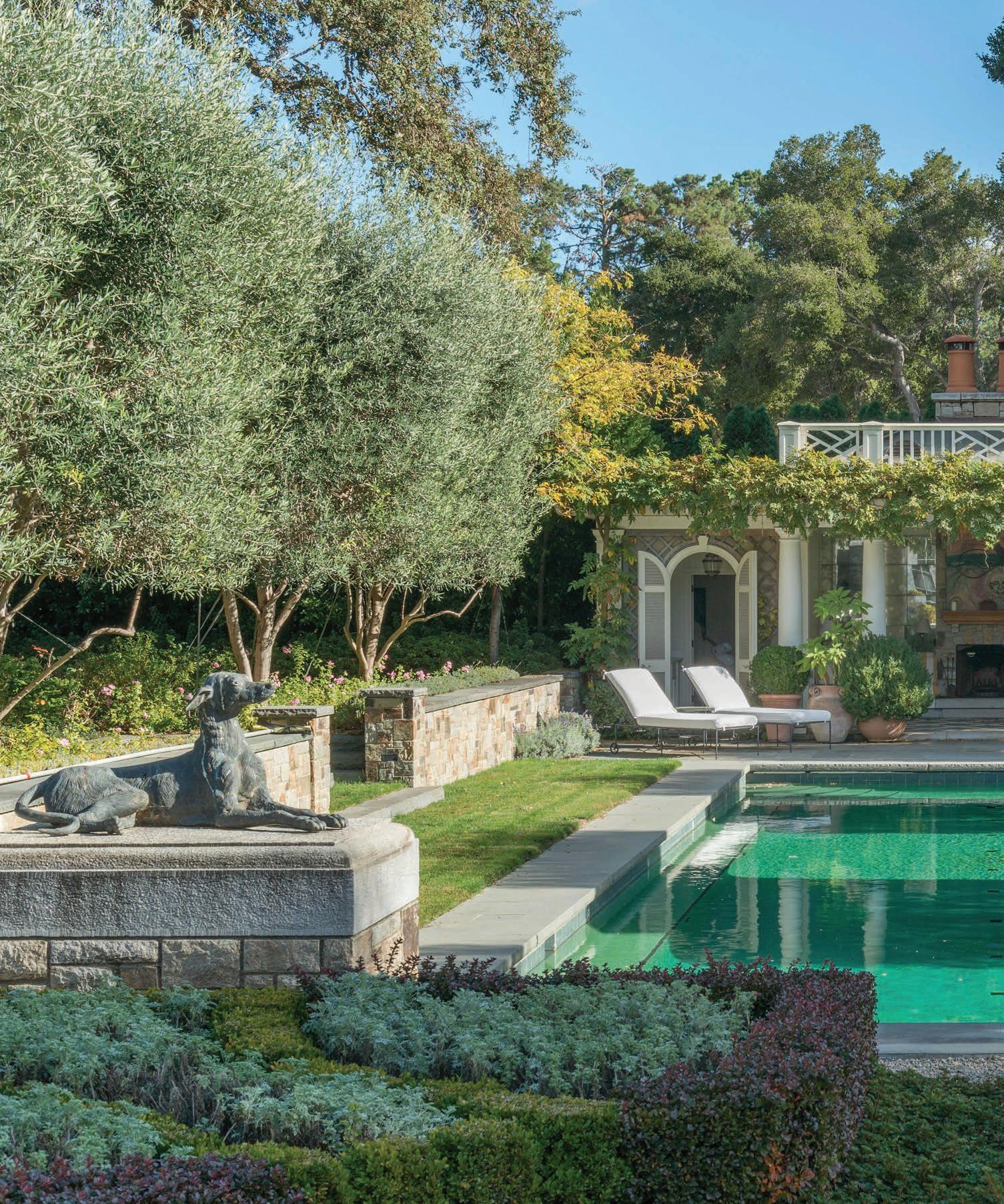
Courtesy Eric J. Smith Architect/Peter Margonelli
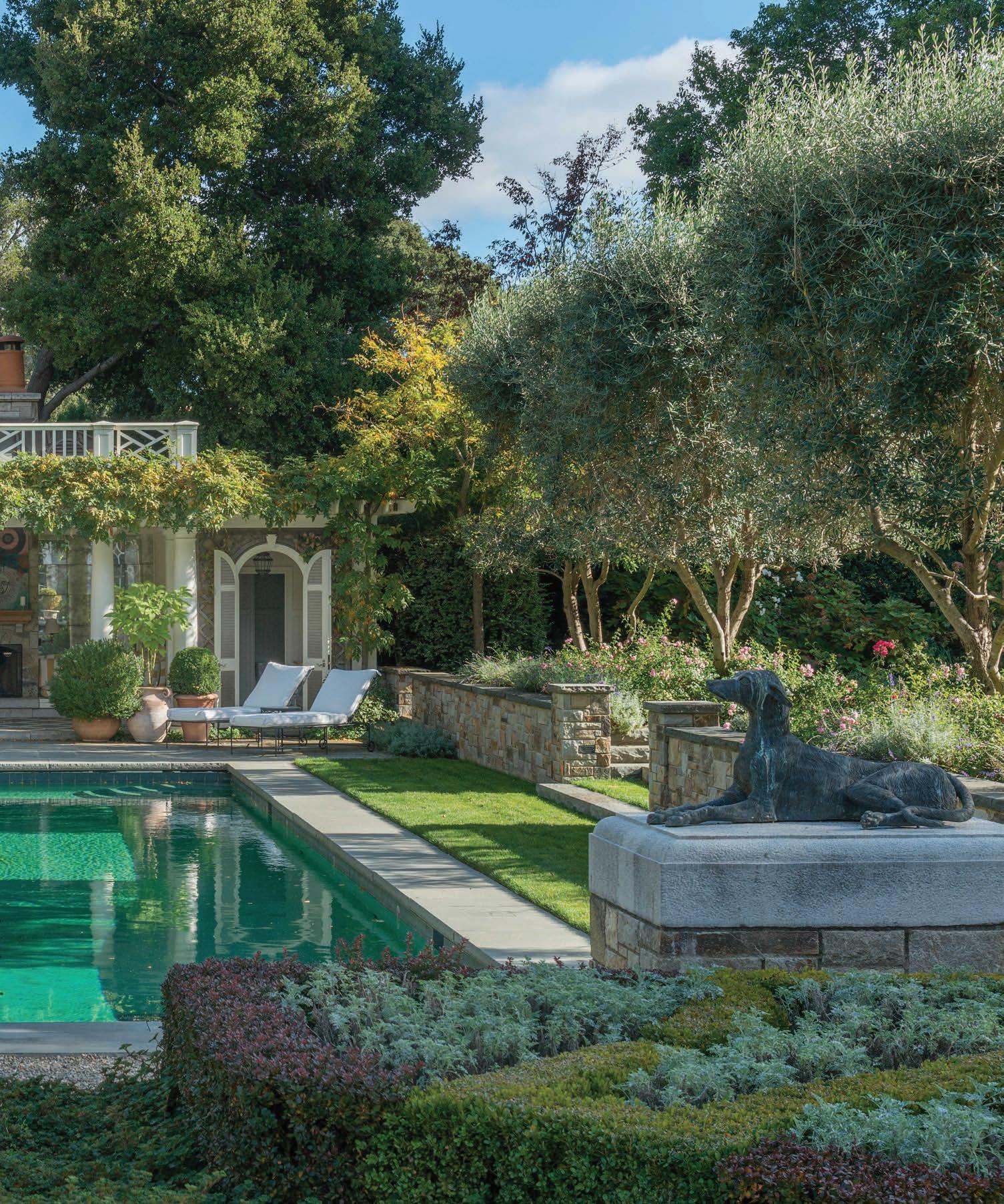
BAY AREA, CALIFORNIA
Square Feet 675
Architecture Eric J. Smith Architect, ericjsmitharchitect.com
Interior Design Collaboration between the homeowner and Smith
Landscape Design Peter Cummin of Cummin Associates
Special Features Antiqued mirror flanking the stone fireplace, industrial-style Woolen Mill fan, motorized screen that rolls down to keep loggia fabrics clean
“This project was all conceived at once,” explains Eric J. Smith of the stone Georgian he designed for a family of six with young children. From the home’s front door, through the living room, you can see across the pool to the pool house at the other end. “It’s like a kind of garden folly,” says Smith. Vines trained up Doric columns and lattices surrounding the doors connect the fanciful outbuilding to surrounding gardens. The rectangular building is stylistically harmonious with the main house, exuding classical symmetry, with the central loggia flanked by arched louver doors leading to a bath and changing room on one side and a kitchen and bar on the other. Though not exactly rustic, the cut stone fireplace anchoring the loggia is paired with antique mirrors on either side— “a nice counterpoint” that elevates the natural material and adds sophistication.
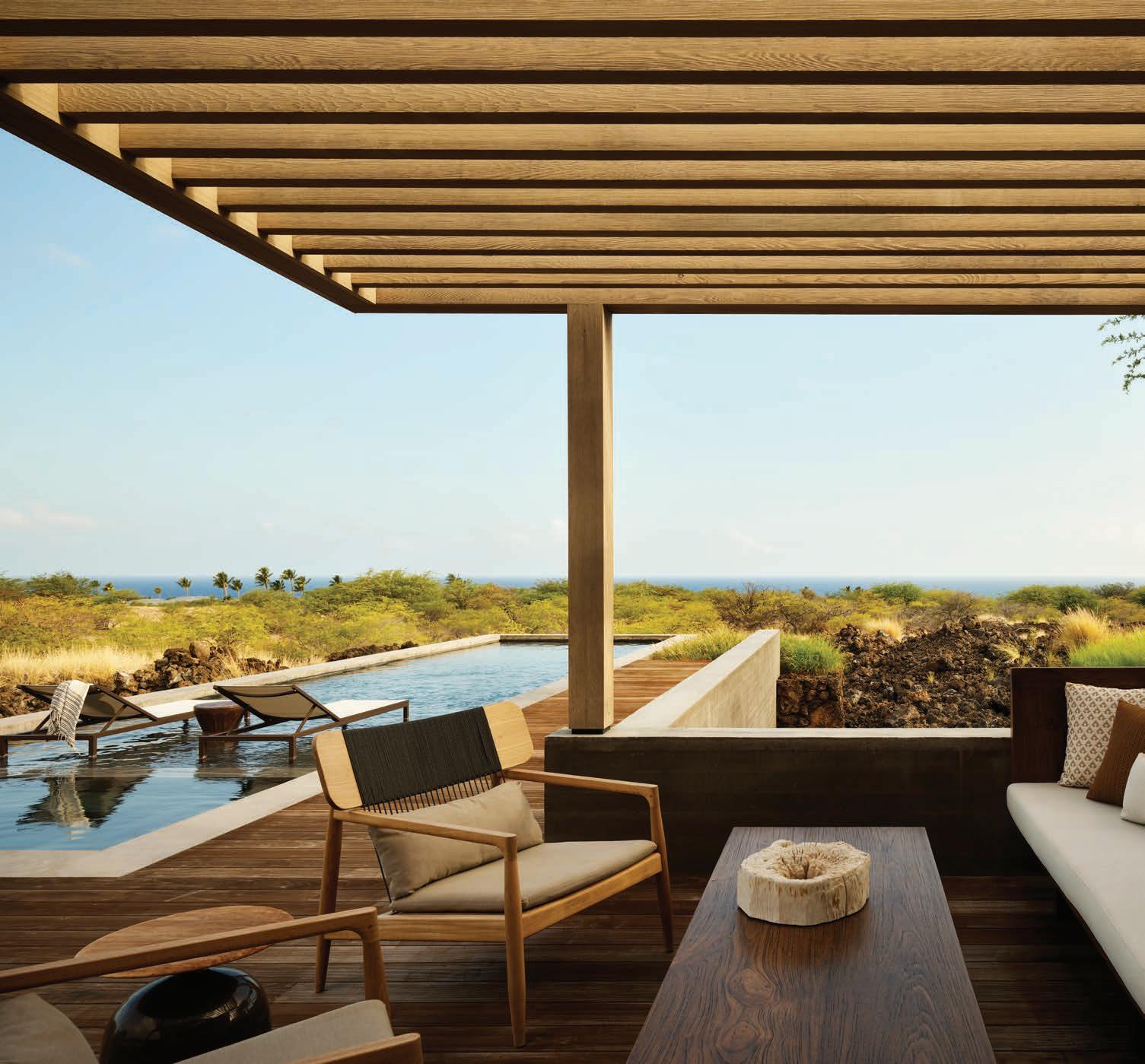

BIG ISLAND, HAWAII
Square Feet 312
Architecture Walker Warner, walkerwarner.com
Interior Design Philpotts Interiors, philpotts.net
Landscape Design David Y. Tamura Associates Inc., 808.935.3466
Special Features Ipe deck, Western cedar pergola, lounge area, bar and hightop with stools, board-formed concrete pool
“In Hawaii they divide the land into parcels that are long and narrow, one end toward the mountains; the other toward the ocean,” says Sharon Okada, project director at Walker Warner. The firm exploited this fact by situating the pool on a north-south axis, thus mirroring a natural phenomenon: “Water flows from the mountains to the ocean,” she says, “so it’s poetic in terms of its orientation.” It is just one way the project achieves complete
organic synchrony with the land. You walk up to the pool house—basically a pergola structure with lounging and bar area—via steps made from a kiawe tree (a kind of mesquite) that fell near the site. The decking around the pool and in the pool house is resilient ipe, while the bar has a concrete top and the lounging area hugs a table topped with basaltina, a lava stone that references the island’s many petrified lava formations. u
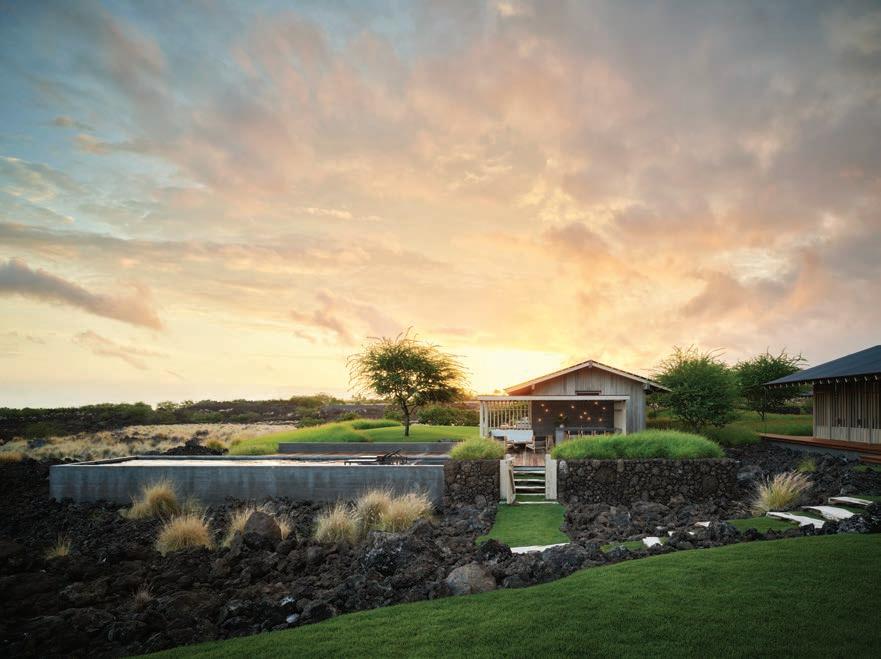
Courtesy Walker Warner (2)
Hold My Drink
More than an accessory, these side tables stand out as sculptural statement pieces.
BY JORGE S. ARANGO

Artist Hervé Van der Straeten does it again. Mixing Cubist and constructivist styles with panache, his colorful Gueridon Cumulus 486 tables (limited edition of 20) for Ralph Pucci are made of wood and coated in chameleon lacquer that changes with the light. $71,400; ralphpucci.com
Stephanie Sayar and Charbel Garibeh are Lebanese-born designers who combine naïve and experimental design with humor, as in the Melobroom tables for R & Company, which are made of hand-carved Lebanese stone and raffia. $9,500; r-and-company.com
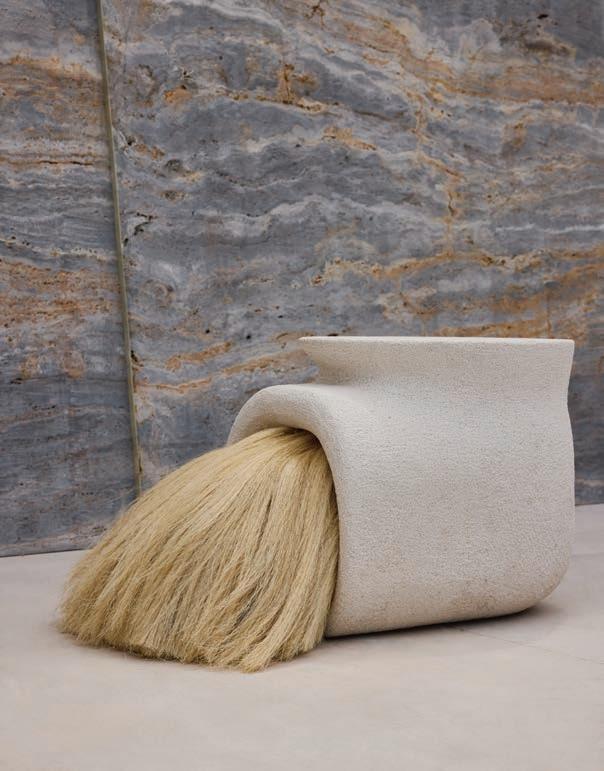

Spanish designer Jaime Hayon’s Explorer tables for BD Barcelona are inspired by NASA’s 1958 Explorer 1 satellite and interpreted with characteristic Hayon wit in jelly bean colors. They’re made of lacquered fiberglass with a gray glass top. From $2,455; bdbarcelona.com
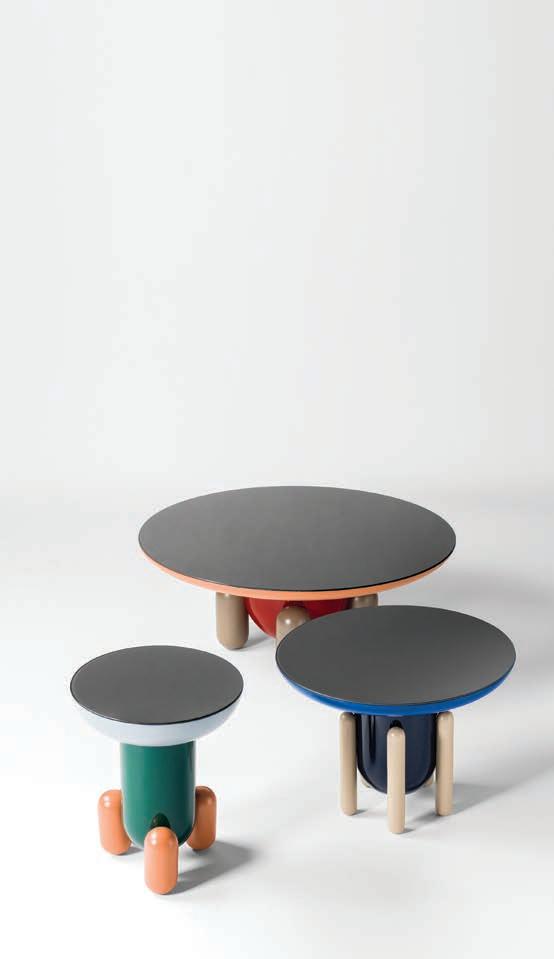
For Draga & Aurel’s Flare tables—exclusive to Todd Merrill Studio—the Comobased Italian studio looked to South Korean artist Jiyong Lee’s 3D color studies and Los Angeles–based Vasa Mihich’s acrylic sculptures to create Lucite tables that are all about light and color refraction. Price upon request; toddmerrillstudio.com
Lithuanian designer Barbora Žilinskaitė, who works in Brussels, Belgium, made these Roommate Stools for Friedman Benda, a provocateur goading us to react to her experimentation with materials—here: wood dust, ply, pigment, varnish, and glue. From $8,750; friedmanbenda.com
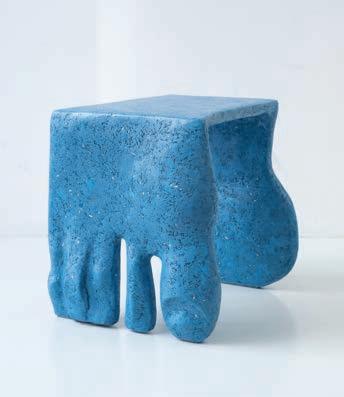
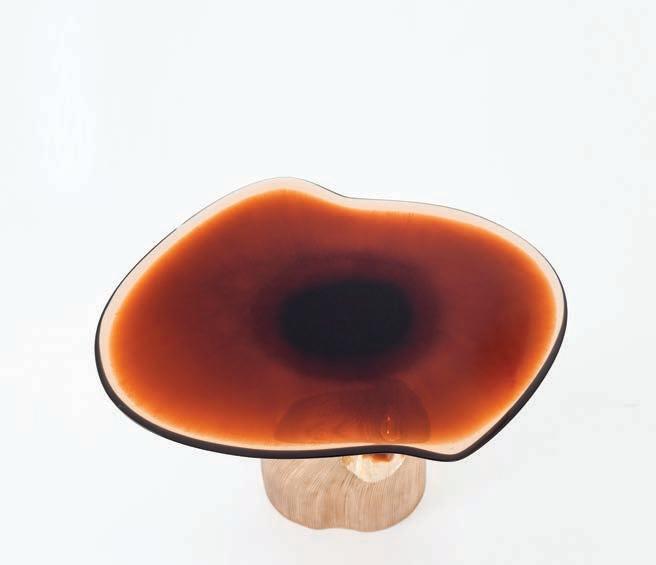
The Déhanché side table by Lebanese architect Georges Mohasseb for Galerie Gabriel refers to the French word for the fleshy part of the hip, and certainly evokes a voluptuousness of form. It’s made of brass and resin. $12,000; galeriegabriel.com
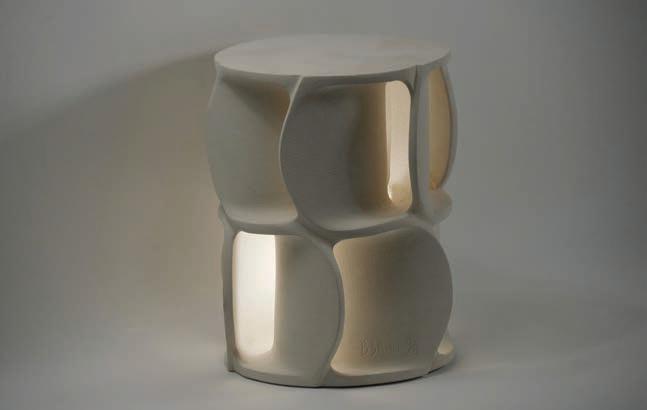
Clay is the medium of choice for Guy Bareff’s handmade Pétales designs for Maison Gerard. Belonging to the French sculptor’s Illuminated Side Table collection, the pieces are lighted from within and available in two to four tiers. Choose between two colors: Chamotte stoneware and terracotta. $12,500; maisongerard.com
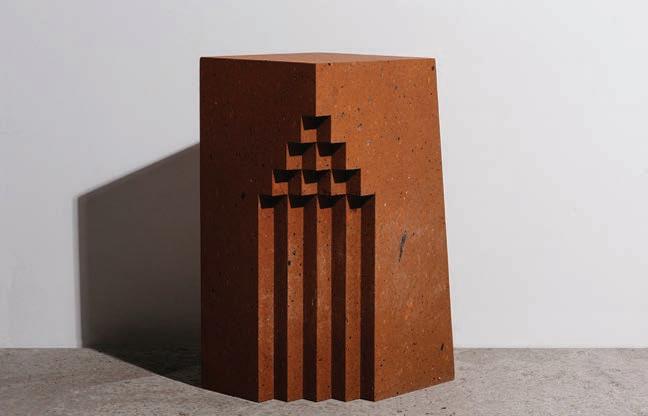
A Space design studio’s The Source Side Table No. 4 for Colony is a paean to the architecture of Armenia. The blockish, limited-edition piece is hand carved from red tuff, a porous rock made of consolidated volcanic ash, and has a lead time of 10 to 12 weeks. $5,000; goodcolony.com
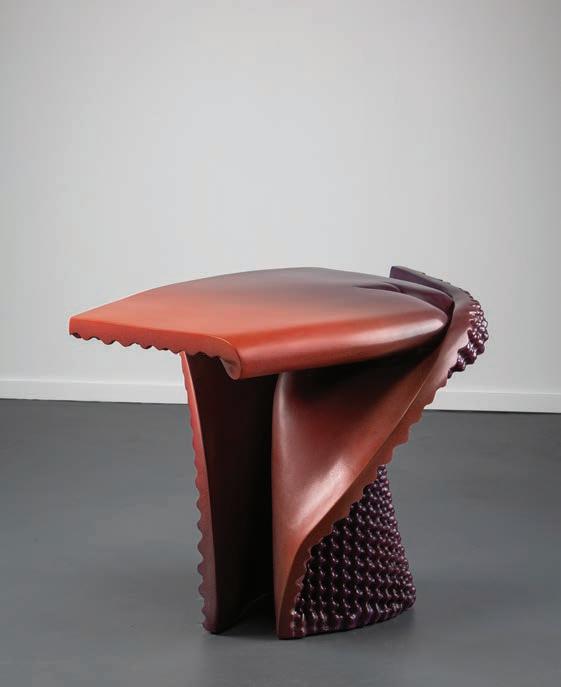
Artist Nick Missel says he mines “the cultural archaeology of the working class.” His REM collection’s Twisted Fantasy tables for Wexler Gallery resemble a contorted piece of egg crate foam. The resin forms finished in automotive paint are beautifully sophisticated and surreal. $38,000; wexlergallery.com
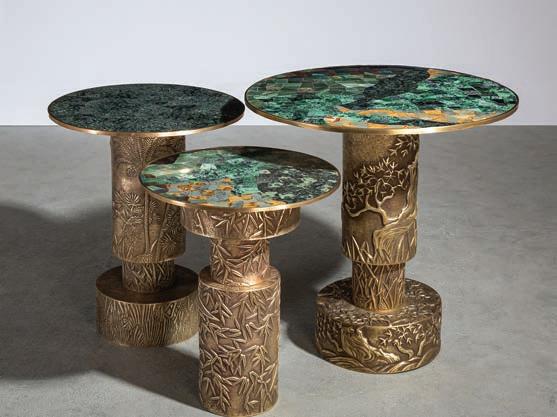
New Delhi–based Vikram Goyal is a virtuoso of repoussé, a metalwork technique done by hammering relief designs from the back. His Golden Bamboo tables for The Future Perfect, made of brass and precious stones, are masterpieces of the craft. Price upon request; thefutureperfect.com
All Images Courtesy Listed Supplier
Object Lesson
When is a vase more than a vase?
When is a mirror more than a mirror?

Japanese artist Hitomi Hosono, whose exquisitely delicate porcelain works are represented by Adrian Sassoon, showcase her painstaking carving skills on floral-motif vessels accented by gold leaf. About $3,000–$60,000; adriansassoon.com
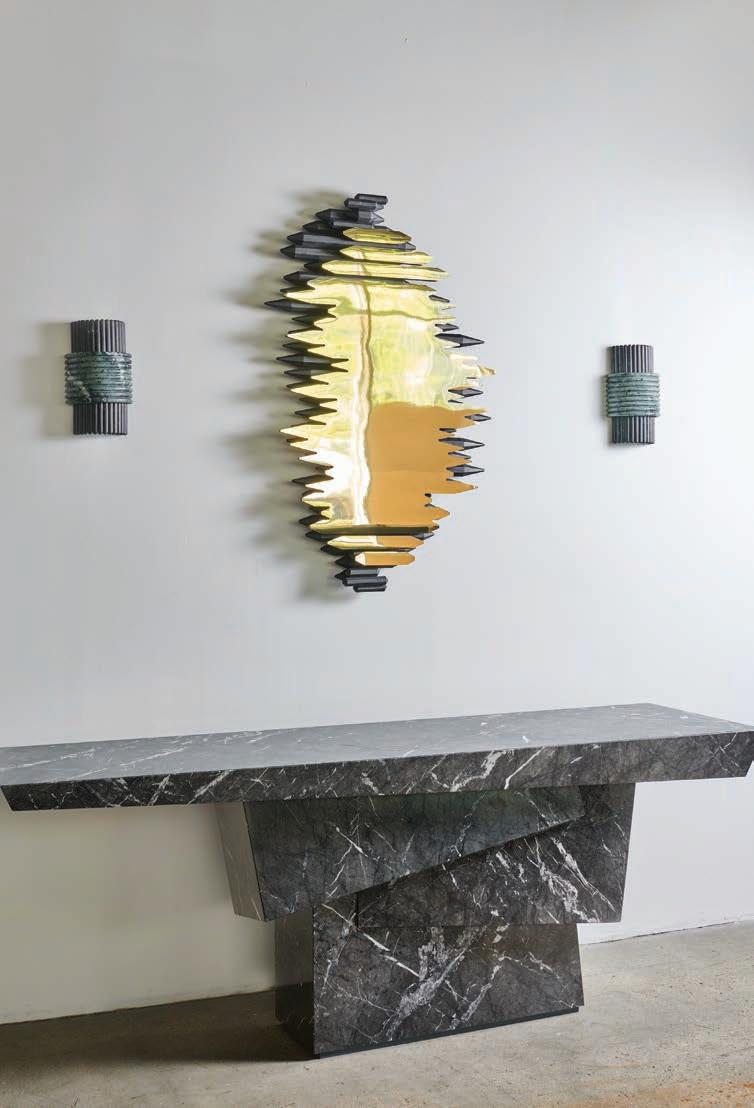
It’s not you on magic mushrooms; it’s the mirror. Antonio Pio Saracino’s Crystal Mirror for Maison Gerard (like all his works) takes inspiration from the natural world. Here, wood and silvered glass resemble rippling waters. $19,500; maisongerard.com
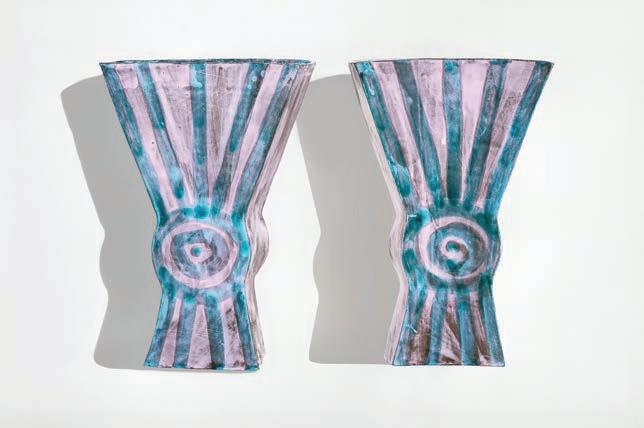
French artisan Alice Gavalet’s works have a distinctive sense of color and pattern. They’re also lighthearted, almost naïve, in their handcrafted appearance. All these qualities come to bear in her striped sconces for Twenty First From $14,000; 21stgallery.com
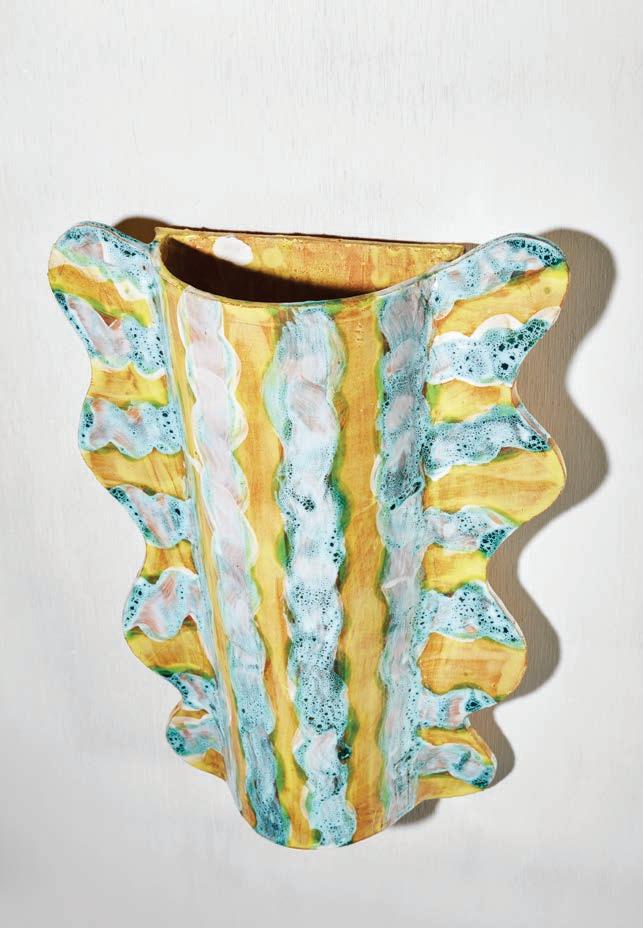
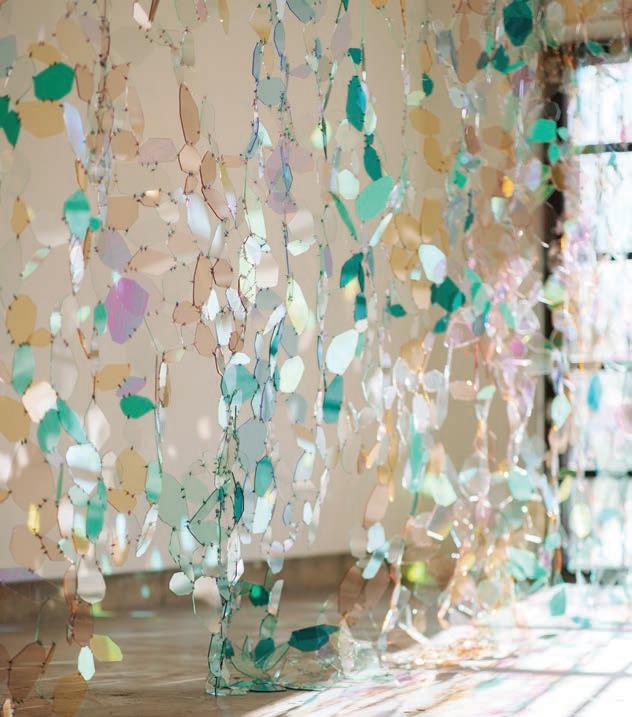
For her Noticing Light installations, artist Christina Watka stitches together hundreds of tinted acrylic shards with silicone-coated wire. Suspending them from the ceiling transforms rooms into twinkling, enchanted spaces. Available by commission. Priced per project; christinawatka.com
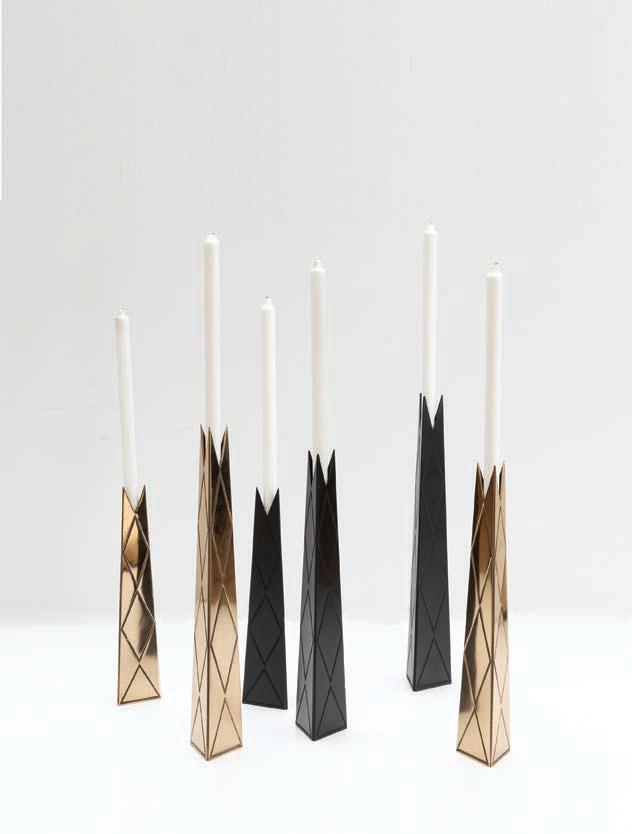
Nina Seirafi is a New York–based multidisciplinary designer interested in architectural detail. Grouping her Acacia candlesticks in polished or blackened bronze for Ralph Pucci creates a tablescape resembling skyscrapers. $5,520–$5,760 each; ralphpucci.com
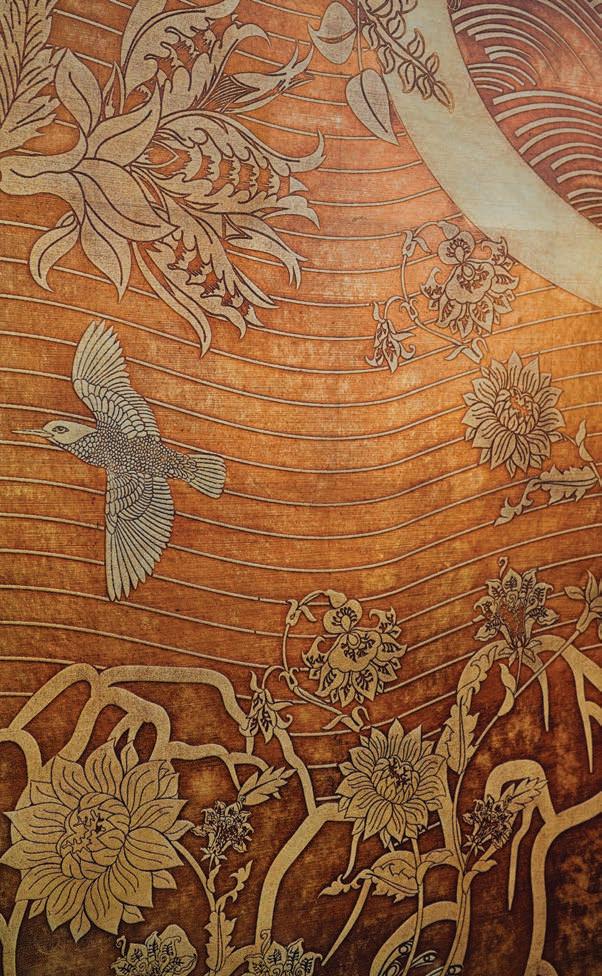
Architect and printmaker Jaydan Moore works with found or donated silver-plated platters, which become unrecognizable in works like this Erosion bowl for Ornamentum Gallery, where flattened platters serve as a skin on the vessel beneath (32-inch diameter). $39,000; ornamentumgallery.com

Two great talents—metal artist Vikram Goyal and hand-painted wallpaper firm de Gournay—partnered on three sumptuous bas-relief designs on gilded paper evoking Goyal’s masterful brass repoussé. $2,500/panel; degournay.com

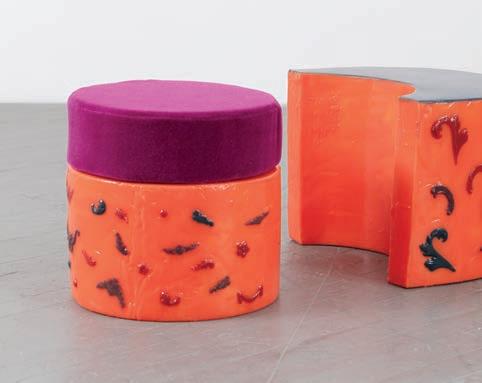
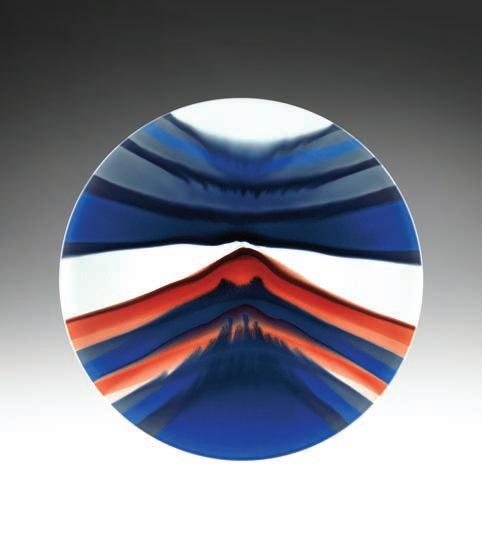
Artist Barbara Nanning’s extraordinarily labor-intensive pieces involve caning, glass blowing, hand forming, and sometimes sandblasting exteriors of pieces while polishing their edges, and attaching metal leafing. Represented by J. Lohmann Gallery. From $8,000; jlohmanngallery.com
Artist Luam Melake’s furniture explores the ways it can adapt to and promote meaningful social interactions. Her Deux Amis ottoman for R & Company is nothing if not an icebreaker. It’s made of urethane, polyurethane foam, mohair upholstery, and dyes. From $8,500; r-and-company.com
In Japan, master potters pass their craft on to their sons. But Tokuda Yasokichi III passed it on to his daughter, Tokuda Yasokichi IV, who departs from her father with more vividly colorful glazes, as in this Red Fuji plate for Onishi Gallery. Price upon request; onishigallery.com u
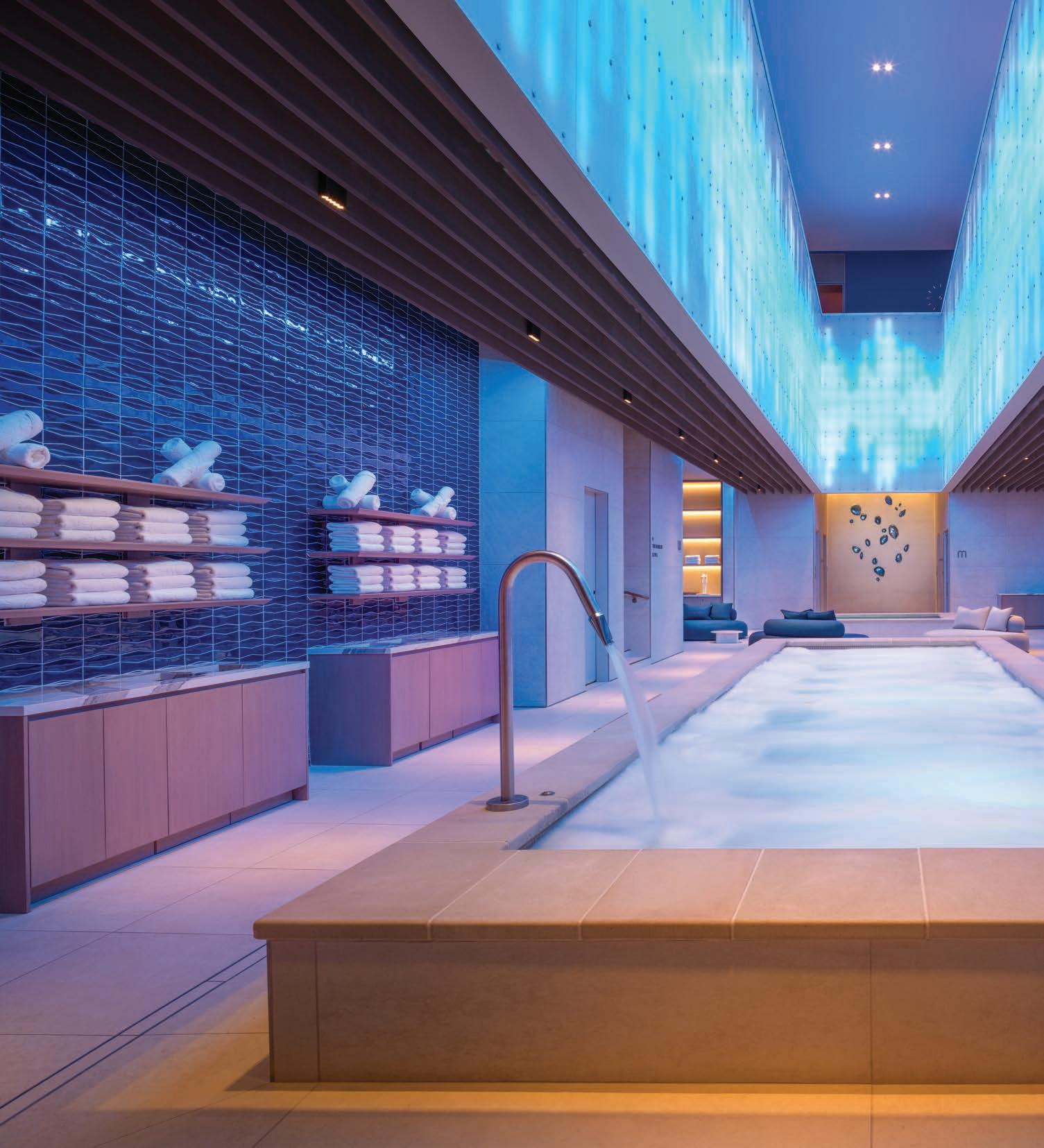
Lapis Spa & Wellness at Fontainebleau Las Vegas
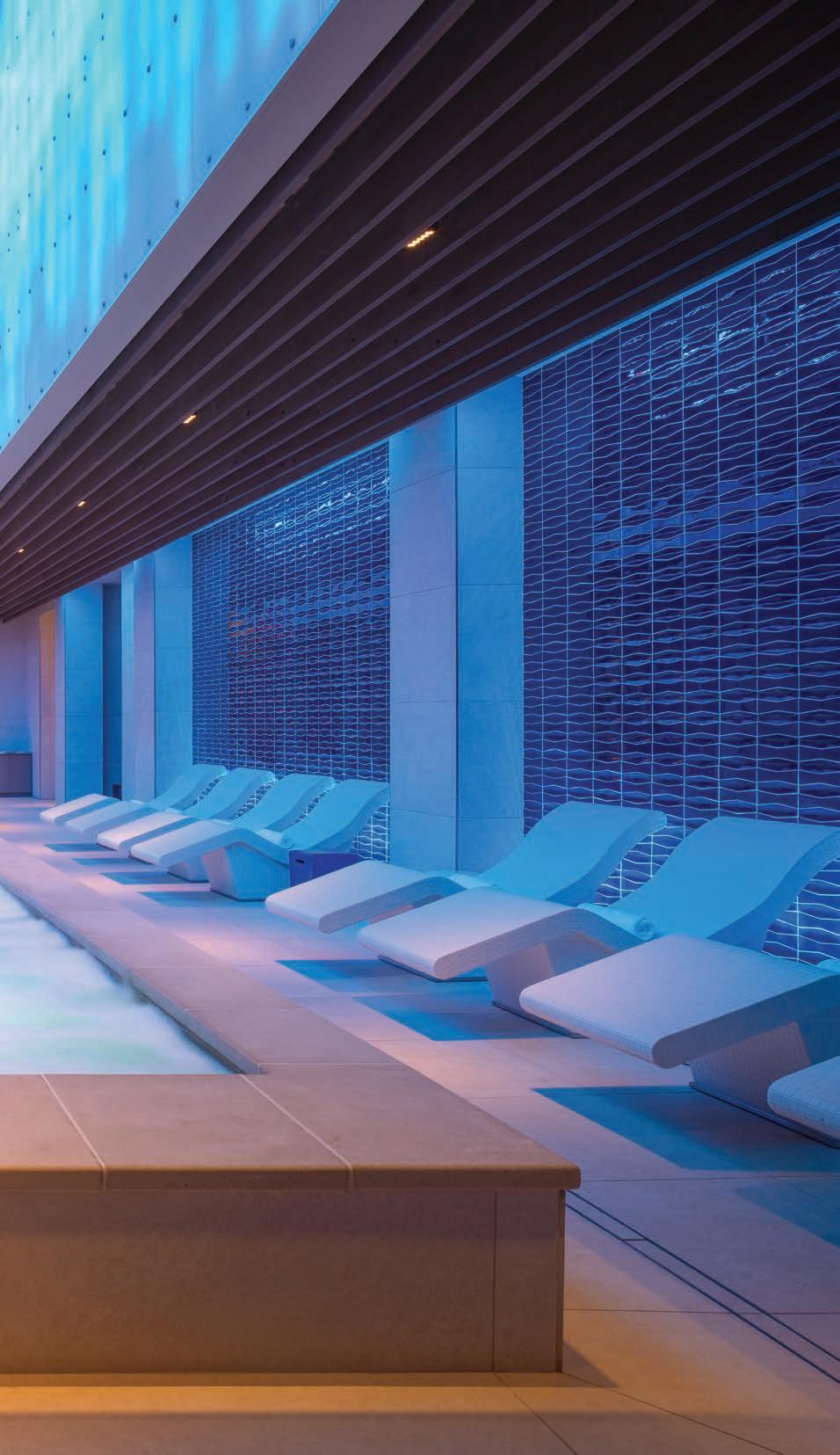
Seven Spa Days in Sin City
BY LARRY OLMSTED
One of the most popular travel destinations on Earth, Las Vegas has never been one to sit on its laurels. The entertainment capital has reinvented itself again and again—shifting its focus over the years and successfully establishing world-class fine dining, spectator sports, long-term residencies with top musicians, over-the-top spectacle shows, and now the new, instantly iconic Sphere venue.
Another category where Las Vegas outperforms almost every other city in the world is day spas—with more to choose from than in Miami, Paris, and all of Hawaii or every island in the Caribbean combined. It is home to no less than eight top-rated luxury facilities as well as some of the largest spas on the planet, where an impressive range of amenities include elaborate aqua therapy zones, heated stone beds, ice caves, and halotherapy chambers. Almost every notable Vegas resort has an in-house spa, but these seven are the best.
Lucky you, Las Vegas is winning in the world of wellness and recovery.

The Most Luxurious
The largest Forbes five-star-rated spa in the world at 80,000 square feet, ARIA Salon & Spa (aria.mgmresorts.com) is built on an elemental theme of salt, stone, earth, fire, and water. Obsession to detail is omnipresent, from the vases of fresh orchids to the specialized treatment rooms dedicated for red-light therapy and Ashiatsu (bars installed overhead support therapists walking on your back). Themed luxury Spa Suites function as private enclaves for full-day indulgence, equipped with soaking tubs, living areas, and extras such as heated quartz Dream Tables to lie on.
AMENITIES: Shio Salt Room with heated walls of translucent salt blocks and vibrating chaise lounges for halotherapy as sea salts diffused in the mist improve skin health and remove toxins from your respiratory system. Relaxing Fire Lounge and heated Japanese Ganbanyoku stone chaise lounges, each carved from a single piece of rock. Separate men’s and women’s areas each have eucalyptus steam rooms, redwood saunas, and a trio of whirlpool baths at different temperatures. Before or after treatments, guests can relax at the city’s first outdoor coed balcony with an infinity-edge pool and a whirlpool.
SALON SERVICES: A full-service salon; dedicated classic men’s barbershop and shave facility.
FITNESS: Stocked with top-shelf Technogym strength and cardio equipment and offers group fitness classes, personal training, and infrared body composition analysis.
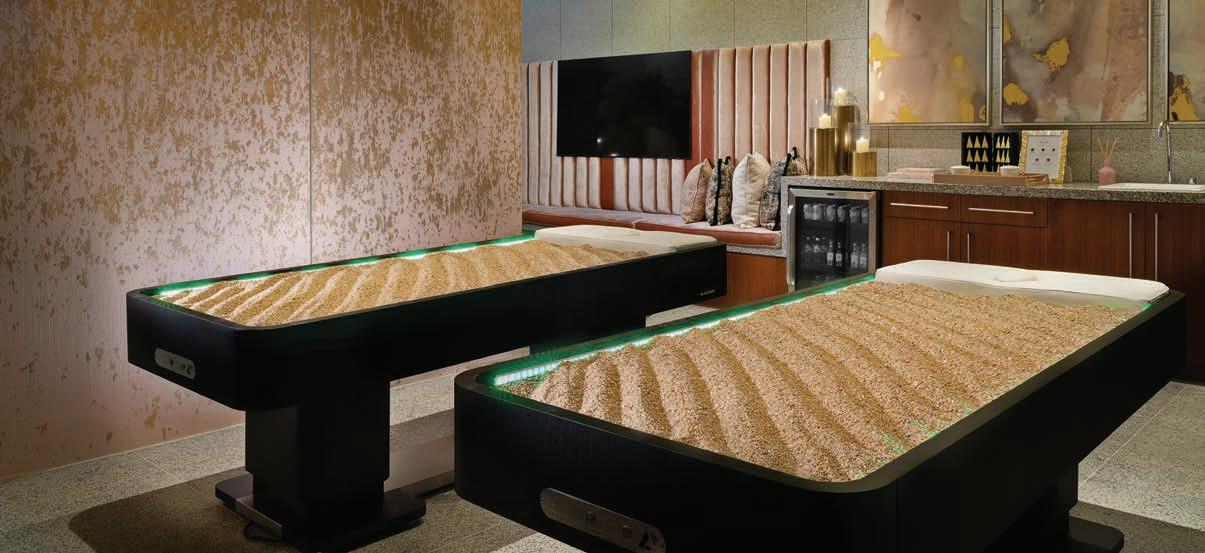

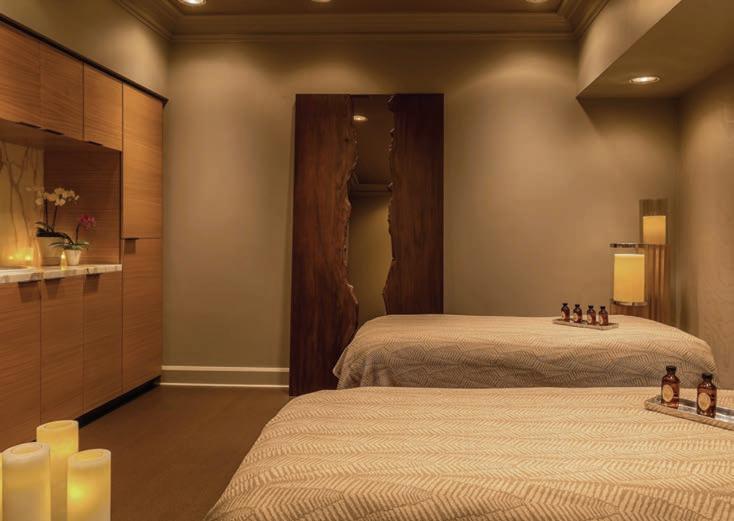
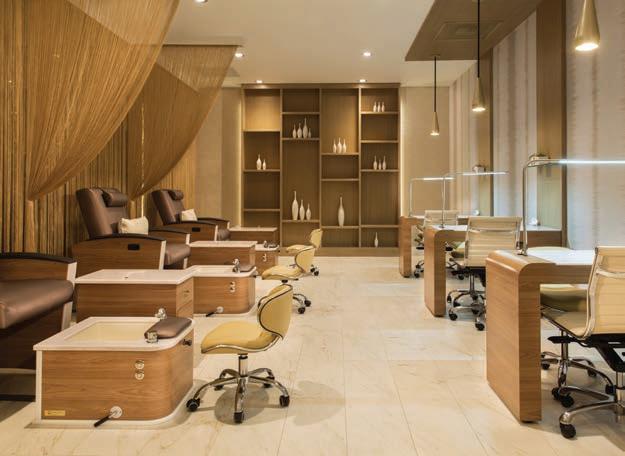

The Boutique Option
Much like the surrounding luxury hotel, the Spa at the Four Seasons Hotel Las Vegas (fourseasons.com) goes for understated, especially by Vegas standards. The smallest of the city’s Forbes five-star-rated spas, it has just 12 treatment rooms. A refresh by design firm EDG has made the area feel bigger by opening up the floor plan and adding a desert aesthetic, completing the quiet, escapist, hidden-gem, oasis vibe. Further extending its reach is a menu of outdoor massages that can be enjoyed poolside or in cabanas. The hotel has one of the more intimate adult pools on the Strip, which becomes a de facto extension of the spa. And despite its limited girth, it has a broad range of treatments you would be hard-pressed to find elsewhere—such as cupping, a dripping warm wax candle massage, non-surgical facelifts, and even seasonal treatments that, like fine cuisine, change with the weather.
AMENITIES: Lacking the aquatic theme park features that turn many of the top Strip spas into half-day immersion destinations; classic locker rooms equipped with showers and eucalyptus steam.
SALON SERVICES: A simple nail bar.
FITNESS: More luxury hotel gym and less downtown athletic club; advanced Matrix cardio gear with active virtual technology, Hydrow rowers, and Peloton bikes, plus loaners that can be put in guest rooms.
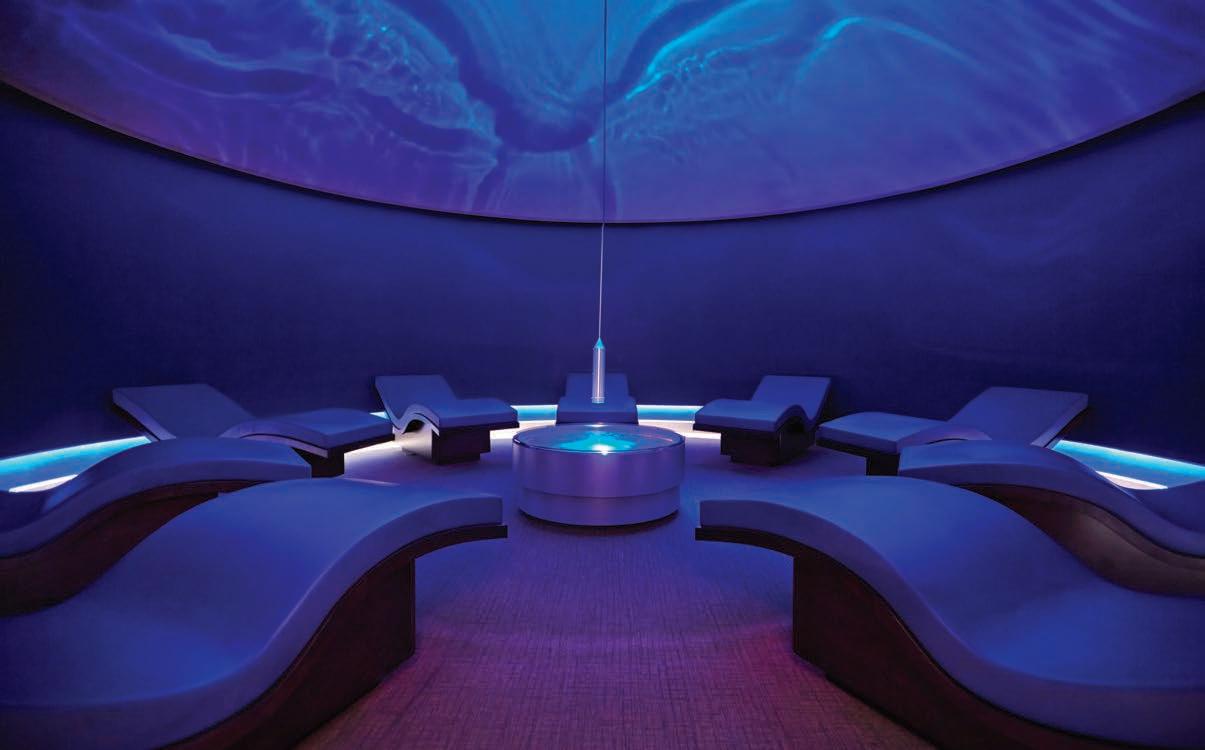
The Most Comprehensive
With more than 7,000 suites, the Venetian Resort Las Vegas is North America’s largest hotel and the second-largest hotel in the world. Its mega-spa and fitness facility, managed by famed wellness specialist Canyon Ranch Spa + Fitness (canyonranch.com), fits this massive scope and is among the largest spas in the world at a stunning 134,000 square feet. Choose from more than 100 different treatments to enjoy in one of the 90 rooms, or in a private spa suite or cabana. Options include the signature Ritual Bath and a huge array of massages and facials, including some with microdermabrasion.
AMENITIES: A huge hydrothermal facility with three experiential rain showers, waterfall deluge showers, an herbal laconium (a type of dry sauna), a crystal steam room, ice igloos, a hydro-spa with varied jetted stations, and coed experiences that include a relaxation conservatory, salt grotto, and wave room that simulates the sounds and feel of breaking waves. In addition there are separate men’s and women’s locker rooms, each with steam rooms, saunas, and hot and cold plunge pools. Canyon Ranch Spa + Fitness has two dining venues, Canyon Ranch Café and Truth & Tonic Wellness Café.
SALON SERVICES: A complete array of hairstyling and services, nails, makeup, and men’s barber and shaves.
FITNESS: Three comprehensive gyms, one in each tower, are outfitted with state-ofthe-art equipment. There is a 40-foot climbing wall and an extensive selection of daily classes for all levels, from casual indoor fitness to extreme boot camps.


For Couples Treatments
The two-level Waldorf Astoria Spa Las Vegas complex (hilton.com) on the hotel’s seventh and eighth floors includes the spa, a fitness center, and an outdoor pool and deck with cabanas and the Pool Café restaurant. The 27,000-square-foot facility isn’t over the top, but is still very well-appointed, with an emphasis on immersion combination treatments for couples and singles lasting from 1 to 3.5 hours. For example, the State of Equilibrium includes a foot bath, exfoliation, detox wrap, hydrotherapy bath, and hot stone massage, one after another.
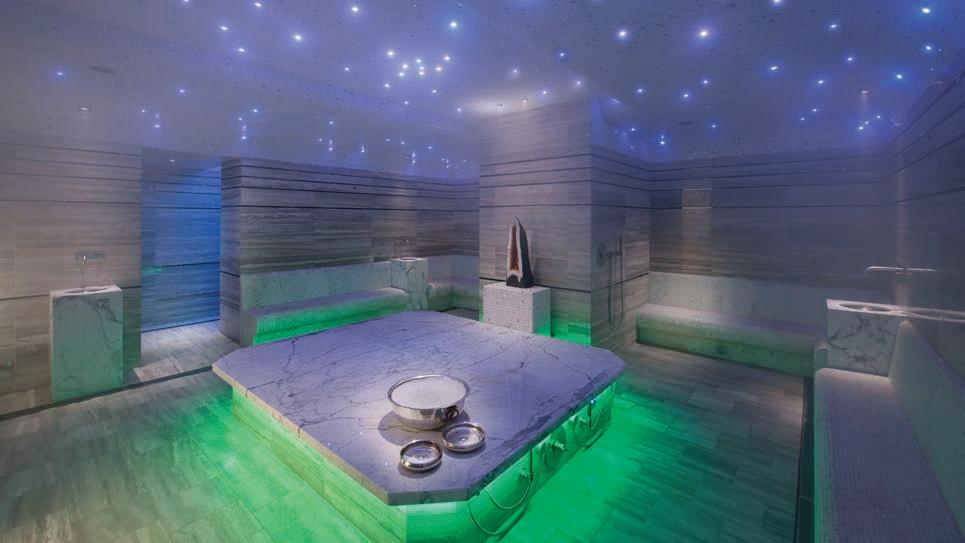
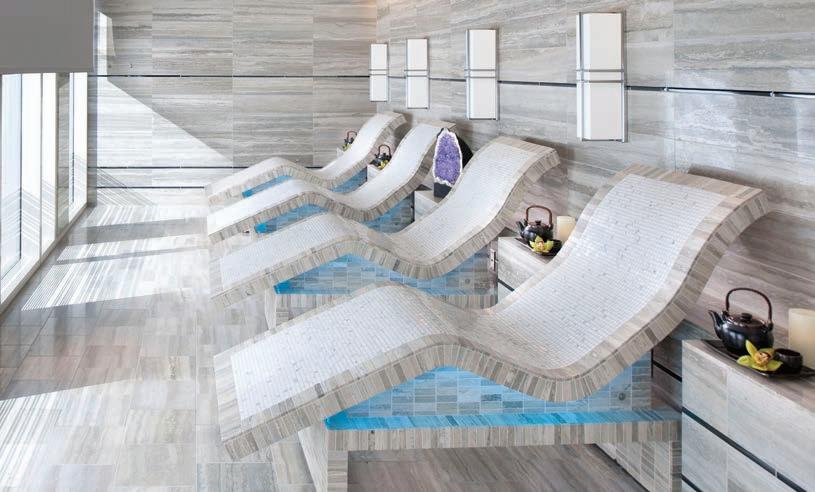
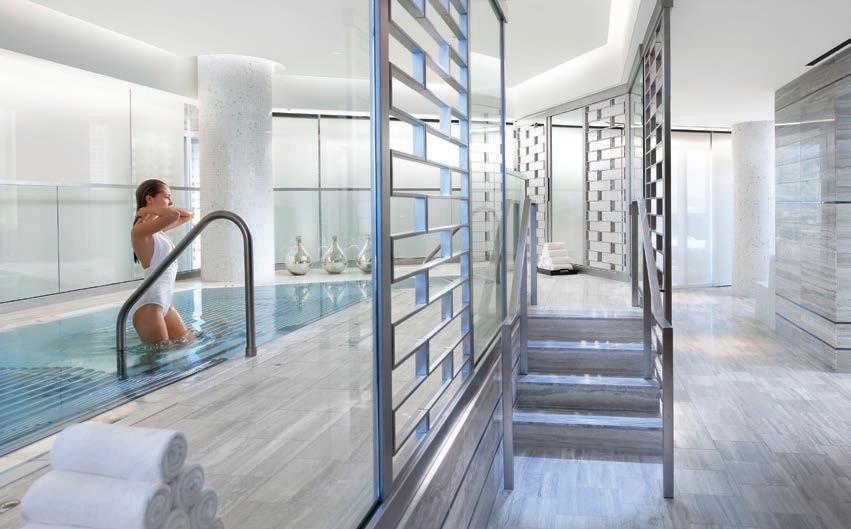
AMENITIES: An herbal steam room, a laconium, experience showers, a vitality pool, an ice fountain, heated tepidarium lounge chairs, and a relaxation lounge.
SALON SERVICES: Hair and nail salon.
FITNESS: Top-notch Technogym gear and both personal training and an array of group fitness and yoga classes, with a dedicated yoga studio.
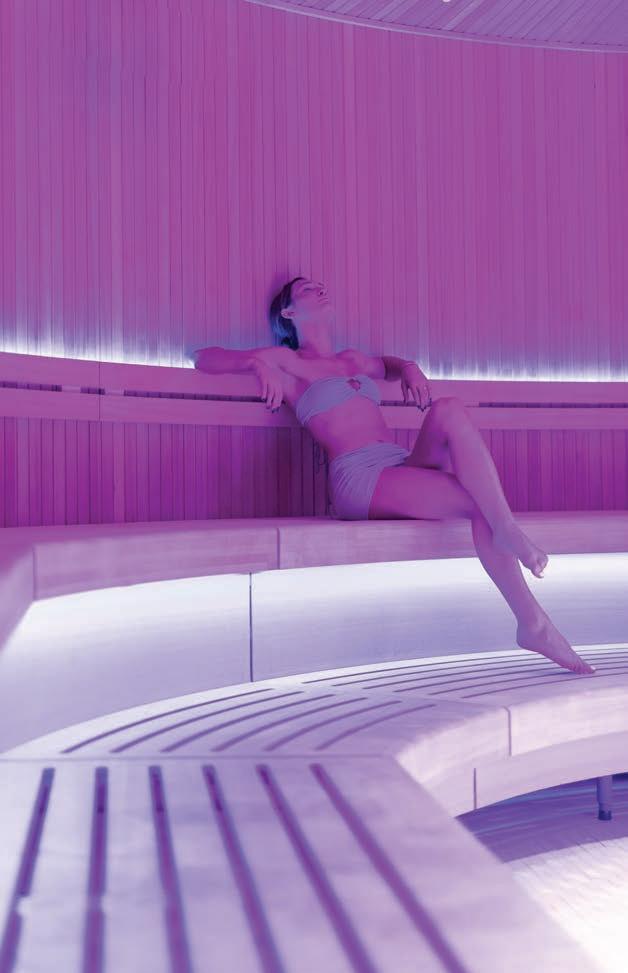
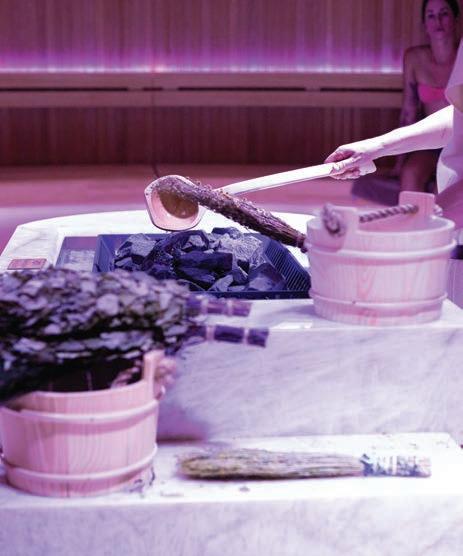
The Most “Las Vegas”
At under 27,000 square feet, Awana Spa at Resorts World Las Vegas (rwlasvegas.com) is one of the smallest spas in this group, yet it still dwarfs the size of most resort spas. The design draws upon the principles of the golden ratio, such as curved walls and muralstyle photos of different landscapes, but overall it is much more reminiscent of the wellness spas of Austria and Italy’s Dolomites.
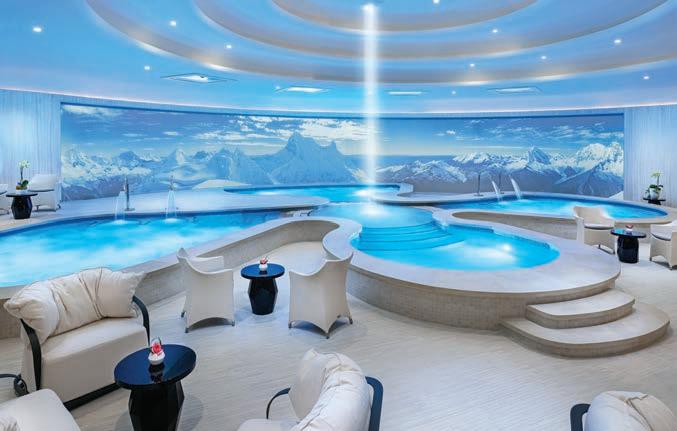
AMENITIES: The signature, first-in-Vegas centerpiece, the Art of Aufguss: a communal “event sauna” that takes the normal dry heat and adds aromatherapy, sensory lighting, and a towel dance (a theatrical, 30-minute show of linen choreography, conducted by a “sauna meister”). While it seems very Vegas to put a flamboyant showbiz touch on what would simply be a sauna anywhere else, Aufguss is an actual European spa tradition. Still, the real Awana highlight is the Fountain of Youth, a complex of six vitality pools, a heated Crystal Laconium room, heated tepidarium chairs, vaporfilled steam rooms, cool mist showers, and an experimental Rain Walk, arranged with the intent to create a transformative and holistic experience.
SALON SERVICES: The aptly named Miss Behave Beauty Bar puts a Vegas spin on the luxury salon, with stations for hair, nails, lashes, and makeup services arranged around a full-service central bar serving cocktails and Champagne to beautifying guests.
FITNESS: Less massive than many, but with state-of-the-art equipment, including Peloton bikes and a Stretch & Recovery Zone Powered by Therabody.
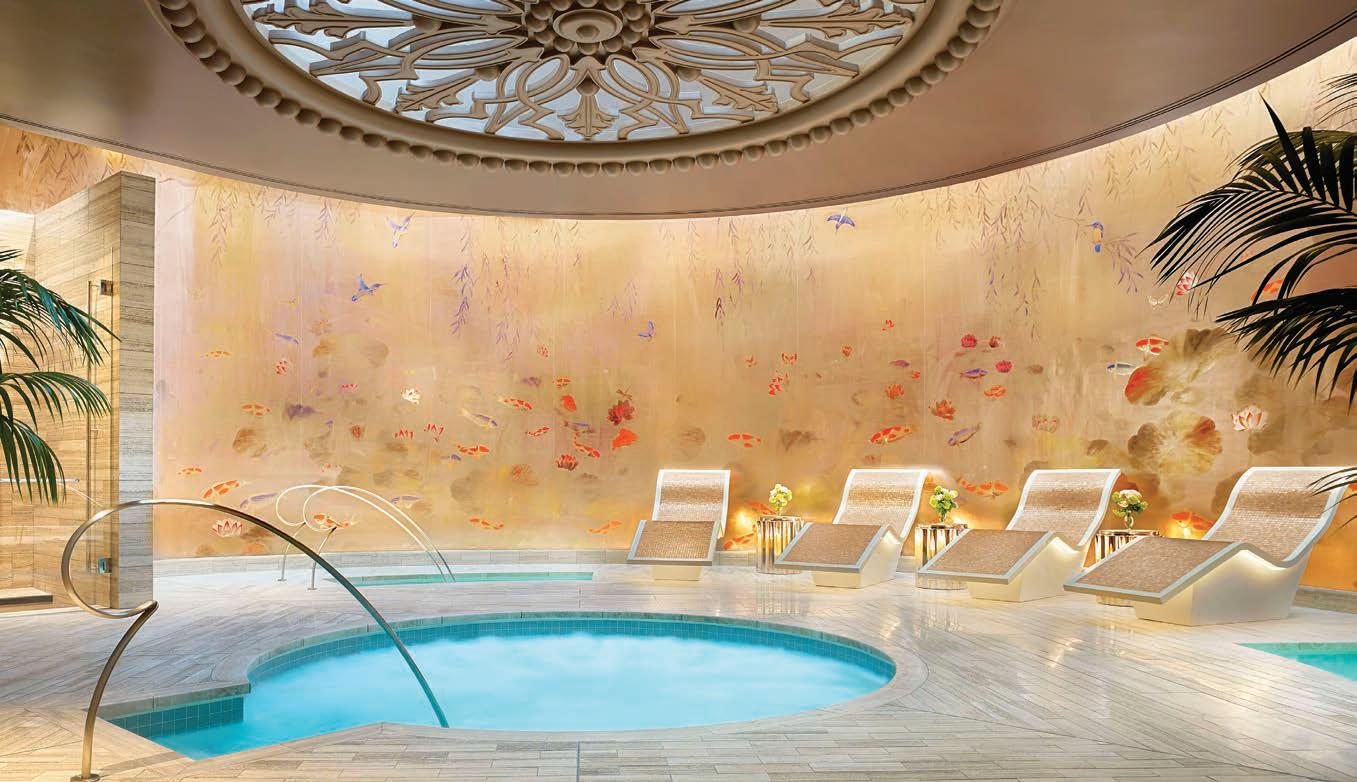
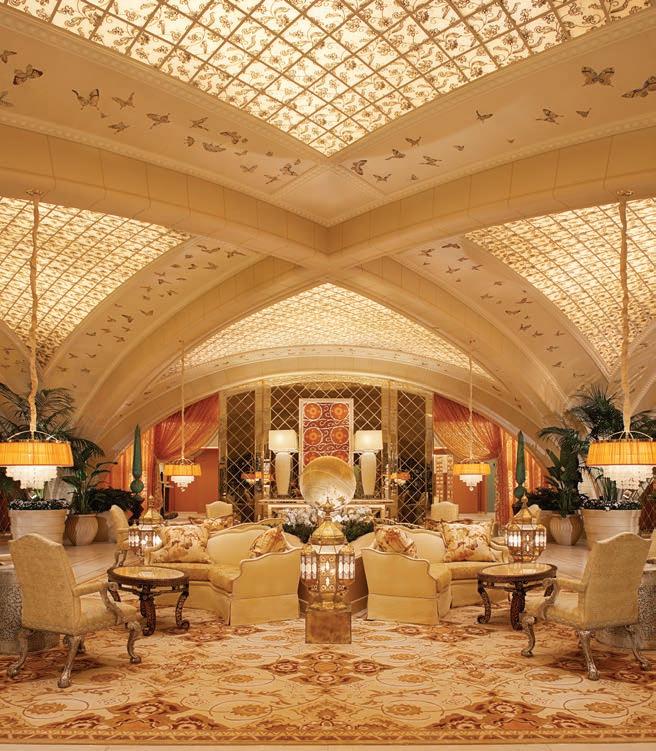
Two for Two
The Wynn and Encore hotel towers house two of the city’s swankiest spas: The Spa at Wynn and The Spa at Encore (wynnlasvegas.com), so wherever you stay on this large, lavish campus, you are not far from a world-class facility. Just as the Wynn and Encore guest rooms are essentially the same footprints with different styles of decor and design, the spas have similar treatment options with different aesthetics, though both incorporate a lot of floral Asian art, roaring fireplaces in common areas and some treatment rooms, and fresh flowers. The Wynn spa has more of a fullblown Asian design featuring Chinese zodiac symbols, while Encore is a more formal, English-inspired space with vaulted ceilings.
AMENITIES: Separate women’s and men’s areas, each with a steam room, sauna, hot and cold plunge pools, and experiential showers. The Spa at Wynn has more focus on hydrotherapy treatments with dedicated wet treatment rooms and a classic men’s barbershop with products from London’s Truefitt & Hill (which holds the Guinness World Record as the world’s oldest barber). The Spa at Encore has an indoor-outdoor theme and 14 outdoor garden treatment suites.
SALON SERVICES: Both have full-service beauty salons.
FITNESS: Both have extensive fitness centers with state-of-the-art equipment, personal training, and scheduled fitness classes.

The Most Exotic
The Cosmopolitan of Las Vegas went for a classic Turkish theme with its 43,000-square-foot Sahra Spa, Salon & Hammam (cosmopolitanlasvegas.mgmresorts.com), designed by UK-based United Designers. It showcases one of the few authentic hammam experiences in the United States, a multi-stage ritual that combines body detoxification through intense scrubbing, steam treatments, and a cooling bath, all in a heated room. The main spa has 32 treatment rooms, and the focus is on Arabian beauty rituals, products, and therapies drawn from desert cultures around the world and using desert plants and minerals.
AMENITIES: The hammam room can be used privately or with up to three people, and contains a heated motherstone slab, two whirlpools, steam rooms, and stone loungers. In addition, the Penthouse Spa Suite can host up to 10 guests, with a flat-screen TV, a wet bar, butler service, and a private treatment area with side-byside whirlpool tubs and a steam room.
SALON SERVICES: Focuses on hair and nail treatments.
FITNESS: Two different well-equipped fitness centers; one outdoor tennis court and two pickleball courts.
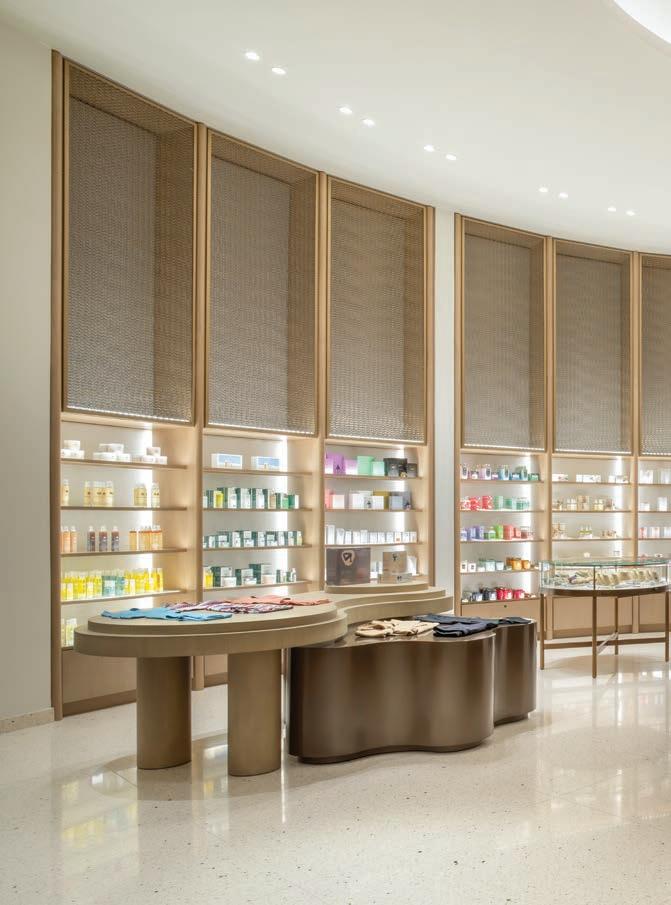
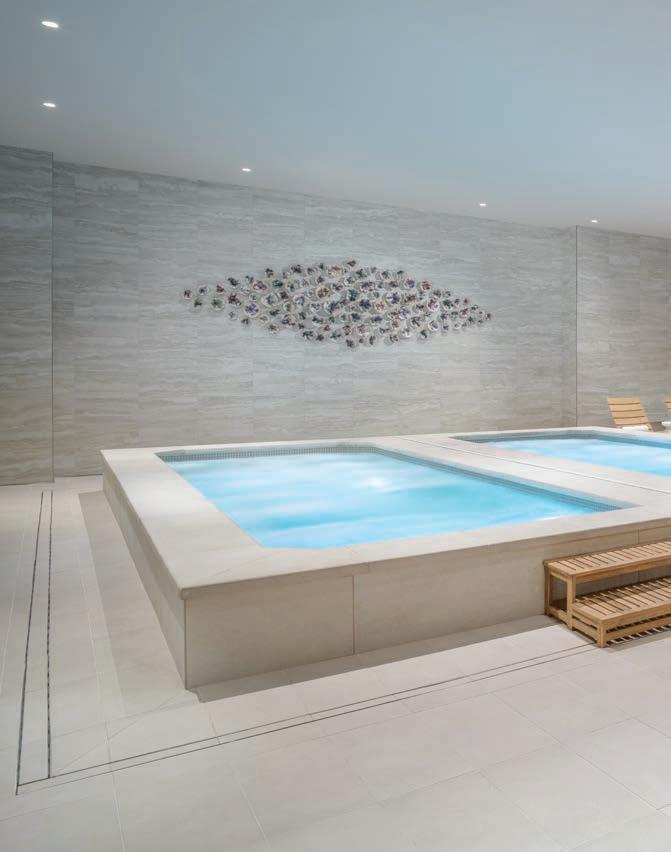
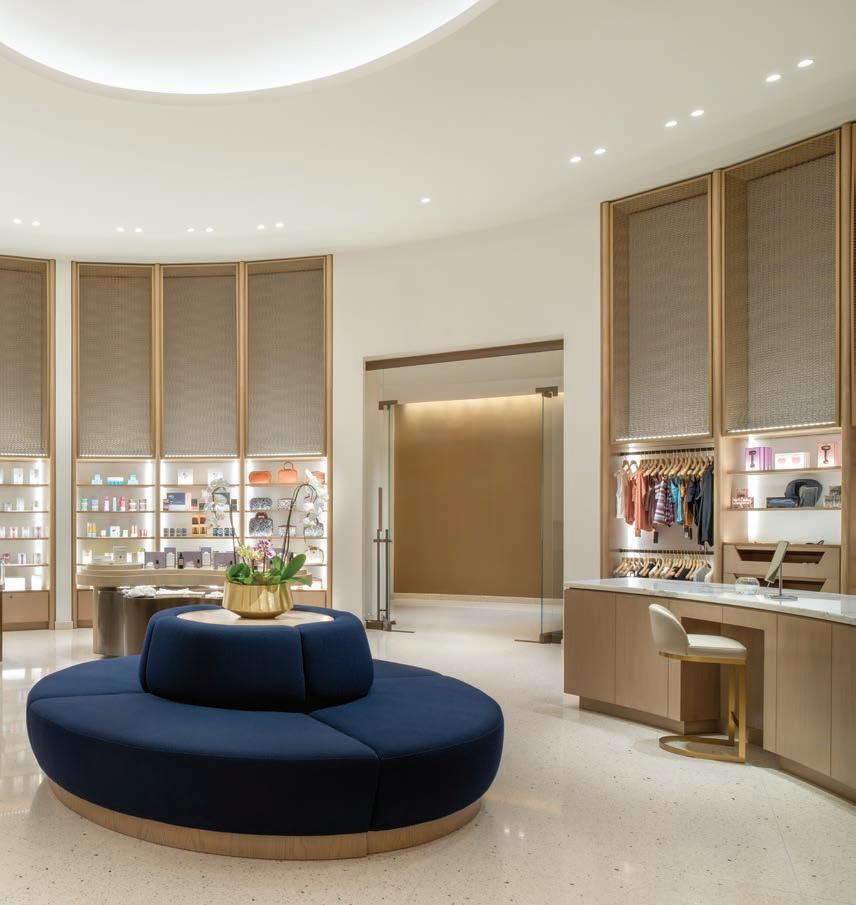
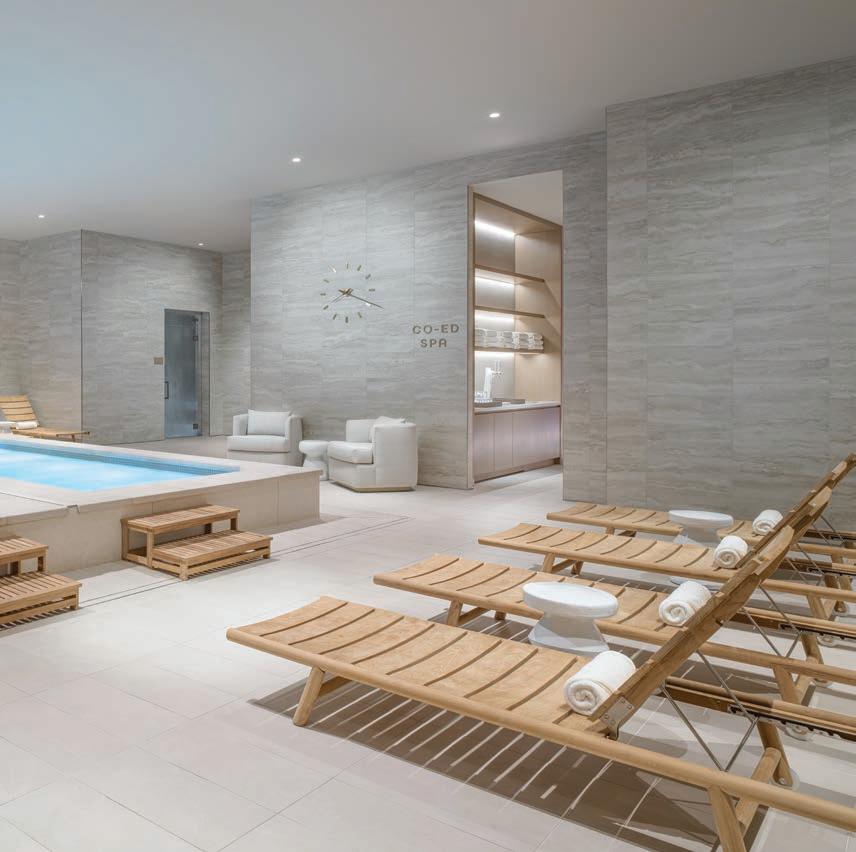
For the Latest Amenities
Almost as soon as this mega-resort spa debuted, it won the coveted title of World’s Best Casino Hotel Spa at the prestigious 2024 World Spa Awards. The 55,000-square-foot Lapis Spa & Wellness at Fontainebleau Las Vegas (fontainebleaulasvegas.com) takes its name from Lapis Lazuli, a deep celestial blue crystal associated with the protective qualities of intuition, truth, and spiritual connection. Lapis has gone all in on amenities that most of its rivals do not yet have. Something many of the spas here have are VIP suites, and the Lapis offers Supernova, a spa within the spa for up to eight guests.
AMENITIES: Its signature feature, Celestial Waters, comprises a large hydrotherapy area focused on the recently trendy practice of contrast therapy, alternating hot and cold temperatures. What’s unique is not the facility itself, but that days are split into calmer “lowtide mornings” (less jets) and energetic “hightide afternoons” (lots of jets, brighter lights).
Celestial Waters has an array of vitality pools, steam rooms, an herbal inhalation room, snow showers, and an atmospheric salt cave. Opened on the heels of Resorts World’s Awana, there’s an event sauna with a sauna meister and 15-minute “dance of the towel.” (Even this comes in low- and high-tide versions.) A first-on-the-Strip feature is the Reboot Lounge, a seating area devoted to shorter mini treatments for instant revitalization of the feet and legs. This is a very Vegas touch, targeting muscles strained from walking the city’s high-end malls and standing at the craps table.
SALON SERVICES: The basic list of manicures and pedicures.
FITNESS: Top-shelf cardio machines, including Woodway treadmills, Hydrow rowers, VersaClimbers, and Echo bikes. The Performance Zone for fans of CrossFit-type workouts has unusual strength offerings such as Jacobs Ladder, a HIIT modular system, sled push, and a tractor tire flip area. The dedicated movement studio schedules daily classes in yoga, Pilates, and stretching. u

Necker Island
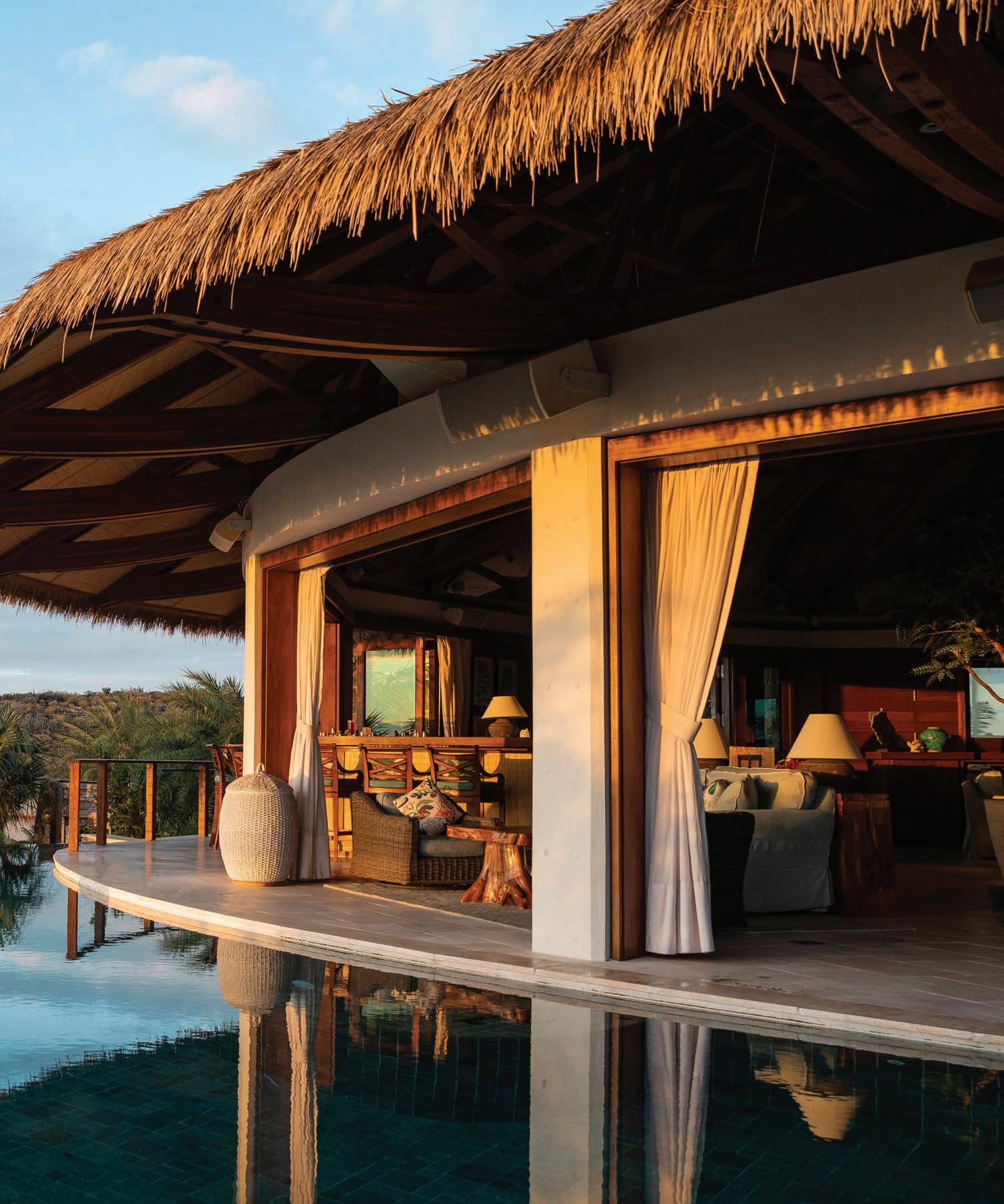
VIP BVI
Rediscovering the British Virgin Islands, one exclusive resort at a time.
BY MARK HACKING
If you’ve had the good fortune to travel to some degree in your lifetime, certain places will remain etched in your memory forever. Often, these are places you visit once and never return, the pristine quality of the initial experience unvarnished by subsequent trips that can’t measure up.
For this writer, the British Virgin Islands is just such a place. More than 35 years ago, a month in December spent aboard a chartered yacht in the area was a life-altering experience. It was a trip filled with lazy, long, sun-drenched days that still seemed to pass far too quickly. Activities included snorkeling with stingrays, ducking into oceanfront hideaways for fresh seafood lunches, enjoying a daily 3 p.m. rain shower that gave brief pause to the humid, 85-degree heat, and experiencing some of the best sunsets the world has to offer.
On Tortola and Virgin Gorda, people all around were simply enjoying the good life. For me, this experience was a divining rod, guiding me not to calm waters, which were all around us, but to a dreamlike place to settle down once all the work had finished.
Since my visit, there’s no doubt that the BVI have changed. The impact of Hurricane Irma, which made landfall in 2017, has been a terrible driving force for much of
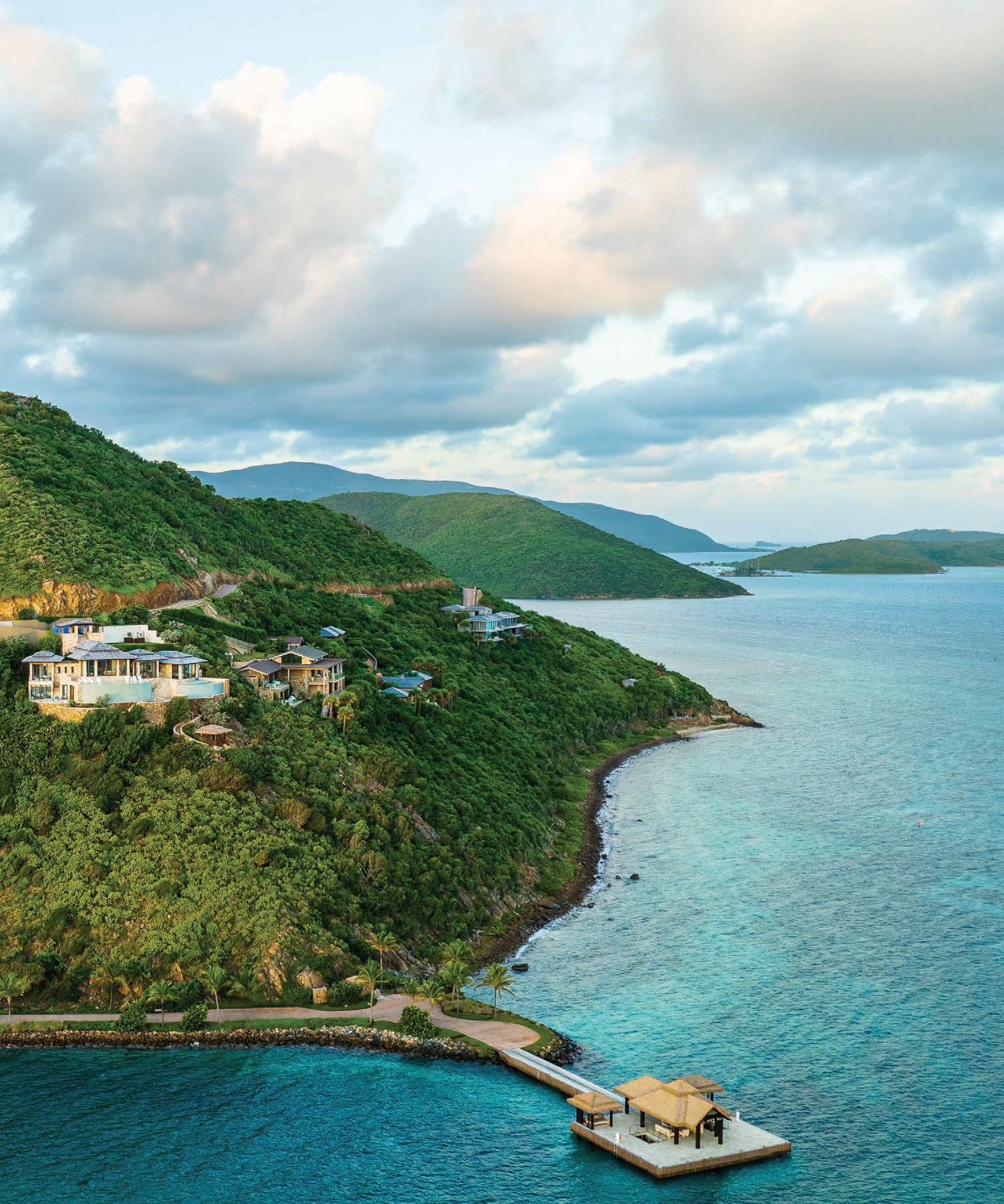
that change. The first Category 5 hurricane on record to strike the BVI left significant damage and some political infighting as rebuilding efforts dragged on.
Now, a few years on from the end of that reinvention, there are more inspiring places to visit than ever before. Here, we touch down on a handful of the country’s 60 isles to look at a select list of the most exciting resorts.
Oil Nut Bay, Virgin Gorda
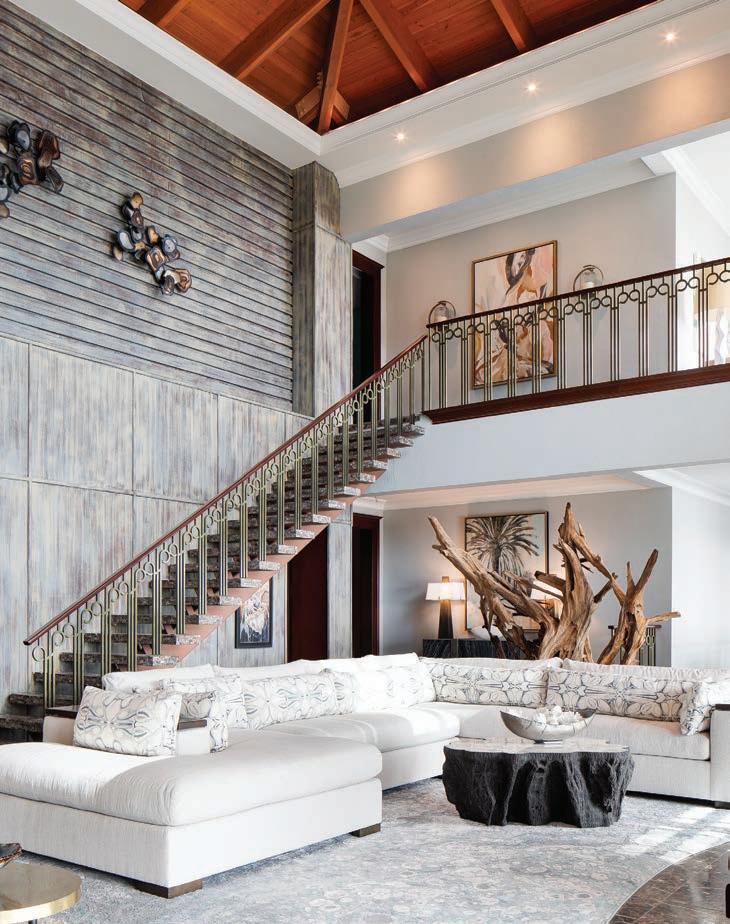
PETER ISLAND RESORT, PETER ISLAND
If a secluded vacation in the British Virgin Islands is your preference, Peter Island is a safe bet. Closed since the aforementioned hurricane ripped through the region, Peter Island Resort reopened at the very end of last year following a complete reimagination.
In the process, most of the accommodations have been shifted to Deadman’s Beach: 40 beachfront rooms, 8 premium rooms with hot tubs, and 2 two-bedroom villas. While these offerings deliver everything you might expect from a beachfront stay right on the Caribbean—unspoiled nature, warm breezes, and extraordinary sunsets—there are two larger villas tucked away that promise even more.
Hawk’s Nest, a three-bedroom villa, and the six-bedroom Falcon’s Nest estate are the spotlight
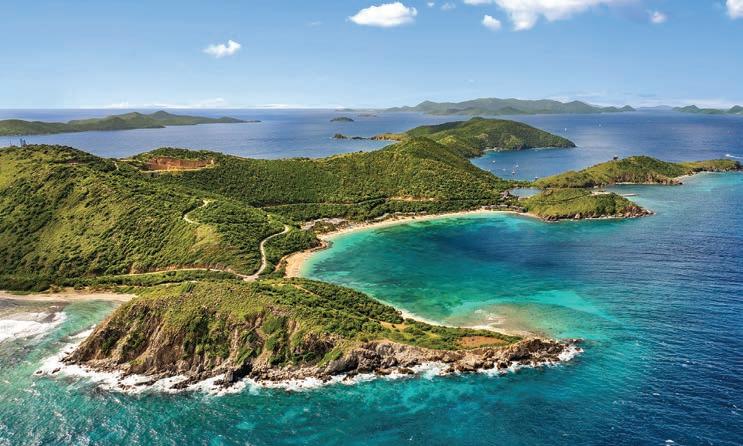
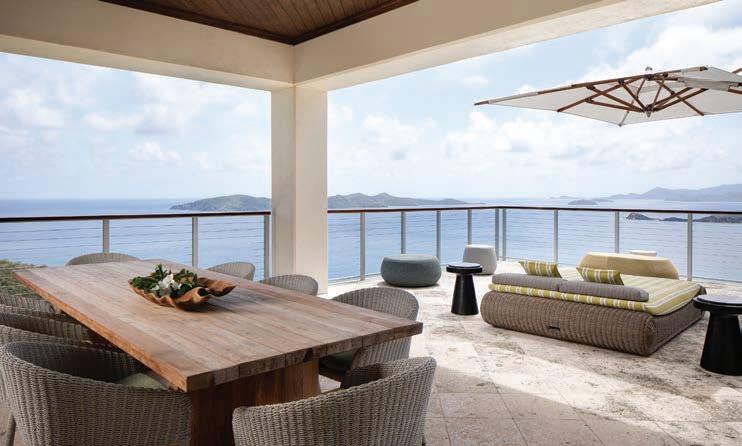
residences on the property. The former features ocean views, a private plunge pool, and a separate apartment, while the latter is a 21,000-square-foot villa with a private infinity pool, hot tub, and two outdoor showers.
Beyond the accommodations, the resort makes a strong statement with its 10,000-square-foot beachfront spa (featuring treatment rooms, a pool, a fitness center, and an oceanside hot tub), The Drake Steakhouse (complete with a wine tasting room), and a watersports pavilion.
Nearby is the Peter Island Yacht Club, with a full-service marina, another pool, a basketball court, pickleball courts, and more. Further afield, this private island also features five powder white sand beaches. peterisland.com
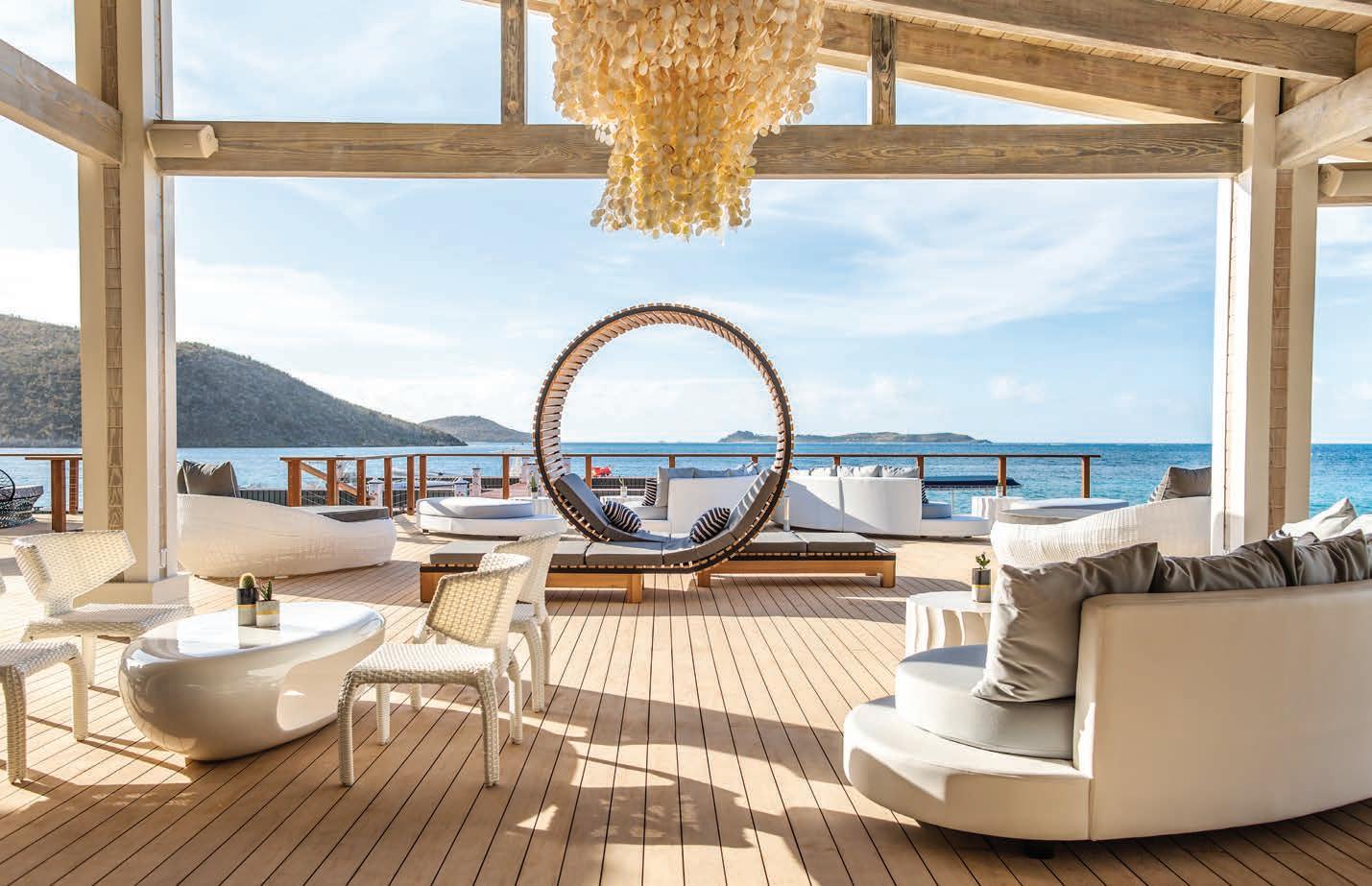
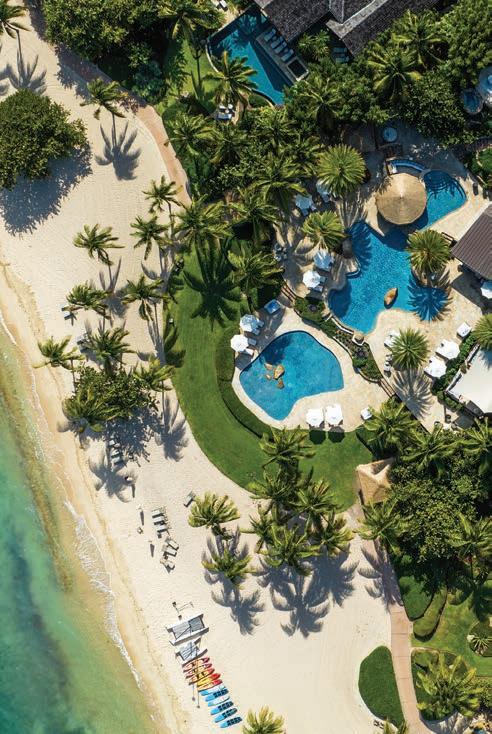
Set off the eastern tip of Virgin Gorda and reachable only by helicopter or boat launch, Oil Nut Bay has arguably the best ocean views in the Caribbean. Spanning some 400 acres, this ambitious project encompasses a luxury resort, a full-service marina, and a real estate development consisting of 15 distinct neighborhoods.
Visitors have their choice of a variety of accommodations, from a one-bedroom suite set on a rocky cliff overlooking the bay to a six-bedroom villa with direct views of the reef-lined turquoise waters. The Beach Club is a gathering place for visitors and residents alike; it features three swimming pools, a
swim-up bar, an open-air restaurant, and various lounge areas for relaxing and taking in the spectacular sights.
Situated so close to the reef, Oil Nut Bay is a natural spot for watersports of all kinds. At the resort, activity coordinators help guests book stand-up paddleboards and kayaks, as well as sailing, snorkeling, and deep-sea fishing adventures. The marina is also a cut above the usual, with 100 berths able to accommodate yachts up to 130 feet in length. The British Virgin Islands have a strong claim on sheer natural beauty; Oil Nut Bay may just be the most beautiful and pristine location of them all. oilnutbay.com
OIL NUT BAY, VIRGIN GORDA
Courtesy Oil Nut Bay (2).
Opposite:
Courtesy Rosewood Little Dix Bay/Ken Hayden (2)
ROSEWOOD LITTLE DIX BAY, VIRGIN GORDA
Dating back to 1964, the Little Dix Bay resort is closer to the pulse of the BVI than Peter Island, situated just a seven-minute drive from the Virgin Gorda Airport and a five-minute drive to the capital of Spanish Town. Since 1993, the resort has been under the umbrella of the Rosewood Hotels & Resort group and, from 2016 on, it has endured a rocky renaissance.
A planned renovation was started, then stalled by the infamous Hurricane Irma. Then, the full reopening, which was scheduled for 2020, was further delayed by the pandemic. Now, more than five years on, Rosewood Little Dix Bay is again one of the most coveted resort stays in the entire BVI.
Although the reinvention has been significant, the resort nevertheless adheres to the principles of its original founder, noted conservationist Laurance Rockefeller. The
resort structures incorporate indigenous materials, while the interior treatments still advocate that relentlessly chic, mid-century modern design that dates to its inception.
As expected, Rosewood Little Dix Bay is a fantastic place to just sit back and unwind. But it’s also a haven for racketsports enthusiasts: There are six tennis courts, two pickleball courts, and some of the best instructors in the Caribbean a mere speed dial away.
In terms of accommodations, the resort features 42 guest rooms, 35 suites, 2 multibedroom villas, and 2 expansive beach houses, one named after the estate’s founder. Food and drink are another main focus: farmto-table offerings and a selection of more than 100 local and international rums in the Rum Room are just part of the appeal of this special place. rosewoodhotels.com
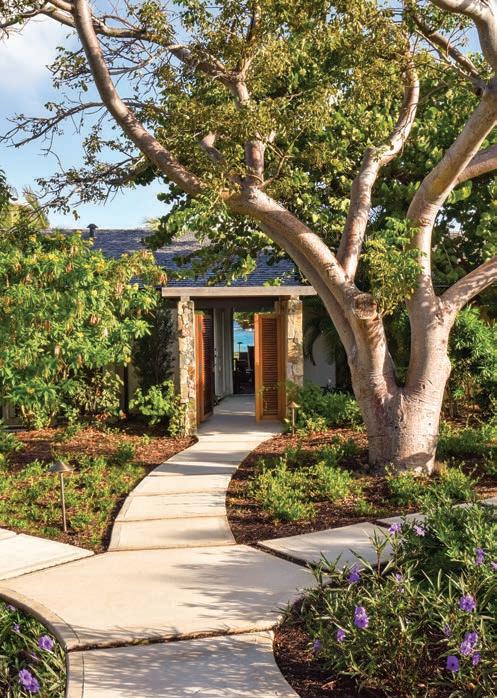
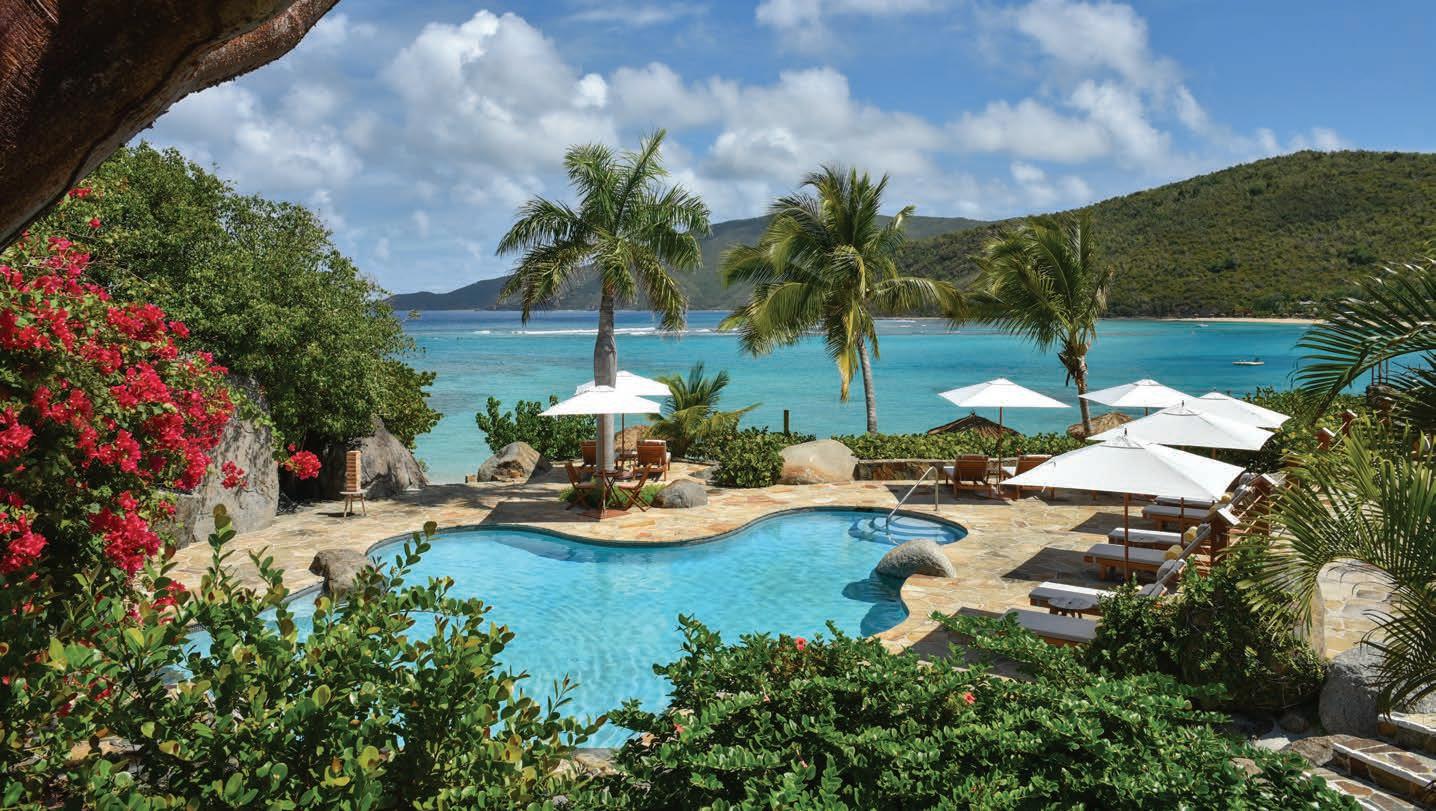
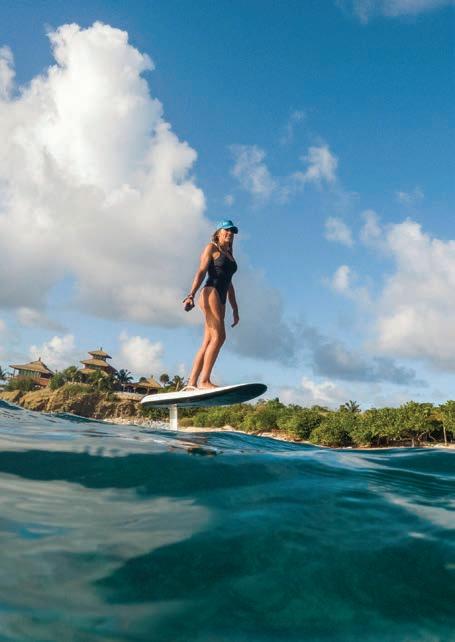
NECKER ISLAND AND THE BRANSON BEACH ESTATE ON MOSKITO ISLAND
As legend has it, business magnate Richard Branson purchased Necker Island in the early 1980s for the tidy sum of $180,000. Nowadays, you can reserve the entire island and it will cost you precisely $147,210 per night. That’s quite the rate of return, when you stop to think about it, but it required plenty of upfront investment.
An initial $10 million transformed the formerly uninhabited island into a private retreat for Branson and his friends and family. In 2011, the main home on the island was destroyed by a fire caused by a lightning storm. Further devastation came in the form of Hurricane Irma six years later. The rebuilt property now includes the Great House, set atop the island’s highest point, and four Balinese-style houses that, all combined, can accommodate 48 adult guests and 6 children.
Not only does Necker Island dazzle with luxury amenities but it also offers a plethora of
sporting activities. These include kiteboarding, waterskiing, wakeboarding, and eFoiling on the water, and tennis, padel, hiking, and yoga on dry land.
The success and exclusivity of Necker Island assured, Branson expanded his presence in the British Virgin Islands with the purchase of the neighboring Moskito Island in 2007. The site of a former dive resort, the island is now home to The Branson Beach Estate, three villas with 11 bedrooms in total.
While the magnate no longer owns Moskito Island, The Branson Beach Estate remains part of the Virgin Limited Edition portfolio of properties, as does Necker Island. These exclusive locations are second to none when it comes to crafting once-in-a-lifetime experiences; no wonder, then, that a glittering collection of A-list celebrities have visited over the years. virginlimitededition.com
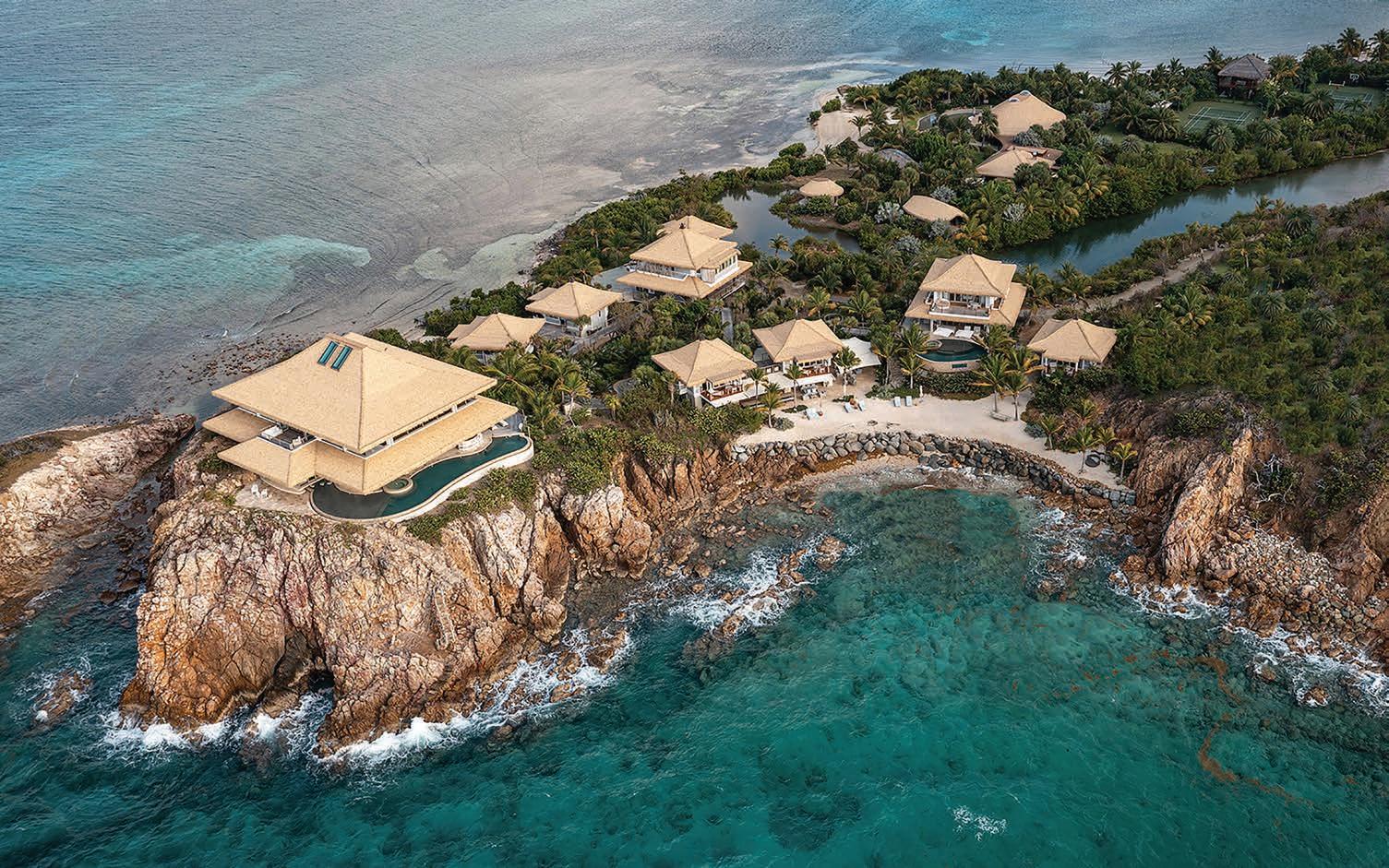
Necker Island watersports; The Brandson Beach Estate, below
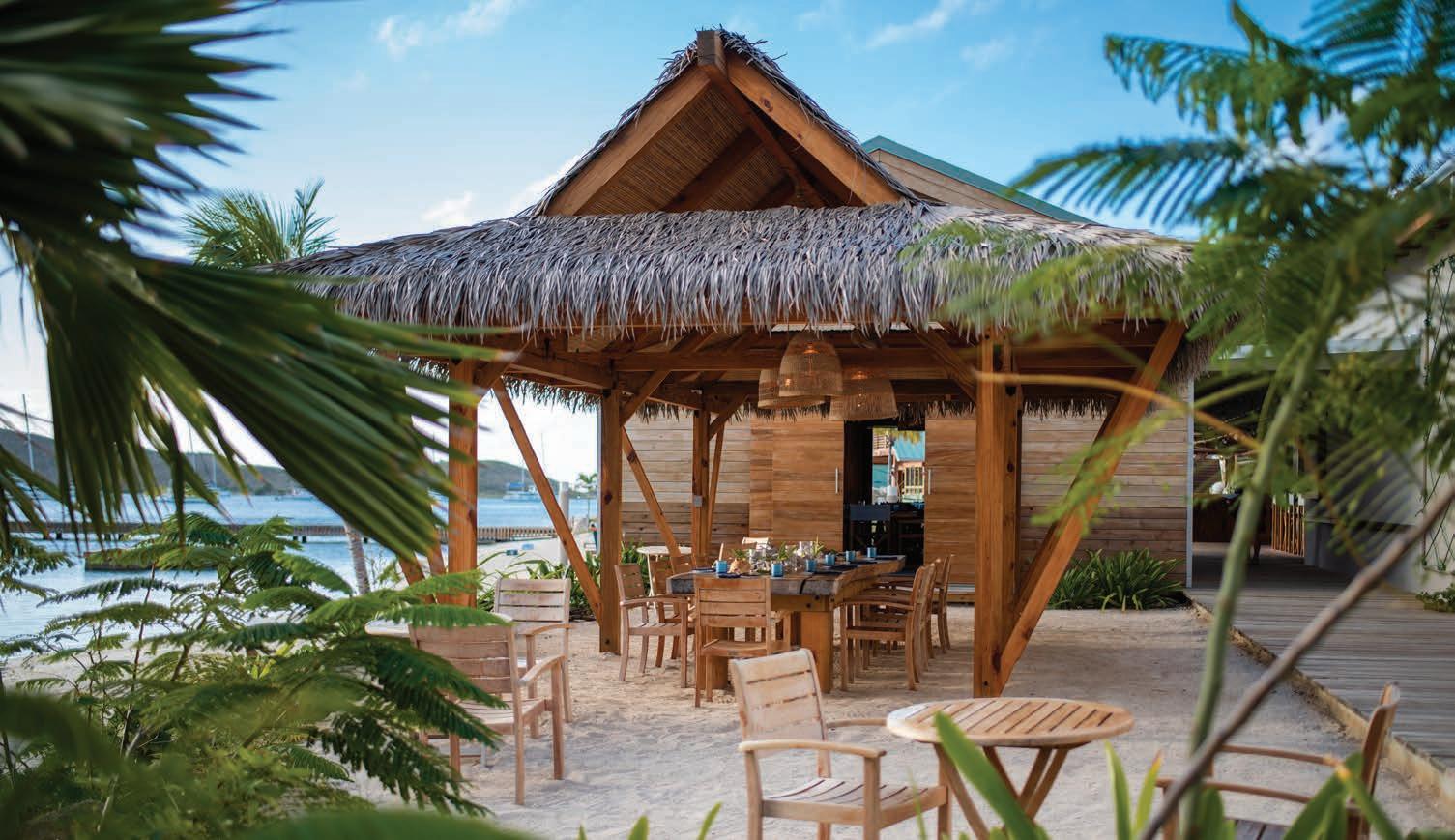
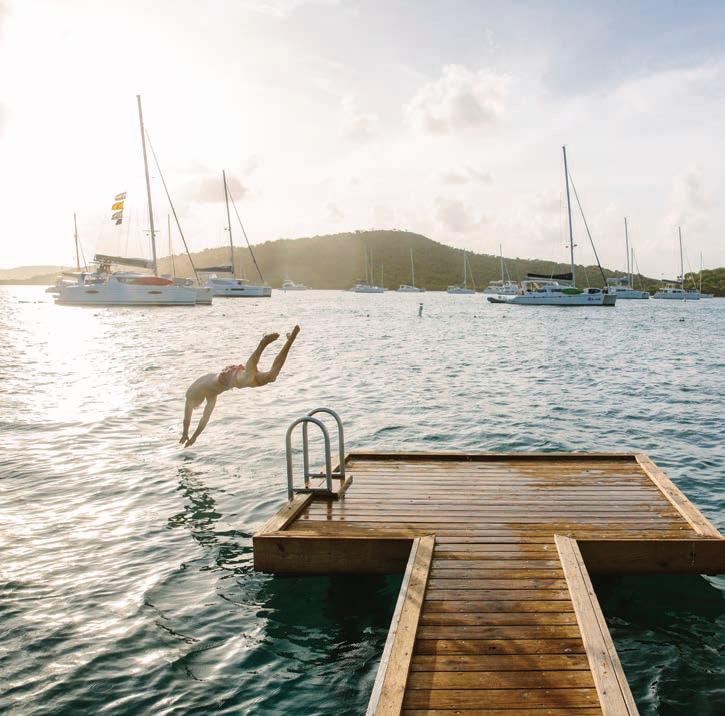
Staying by Sea
Not-to-miss yacht clubs, marinas, and amenities when yachting the BVI.
During that epic charter yacht trip over 35 years ago, one of the great pleasures was to moor offshore and row the dingy to dry land. Once there, we would visit the local sites, such as the Baths on Virgin Gorda, and mingle with fellow travelers in the towns and marinas.
Back then, one of the hot spots was Bitter End Yacht Club (beyc.com) on Virgin Gorda, which has now been a fixture in the BVI for over 50 years. A complete rebuild after 2017 has made the place more enticing than ever. The shops, restaurants, and
bars have been shored up by a brand-new marina and new accommodations, especially the overwater marina lofts.
Another mainstay of the BVI yacht set is Biras Marina and Resort (biras.com), also located on the North Sound of Virgin Gorda. With many of its reimagined amenities still under development, the hosts are focusing on the spectacular vistas and the work of the chefs at Ikigai restaurant. Here, guests can enjoy a 12-course omakase meal that combines sheer artistry and a rich palate of local flavors. u
Bitter End Yacht Club dock; The Clubhouse restaurant at Bitter End Yacht Club, above
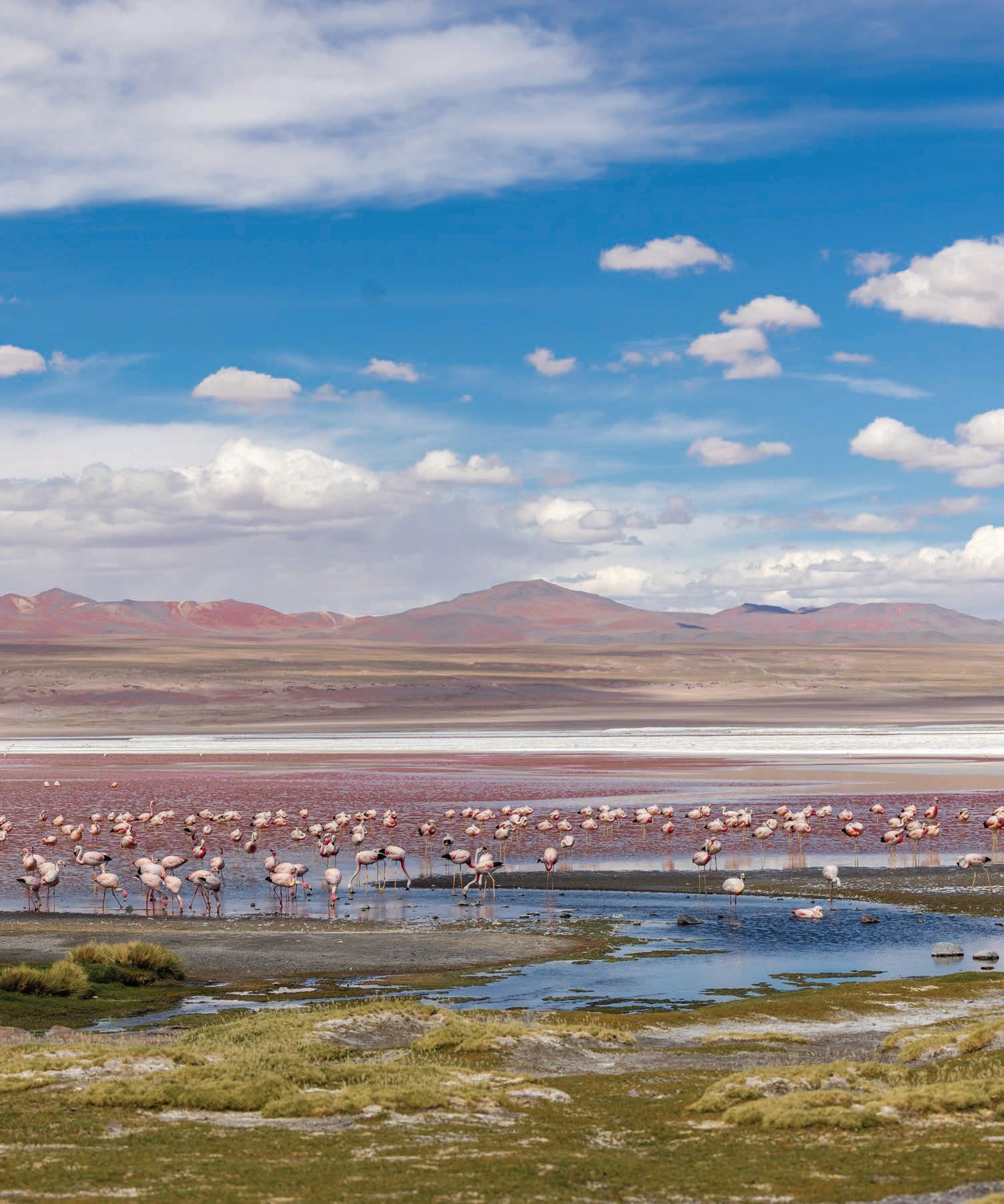
From Left: Paul Rubio; Courtesy Explora Travesía Atacama-Uyuni

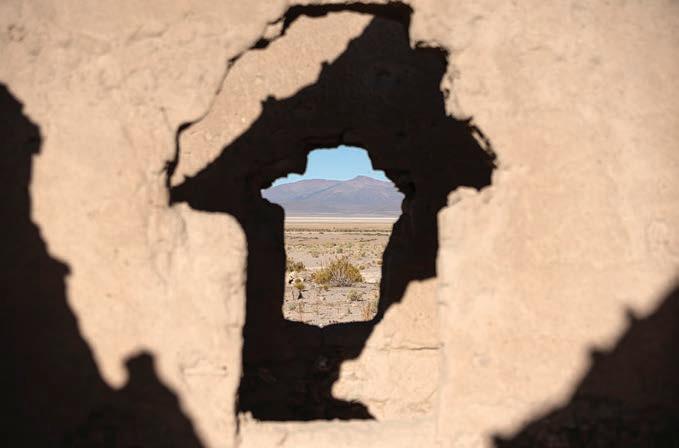
Adventure Package: South America
In today’s hyper-connected world, off-the-grid adventure has the draw of a truly great escape. In tracts of South America, raw wilderness still reigns. From high-altitude crossings between Chile and Bolivia to the untamed reaches of Northern Patagonia, Ecuador’s striking cloud forests (where flashes of color ignite the skies), and the bird-rich islands of the Galápagos, uncover four of the continent’s most remote, awe-inspiring escapes and how to comfortably explore them.
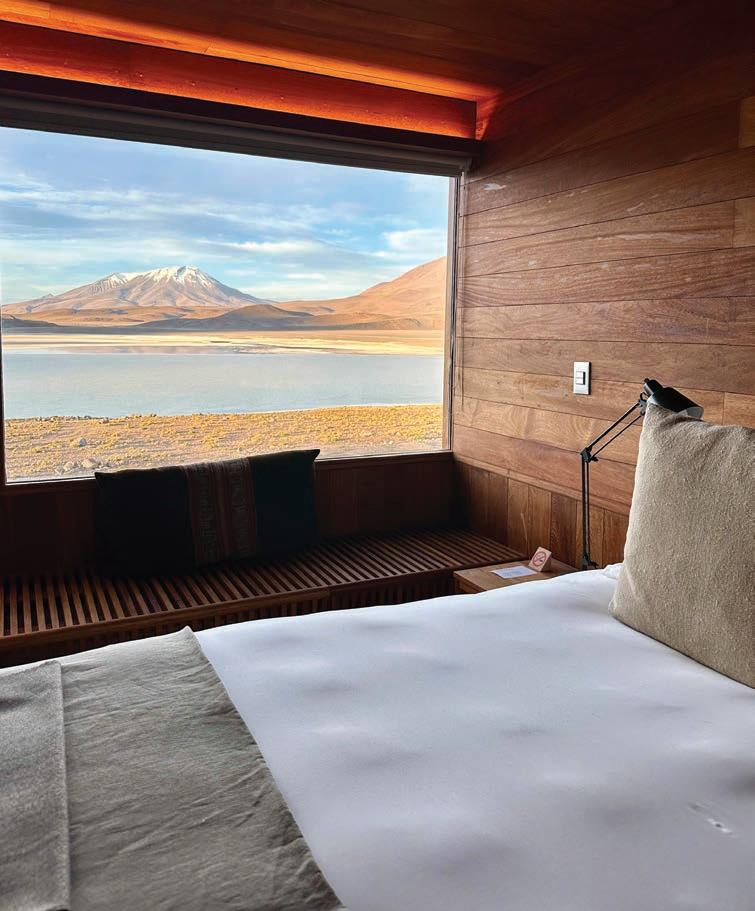
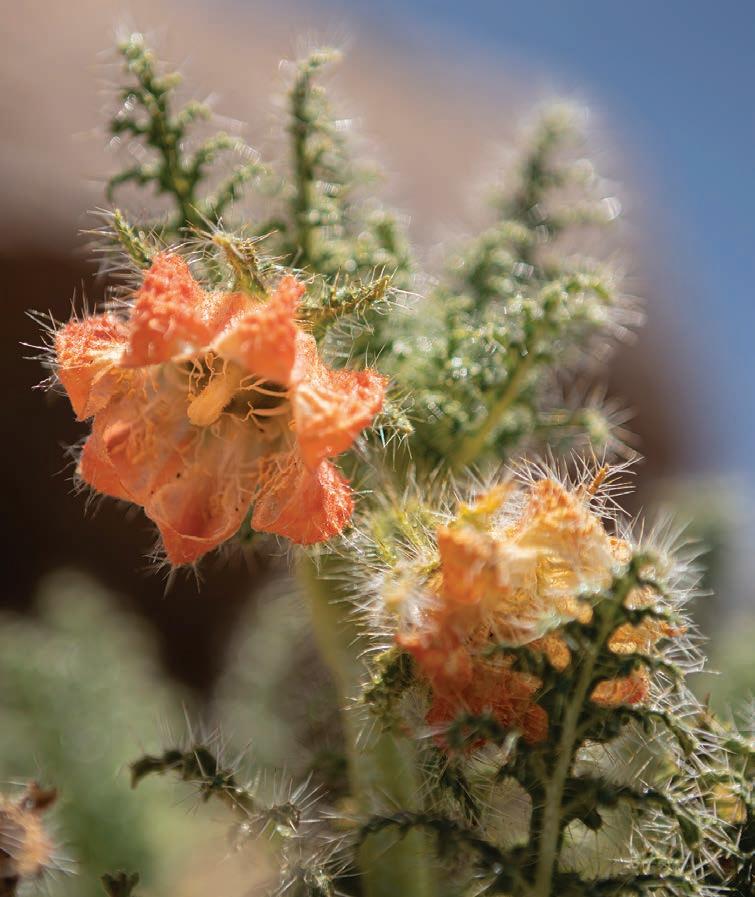
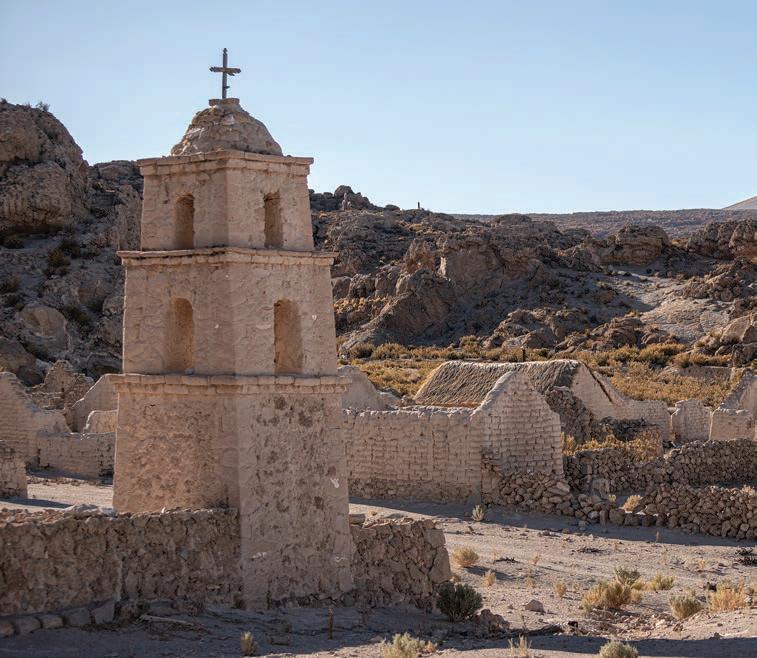
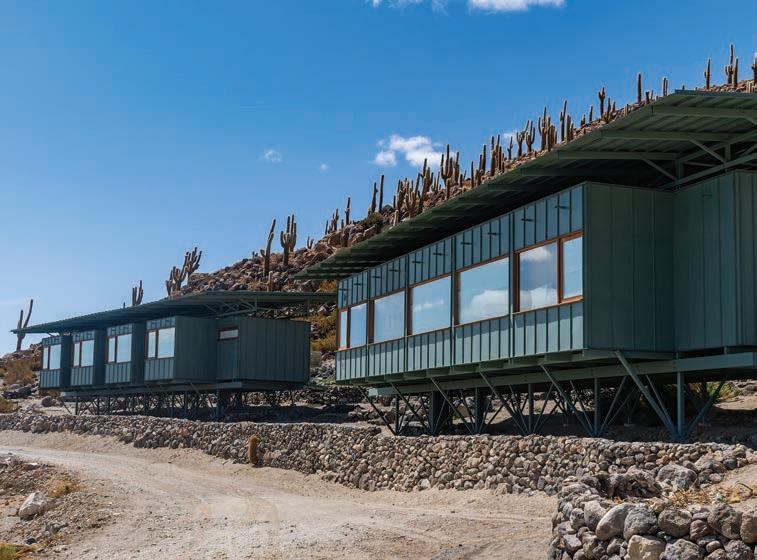
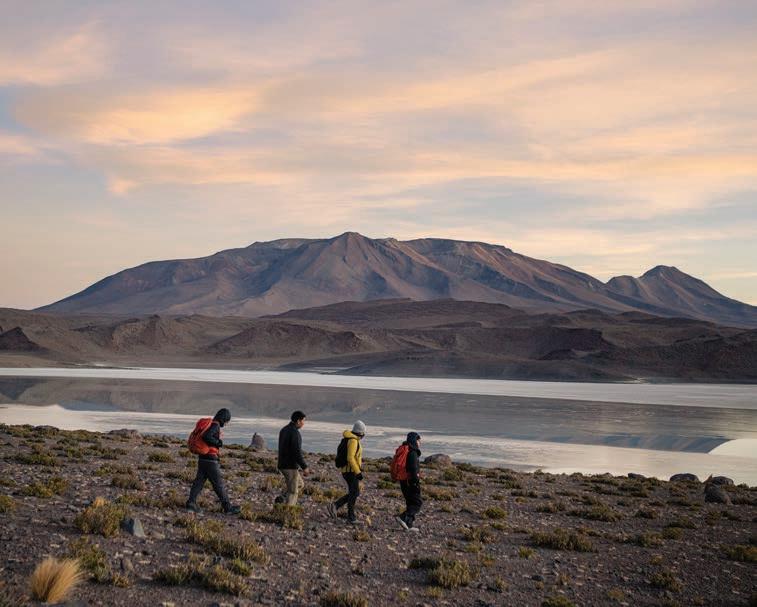
Beyond the Map: Chile and Bolivia
A cross-border expedition with expert outfitter Explora.
In the high-altitude corridor between northern Chile and southwest Bolivia, rust-colored mountains and snow-dusted volcanoes rise from the desert floor, camelids frolic through wetlands, and flamingos gather around mirror-like salt mounds. Geysers hiss and bubble along Mars-like terrain, while the horizon stretches wide and empty in every direction. This is one of the most remote, dry regions on Earth—and the setting for Explora’s Travesía Atacama & Uyuni (explora.com): a one-way, week-plus journey that combines rugged overland exploration with refined, design-driven hospitality.
Spanning 338 miles and traversed entirely by 4x4, the travesía winds through dirt tracks and natural contours to what feels like the ends of the Earth. The route may be wild, but the experience is tightly choreographed: a private driver and guide, flexible daily excursions, and a series of remote, Explora-built lodges that spring up as welcome respite among the desolate terrain.
The trip can stretch 6 to 11 nights and runs in either direction, though beginning in Chile allows for altitude acclimatization and a dramatic visual build. From Chile’s desert resort town of San Pedro de Atacama, begin at Explora’s 42-acre property—complete
with a stargazing observatory, four pools, and a culinary program helmed by Virgilio Martínez of Lima’s Central, once named the world’s best restaurant. From a daily menu of more than 50 guided excursions, resort guests might choose mellow horseback rides across sand dunes, scenic treks through red rock canyons, or demanding full-day hikes past geysers and wildlife-filled plateaus.
Travesía travelers leave from San Pedro, crossing into Bolivia, where the paved roads vanish—and with them, all signs of modern development. The 4x4 journey winds through a shifting and visually arresting landscape. Unfurling one by one are the region’s famed lagoons—each named for its hue, from shimmering Blue to the mineral-laced Green to the flamingo-rich Red, tinted by beta-carotene- and plankton-rich streams. By nightfall, civilization is a distant memory, and the first of three Explora micro-lodges, Ramaditas, emerges on the edge of a high-altitude lake, almost too cinematic to be real.
Like the other two lodges (Chituca and Jirira) custom-built for this route, Ramaditas is a minimalist, low-impact structure tucked into existing terrain. Inside, find soft beds, warm showers, and expansive windows that turn the outside world into living art. The true luxury here is less about excess and more about space, silence, and the freedom to move at one’s own pace.
In between overnights at the lodges, days unfold with meditative drives and invigorating stops—birding in highland wetlands, photographing ignimbrite spires and salt deserts, and walking through fields of ruby and gold quinoa grazed by llamas. Pace and routes are adjusted daily. A guide might serenade with a traditional quena flute as the sun dips behind the altiplano or pull over on a whim to spot a rare Andean fox silhouetted in the distance.
The final act of the journey is the Salar de Uyuni—the world’s largest salt flat, an expanse so vast and blindingly white it appears infinite. Dry sections reveal polygonal salt patterns that stretch to the horizon; wetter patches transform into a mirror, reflecting the sky so precisely it becomes disorienting.
On the northern rim sits Explora’s Jirira lodge, perched above the flats with views so wide they erase the line between land and air. Days here are spent exploring volcanic islands by foot or fat-tire bike, navigating across saltcrusted terrain, or simply watching the light shift hour by hour.
Jirira isn’t just a base—it’s part of the magic. And like the entire travesía, it proves that luxury doesn’t require marble lobbies or Michelin stars. Sometimes it’s a warm meal in the middle of nowhere, a guide who anticipates your pace, a room without Wi-Fi but with an unforgettable view.
Paul Rubio
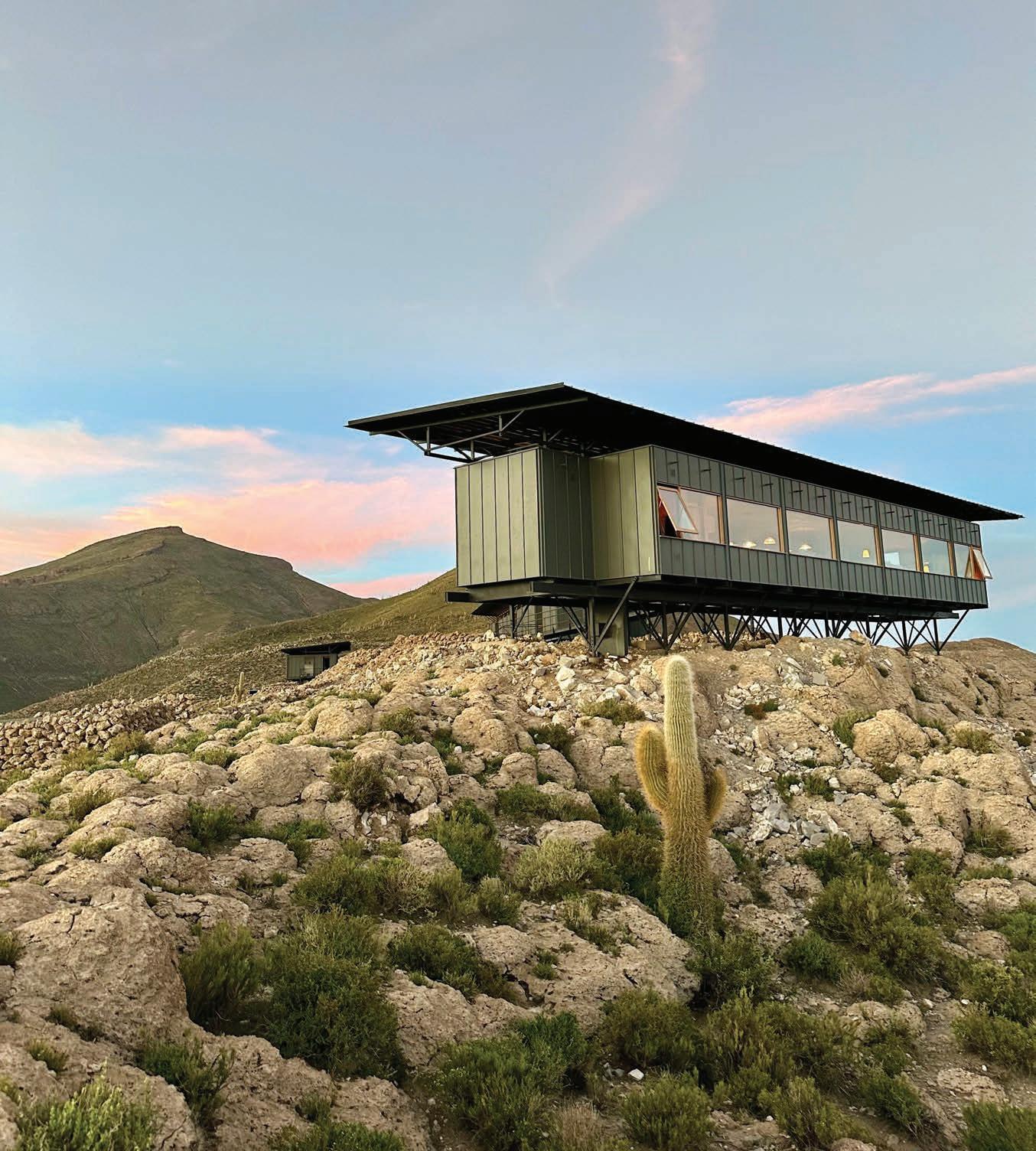
Paul Rubio (2)
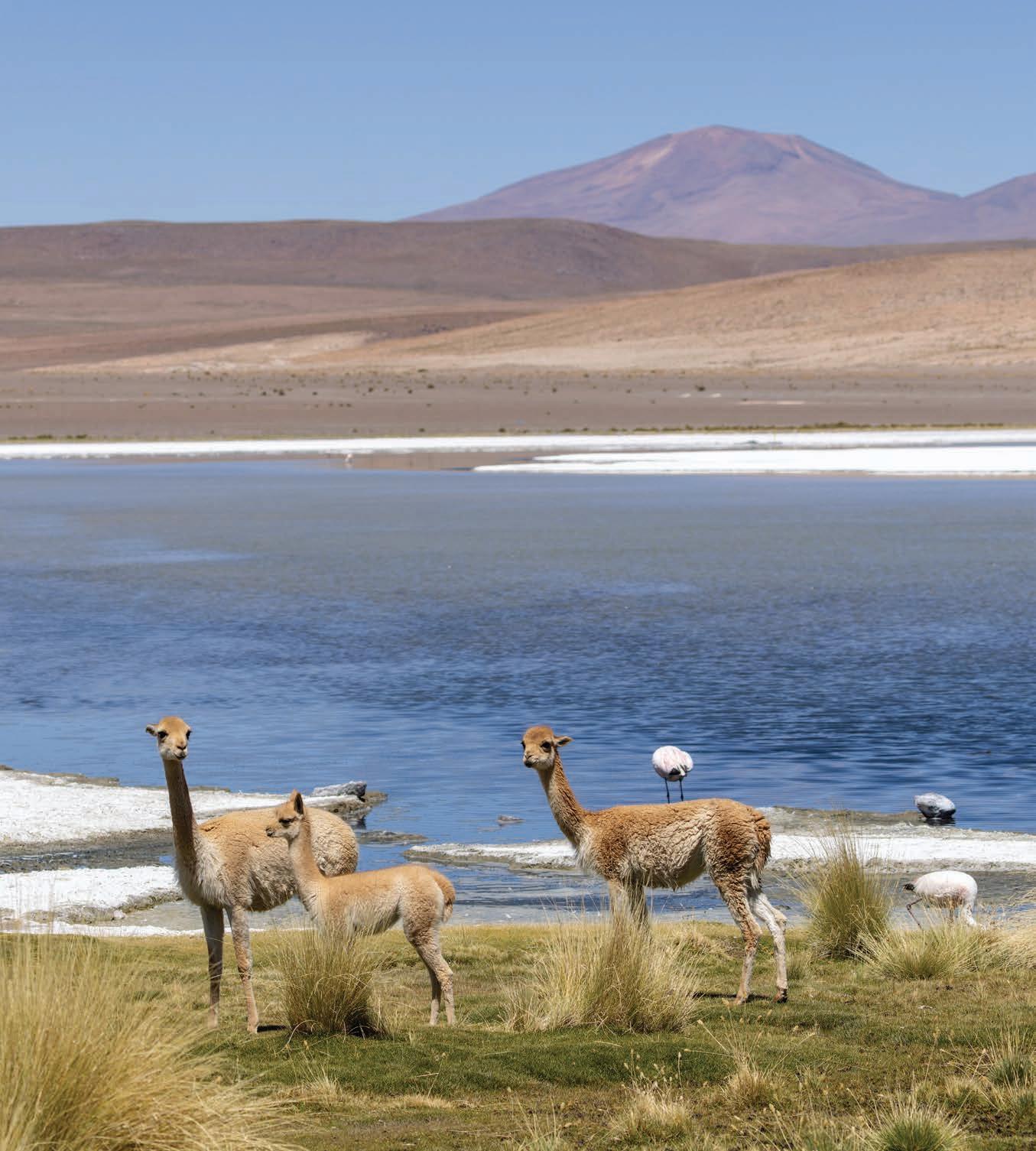
Uncharted Patagonia
Northern Patagonia is emerging from the shadow of its legendary counterpart, Southern Patagonia.
The 770-mile-long Carretera Austral is the missing piece in many Patagonian trips. This remote area of Northern Patagonia is home to 17 designated protected areas yet lacks the crowds of its southern counterparts. Luxury accommodations are a newer concept here and the logistics of navigating rocky roads and mountain passes without phone service can be challenging. Outfitter Extraordinary Journeys (extraordinaryjourneys.com) knows the way, keeping in close contact with its local experts in order to organize weeklong trips for discerning clients.
Jump right into the adventure by hopping in a kayak on the first day. Roughly three hours from Balmaceda Airport, glacial General Carrera Lake is home to the magnificent Marble Caves (sometimes called the Marble Cathedral). Over thousands of years, wind and water masterfully sculpted these famous geological features. The only way to see them is by boat—and to get up close you need a kayak. The artistry of the elements is on full display here: Glacial silt gives the lake (Chile’s largest) a turquoise hue; minerals on the rocks create beautiful striations and patterns. The entire scene changes colors depending on the lighting, making each visit unique.
In the morning, set off on a full-day excursion in Laguna San Rafael National Park in search of a different natural wonderland. The lush forest eventually gives way to the rocky, moon-like moraine with panoramic views of 13,000-foot Mount San Valentín and the Exploradores Glacier that descends from the Northern Patagonian Ice Field. Once on ice (suited up in crampons, gaiters, and a helmet), guests begin a twohour glacier trek along the world’s secondlargest contiguous non-polar ice field. Avoiding sneaky crevasses (that initially
look like any other divot in the glacier) requires digging your crampon spikes into the ice with force. You’ll walk the same way while exploring the numerous ice caves, some with slick, neon-blue tunnels that plunge into alarmingly infinite darkness. Afterward, join seemingly everyone else in town for a beer at the local pub in Puerto Río Tranquilo and eventually retire to family-owned ecolodge, Mallín Colorado, in time for an elegantly plated dinner and lively conversation.
Wake for tea on your cabin’s wooden terrace, looking across General Carrera Lake toward the mountains and listening to the birds. Back on the road, make a brief stop at the Confluence of Rios Baker and Neff to marvel at the two rivers colliding into a fast-paced, electric-blue waterway. Further down the road in the Chacabuco Valley is Patagonia National Park, in the heart of the Carretera Austral, Explora opened the park’s first and only lodge in 2021. The stone hideaway is home base for a few nights to take advantage of the all-inclusive, 17-room hotel’s full- and half-day guided excursions—and its memorable restaurant, with a span of wallto-wall windows showcasing the mountains beyond. On a half-day hike through the park, you’ll likely see spotted guanacos, green Austral parakeets, and hawks, as well as wild orchids, Indian bread mushrooms, and wildflowers along Laguna Cisnes. A full-day hike deeper into the park reveals incredible views of Lake Cochrane and Argentina off in the distance. Around Lago Chico, green grass gives way to rocky ledge trails, where curious viscacha perch on rock formations framed by snow-topped mountains. Take in the view over a picnic lunch of chef-made soups and sandwiches. The picnic spot up on a promontory facing the length of the lake allows for a unique bird’s-eye view of the world and time to ponder its vastness and wild wonders.
—Hillary Richard
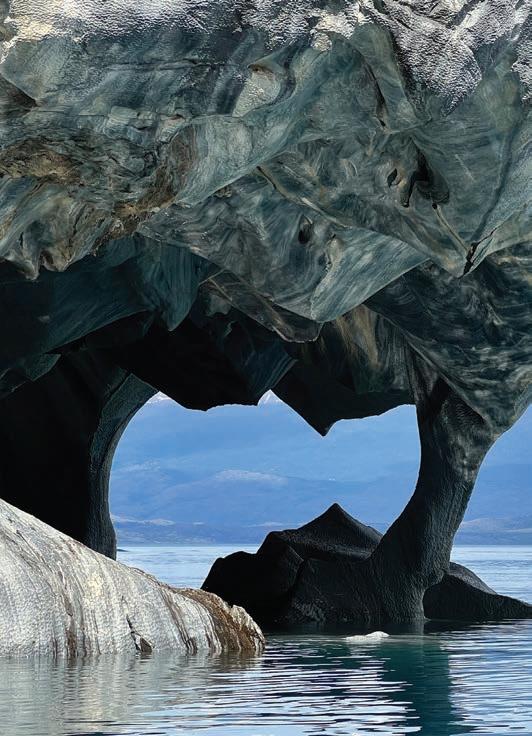
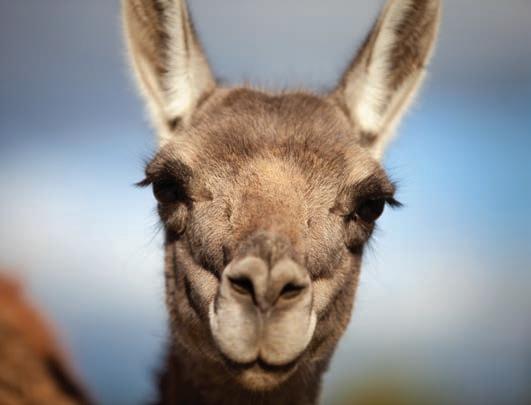

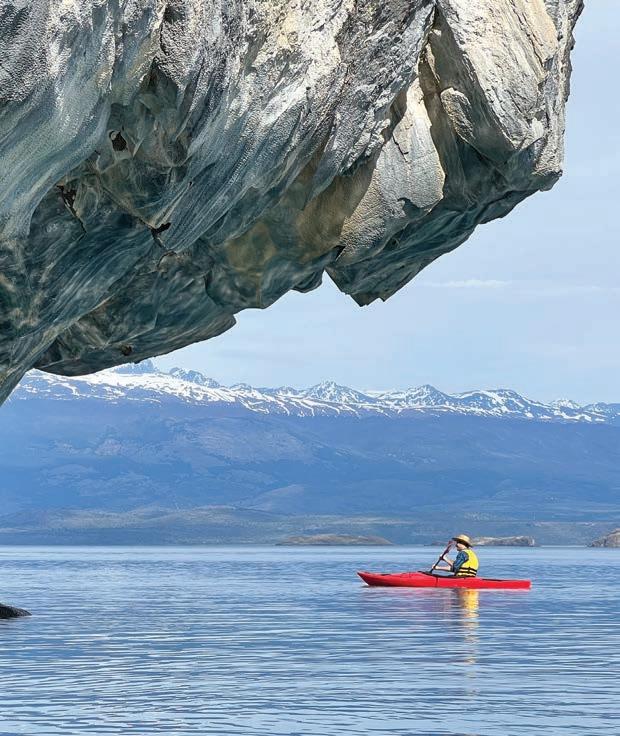
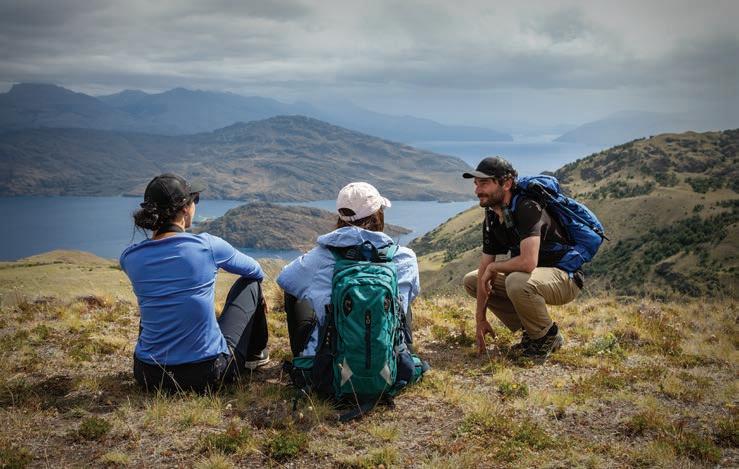
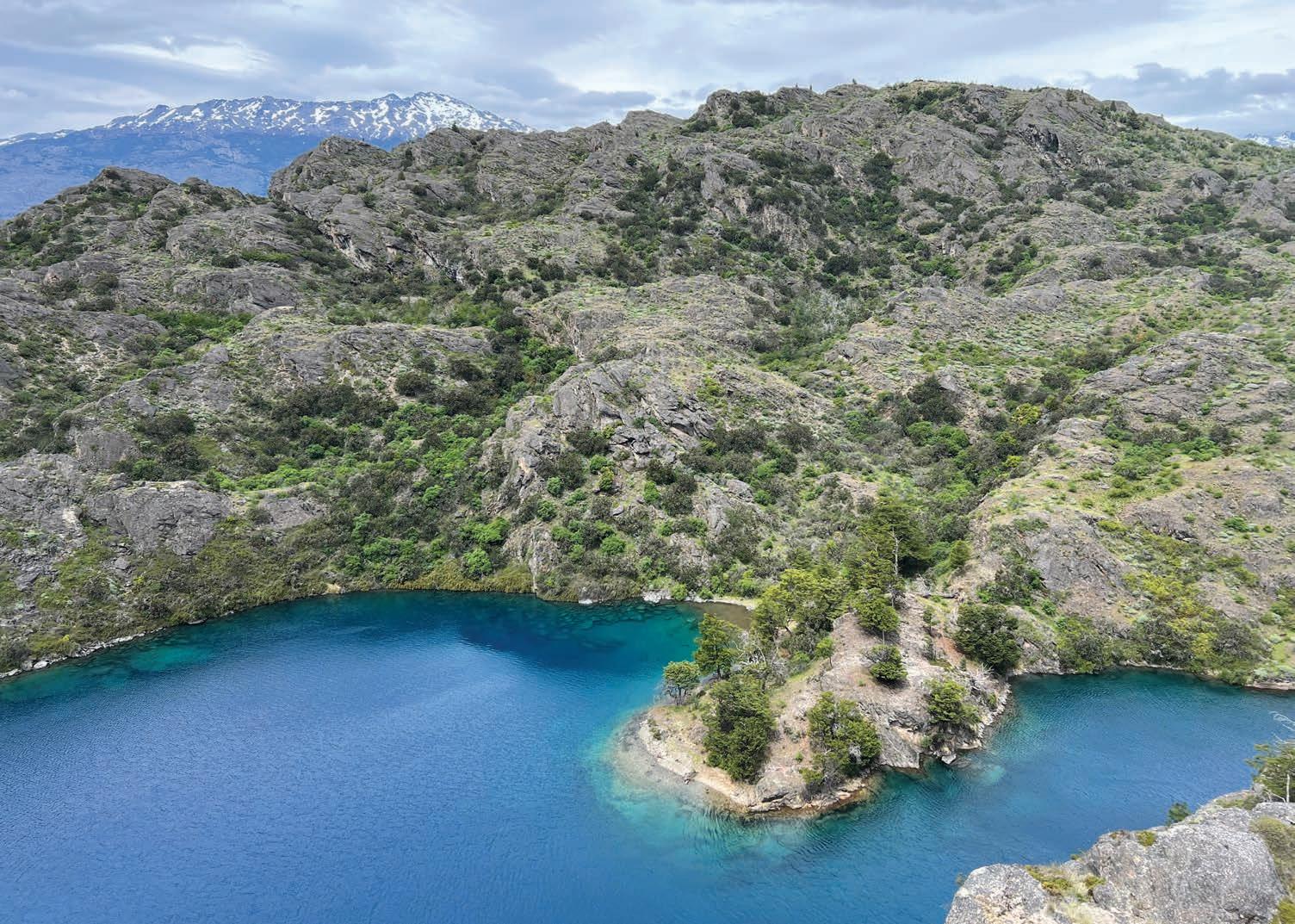
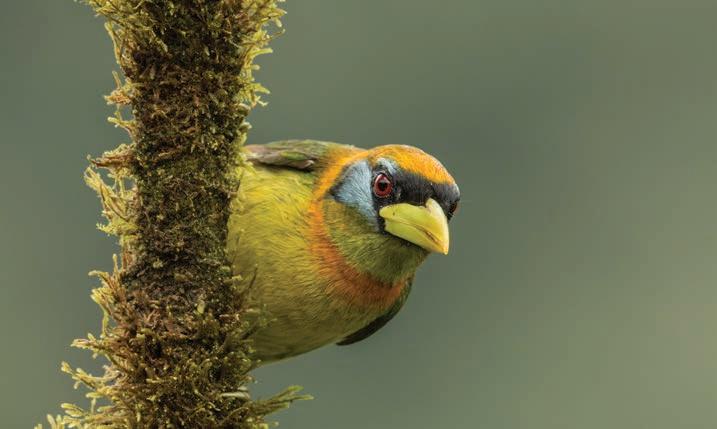
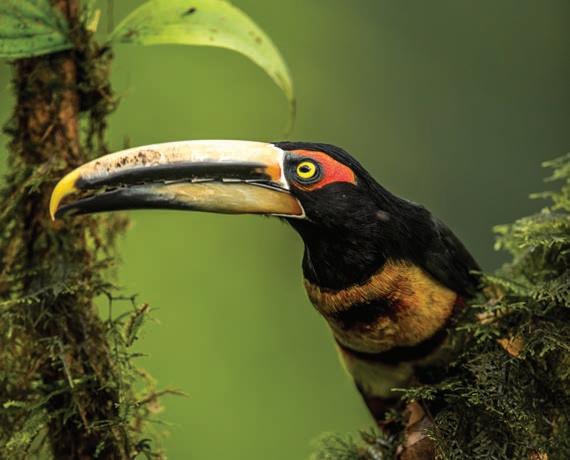
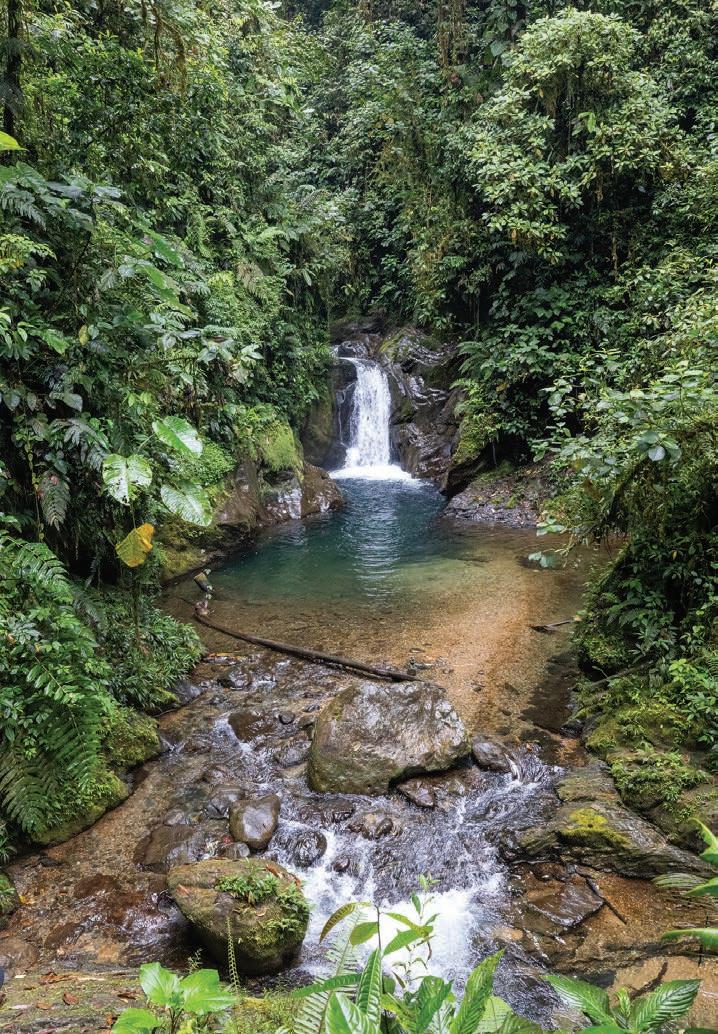
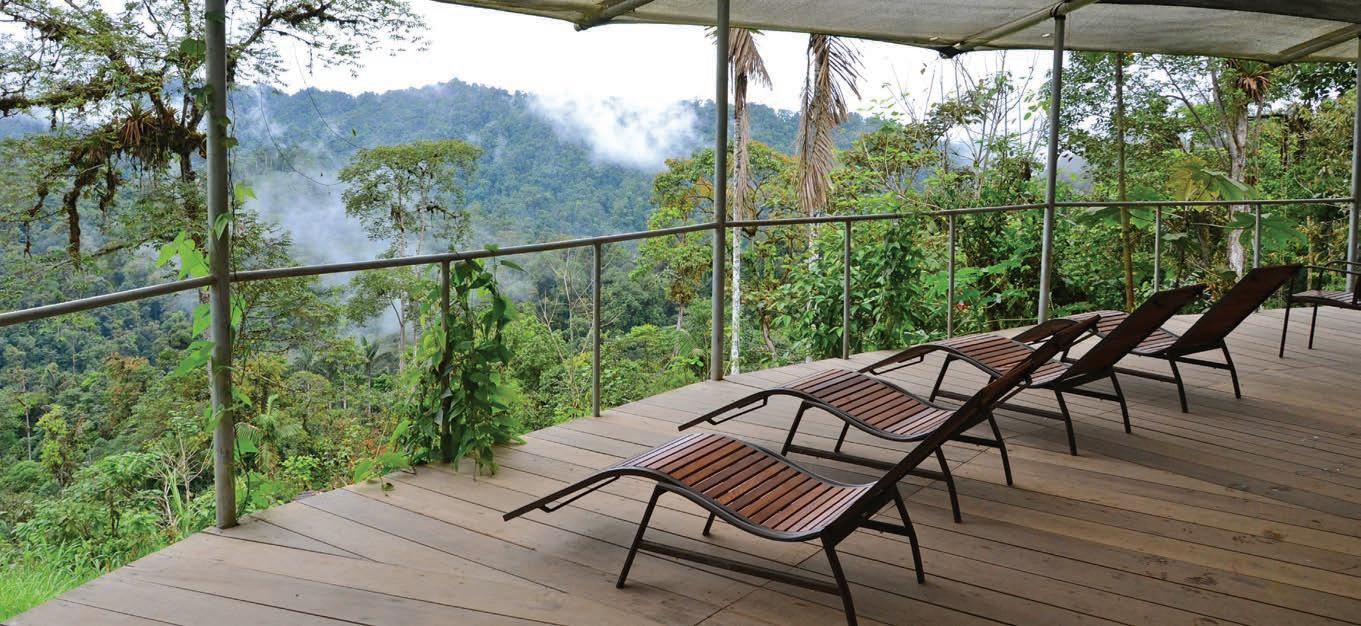
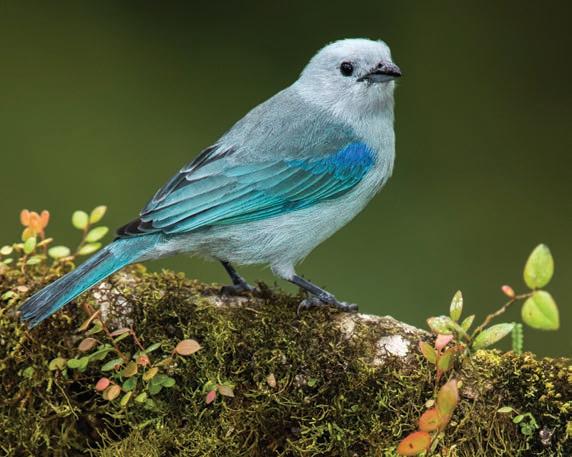
Aviary in the Clouds
At Ecuador’s Mashpi Lodge, birds ignite the skies.
Three hours northwest of Quito in Ecuador’s cloud forest, Mashpi Lodge (mashpilodge.com) blends modern design with ecological purpose. Surrounded by a 3,000-acre private reserve within the Chocó-Darién biodiversity corridor (one of the most species-rich zones on Earth), the lodge serves as both a boutique hotel and a hub for conservation research.
Upon arrival, you’ll notice how the steel-and-glass structure appears almost camouflaged within the dense forest canopy. To get a similar effect indoors, designers kept the 23 rooms and suites spare and modern, with floor-to-ceiling windows to showcase uninterrupted views of green. There are no televisions, no framed artwork—just the constant movement of mist, foliage, and, most notably, birds.
Mashpi is a birder’s paradise. More than 400 species have been recorded in the reserve, including more than three dozen regional endemics. Early mornings begin on the rooftop terrace, where naturalist guides lead relaxed bird-watching sessions using high-powered scopes and plenty of coffee. It’s not uncommon to spot a dozen or more species in under an hour—from
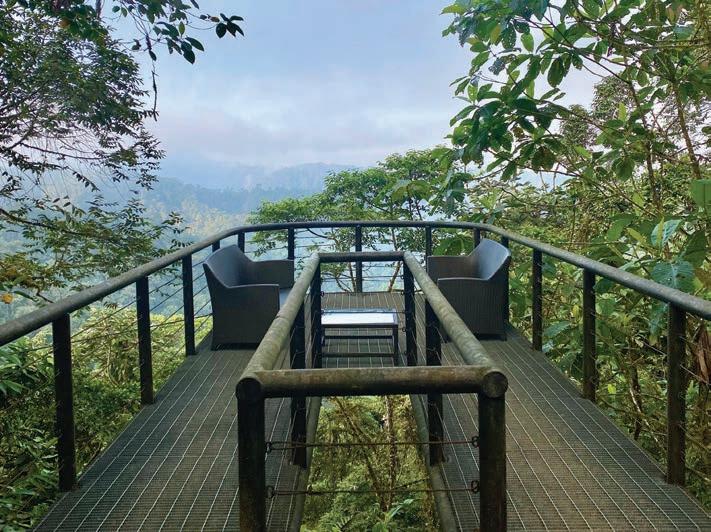
hummingbirds flashing like jewels to toucans silhouetted against the rising sun. Over the course of a single sunrise, you may also glimpse tanagers, trogons, and toucanets—with the added bonus of tayras (adorable members of the weasel family) and margays (small, arboreal spotted cats).
Daily activities are customized to guest interests and comfort levels. Some opt for forest hikes to waterfalls and lookout points. Others visit the lodge’s Life Center, where researchers study butterfly reproduction and hummingbird behavior. The center overlooks feeders frequented by aracaris (a toucan cousin) and more than a dozen hummingbird species, offering an up-close look at their speed, agility, and constant turf battles. Throughout the reserve, various elevations reveal different avian communities, making even short hikes a chance to spot unexpected species.
Guests can also explore the canopy via the lodge’s aerial experiences: the Dragonfly gondola, which glides slowly through the trees, and two Sky Bikes, human-powered rides suspended above the forest floor. For many, these moments aloft are as memorable as the treks below—and a chance to meet the feathered residents at eye level.
Back at the lodge, meals showcase Ecuador’s culinary landscape. Breakfast
includes tropical fruits like granadilla and guanabana alongside eggs, fresh juices, and local breads. Lunch and dinner menus often feature ceviche, grilled meats, and salads dressed with native herbs and fruits. An all-day ice cream bar—with rotating flavors like cocoa nib and passion fruit—is a favorite among guests. While Mashpi delivers on comfort and immersion, its deeper value lies in its mission. Nearly all staff are from surrounding communities, trained in hospitality, research, or guiding. The lodge’s scientific team has contributed to the discovery of many new species, including the now-famous Mashpi Glass Frog (Hyalinobatrachium mashpi)—a translucent amphibian previously unknown to science. Mashpi’s presence has also helped expand environmental protections in the region, reinforcing its role as more than just a place to stay.
The weather is part of the experience— sun, fog, and rain often cycle through in the same hour—but the infrastructure is built for it. Trails are well-kept, rubber boots and ponchos are always available, and flexible planning ensures every guest stays engaged, regardless of conditions. Mashpi isn’t about disconnecting so much as reconnecting—with biodiversity and with the value of protecting what’s left.
—P.R.
Galápagos Unbound
Expanded itineraries reveal a new side of Ecuador’s storied archipelago.
The Galápagos Islands remain one of the world’s most studied and sought-after destinations—a place where wildlife evolved in isolation and continues to shape how we understand the natural world. While many travelers follow the well-trodden routes to classic sights like Santa Cruz and Isabela, new itineraries are opening lessvisited corners of the archipelago, revealing an experience that feels both broader and more intimate.
Aqua Mare (aquaexpeditions .com) takes an eastern route, through Genovesa and Española— two islands infrequently seen by Galápagos visitors. Genovesa, known as “Bird Island,” is home to massive colonies of red-footed and Nazca boobies, great frigate birds, and the predatory short-eared owl. From the beach at Darwin Bay to the dramatic cliffs of El Barranco, birds are everywhere—nesting, feeding, and seemingly indifferent to human presence. The route passes through Española Island and on to Punta Suárez, where hundreds of waved albatrosses court and launch off the cliffs in gusts of wind, a spectacle made more vivid by the island’s isolation and sparse human traffic.
While shipboard luxury is part of the appeal (Aqua Mare has just seven suites, an experienced crew, and a menu created in collaboration with chef Pedro
Miguel Schiaffino), it’s the vessel’s access that makes the difference. Off-the-beaten-track itineraries like this reflect a shift toward more targeted exploration, catering to return travelers and first timers alike who want to move beyond the Galápagos’ greatest hits.
That same mindset applies to diving. Far north of the central islands, the remote sites of Darwin and Wolf offer some of the most dramatic underwater encounters anywhere in the Pacific. Accessible only by liveaboard vessels like Galápagos Sky (galapagossky.com), these islands attract huge schools of scalloped hammerheads, as well as whale sharks, reef sharks, and large pelagic species. Divers gather around cleaning stations, where sharks hover motionless as tiny fish swim in and out of their open mouths. Depending on the season, sightings can include dozens—or even hundreds—of sharks in a single dive.
These additions to the Galápagos experience don’t just expand the itinerary—they deepen it. With thoughtful planning and a growing number of conservationminded operators, visitors can now explore more remote areas of the archipelago without sacrificing comfort or ecological responsibility. Even for those familiar with the Galápagos, these new routes offer something different: a chance to experience a destination that continues to evolve—like the wildlife it’s known for.
—P.R.
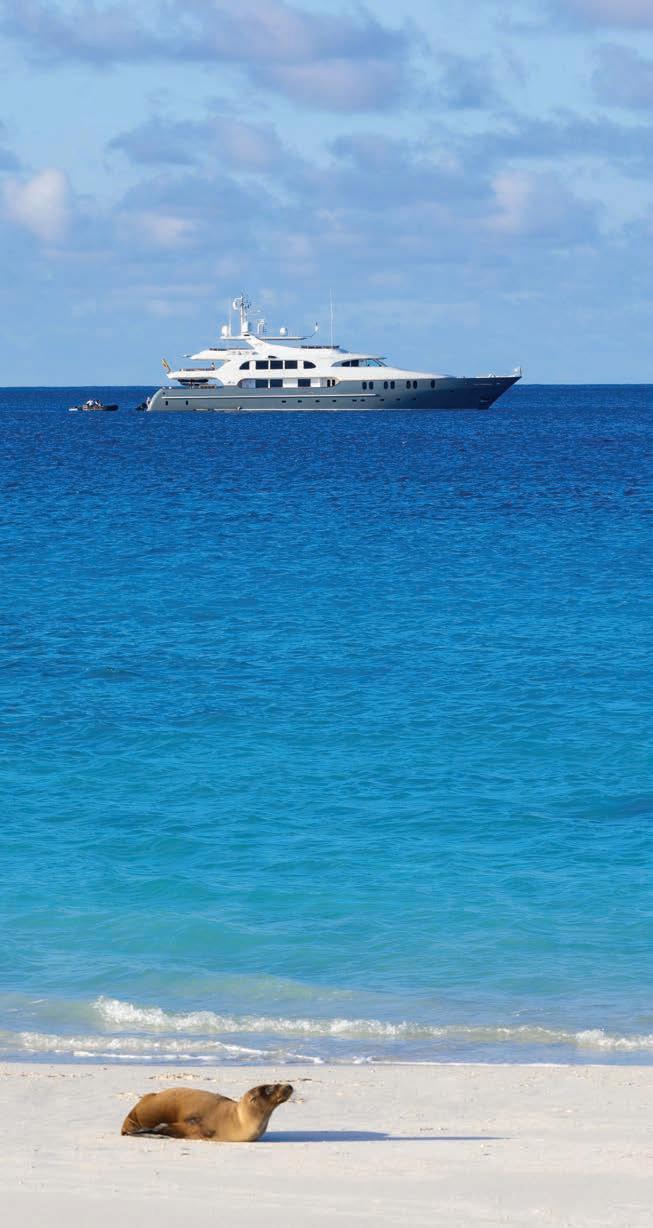
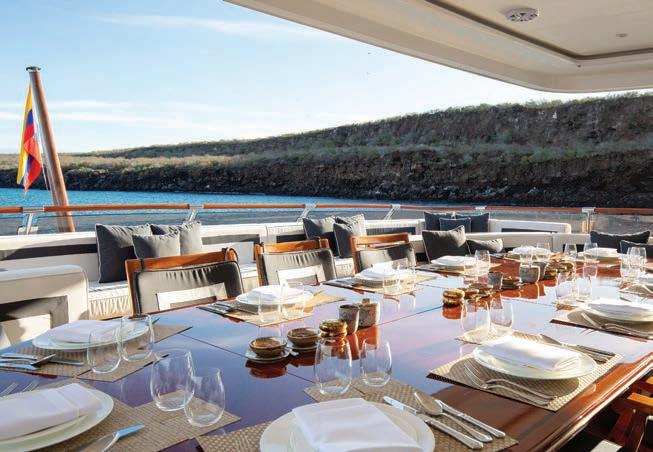
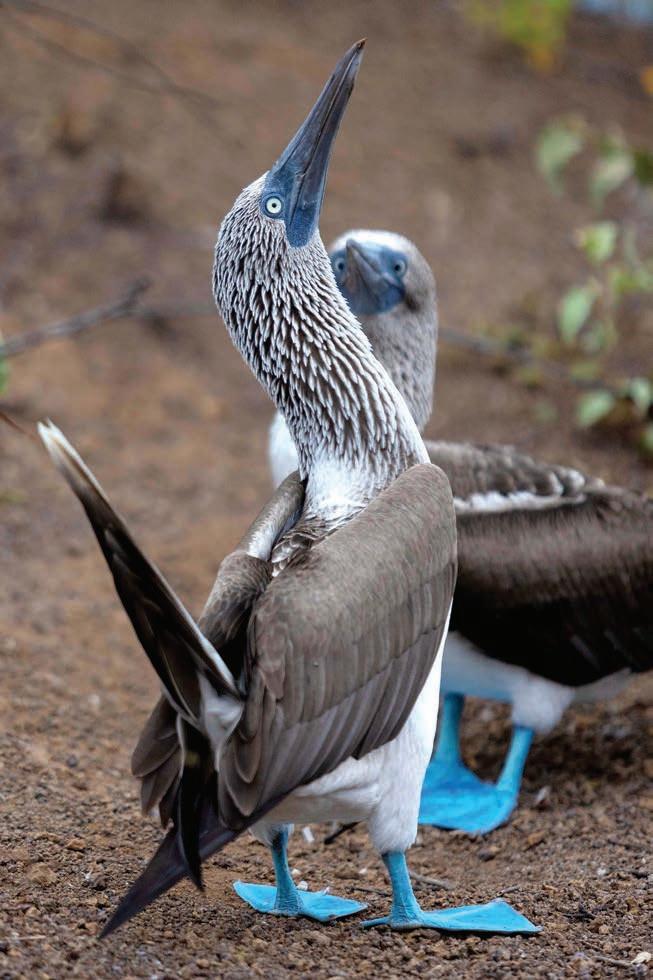
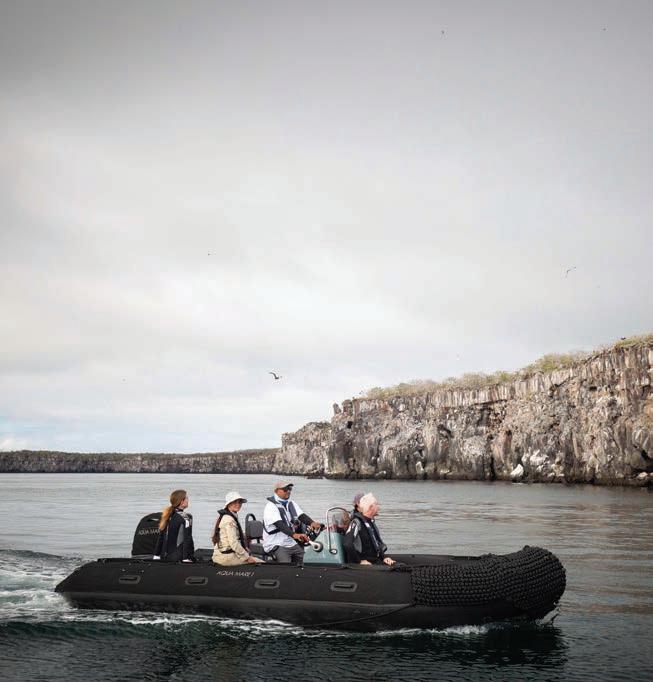
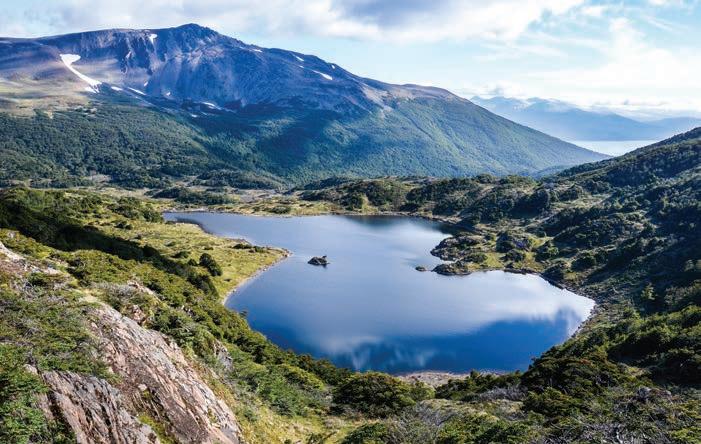
The Next Frontier
For travelers eager to explore South America beyond its headline acts, Emma Fritz, head of sales and product development, South America for Extraordinary Journeys, believes the real magic lies off the radar. “Undiscovered doesn’t mean empty—it means unspoiled,” she says.
Among Fritz’s favorite, lesser-known regions is Chile’s Elqui Valley, a sun-soaked landscape of vineyards and ochre-hued mountains best known for its pisco, high-altitude wines, and celestial stargazing.
In Argentina, she points to Peninsula Valdes, a wild meeting point between Patagonian steppe and sea where “Magellanic penguins waddle along rocky shores, southern right whales calve in the bay, and orcas beach themselves to hunt unsuspecting sea lion pups,” says Fritz. In Brazil, Chapada Diamantina defies tropical vacation expectations with its towering table mountains, deep canyons, and valleys filled with orchids, bromeliads, and capuchin monkeys.
As inquiries for what she calls “meaningful itineraries” increase, Fritz has been recommending Chile’s Isla Navarino. Located
Emma Fritz of Extraordinary Journeys speaks to the South American destinations worth discovering next. —P.R.
in the south, the large island (about the size of Maui) offers “fjords, peaks, and Yaghan heritage, along with world-class hiking, including the Dientes de Navarino circuit—known for being the southernmost trek on Earth,” Fritz says. In Chachapoyas, Peru, travelers can explore the lesserknown fortress of Kuelap—an archaeological site “rivaling Machu Picchu in scale but with a fraction of the crowds.”
Luxury in these regions is less about amenities and more about access. “‘High-end’ means immersive excursions and expert local guiding,” Fritz says. To preserve authenticity, Extraordinary Journeys connects guests with community-based guides, smaller hotels and resorts, and experiences rooted in local culture. On Isla Navarino, for example, “Our clients can kayak through the Beagle Channel accompanied by a local guide … stopping at ancient conchales to see firsthand the remnants of Yaghan campsites,” she says.
To Fritz, the most rewarding trips don’t happen by simply passing through. “You need to stay enough time to understand and feel the place.” u
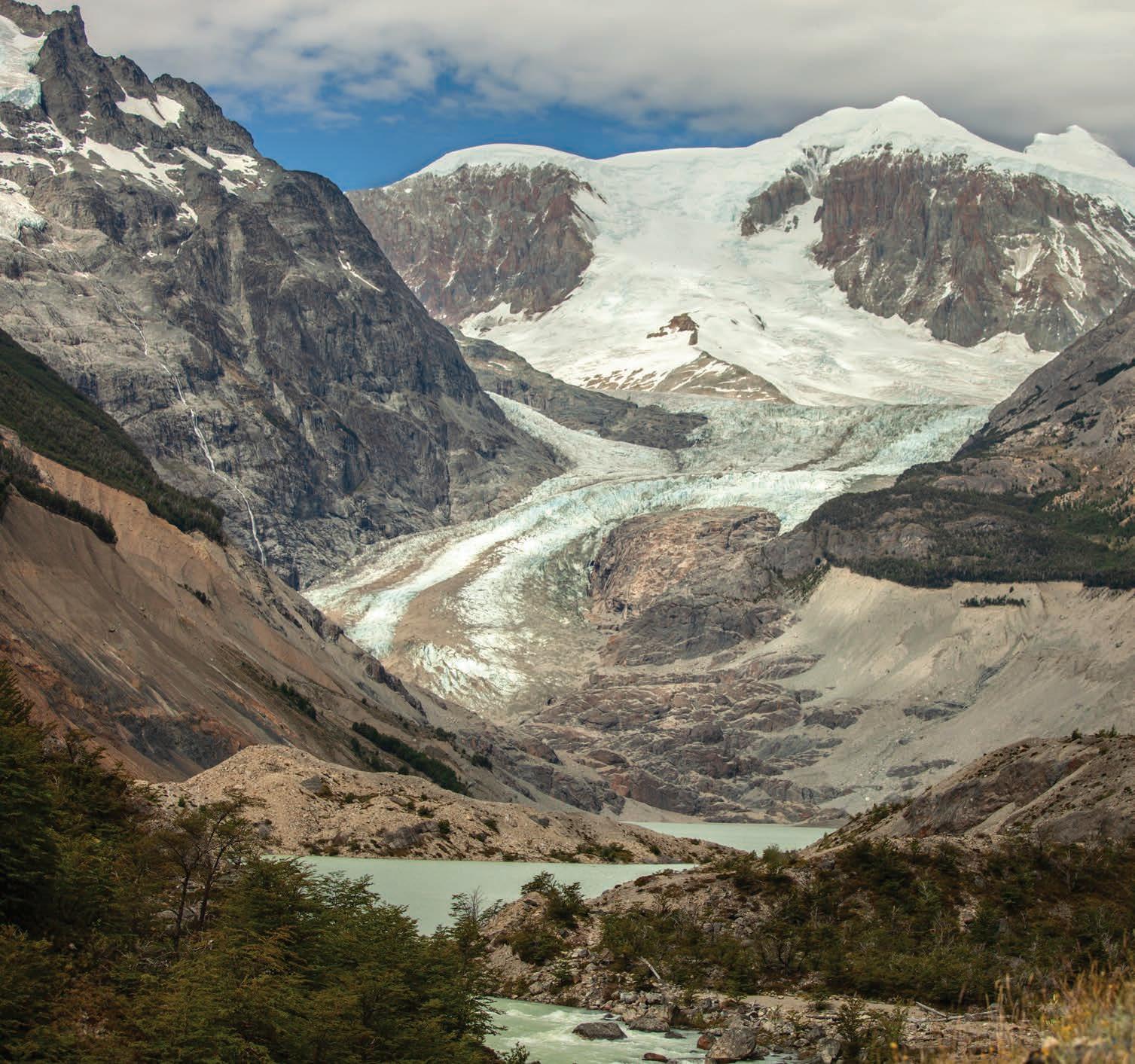
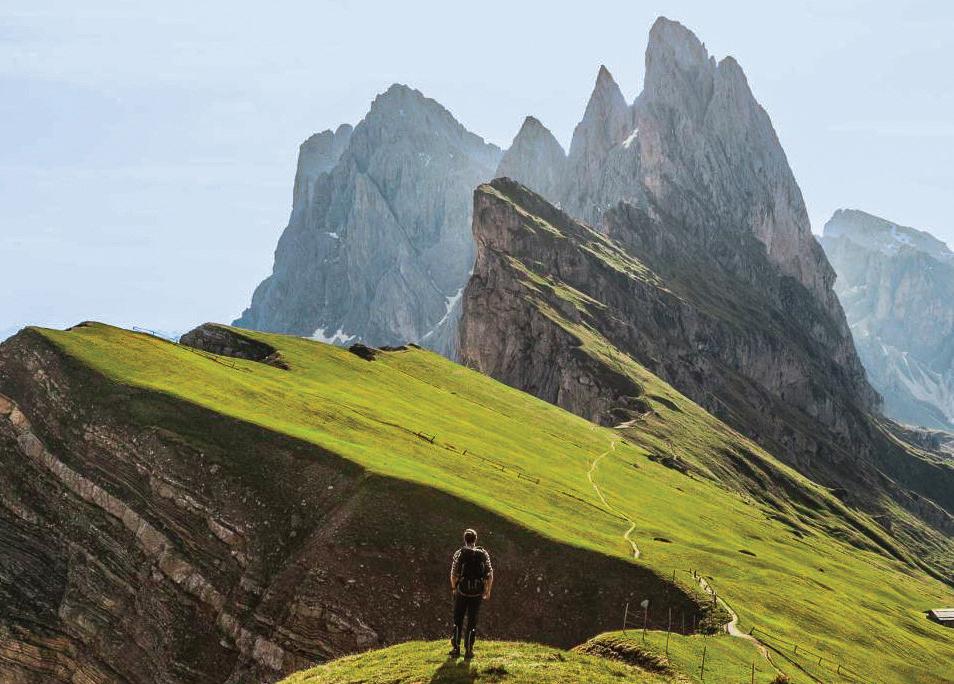
Prone to Wander
The world’s best hiking trips highlight memorable sites at a pace you can enjoy.
BY LARRY OLMSTED
For as long as there has been human history, we’ve gone wandering in the wilderness. Some seek divine insights, others the inspiration of nature; some look for solitude, others want company. Thoreau had Walden Pond, Robert Frost took the road less traveled, and one of fiction’s most revered travelers, Bilbo Baggins, famously opined that “not all who wander are lost.”
On a hiking vacation, travelers find much
to justify the journey: stunning natural sites, rare wildlife, historic places, remote temples and ruins. Food satiates differently after a few miles on foot, and mountaintops mean more when reached by your own power. Book the right location, with the right tour operator, and navigating the complicated logistics of such a trip becomes a walk in the park. You do the walking, they do just about everything else—from moving your luggage to the next top-rated hotel to booking massages
and arranging exclusive access to sites and attractions along the way. Expert guides know the routes and the finest meals along them.
Now is the time to venture out, since the massive, post-pandemic increase in outdoor activities and active travel. There are more great hiking trip options in wonderful places than ever before, and almost all top-tier companies offer both small group scheduled trips and custom private departures for these, some of the world’s best hiking trips.

BASE CAMP HIKING
Patagonia and the Sacred Valley of the Incas Chile and Peru
Many guided hiking trips move from hotel to hotel with luggage transfers included. Others allow hikers to stay in one place and more deeply explore their surroundings, which works well when staying with one of the world’s best —and most unique—adventure travel companies, Explora ( explora.com ). The ultra-sustainable, family-owned business focuses on showing off the best of South America, from nature to wine to regional cuisine. They operate ecofriendly lodges in some of the continent’s most beautiful settings, with multiday programs offering an array of halfand full-day hikes, plus other outdoor activities. Explora has an in-house army of highly trained local guides at each location—experts on culture as well as trails. In southern Chile, Explora raises its own Patagonian horses for those who want to ride. The most famous Explora lodge is in the world-renowned Torres del Paine National Park in Patagonia, accessing lakes, glaciers, rock formations, and some of the most photographed hiking terrain on Earth. A lodge in Peru’s Sacred Valley of the Incas, below the fabled “Lost City” of Machu Picchu, offers access to a staggering array of important ruins. Explora runs its boutique lodges on an all-inclusive basis, with local foods, wines, activities, and guides.
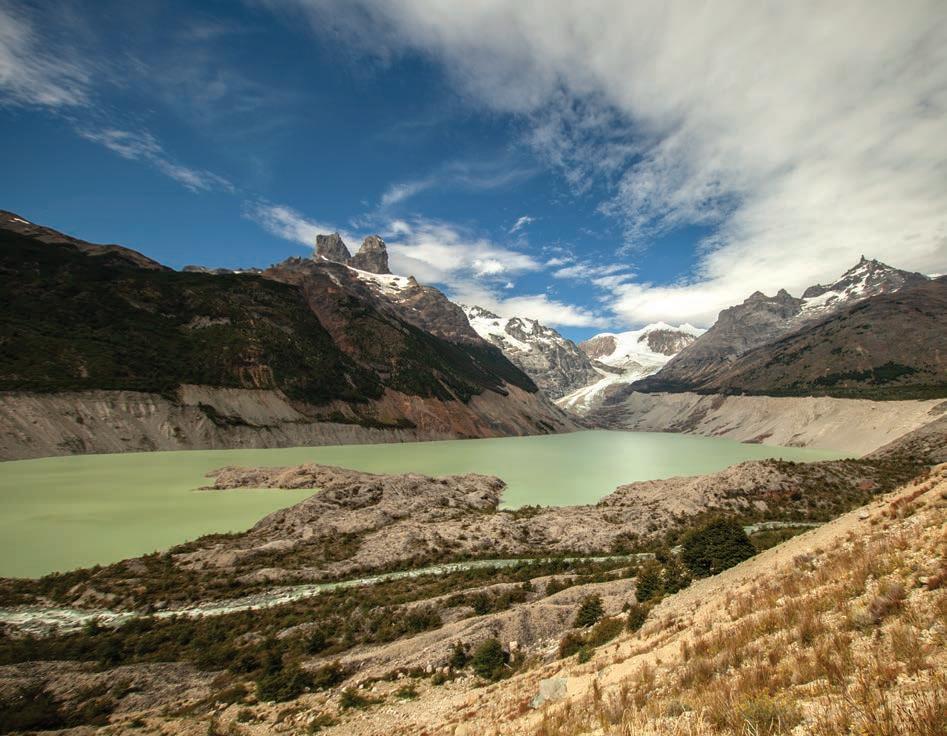
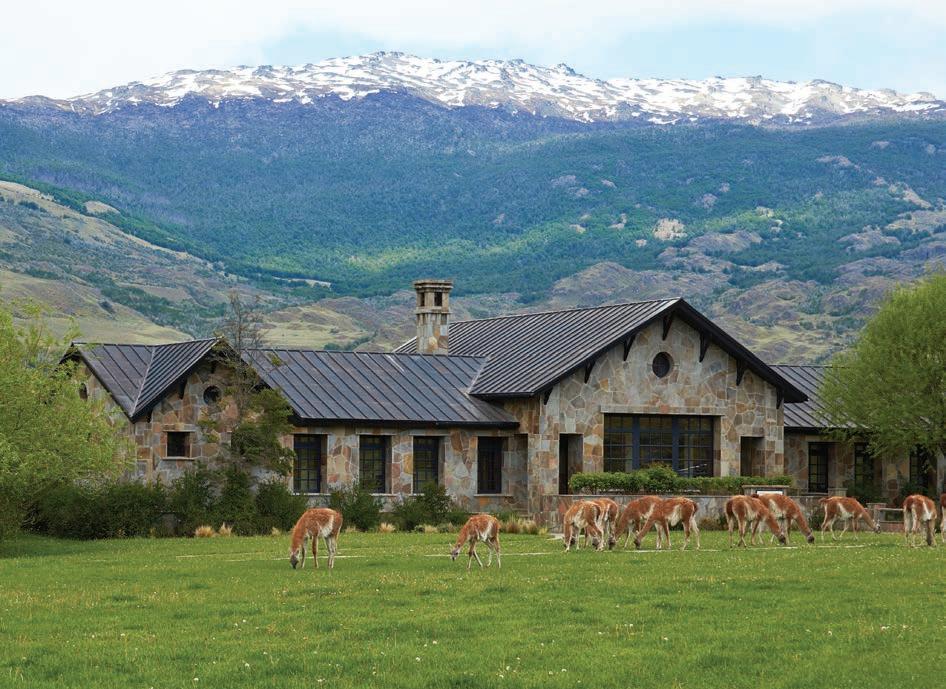

TAKING HIKING TO A HIGHER LEVEL Heli-Hiking
British Columbia
In 1978, CMH Heli-Skiing & Summer Adventures ( cmhsummer.com ), the world’s largest heli-skiing operator, decided to try replicating its proven mountain concept in summer, out of one of its remote lodges. By the following year, summer trips were 100-percent sold out, and CMH has since expanded the entirely new adventure category they created—heli-hiking—to three locations in British Columbia. The CMH program operates like heli-skiing, where guests are flown to a point, dropped off, hike to a finish spot, are picked up, and then do it again and again in a variety of ideal locations, focusing on high alpine meadows, granite cliffs, old growth forests, mountain lakes, and everything else the region offers. Each “run” maximizes the best natural beauty and terrain of the region without all the time required to get there by foot. There is still plenty of hiking, with daily choices from moderate to high output, but all of it is the crème de la crème of the region’s routes. Unlike many top hiking spots, you are unlikely to see another traveler. Guides are experts in the local flora, fauna, geology, and history, and lodges are operated with included meals, equipment, and transfers. Other companies have since started heli-hiking, but no one has been doing it with this frequency for half a century.

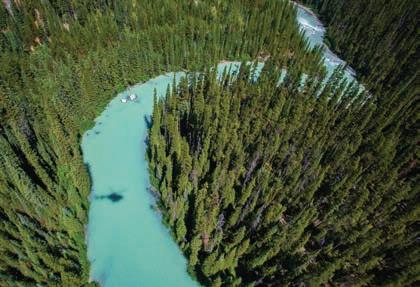
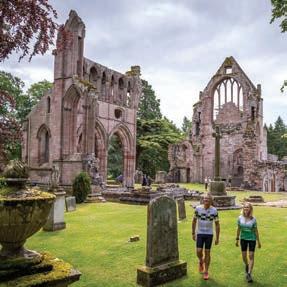
MOUNTAINS, COASTS, AND CASTLES
Ireland and Scotland
Crisscrossed with ancient walking paths; rich in coastline, islands, castles, and history; and home to world-class distilleries and breweries, both Scotland and Ireland are marquee hiking destinations. Both are lush and green with wellmarked trails connecting cities in a way that makes it possible to take in a huge breadth of sites, from downtown Dublin and Edinburgh with their museums and castles to 1,000-year-old ruins and towering waterfalls. The choice often comes down to family heritage or simply trying someplace new. Backroads ( backroads.com ), America’s biggest and best-established active, high-end travel specialist (since 1979) covers both destinations very well. Scotland trips include the Highlands or along the Inverness Coast and Isle of Skye. Women-only and easy-going, lower output itineraries are unique company specialties made possible by the Backroads’ huge catalog. In Ireland, explore the beautiful Cork and Killarney area (full of ancient Celtic monuments), or go from Dublin into Northern Ireland and Belfast. In both countries they use standout hotels such as the Old Course in St. Andrews and the fabled Slieve Donard in Newcastle.
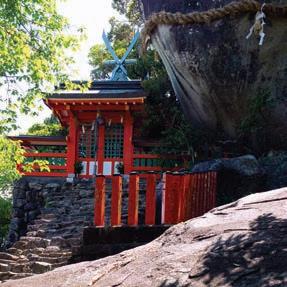
ANCIENT PILGRIMAGES
Japan
It’s no coincidence that the suddenly trendy practice of forest bathing was coined in Japan, a country reverential about natural beauty, from zen gardens to cherry blossoms. Beyond the megalopolis of Tokyo, much of the country is rural and journeys into the wilderness are often spiritual rituals, such as hiking Mount Fuji, a mountain so sacred it is referred to by the honorific Fuji San. Japan is home to several pilgrimage trails linking holy sites, such as the Kumano Kodo: six routes pilgrims have walked for self-purification for over a thousand years, earning a UNESCO World Heritage designation. The Shikoku Pilgrimage connects 88 holy temples in four prefectures, and the Nakasendo Way is an ancient footpath connecting Tokyo and Kyoto. All are offered by English-language specialist Walk Japan ( walkjapan.com ), started in 1992 by two professors of Japanese history. In the three-plus decades since, they have greatly expanded tours, but only in Japan, remaining highly specialized with a bent on educating travelers about local culture and cuisine. The company’s first offering was an 11-day Nakasendo Way trip, still popular and also offered in a five-day “best of” version. There is also an 11-day Shikoku Temple pilgrimage, a nine-day Kumano Kodo pilgrimage, and many others, including specialty culinary trips and winter snowshoe tours.

Courtesy Images,
From Left: Backroads/Jaysen Niedermeyer; Walk Japan (2)
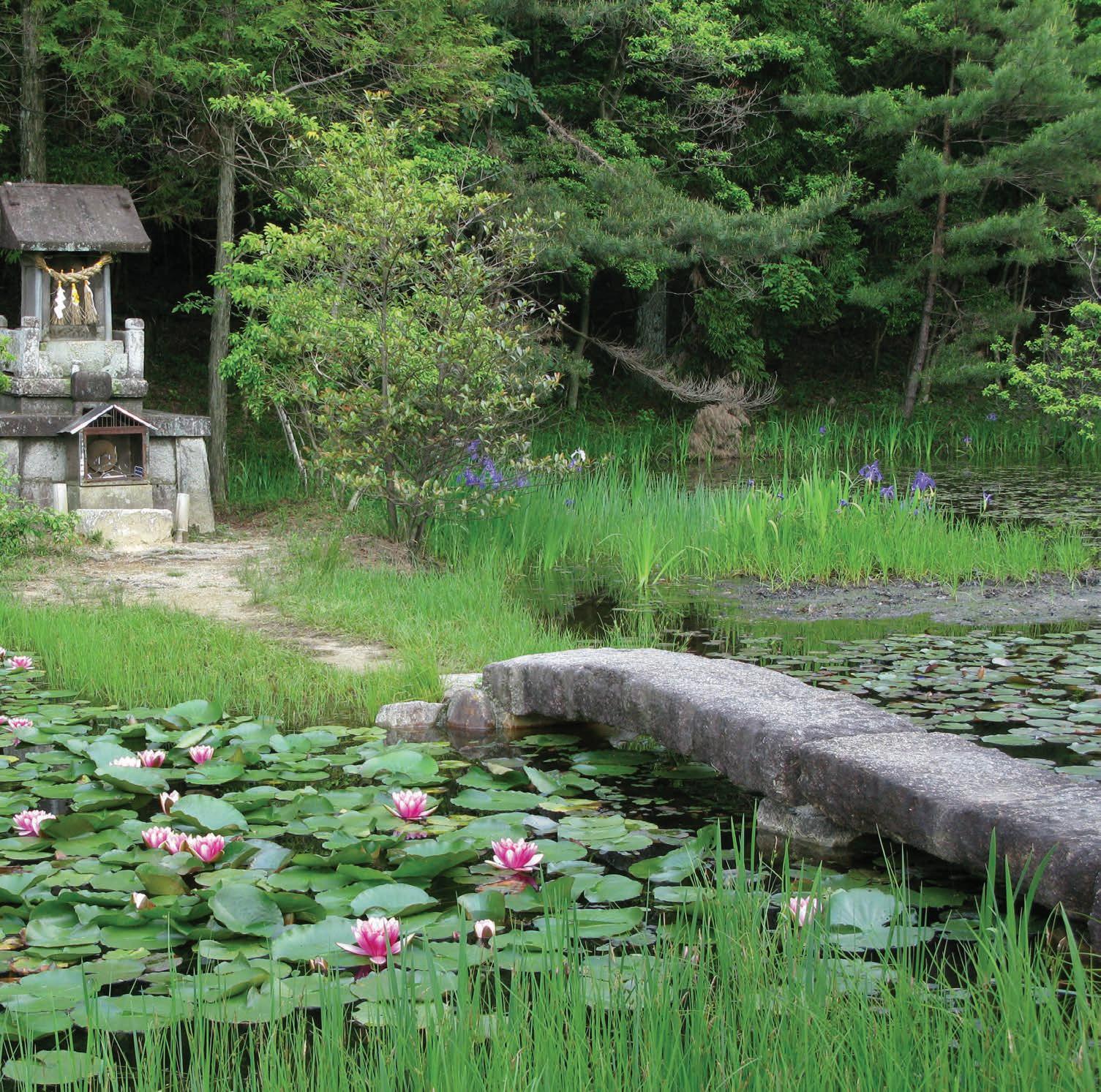
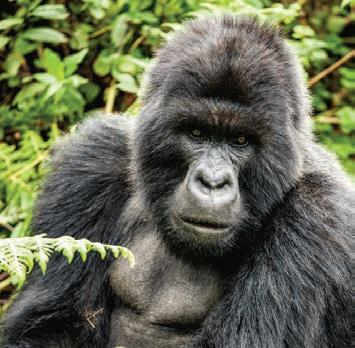
GREAT APES
Gorilla Trekking Rwanda
Wildlife is a highlight of many hikes, from grizzlies and bison in Yellowstone to llamas and condors in the Andes, but there is nothing on Earth like walking with mountain gorillas, found exclusively in Rwanda and Uganda, the former being more luxurious with the best lodges. For many guests this is truly a life-changing experience, as these are the largest primates, and you get up close and personal in way you could not do with a bear. Traditionally a two- to three-day add-on to an East African safari, the world’s best-known luxury active travel specialist, Canada’s Butterfield & Robinson ( butterfield .com ), offers an immersive nine-day Rwanda hiking trip, including gorilla trekking. B&R is widely credited with inventing the entire luxury guided cycling and hiking category in 1966, and in the 60 years since, has built a loyal following for its highly trained guides and high-touch itineraries, from quality lodging (like One&Only and Wilderness Safaris) to exclusive experiences. Gorilla trekking permits are extremely limited, making it virtually impossible to do without an organized tour, and this is a great way to experience it. The trip also visits tea and coffee plantations and Lake Kivu, directs climbs into the forest canopy, tracks chimpanzees, and of course, leads the way to meet silverback gorillas.
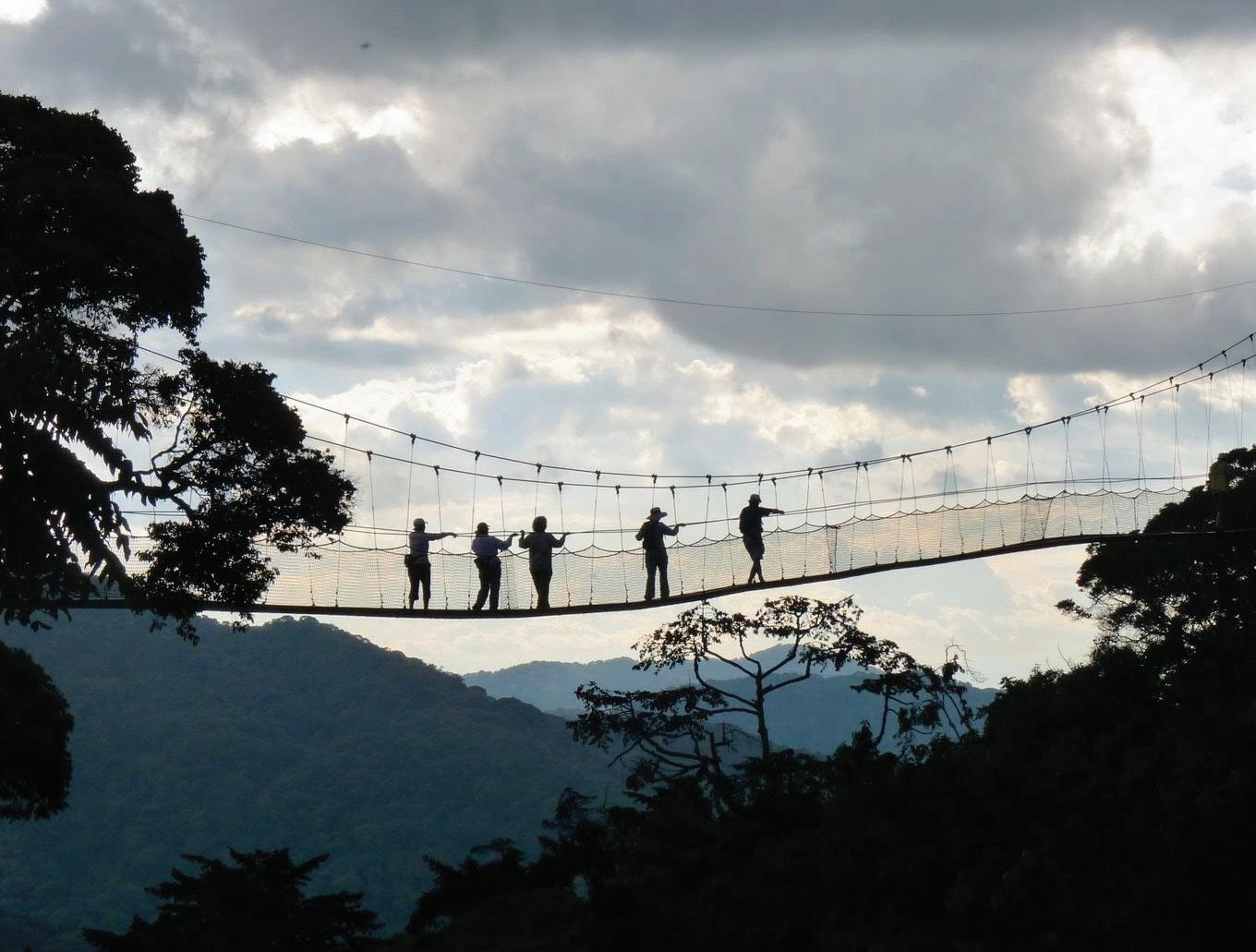
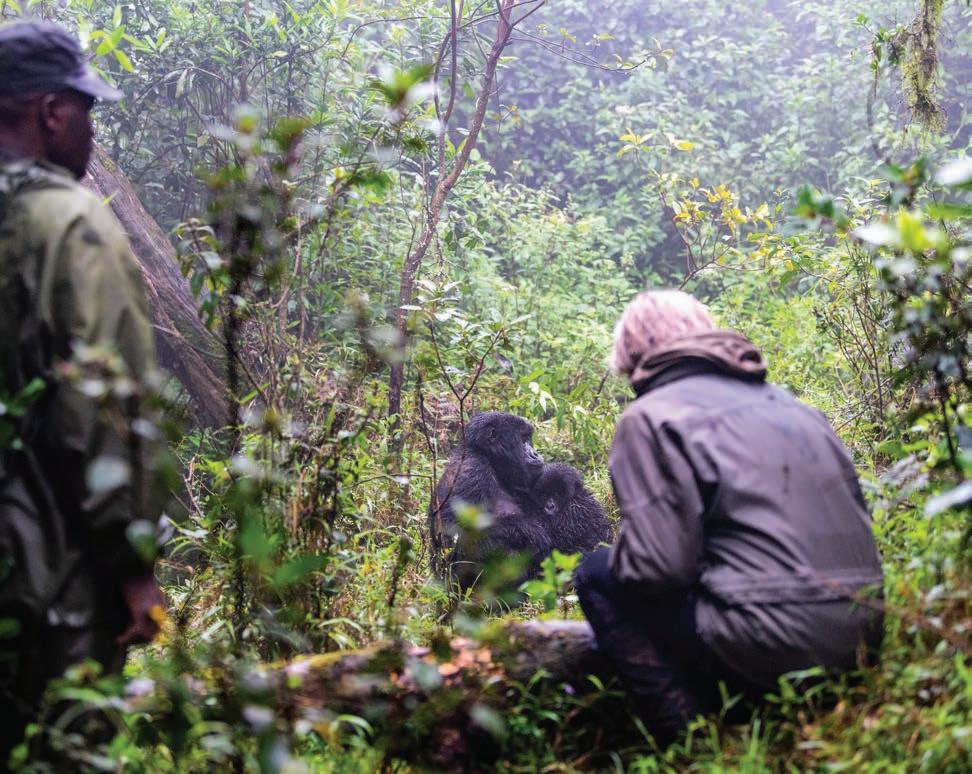
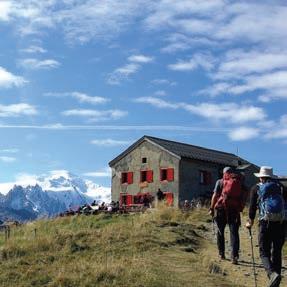
ICONIC AND EPIC
Tour du Mont Blanc Switzerland, Italy, and France
This circuit circumnavigating its namesake peak, the highest in the Alps, passes through three countries over 12 days, with a shortened 8-day “express” variation. Specializing in both is one of the America’s oldest and most experienced active travel experts: MT Sobek ( mtsobek.com ). Hikers traditionally begin and end in France’s ultra-charming Chamonix. In between they cross high-mountain passes, fields of cows and sheep, and meadows of endless wildflowers, and walk along cliffs with stunning alpine vistas at every turn. Highlights include the luxe Italian ski town of Courmayeur, and cuisine varies delightfully by country. This is a challenging hike, averaging about 10 hilly miles daily, and since much of the best lodging and dining requires short transfers from trailheads, it is key to use a topnotch operator.
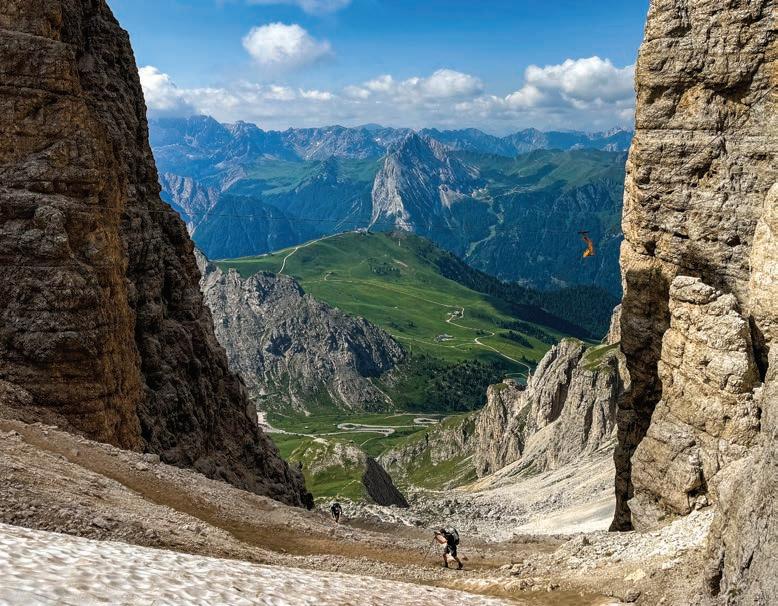
GORGEOUS AND GASTRONOMIC
The Dolomites
Italy
Some of the most beautiful landscapes on Earth are in the mountains, from the Andes to the Himalayas, but even by these lofty standards, few spots are so naturally stunning as the Dolomites, a UNESCO World Heritage Site for its geology and amazing rock formations. These cover two neighboring valleys full of charming mountain and ski towns, in turn chock-full of luxury lodging, spas, and fine dining. Just about every top active tour operator offers trips here, but Trek Travel ( trektravel .com ) has a near-perfect itinerary, crossing the valleys from Val Gardena to Val Badia, past the most famous rock formation (the massive Sella group) and a living, open-air WWI museum. Unlike many other routes, this also traverses the stunning Alpe di Siusi plateau, Europe’s highest mountain pasture. You can take a break in famously decadent rifugios (rustic mountain huts that often boast world-class wine lists) and enjoy Michelin-starred dinners and stays at well-equipped wellness spa resorts, the perfect après-hike experience.

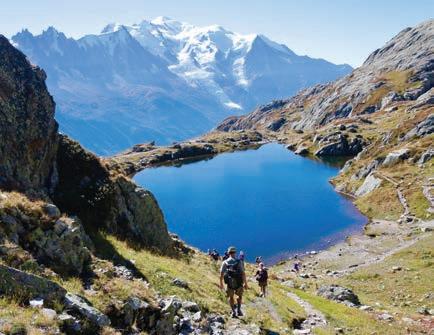
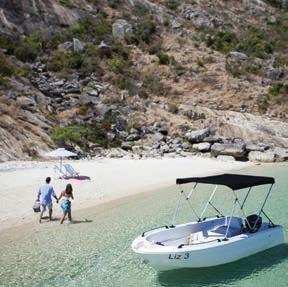
BESPOKE, ULTRA-LUXURY
Almost Anywhere
Suppose you have done a lot of hiking and want something different? Or have a group with radically different interests for non-hiking hours? Or you simply have a passion for the finer things, dislike compromise, and can accept nothing less than the very best in travel. Gray & Co. ( grayandco.ca ) is the only outfitter to ever win Travel + Leisure ’s Best Tour Operator in the World without offering any preset tours. Cari Gray founded the company to do nothing but bespoke curated trips for highnet-worth clients, and her staff-to-guest ratios are the highest in active travel. The group’s interests take center stage, arranging meetings with artists, historians, or chefs, so everyone can pursue their individual passions. Because her clientele is extremely well-traveled, she is always exploring the next big thing—or the old thing in a better way. One of Europe’s most popular hikes in is the Camino de Santiago in Spain, France, and Portugal, but miles are spent getting in and out of cities, with little great lodging, so most operators compromise, making it a hard trip to do in style. “We can pick the best stages focused on your ideal mileage, leapfrogging you out of the Porto suburbs, for example, with a vehicle to pick you up along the trail if anyone is tired, and transport you to the best nearby hotel, since not many are actually right on the Camino.” She also recommends a circumnavigation of the island of Menorca in the footsteps of the Knights; Austria’s Salzalpensteig Trail; New Zealand and Australia; and Bhutan, a hot emerging destination in the world’s highest mountain range that is very difficult to do well on your own. In many spots, there are no luxury tour operators offering the routes Gray prefers.
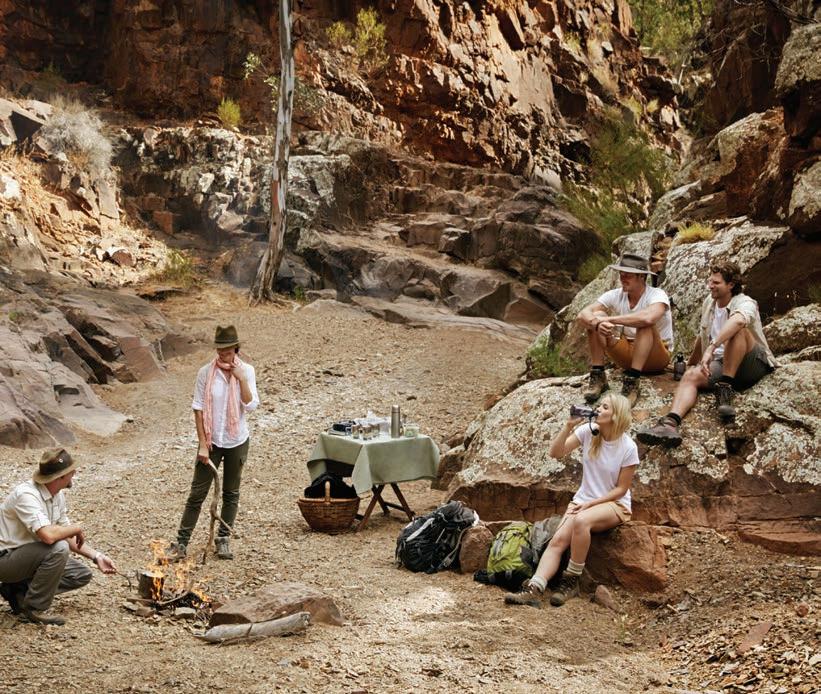
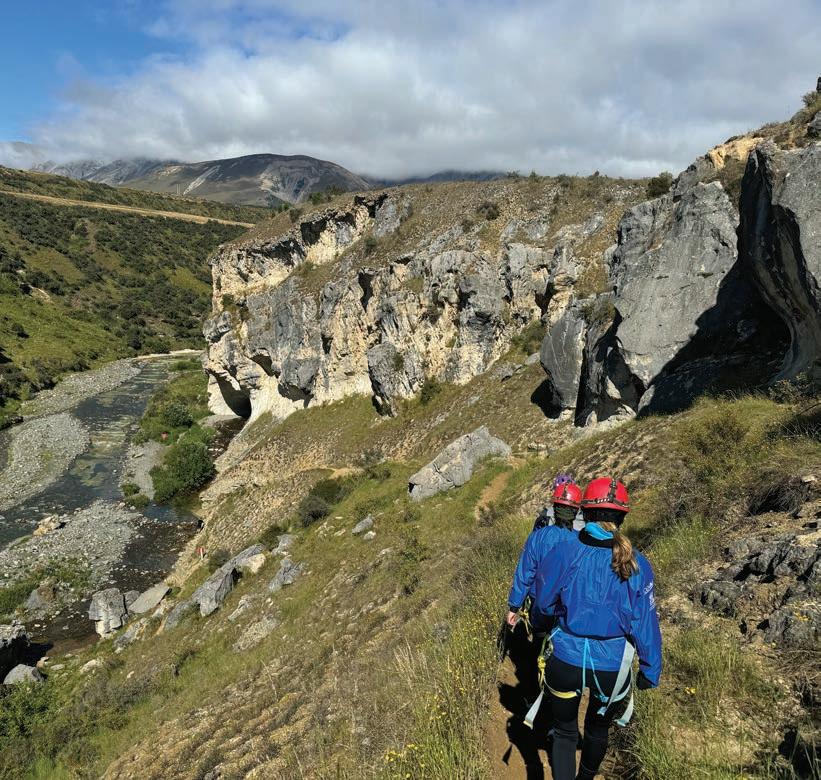
GEAR UP
Come prepared and you can go anywhere.

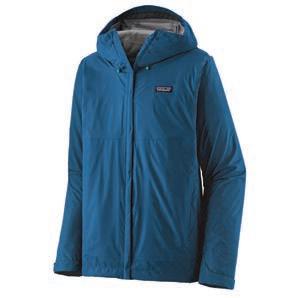
RAIN JACKET
Weather is the one thing no tour operator can control, so pack a light, breathable, but ultra-protective hooded jacket in your pack just in case. That would be the Patagonia Torrentshell 3L Rain Jacket in nine colors and both men’s and women’s fits. Fair Trade Certified and made from the company’s proprietary H2No fabric. $180; patagonia.com
HIKING PANTS & SHORTS
Comfortable movement, breathability, well-designed pockets, and protection from dirt, thorns, and rain are what you want in the perfect hiking pants. Outdoor specialist Kühl delivers with the Kühl Renegade. They are soft, stretchy, and breathable, but also abrasion resistant and treated for water resistance, in multiple colors. The Renegade also comes in shorts for warmer climates. $79 (shorts), $99 (pants); kuhl.com
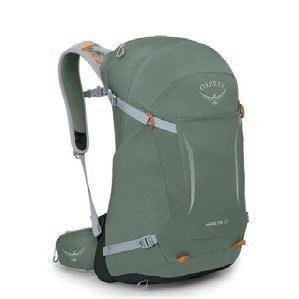

DAY PACK
Your luggage is moved for you, so no heavy lifting on the trail. You need a rain jacket, layers, snacks, water, and maybe a camera or binoculars. But you still want the comfort of a big technical pack: padded straps, waistbelt, ventilated back panel and hands-free hydration. For these big features in a small package, the best is the no-nonsense lifetimeguaranteed Osprey Hikelite 28. $150; osprey.com
HYDRATION SYSTEM
A hydration bladder and hose hold far more than a bottle, with less bulk and hands-free access, so you drink more, and more often. But some are hard to fill and clean. Not the perfectly designed, leakproof Osprey Hydraulics Bladders, in 1.5-, 2-, and 3-liter sizes, which work with any pack but integrate perfectly with special storage in Osprey models. From $38; osprey.com
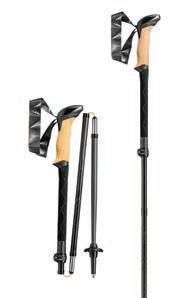

POLES
The most important accessory after comfy shoes, trekking poles might be a first for you, but you won’t go back. They burn more calories and give a better fullbody workout, while increasing endurance and making ascents easier and descents safer; they also reduce knee strain. Ultralight, highly packable, and quickly adjustable with interchangeable tips for the wild, pavement, or snow, the LEKI Black Series FX Carbon poles are the Ferrari of walking sticks. $250; lekiusa.com
NAVIGATION & METRICS
It’s hard to get lost with a top tour operator, buy why take chances?
Garmin has always been the leader in recreational GPS mapping, but recently it has also become the go-to sports and fitness technology provider for tracking everything from steps and heart-rate zones to triathlon training. The top-tier hiking Garmin Enduro 3 Adventure GPS Smartwatch has unrivaled mapping and navigation functions, plus every other health, fitness, and environmental feature you can imagine—even a flashlight. Industry-best battery life runs up to 90 days on a charge. $900; garmin.com u
Playing the Heathland Fields
A trip to Surrey, England, brings golfers to an unsung collection of historic courses defined by their terrain and celebrated for their architecture. These aren’t diamonds in the rough; they’re jewels in the heather.
BY SHAUN TOLSON
Across the pond, the traditional links courses that line the eastern and western shores of both Ireland and Scotland attract a lion’s share of international attention. These are the centuriesold routings that spill over dunes with rumpled fairways pockmarked by treacherous, steep-faced bunkers. They’re brandished with names such as Muirfield, Prestwick, Ballybunion, and Royal County Down—the courses to which pilgrimages are made.
The seaside locales for many of those courses only strengthen their appeal. Because of that, as intrepid golfers make plans to visit the isles where the game’s roots stretch deepest, they too often overlook a region that provides as pure a golfing experience as you’re likely to find anywhere in the United Kingdom.
Just south and west of London, the county of Surrey is home to a collection of heathland courses, so named for the terrain over which they are routed. The heath, as the British describe it, is “an area of open uncultivated land, with characteristic vegetation of heather, gorse, and coarse grasses.” Established during the first few decades of the 20th century, the county’s most prestigious golf clubs emerged as the game’s enthusiasts and course designers began looking inland for new places to play.
“There’s an elegant ambiance from the minute you arrive at any of the great heathland courses,” says Bill Hogan, the business development manager of Premier Golf (premiergolf .com), a private travel operator that specializes in bespoke golf journeys (including sojourns to this region of England). “There’s this old world kind of elegance to them that you don’t see at many places around the world. They just feel special.”
There’s a look to these courses that conveys a similar feeling too. Carved through hardwood forests, layouts conceived by Harry Colt, Willie Park Jr., James Braid, and Herbert Fowler sport an appearance that makes them look even older than they are. The Old Course at Sunningdale Golf Club, for example, opened for play 124 years ago, and yet it’s routed across the land so brilliantly that it looks as old as the hills over which it trundles.
The club is steeped with history: This is where, in 1926, Bobby Jones qualified for the Open Championship, setting a course record in the process.
“I wish I could take this course home with me,” Jones declared after the round. In some ways, Jones did. Augusta National, the famous course that he co-designed with Alister MacKenzie less than a decade later, shares some similarities in how it’s routed, specifically the ways in which it weaves its way through and

Courtesy Walton Heath Golf Club

Walton Heath Golf Club
“These courses are examples of old world golf that didn’t move and smooth a lot of land, so there are bumps and contours—there’s a ground game involved,” says Teddy Lynn, co-founder of Heathlander.
over the hillsides of northern Georgia.
“Traversing the rolling hills of Ascot with the heather in bloom and the huge oak trees surrounding the fairways,” Hogan says of Sunningdale’s duo of courses, the Old and the New, “they’re both as pretty a heathland golf course as you’ll ever see. You know you’re walking on hallowed grounds.”
Although Augusta National isn’t a heathland course itself, it’s certainly garnered similar praise and description over the years. Some have also opined that through his experiences at Sunningdale, when he was in his mid-twenties, Jones found inspiration to convert a former indigo plantation house into Augusta National’s current clubhouse. The vast majority of golfers will never have an opportunity to sit out on the veranda of the private golf club that each spring hosts The Masters, but they can spend a languid summer day on the deck at Sunningdale, either after their round or in between rounds played on both courses, should they feel so ambitious.
“If you’ve done it once or 100 times, it never gets old,” Hogan says of the experience of relaxing on that deck. “It’s just one of those magical settings in golf.”
Other heathland courses scattered across Surrey County are just as magical to play. In fact, how they play is not much different than those aforementioned seaside courses, given that they’re routed across sand-based terrain that plays firm and fast. Teddy Lynn, who grew up playing golf in the region, knows this as well as anyone. In fact, he became so enamored by the golf courses of this style that when he created his own golf footwear company a little more than a year ago, he used a cross-section of the heather plant as the shoes’ tread pattern and named the brand Heathlander.
“These courses are examples of old world golf that didn’t move and smooth a lot of land, so there are bumps and contours—there’s a ground game involved,” Lynn says. “It requires tons of imagination and that makes them really appealing.”
Designed to be easily walkable, the
heathland courses throughout Surrey are as much a delight for the journey on which they take you and the tranquility that they can impart—provided you can shrug off the occasional bad shot or unfortunate lie. “It’s not the absolute difficulty of a golf course to be challenged, it’s the overall experience, the flow, the sequencing of holes,” explains Gordon Dalgleish, a founding director at PerryGolf, a travel company that specializes in international golf tours. “It’s not as though the golf course is going to beat you up, but at the same time, you feel as though you’re challenged.”
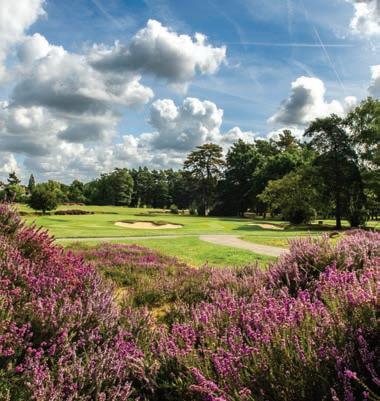
In particular, the first timer on a heathland course is bound to discover the broad swaths of heather that line many of the fairways. From afar, these patches of vegetation seem unassuming, especially when they’re not in bloom, but should golfers hit a shot that carries, bounces, or rolls into them, they’ll quickly discover how misleading that appearance can be. “It looks quite benign, but it’s anything but,” Dalgleish says. “It can grab a golf club and turn it over. And it steals golf balls, but very attractively.”
Adds Lynn, “It’s better looked at than played out of.”
To the uninitiated, the heather may be a sneaky defense on these courses, but there are other striking features that add challenge. At The Berkshire Golf Club, for example, the Red Course’s short par-4 12th hole
entices players to pull drivers from their bags, but miss your intended line, and a difficult side-hill lie (possibly compounded by thick heather) will make you yearn for a mulligan. Therein lies the difficulty in these courses— the architects understood how to leverage the site’s natural topography to create a notable test without stretching the courses to 7,000 yards or more.
“Many of the great heathland courses are not long,” Lynn says. “They’re 5,800 to 6,200 yards. But given the weather and the conditions, you still might hit every club in your bag.”
Take Swinley Forest, which plays just over 5,900 yards from the members’ tees and less than 6,500 yards from the championship boxes. The course’s backstory is compelling by itself: As the legend goes, after England’s prime minister was late for a meeting with the king due to a round of golf, he was encouraged to build a course upon royal land, so as to never be tardy again. The subsequent layout that Harry Colt produced features a combination of false-fronted greens, slippery putting surfaces, steep run-off areas, and tight fairways lined by thick and gnarly heather. Precision is required every step of the way. “Swinley Forest,” says Sam Baker, the founder and chairman of the private golf travel firm Haversham & Baker, “is the hardest 5,900 yards I ever played in my life.”
Walton Heath is no less captivating. Although routed over flatter terrain, the club’s Old Course at times doesn’t feel flat, not given some of the cavernous bunkers that Fowler created. Those with an appreciation for the Ryder Cup will delight in seeing tee markers on each hole, designating where the 1981 matches began. In fact, the course immediately reveals its brilliance as a match play course because the opening hole is a par-3 that plays as long as 235 yards to a rockhard green that runs treacherously fast and is flanked in front by bunkers right and left.
“You’d be considered psychotic if you built an opening hole like that today,” says Lynn. “But the Brits don’t see it that way because

both players have to play the hole and it doesn’t matter what you score. It just matters who does it better.”
That old-school approach to the game permeates so many different aspects of these clubs, and in Baker’s opinion, that’s one of their greatest appeals. “These clubs still have that roaring twenties style to them,” he says. In fact, Baker likes to tell people that following a round, you expect to see Gatsby sitting at the bar in the clubhouse.
Perhaps the best part of a golf trip to Surrey is its proximity to London. With

most of the golf clubs in this region less than an hour’s drive from downtown, you can stay in a cosmopolitan city, dine in some of the country’s best restaurants, and balance bucket-list rounds of golf with sophisticated cultural immersions. Of course, should you wish to stay closer to those courses, Pennyhill Park Hotel & Spa (exclusive.co.uk) is set on the western edge of Surrey County and has a Michelin-starred restaurant.
Experienced golf travel professionals will tell you that England is an afterthought for most American travelers. Their clients will
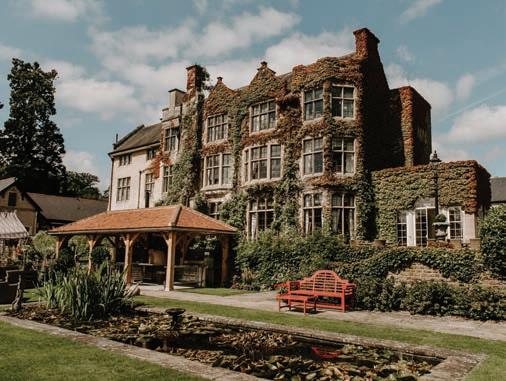
venture to Scotland and Ireland—perhaps multiple times—before stopping to consider what England has to offer. Doing so is a mistake, especially considering that in Surrey County alone, there are four or five courses within a 45-minute drive that have all earned accolades for being some of the best courses in the world.
In fact, Hogan points out, England is actually home to more golf courses ranked in the world’s top 100 than Ireland or Scotland. “Maybe,” he says, “it’s been backwards all along.”
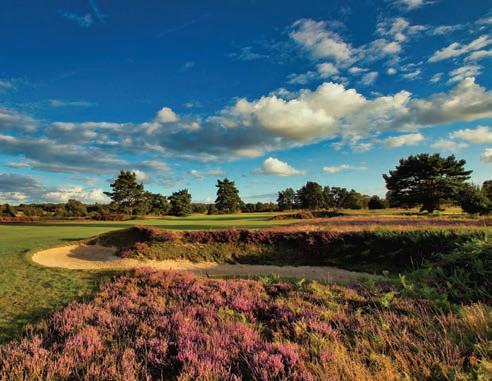
The Berkshire Golf Club; Sunningdale Golf Club, opposite
The Berkshire Golf Club
Pennyhill Park Hotel & Spa
Walton Heath Golf Club
Exclusive Entry
Unlike private golf clubs in America, most establishments in the British Isles offer a limited number of visitor tee times during the week. Still, there are a handful of truly exclusive clubs throughout the United Kingdom that remain as private as it gets. Here is a peek behind those gated entranceways.

ENGLAND
WENTWORTH GOLF CLUB
As one of two truly private golf clubs in Surrey, Wentworth is highly exclusive in terms of who has access to its courses. Being a “new money” club, however, it’s less restrictive of who can join. In other words, if you have the means, membership is available. The club boasts a predominantly international clientele and its historic clubhouse has benefited from recent renovations. So, too, has the club’s trio of courses. There’s no shortage of history here, either, as Wentworth hosted the informal matches in 1926 that inspired the creation of the Ryder Cup, later hosted a Ryder Cup in 1953, and for more than four decades has annually welcomed a DP World Tour event. wentworthclub.com
QUEENWOOD GOLF CLUB
Much like Wentworth, Queenwood is decidedly a “new money” club, only it’s also a new club, period. Completed in 2001, the course was designed by David McLay Kidd, who incorporated many of the architectural features that define classic heathland courses—most notably, copious amounts of heather. Those who are fortunate to pass through Queenwood’s gates will tell you the club’s charter isn’t weighed down by a long list of formal restrictions. Yet, while there are technically no rules at Queenwood, should your behavior at any point be deemed inappropriate, you’ll be asked to leave. Not surprisingly, the club has drawn notable parallels to Augusta National. queenwood.co.uk
Wentworth Golf Club
The Carnegie Club at Skibo Castle, with its stately manor, pool, and interiors, and the surrounding bike paths and Scottish Highlands.
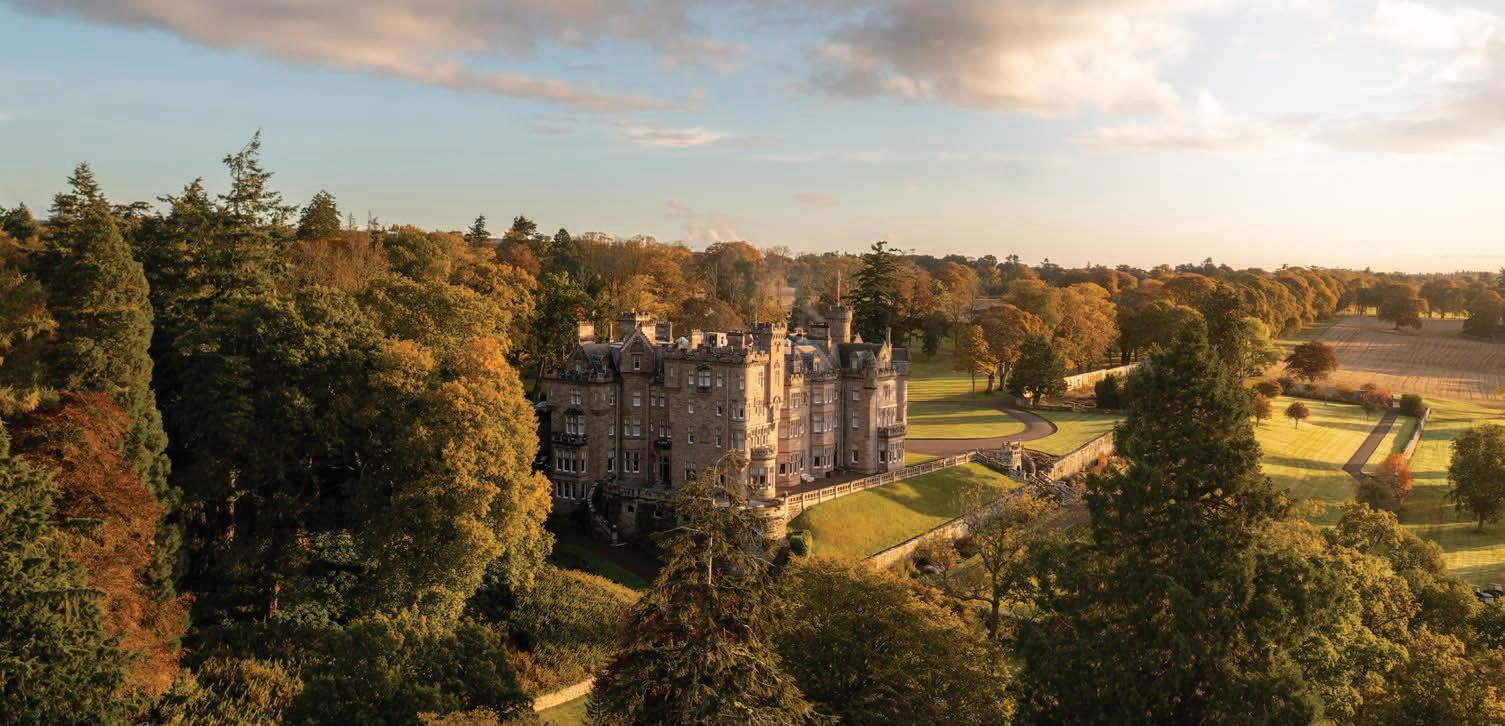
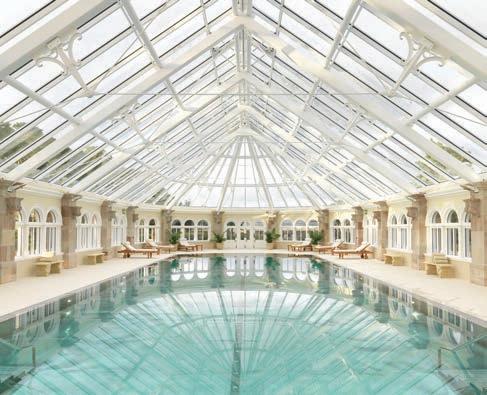
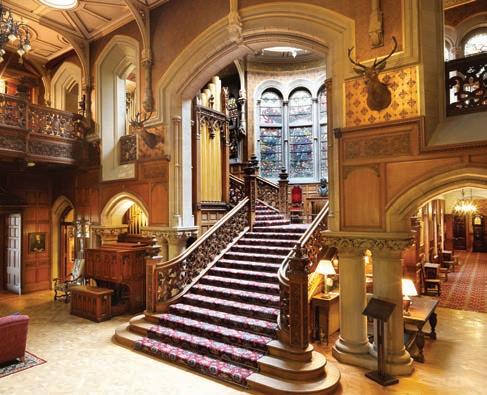
SCOTLAND
LOCH LOMOND GOLF CLUB
Much like the two aforementioned clubs, Loch Lomond’s appeal is at least partly driven by the company that members keep while visiting the club and playing its Tom Weiskopf–designed course, which opened more than 30 years ago. Set upon 660 acres that stretch along the western shores of its eponymous loch, the club is less than an hour’s drive north of Glasgow and boasts a striking clubhouse with a Georgian façade. “World-class golf is our raison d’être,” the club declares, “but membership is not defined by it.” As proof, members are equally drawn to the grounds for their fly-fishing and driven bird hunts. lochlomond.com
CARNEGIE CLUB AT SKIBO CASTLE
Membership at the Carnegie Club delivers a unique opportunity to experience the Scottish Highlands in much the same way as one of the world’s wealthiest industrialists did during the Victorian era. The nucleus of the club is Skibo Castle, a stately manor that began as a residence for the Bishops of Caithness in the early 13th century. Today, members enjoy a vast array of activities, including clay court tennis, falconry, wild game hunts, fishing, horseback riding, and rounds of golf on a classic layout built shortly after Andrew Carnegie purchased Skibo Castle at the turn of the 20th century. carnegieclub.co.uk u
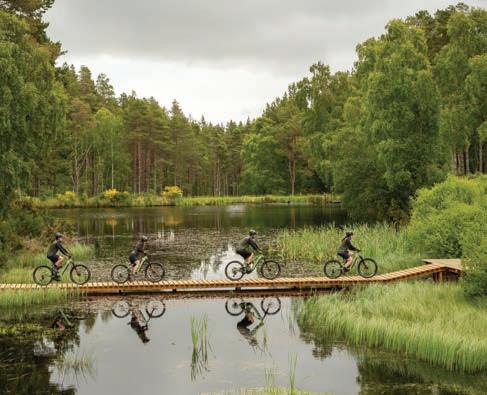
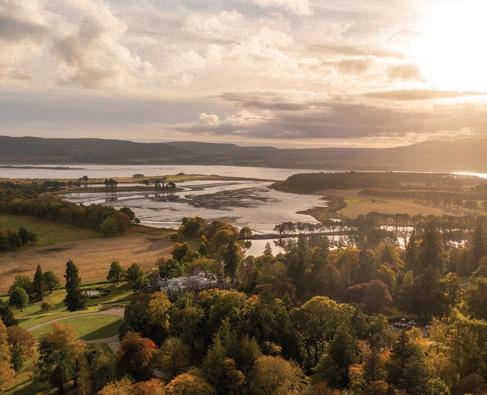
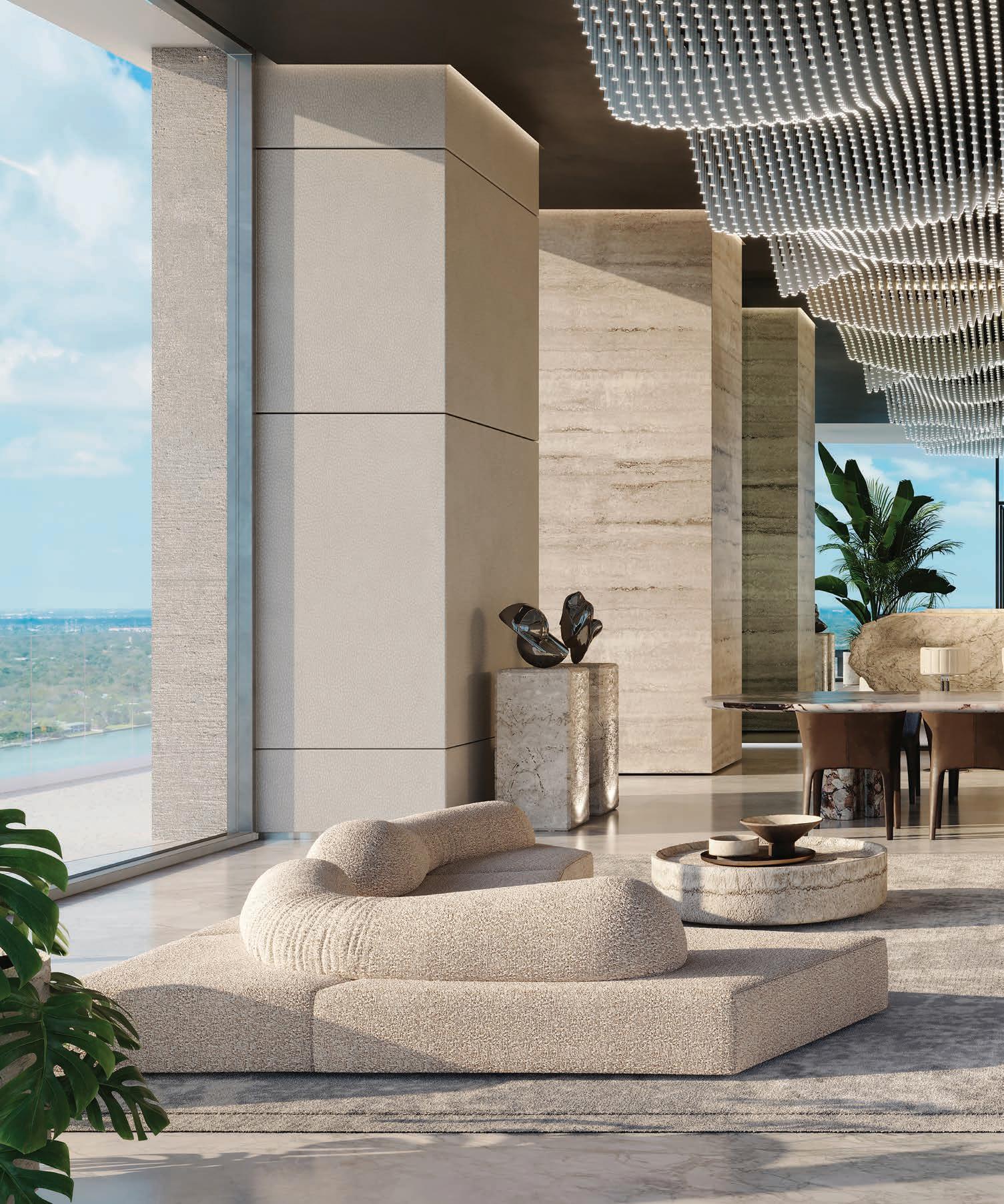
What’s in a Name
Branded residences—the fastest-growing segment of the luxury real estate market—promise prestige, security, and sought-after amenities.
BY IRENE RAWLINGS
Courtesy Pagani Residences
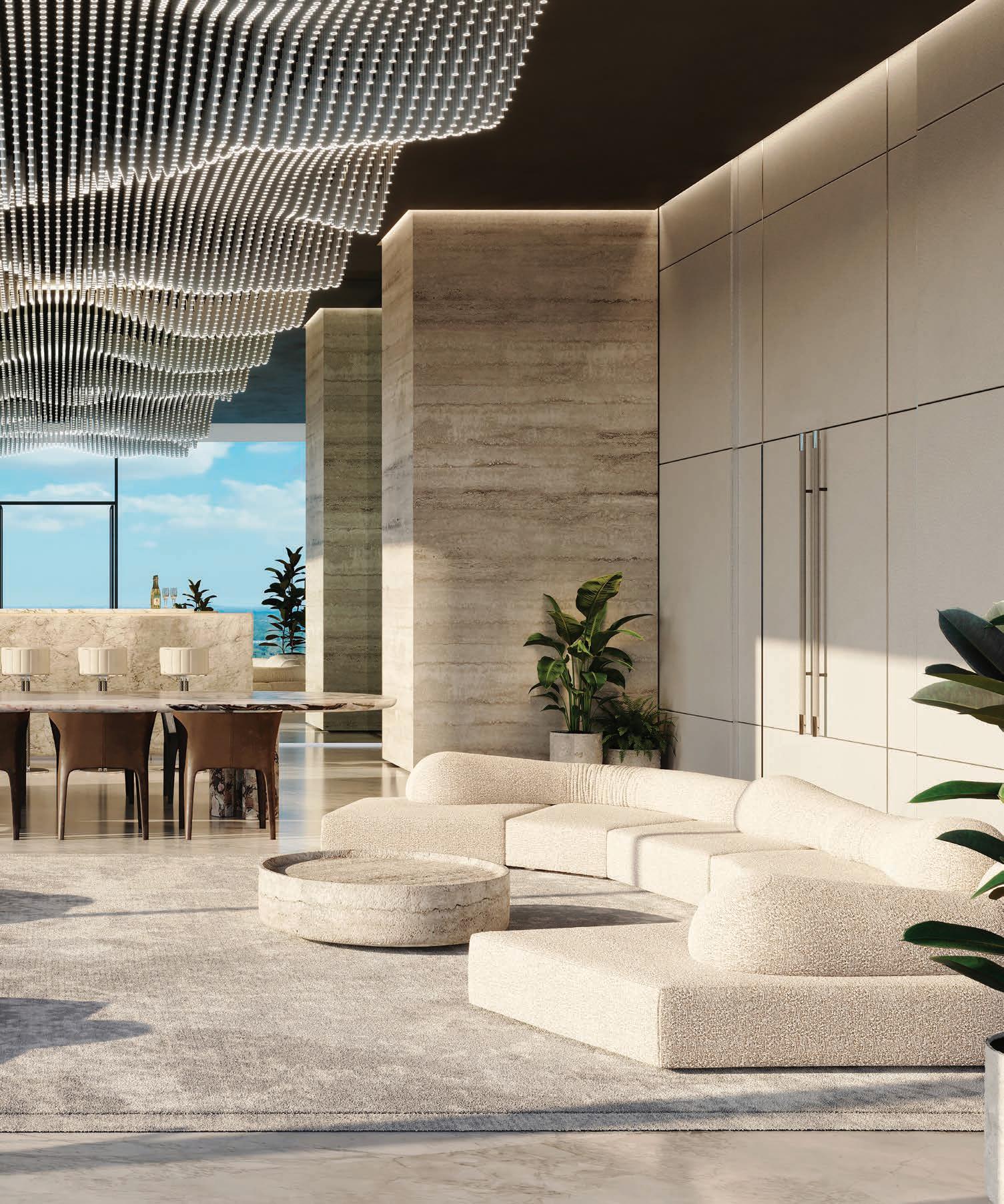
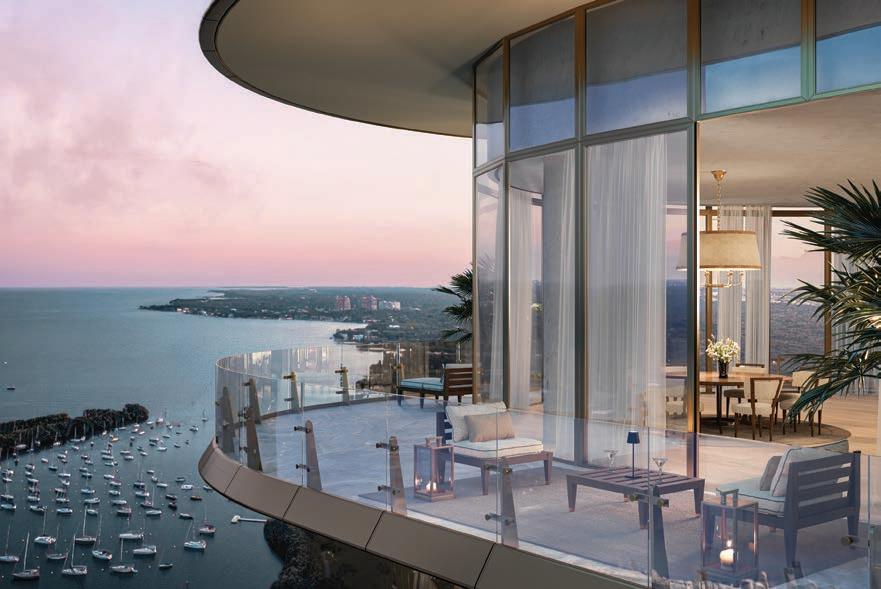
Owning a hotel-branded residence can be like enjoying an endless vacation. These exquisitely styled homes offer an impressive array of resort-style amenities—from round-the-clock concierge and private chef services to gyms, spas, pools, and restaurants. Hotel-branded residential towers provide buyers with the white-glove and housekeeping services of a short-term stay, plus exceptional levels of privacy and security. But branding is no longer limited to just hospitality giants. Fashion houses like Missoni and Armani are also translating their global reputations into tony real estate. Elite automakers—such as Bentley, Aston Martin, Porsche, and Lamborghini—are racing to fill the demand for car-centric condos. They all know that no matter the product, brand affinity can be an emotional driver for loyal clients and buyers attracted to prestige by association. Pagani (based in Modena, Italy) handbuilds around 40 hypercars a year and is launching auto-themed residences in Miami. “Our approach is boutique … with 70 meticulously crafted waterfront residences,” says Mikael Hamaoui, founder of Riviera Horizons and developer for Pagani Residences. Turin, Italy–based Pininfarina (the designer of Battista, the fastest road-legal Italian car) is taking a more-is-more approach
by dedicating significant resources to Dubai and South America and is expected to add 650 percent to its global network. “Real estate is a cornerstone of Pininfarina’s future strategy, a commitment to a 360-degree lifestyle experience,” says Giovanni de Niederhäusern, SVP of architecture and product design at Pininfarina. “Through the company’s multidisciplinary expertise, the goal is to create not just buildings but environments that reflect its enduring values of creating positive impact through beauty and technology.”
“At the end of the day, the high-net-worth consumer wants to associate with brands they trust and enjoy the level of service they have come to expect … especially in foreign countries,” says Christie’s International Real Estate’s co-CEO Thaddeus Wong. He goes on to say that buyers of branded real estate can expect to pay up to a 33 percent premium compared to non-branded real estate. But, as he also notes, data shows these properties demonstrate a more robust capital appreciation (as much as 25 percent over nonbranded, in some cases).
If the phenomenon of branded residences seems new, it is not. New York City’s legendary Sherry-Netherland hotel pioneered the concept in the 1920s. In 1985, Four Seasons kicked off the modern era of branded private residences by launching Four Seasons Private Residences Boston. Today, nearly all Four Seasons projects under development include a residential component. According to the Branded Residences 2024/2025 report by the London-based real estate firm Savills, the number of branded residences has increased by 170 percent in the past decade. “The branded residential sector once again exhibited impressive growth in 2024, with another 240 projects added to the development pipeline across 100 markets globally,” says Rico Picenoni, head of Savills’ global residential development consultancy.
Radha Arora, president of Global Residential Development at Rosewood Hotels & Resorts, says that her company now has 14 one-ofa-kind branded residences and 13 additional developments slated to launch in the next several years, including Rosewood Residences Old Lighthouse in Los Cabos, Mexico.
Small, uber-elite hotel brands like Rocco Forte Hotels are entering the branded residence market with three- to seven-bedroom villas (each with its own pool) on nearly 600 acres of
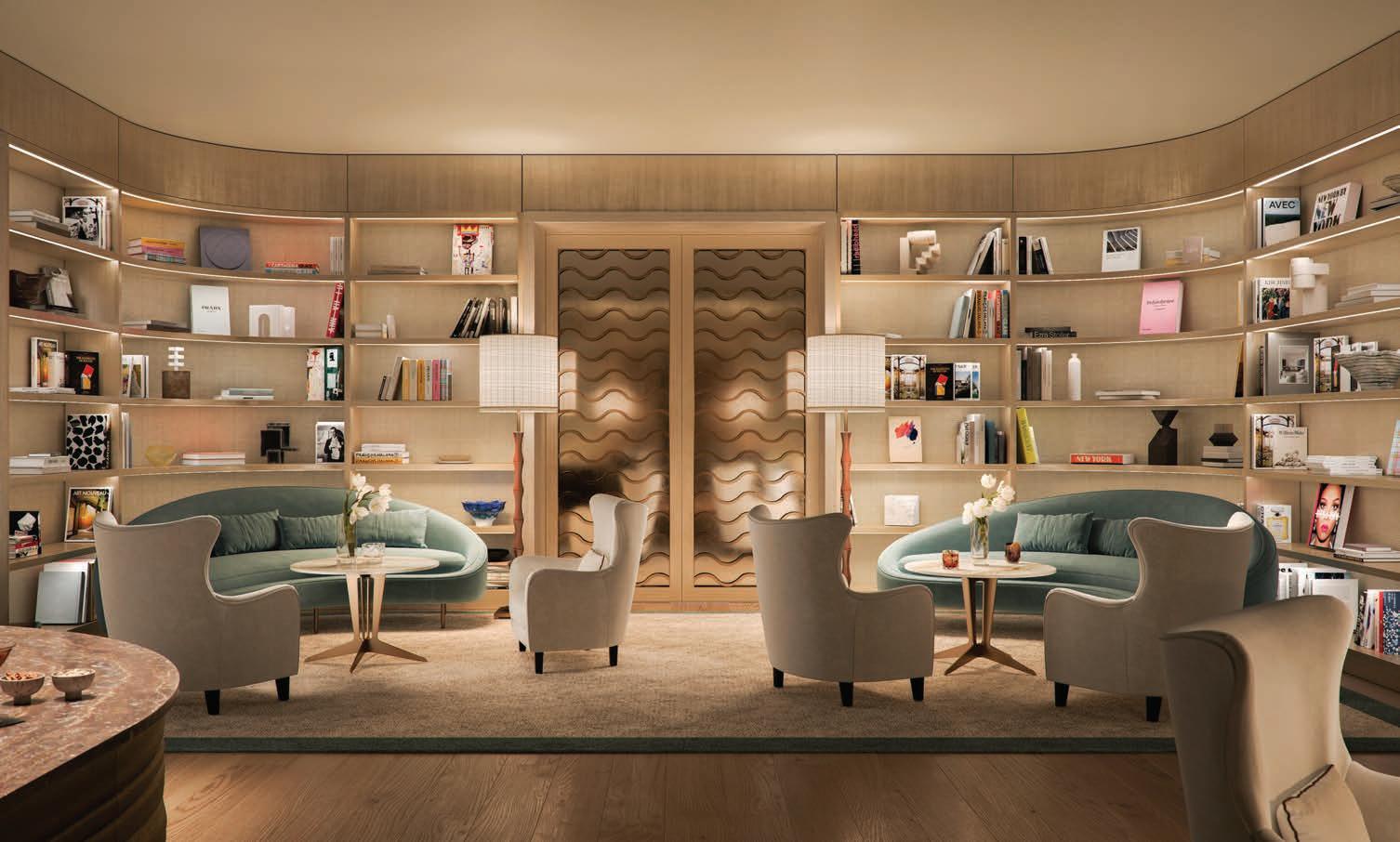
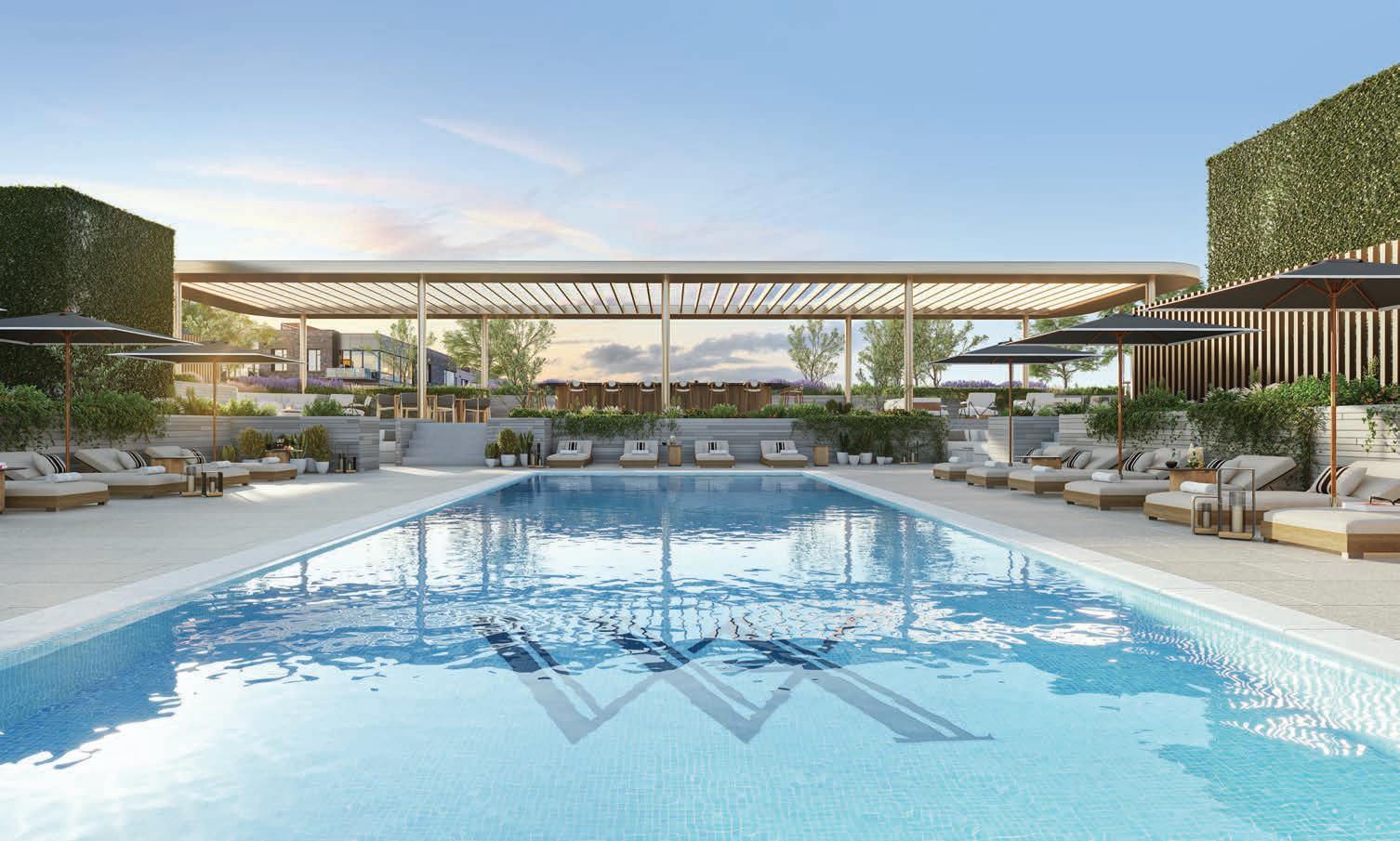
Four Seasons Residences Coconut Grove; Waldorf Astoria Denver Cherry Creek, below; Four Seasons Residences Coconut Grove, opposite
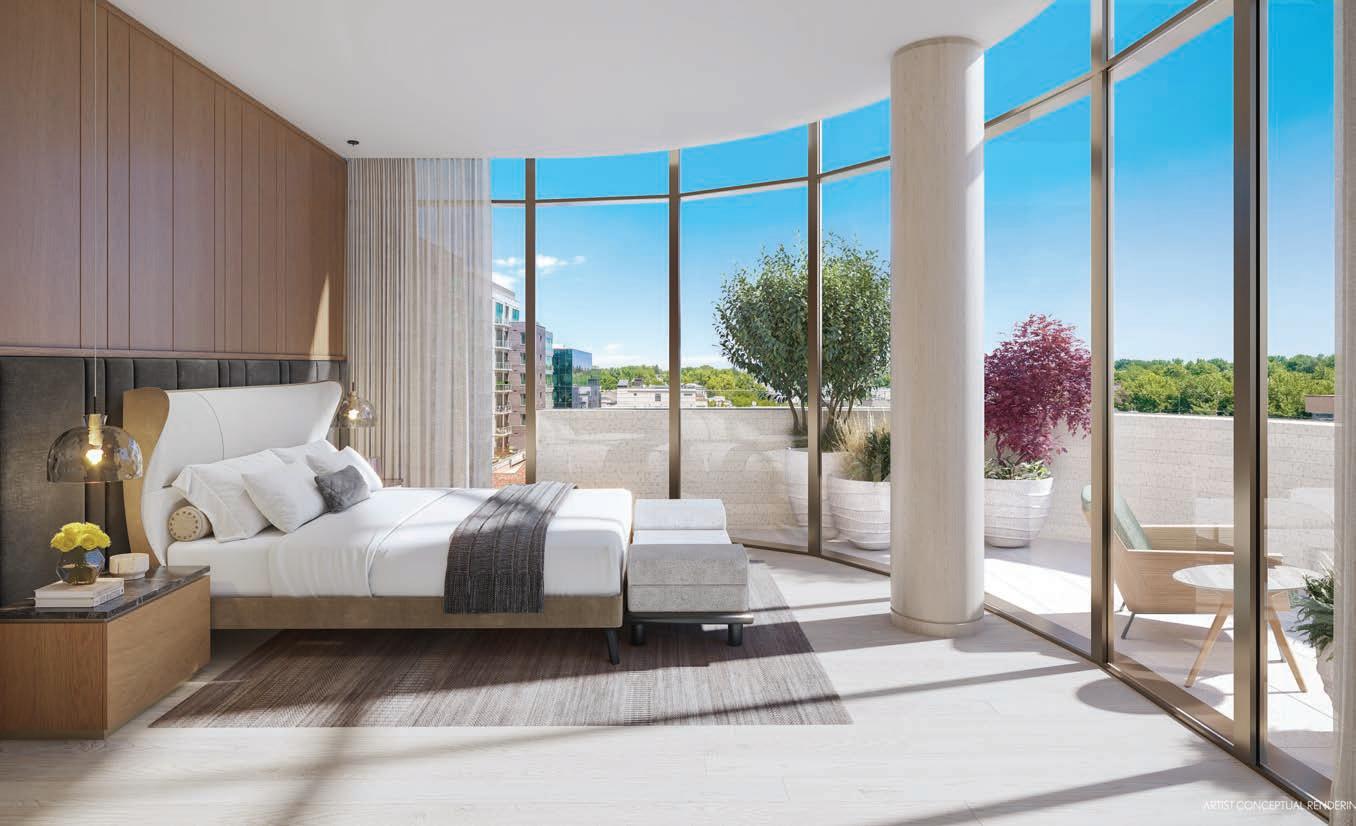
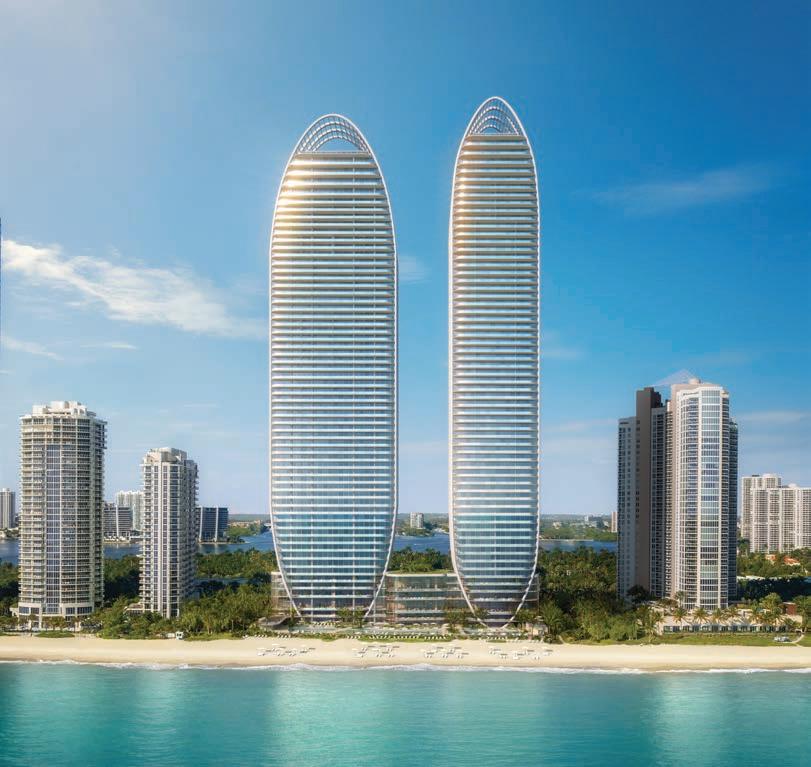

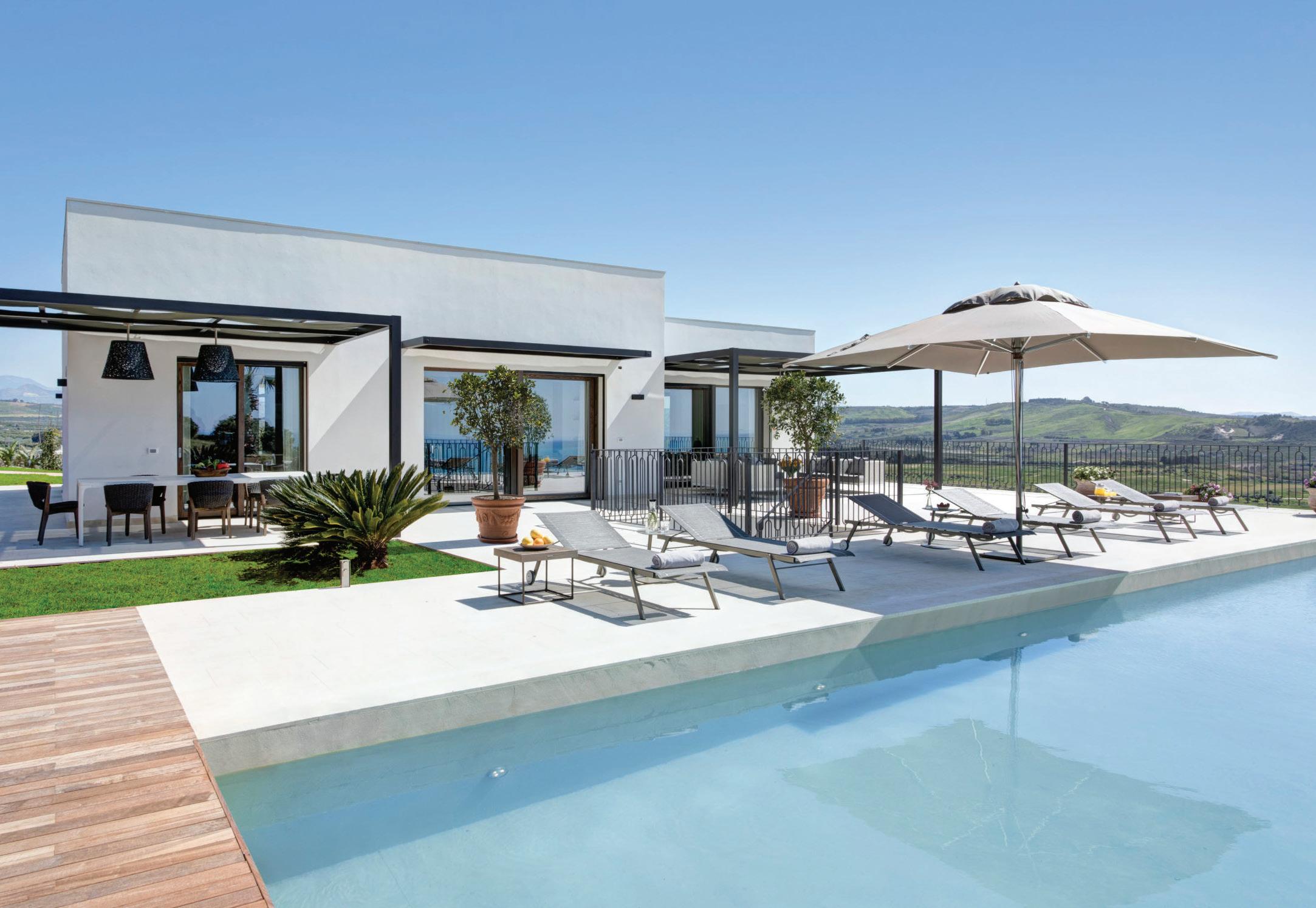
Mediterranean coastline in Sicily. Charles Forte, the brand’s director of development, says there’s a noticeable shift toward luxury private residences as travelers “increasingly seek accommodations that offer the privacy of home … in a spectacular location without compromising on personalized service.”
The renowned Singaporean Chedi Hotel Group rebranded itself as Chedi Hospitality and debuted The Chedi Private Residences in Dubai. According to CEO Stephan Schupbach, Chedi Hospitality has landmark residential developments planned within its established regions, including Switzerland, Germany, the Kingdom of Saudi Arabia, and the Indian Ocean, alongside expansion into
East Asia with forthcoming projects in Japan and China.
Who Is Buying? “A diverse composition of buyers … from younger wealth to a more traditional buyer who might be downsizing a home but upsizing the quality of life for them and their multigenerational families,” says Tina Necrason, global head of branded residential at Hyatt, which has a collection of nearly 20 unique residential communities in some of the most sought-after destinations in Europe, Asia, Latin America, Mexico, and various regions in the Middle East. “Branded residences also provide a perfect blend and balance of lifestyle and a real estate vehicle that is set for the long term,” she says.
This year (2025) is a milestone for Waldorf Astoria with the grand reopening of its flagship, the legendary Waldorf Astoria Residences New York. Following in the coming years will be the debut of Waldorf Astoria Residences Cherry Creek in Denver, plus properties in Pompano Beach and Miami, Florida; Dubai Business Bay; Texas Hill Country; Turks and Caicos; and San Miguel de Allende, Mexico. In all, the global residential portfolio includes more than 20 Waldorf Astoria residential properties currently open or in development. “The Waldorf Astoria brand attracts a diverse clientele of high-net-worth individuals as residence owners.
Clockwise from left: Waldorf Astoria Denver Cherry Creek; Rocco Forte Residences Sardinia; Ora by Casa Tua; The St. Regis Residences, Sunny Isles Beach, Miami
In Pompano Beach, for example, the demographic tends to lean toward affluent retirees or empty nesters, while in Dubai, the trend is toward generational wealth.
Understanding these buying patterns enables us to tailor the amenities and services to better align with their lifestyles,” says Jonathan Wingo, global head of residential programs, Hilton.
Miami real estate is booming—attracting top brands, buyers, and star architects from around the world. Mikhail Mudrik, real estate associate at The Agency, South Florida, is noticing a strong demand from affluent individuals and global investors. “International buyers from Latin America, the Middle East, Europe … including Eastern Europe … remain a dominant force,” he says. “They are looking for a secure, hassle-free second home in a taxfriendly, high-appreciation state.” He is also seeing young entrepreneurs and tech executives investing in branded residences, drawn to the top-tier services that align
with their fast-paced lifestyles.
Mauricio Umansky, CEO and founder of The Agency, is seeing a strong presence of high-networth individuals, including successful couples and singles who are looking for exclusivity, world-class amenities, and personalized services. “There’s also growing interest from families with children, particularly those seeking a secure, luxurious environment with top-tier schools and access to family-oriented amenities,” he says. “Baby boomers are increasingly drawn to these residences for the convenience, low-maintenance lifestyle, and the prestige of living in a branded environment. The common thread across all these groups is a desire for a refined, hassle-free lifestyle that offers both luxury and privacy.”
In addition, wealthy buyers who own multiple homes around the world are attracted to a “lockand-go” peace of mind, allowing them to enjoy their property without having to worry about things like security, cleaning, and home repairs. Branded residences also allow residents to feel like they are part of an exclusive club in which they can socialize with like-minded individuals.

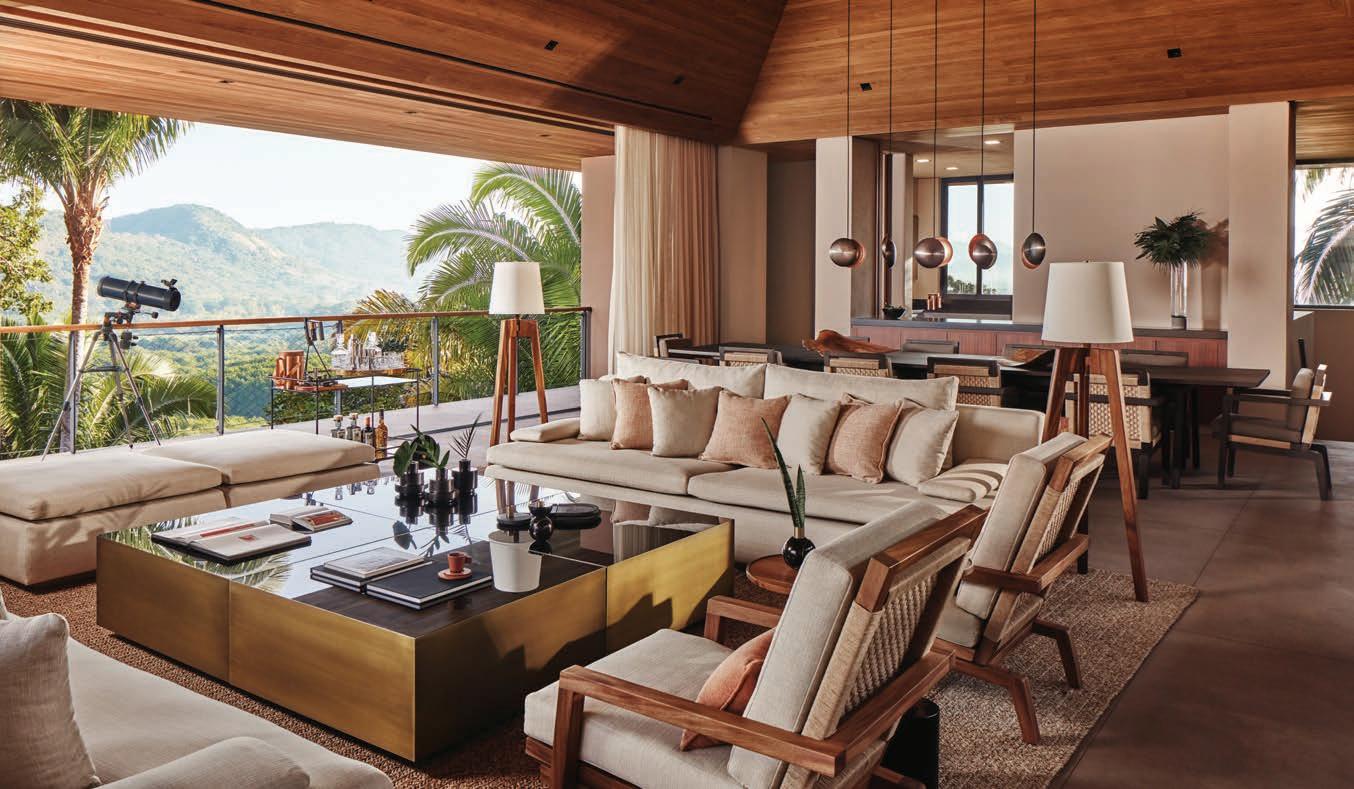
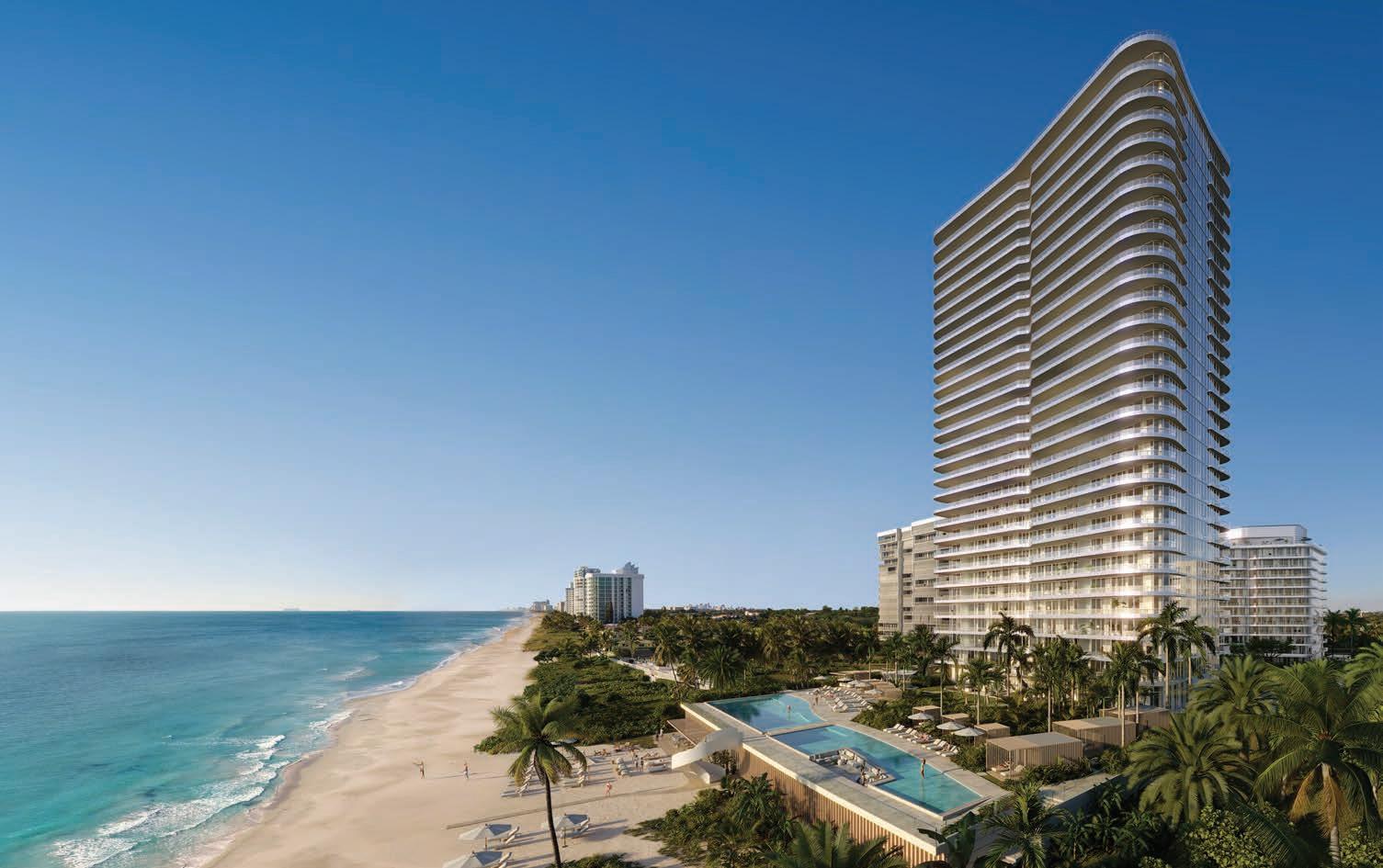

Clockwise from top: The Ritz-Carlton Residences, Pompano Beach; Four Seasons Private Residences Coconut Grove; One&Only Mandarina Private Homes
Real Estate: Under Construction
The top of the real estate market expects a dynamic year ahead. “Despite economic uncertainties and global geopolitical shifts, the luxury real estate sector has demonstrated remarkable resilience historically,” Philip A. White Jr., president and CEO, Sotheby’s International Realty, said in the company’s 2025 Luxury Outlook Report. The market is booming in major wealth hubs as developers compete for some of the highestnet-worth buyers by offering amenity-rich condominiums with 24-hour services, chef’s kitchens, spa-like baths, expansive terraces, pools with private cabanas, and reimagined activity rooms and outdoor spaces for children.
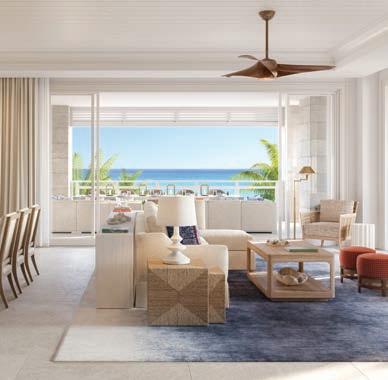
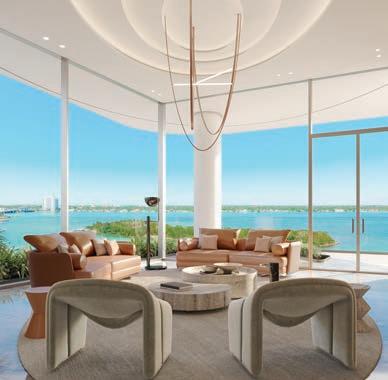
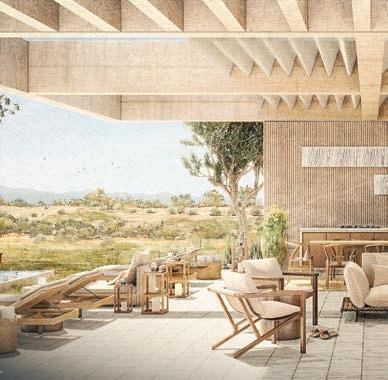
THE OCEAN CLUB, FOUR SEASONS RESIDENCES
Paradise Island, Bahamas
On five miles of secluded whitesand beach, two- to five-bedroom residences (there are 67) from 3,100 to 7,400 square feet are being developed with the owner of the notable Huntington Hartford–designed The Ocean Club, A Four Seasons Resort.
OWNER ACCESS: Four Seasons service, oceanfront swimming pool, Har-Tru clay tennis courts, Balineseinspired spa treatment villas, private cellar and rum room, and Versailleschanneling gardens. Restaurants Dune by Jean-Georges and the waterfront Ocean Blu. Tom Weiskopf–designed championship golf course. From $7.3 million; theoceanclubresidences.com
PAGANI RESIDENCES
North Bay Village, Miami
Collectors of Pagani hypercars (around 40 built per year) are lining up to buy high-design residences in this 30-story tower (opening 2027) with 70 entirely bespoke, fully furnished (by in-house interior design firm Pagani Arte) two- to four-bedroom residences and grand two-story penthouses, all with ensuite elevators, aerodynamically curved terraces, and Italian-designed Schiffini kitchens with Gaggenau appliances.
OWNER ACCESS: Waterfront lobby, 24-hour concierge, and valet parking. Fitness center with advanced cardiotraining equipment, dedicated yoga and Pilates studio. Palm-shaded rooftop pool. Private marina and boardwalk fronting Biscayne Bay. From $2.9 million; paganiresidences.com
PARK HYATT RESIDENCES AT CABO DEL SOL
Los Cabos, Baja, Mexico
The brand’s first outpost in Mexico. Freestanding, furnished villas include a chef’s kitchen, pool and Jacuzzi, and an indoor-outdoor living room with a covered terrace. Furnished residences within a three-story building feature private pools, terraces, and premium kitchens with Wolf and Sub-Zero appliances.
OWNER ACCESS: Two miles of swimmable coastline. Golf at the Tom Weiskopf–designed Cabo Del Sol Course; the opportunity to purchase a membership at the elite Cove Club (Jack Nicklaus–designed course). The Park Hyatt hotel debuts late summer 2025. Villas from $10.5 million; residences from $5.475 million; parkhyattloscabosresidences.com
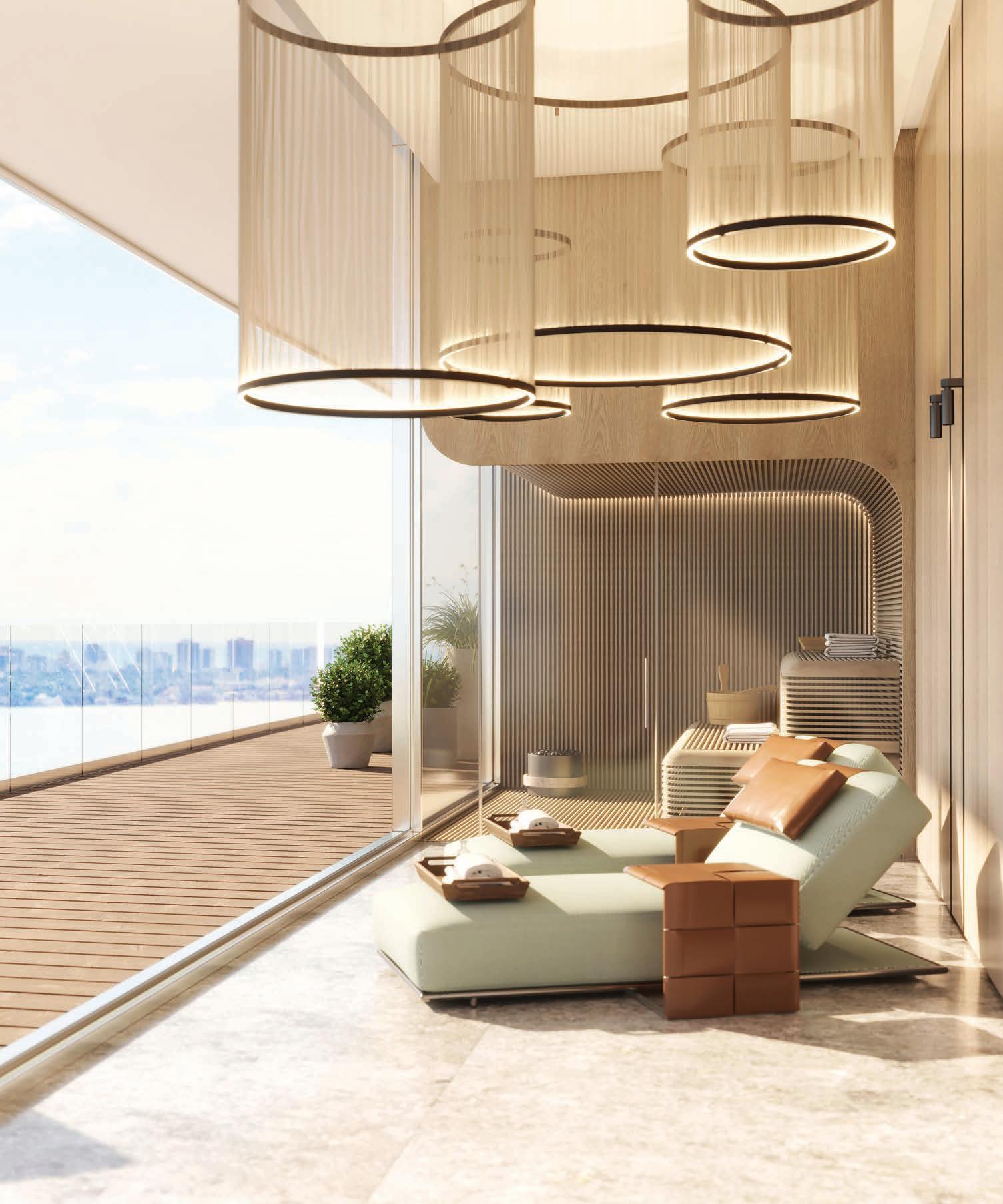
Pagani Residences Miami
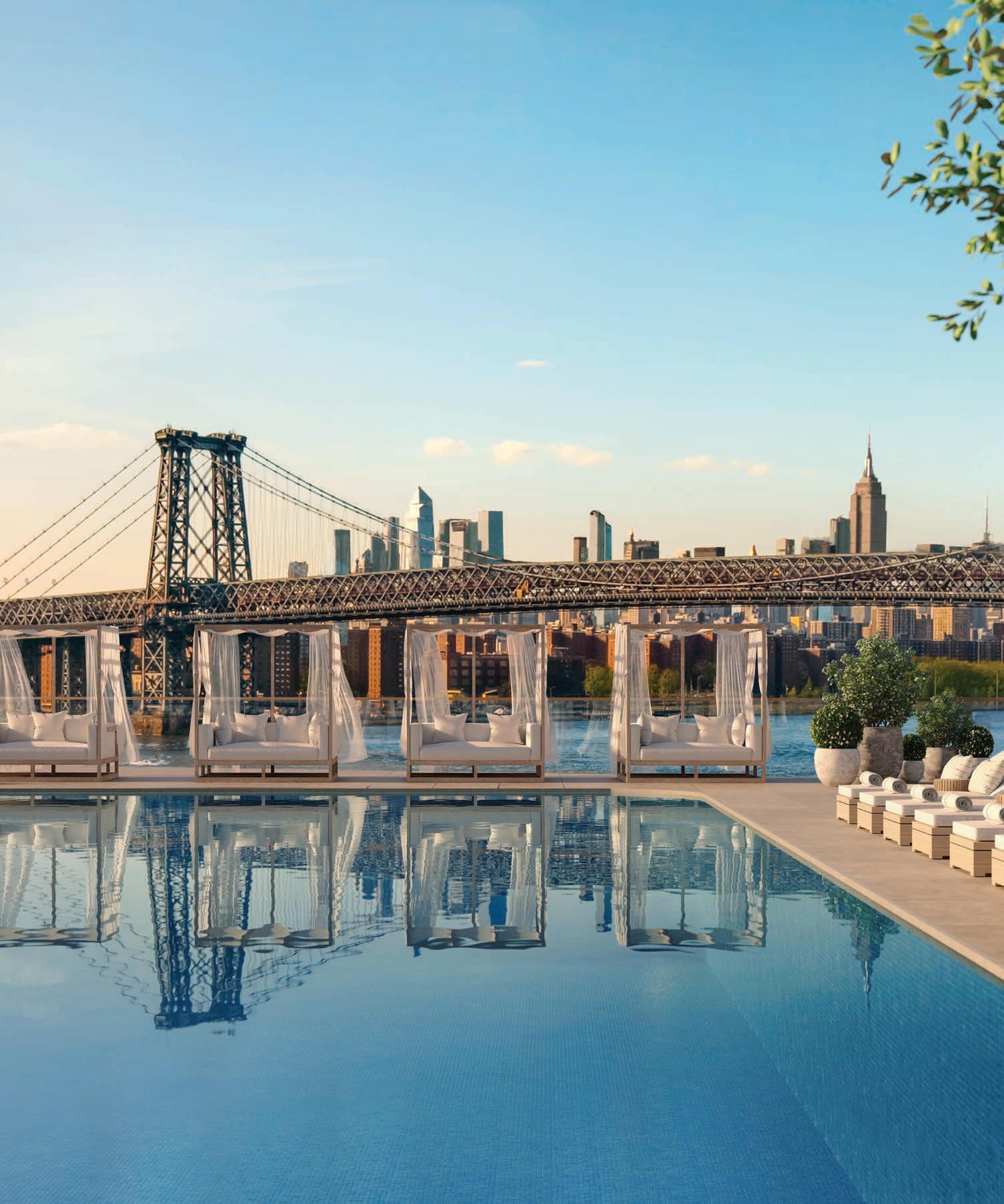
One Williamsburg Wharf

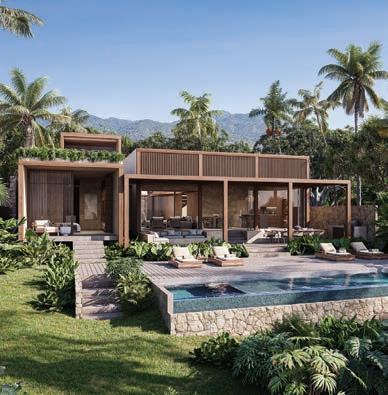
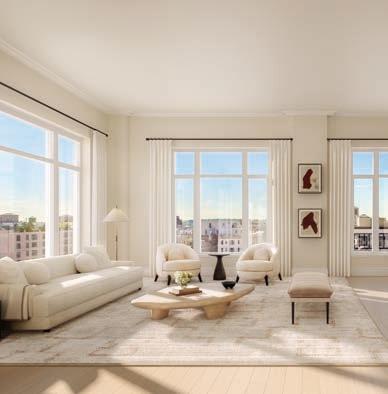
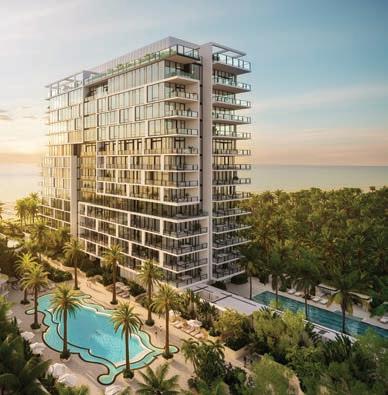
ONE WILLIAMSBURG WHARF
Brooklyn, New York
On the East River, One Williamsburg Wharf is a neighborhood-defining project on 3.75 master-planned acres that include retail, dining, and cultural space. The 89 designforward residences (from studios to threebedroom penthouses) feature wide-plank oak floors, Sub-Zero and Miele appliances, and direct-vent gas fireplaces in some.
LITIBÚ BAY CLUB
Punta de Mita, Mexico
On the Riviera Nayarit, the 21-acre private community offers 171 residences—three- to five-bedroom beach houses, estates, and villas (with direct beach access) and golf villas (on the 18th fairway of the Greg Norman–designed Higuera Golf Club). Some include outdoor kitchens, private gardens, and plunge pools.
THE HENRY New York City
Designed by the award-winning Robert A.M. Stern Architects, The Henry (on New York’s Upper West Side) comprises 45 three- to sixbedroom residences. The townhouses open onto private gardens and penthouses have Central Park or Hudson River views. Doubleheight living rooms and dramatic arched windows. Marble bathrooms with rain showers, soaking tubs, and heated floors.
OWNER ACCESS: Open-air inner courtyard and a 24-hour concierge. Fitness center with terrace, rooftop pool and yoga room, and a game room. Ice rink in winter. Covered parking (with electric charging stations) available. From $785,000 for a studio; $4.85 million for a three-bedroom penthouse; williamsburgwharf.com
OWNER ACCESS: A Sports and Adventure Club offering cross-fit equipment, yoga, Pilates, pickleball, padel, and tennis. Postworkout: sauna, Jacuzzi, cold plunge, and spa treatment rooms. Jungle-style tree house for families. The Outdoor Pursuits team arranges everything from kitesurfing to whale watching. From $1.4 million; litibubayclub.com
OWNER ACCESS: Two-lane bowling alley, pickleball court, and billiards lounge. Wood-paneled library, a fitness center, and a yoga studio. Rooftop garden with firepit, bocce ball court, and outdoor kitchen/dining. From $6.55 million for a four-bedroom to $26.95 million for a five-bedroom penthouse; thehenry-uws.com
THE RALEIGH, ROSEWOOD RESIDENCES MIAMI BEACH Florida
By acclaimed architect Peter Marino, The Raleigh is a fusion between the landmark Raleigh Hotel and a new 17-story glass tower with 40 private residences—two- to five-bedroom homes and eight penthouses. All have floor-to-ceiling windows framing ocean and city views.
OWNER ACCESS: Exclusive entrance to Rosewood’s Asaya Spa, featuring an oceaninspired hammam. Private beach and membersonly beach club. Sunset and sunrise pools reserved for residents (including bar, individual cabana, and poolside service by Rosewood). Valet, doorman, and on-site parking. From $10 million to $150 million; theraleigh.com u
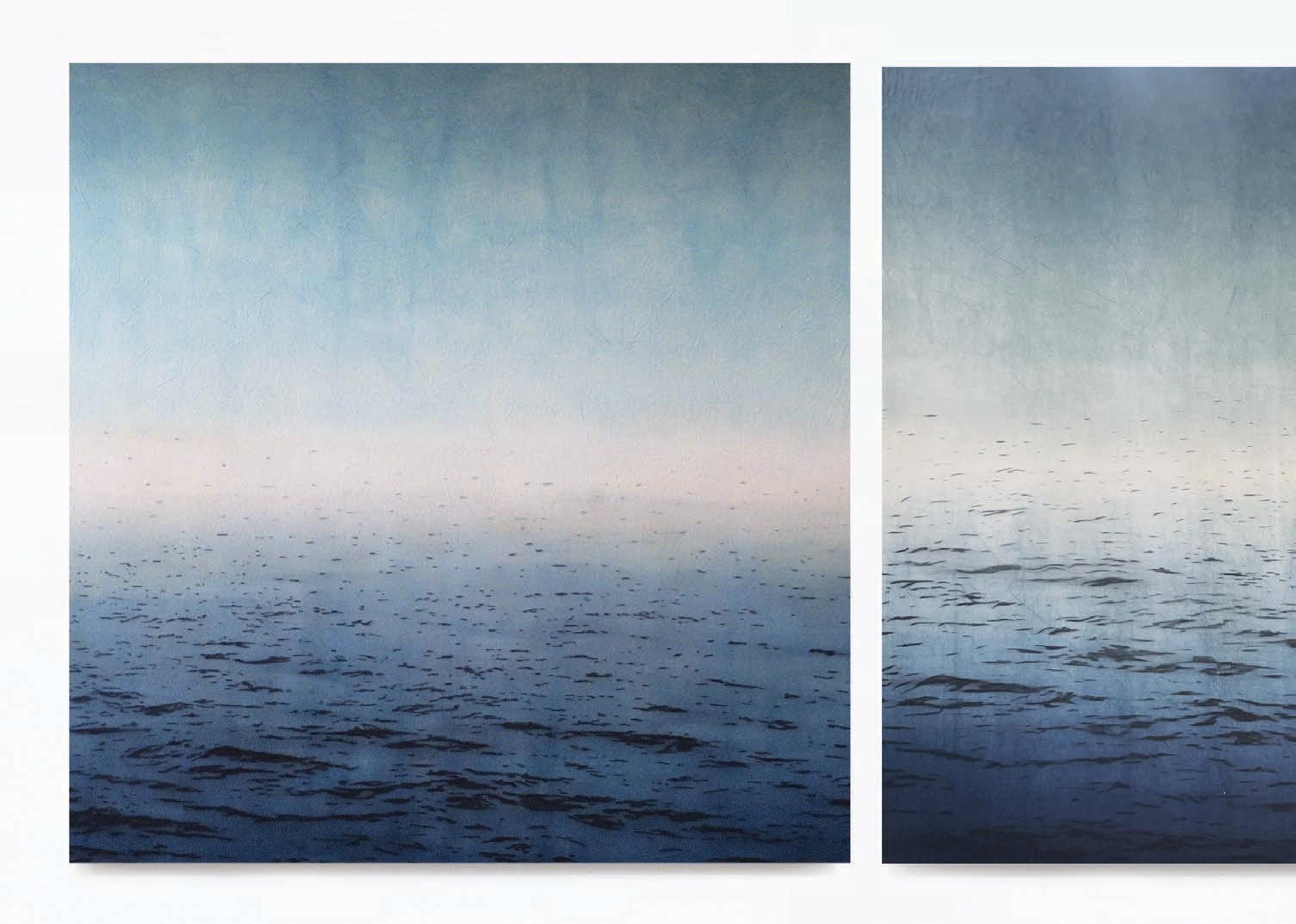
The Ocean in Front of You
Gazing out across the water, artist RICKY LEE GORDON found the peace and the practice he was looking for.
Ricky Lee Gordon’s mother used to lead art classes for the local neighborhood kids in Johannesburg.
“‘Everyone is an artist,’ she’d say at the beginning,” her son recounts. “But she’d say, ‘It’s up to you to decide how much of it you want to bring out in yourself.’”
Evidently her little boy was listening. Now 40, Lee Gordon works as a professional artist, known primarily for his vast indigo oceans and gestural landscapes. “Being an artist was never about having an ‘artistic gene,’” he says. “It was Malcolm Gladwell’s 10,000 hours.” If you showed up deliberately and intentionally and relentlessly for the process, art would be an inevitability.
It was a formula you had to keep feeding. As much as he knew from an early age that practice makes the artist, time and life experience play critical roles too. The early success Lee Gordon found kicked off his unique evolution. His was a circuitous path, to a house overlooking the Indian Ocean and a viewpoint inspiring enough to settle him into the consistent rhythm of making fine art.
At 16 he followed an impulse to paint a mural publicly on a grocer’s wall in Alexandra township, one of the poorest urban areas in the country. At 18 he launched a clothing line to build community through urban arts. By 25 he cofounded a youth marketing agency with clients that included Levi’s and Adidas. But at 27, Lee Gordon realized his personal dreams had taken too much of a backseat.
Ricky Lee Gordon
Beautiful Mirror, Exit and Enter, 2024
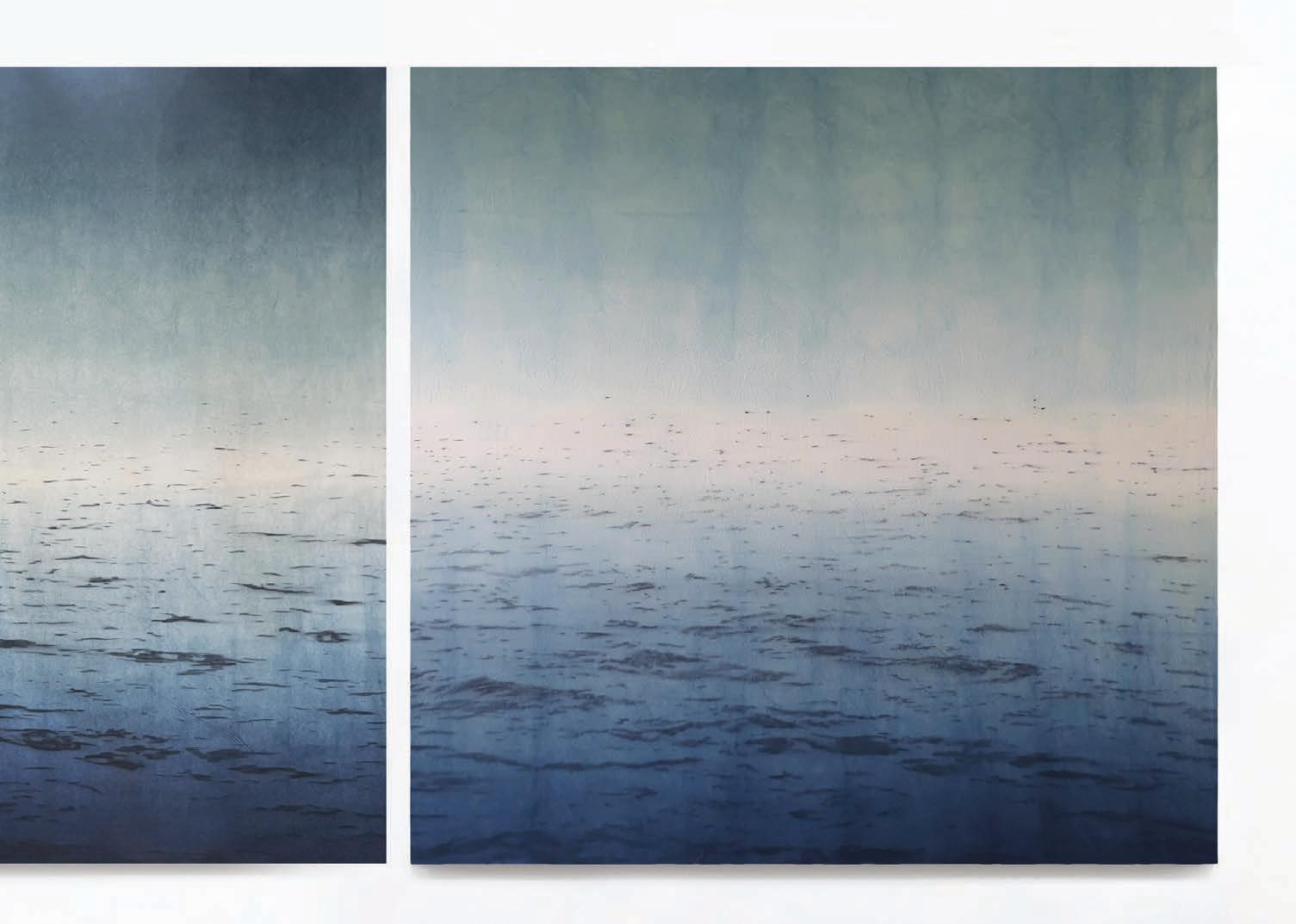
He quit everything, and received an invitation to take part in an artist’s residency at a Buddhist meditation retreat in Thailand. The experience introduced him to mindfulness and Buddhism, which have become central tenants of his current creative practice. The residency provided time and space to make art and think about little else. He left Thailand and began a years-long mission traveling around the world and painting murals (a practice that earned Lee Gordon recognition in a National Geographic article as one of “11 Guerrilla Street Art Greats”).
What the murals didn’t do was help Lee Gordon cultivate technical expertise. “I knew how to paint,” he says. “I had always been painting, but I was self-taught and had
formulated so many bad habits.” Pivoting once again, at 30 he enrolled at the Los Angeles Academy of Figurative Art on a scholarship. “Within weeks I was learning so much, so quickly,” he says. “But I realized that the school had designed itself to give you the curriculum over three years and I’m pretty sure they could have given it to me within six months.”
He dropped out only to realize that despite all the technical expertise, the art on his canvases felt stunted. With the money he earned painting murals, Lee Gordon signed a lease in Sri Lanka and began laying the literal groundwork of building a house and a studio space. Then COVID hit. “I’d basically spent everything I had to build the house and move myself to the ends of the
world. I thought: ‘No one is going to buy art, it’s the last commodity anyone would want in this pandemic. I’ve made the worst decision,’” he says. “And then this friend said to me: ‘No. Remember why you came here and remember how lucky you are. You have the ocean in front of you.”
The work that followed showed expansive ocean waves and wild landscapes that erupt from natural pigment. Lee Gordon is known to leave canvases out in the jungle and let the rain have its way with them before going back in with charcoal he makes by hand. Each material is crafted with intention and precision, yielding work that goes beyond constellating, beyond any formula, and now captivates audiences the world over.

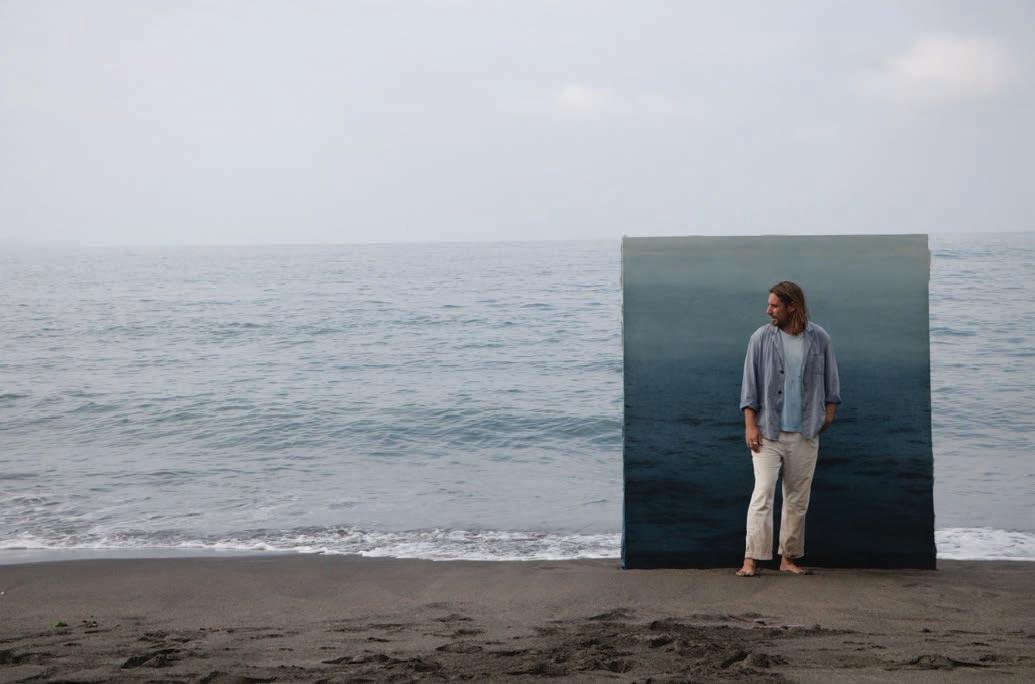
“One
Contemporary was to celebrate and incubate young emerging artists alongside more established ones. I’ve been through the ringer as an artist for so many years. Now I get the opportunity to offer artists the way I always wish I was treated.”
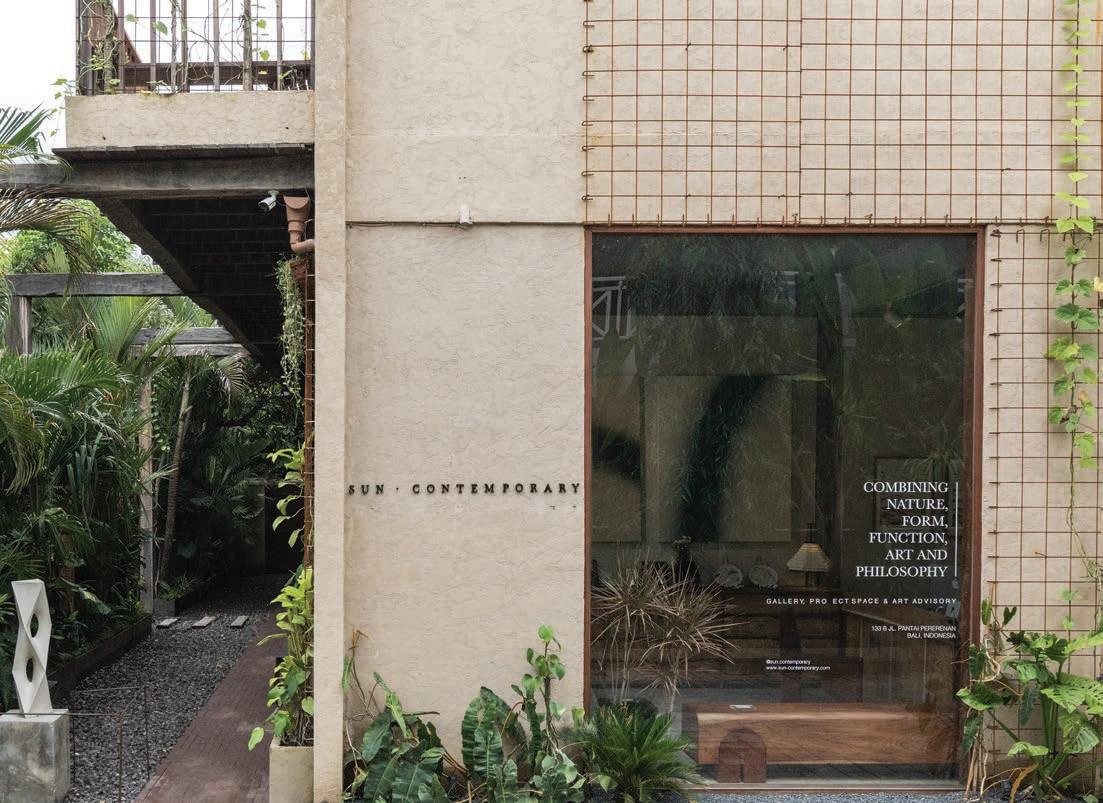
Lee Gordon on his gallery in Bali (right):
of the reasons I created Sun.
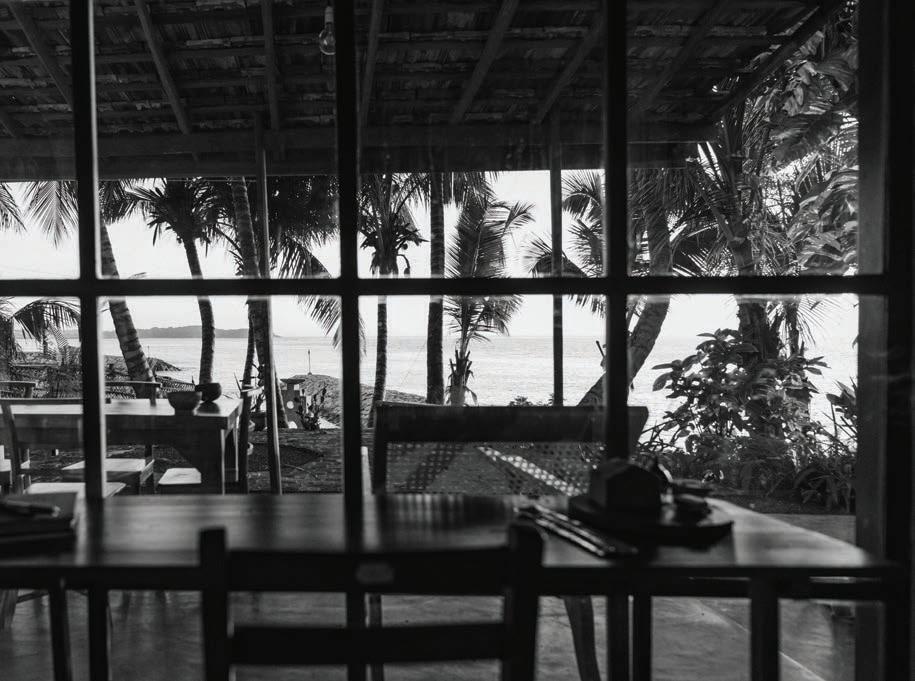
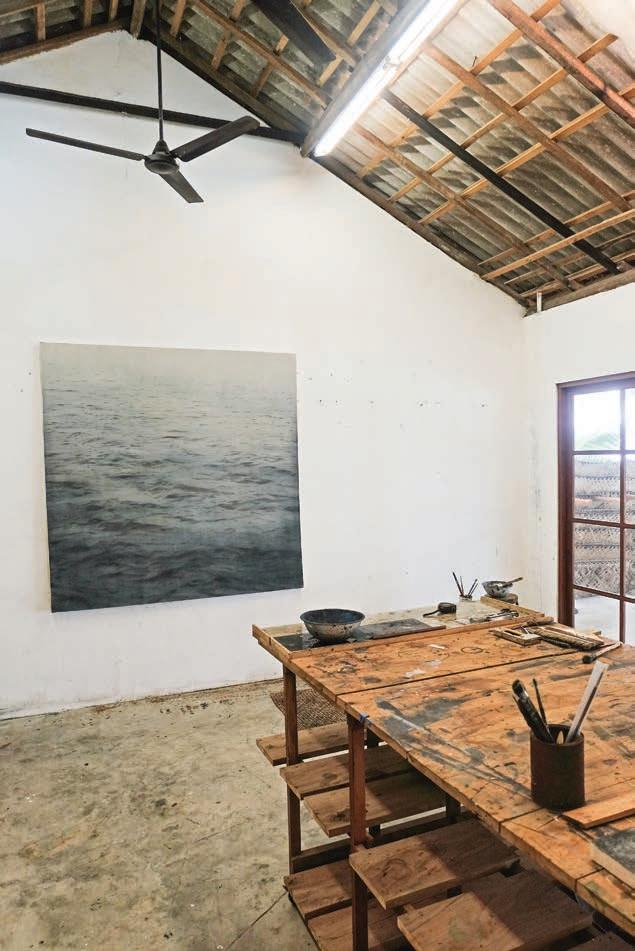
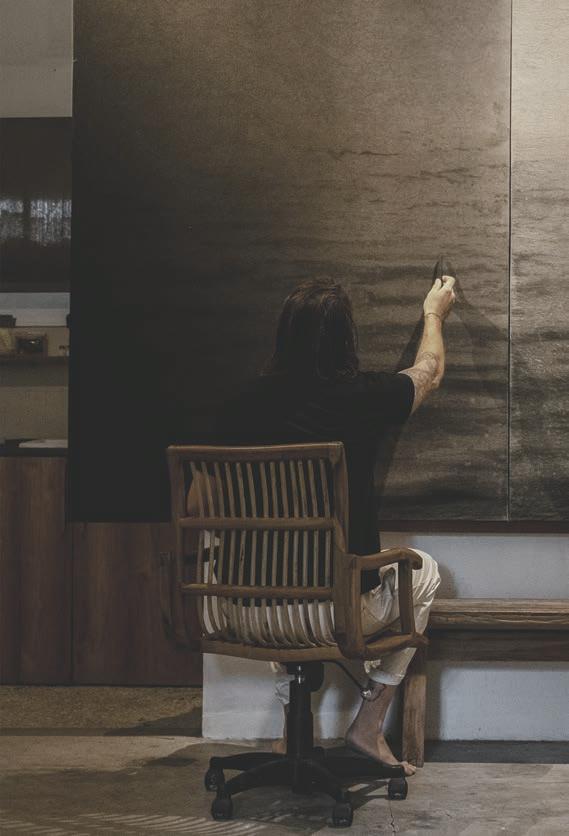
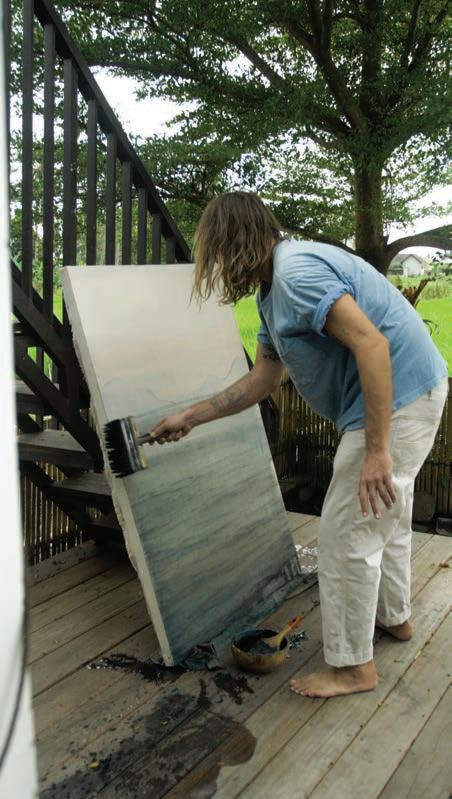
Clockwise
Gornika
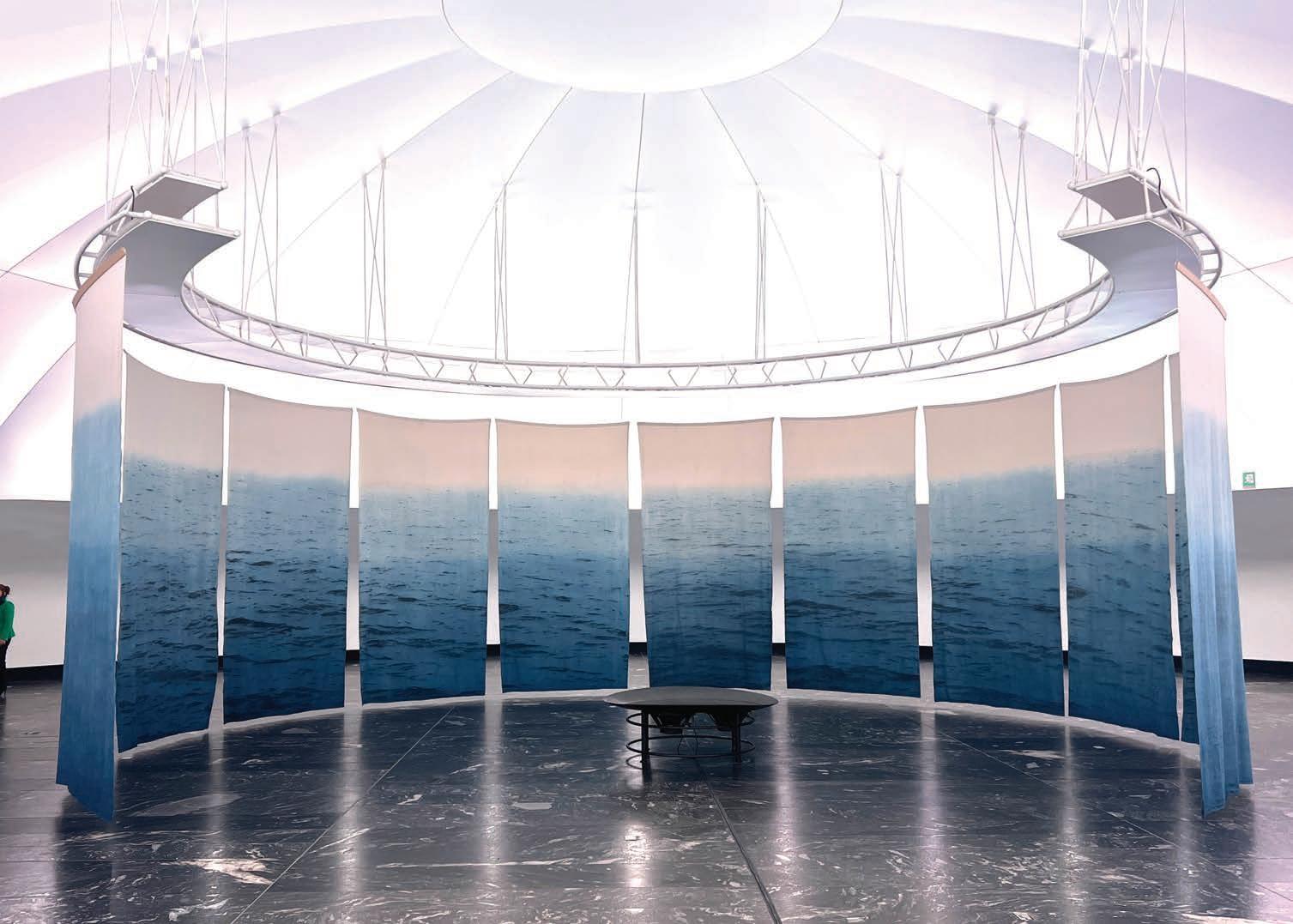
Have you always been drawn to the ocean?
I’ve always had a beautiful relationship with the ocean. For my birthday, every December, my family would go to the beach. Those times are very nostalgic and romantic for me. My mom would have to fight me to get me out of the water.
When I was 18, I went to get my scuba diving license in honor of my grandfather in Mozambique. I was lucky to grow up with his stories and his passion for art. He got sick when I was pretty young and he used his art collection to survive his illness. He was one of the first people in the world to have a
heart transplant, and he would sell pieces of his art to pay for medicine that helped him live for another 18 years, and also to travel the world. From the Galápagos Islands to Madagascar to Raja Ampat to scuba diving and seeking out the world’s wonders— he and my grandmother went on these crazy adventures and always came back with stories. I think that led to my own love of traveling, and pursuit of things other than money. Because of all my travels for murals, I scuba dived the world. I haven’t gone everywhere my grandfather went, but pretty close. I understood the corruption that money could
© Ricky Lee Gordon. Opposite
From Top: Courtesy Ian Cox; © Ricky Lee Gordon
Clockwise from left: We Are Water, Mexico City, 2024; Throw a Drop of Water Into the Ocean To Prevent It
From Drying Up, Belgium, 2018; I Am You, You Are Me, Chicago, 2016
have on someone’s life, and I saw in those last years that all he really wanted was life experience and joy. He left us nothing as a family because he had this philosophy: Live. He wanted his grandchildren to figure it out themselves—and I’m all for that. I’ve been independent since I was 17.
You were invited to paint something like 50 murals around the world and then enrolled in art school. Why?
Picasso said: “Learn the rules so you can break them.” This rigidness of understanding the rules is very important and that’s why I went to school. There’s a science behind drawing and painting ... it’s like the science behind everything in nature. There’s form, structure, weight, volume, balance, composition. Once you
understand that and you bring that in, you can break it and be fearless.
Was there a moment when you realized, I’m done here?
There I was, 30 years old and my professors were maybe 40. I questioned them about conceptual ideas and philosophy, but I was getting nothing back because they hadn’t pursued their own goals as artists. So it was very technical. I was doing 50-hour drawings for weeks every day in class. Sitting there drawing the same thing, same thing, same thing, I was like: This is my penance, this is my penance, this is my penance [laughs]. And then I realized: No, this is not right. There’s a point where you can lose your Peter Pan belief that there’s another way and you can just conform.

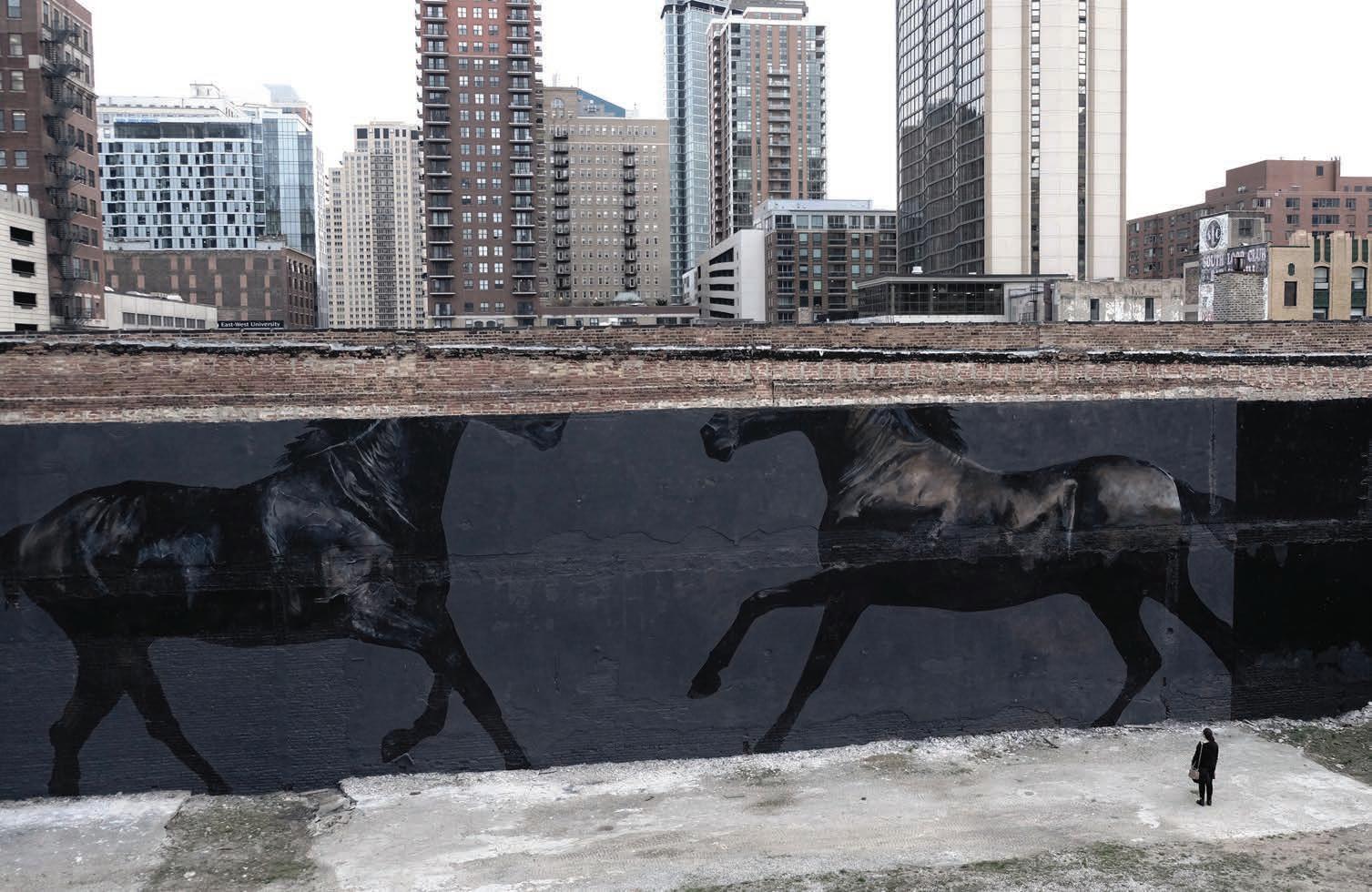

What happened in Sri Lanka?
The house there was built out of necessity. I was frustrated with the art that I was making, so my mission was to make a house that would allow for the art that had yet to be made—the art I wanted to make but didn’t know how to bring out of me. It was bubbling inside.
I designed and built it over the course of a year without making art. It was like a mindfulness practice … one thing at a time.
One of my favorite artists, Enrique Martinez Celaya, was a physicist and at 40 years old he said science was lying to him—he needed to paint. He wrote books and manifestos on the mindfulness of art and has signs in each of his studios saying: Keep Your Actions Faithful. So as you walk in the door, each step you take toward making the painting needs to be authentic. It’s like a Japanese tea ceremony where the teacup has as much reverence as the host, as the guests, as the washing up, as the drinking of the tea. Every moment is equal.
That idea was very inspirational to me while building the house in Sri Lanka. I’m frustrated with my art so I boiled everything back down to simple steps: Step 1: Staying true to my lifestyle and way of being.
Step 2: Building a space for the art to happen. Step 3: Having a practice that will be disciplined enough for me to put in the time for a result to happen.
After the house I experimented for a year and developed a practice of making art, surfing, and meditating, which eventually led to the eureka moment of taking a piece of the bodhi tree from above the house and making a fire, and making my own charcoal. It was the first time I made my own material.
I committed to making one piece of art every single day with the mindset of keeping it simple, repeating the same subject matter. I picked the ocean, painting the same view outside of my window. I went back to that school training of: same thing, same thing, same thing.
I called that series The Ocean: My Teacher, My Anchor, My Love. I started to post the story on Instagram and I sold everything that I made. It was like the whole journey paid off. I followed the intention, I followed the work, and it resonated. And then I just carried on painting the ocean not because I needed to—it became a meditation for me. Like muscle memory.
Singing Landscapes, 2021; Lee Gordon’s home in Sri Lanka, opposite
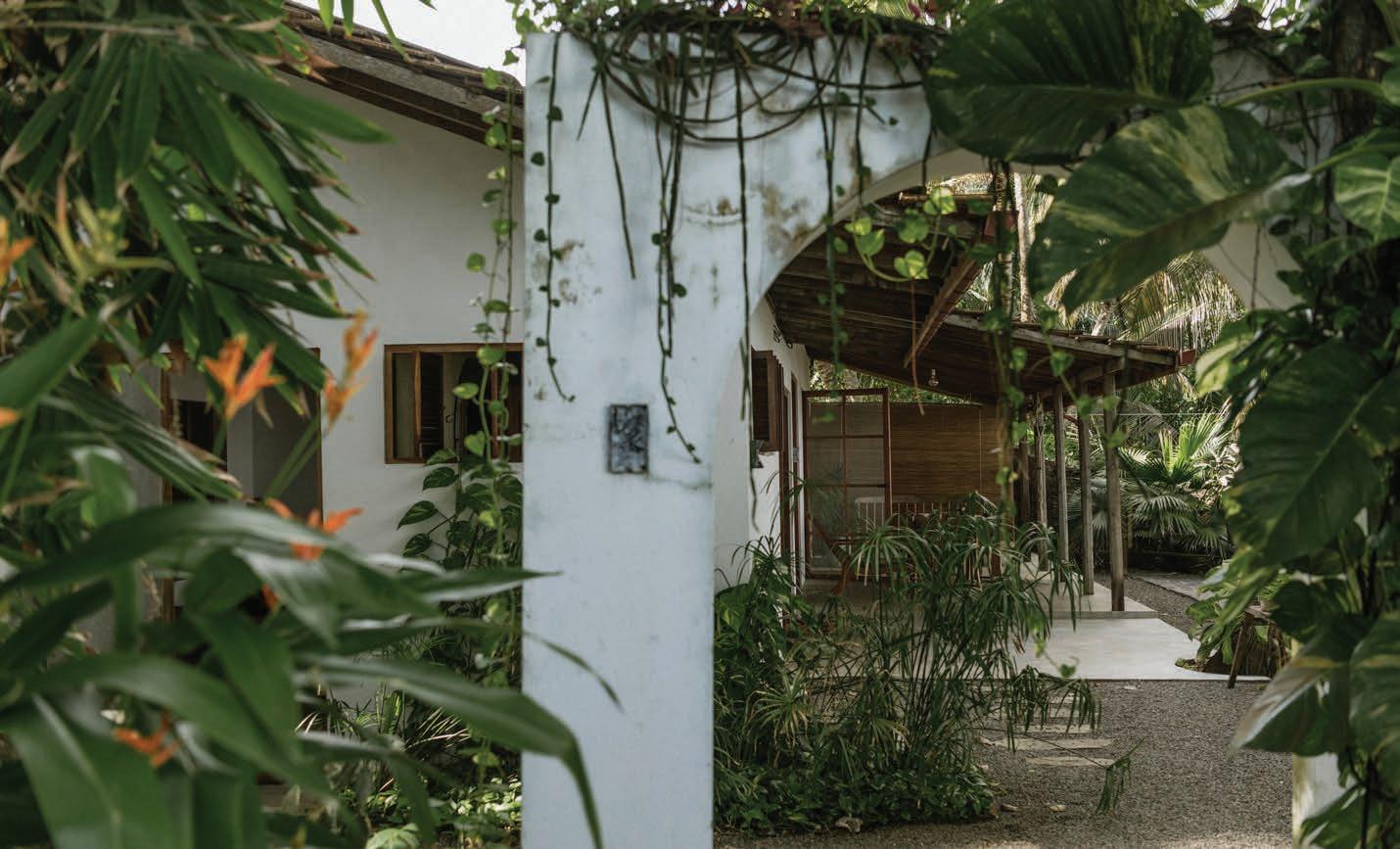
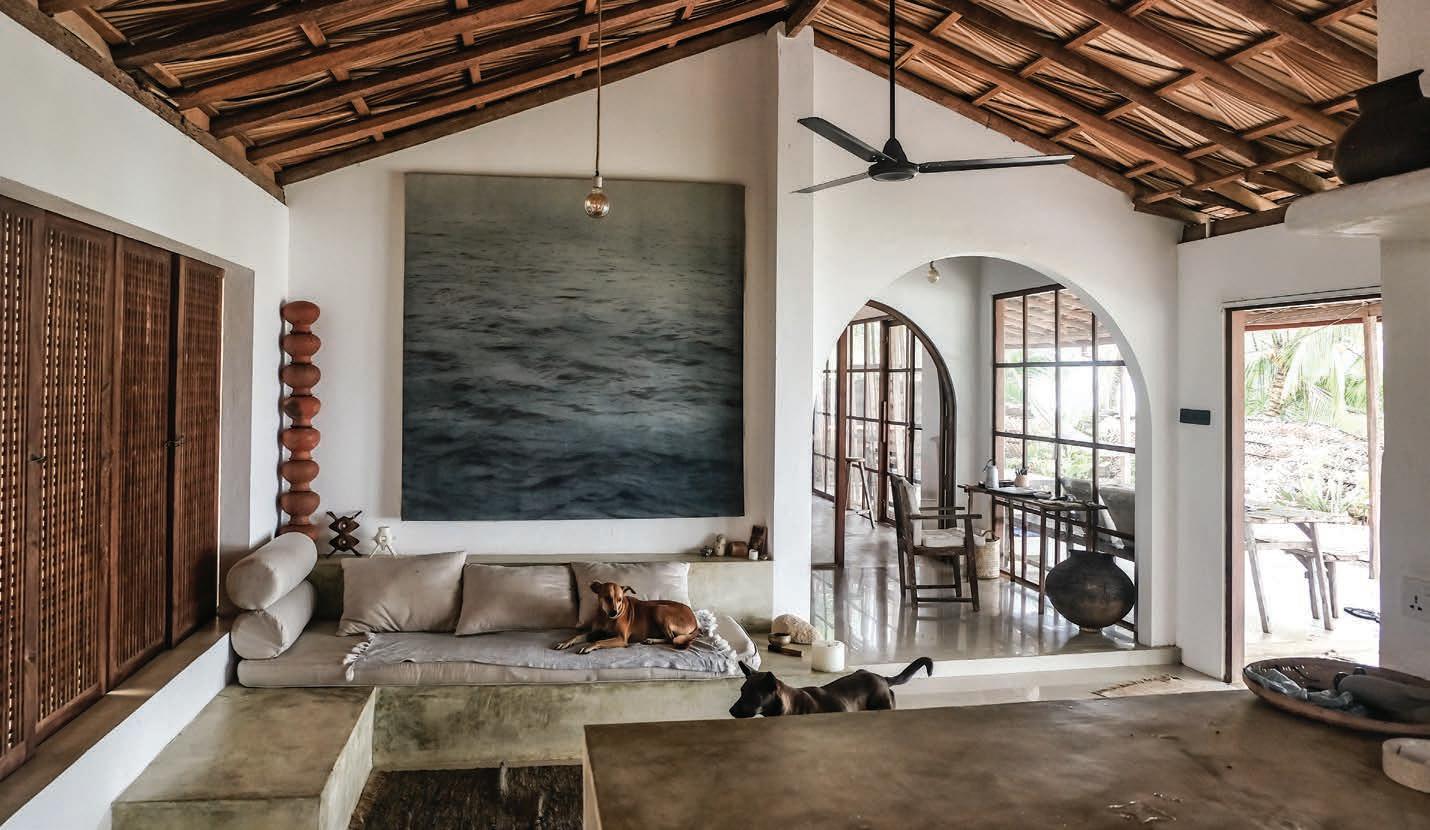

What are you working on now?
My materials have broadened. I’m using beeswax, rock pigment, dirt, rust. My whole palette is now a mix of nature, so I want my subject matter to also be a mix of nature. Each one of these materials has a different energetic resonance and I’m playing with that as a very naive alchemist—not knowing how any of these things combine. I’m only at the beginning of my journey now.
Why did you eventually move to Bali?
If Sri Lanka was the machine, Bali is the factory. I’m going to build a new house in Bali with a big studio—the dream studio. This is taking everything I ever learned and being able to scale it up so that I can make bigger paintings and have a station for everything: for mixing colors, for testing, for drawing. I’ll have a library and reference area, an exhibition area, and a wood-carving shed. I’m also sharing the property with three other artists, so everyone is going to contribute. It’s going to be a kind of artist village … a place to be able to make anything.
I’ve always been happier with a simple pace of life—less city, more nature and more ocean ... barefoot. Bali allows for that. I was living in Los Angeles after my scholarship there and got invited to do an art residency in Bali. I fell in love with it and with the idea of
having a studio in nature. I pivoted and moved to Sri Lanka instead, but Bali kind of called me back.
How did you decide to build your own gallery?
I didn’t plan on it, but now I’m 40 and back to wanting to build community again while also making time for my art. One of the reasons I created Sun.Contemporary (suncontemporary.com) was not because I wanted to be this super successful gallery; I just wanted to celebrate and incubate young emerging artists alongside more established ones. I’ve been through the ringer as an artist for so many years. I’ve been burned so many times, I’ve been hosted so many times, and now I get the opportunity to offer artists the way I always wish I was treated. I wouldn’t have been able to do that if I didn’t go on that path myself and figure things out the hard way.
There’s a body-knowing that happens when you walk through it yourself. Exactly. It becomes a sixth sense, an intuition or innsæi, and now the kinds of artists we’re attracting, the kinds of collectors we’re attracting, the kind of community we’re attracting ... we’re not having to yell it so loudly. It’s just happening. u
—Reported by Brooke Mazurek
Various copper engravings, 2025; Die Sonne Wird im Ozean versinken, or “The Sun Will Sink Into the Ocean”, 2017, opposite
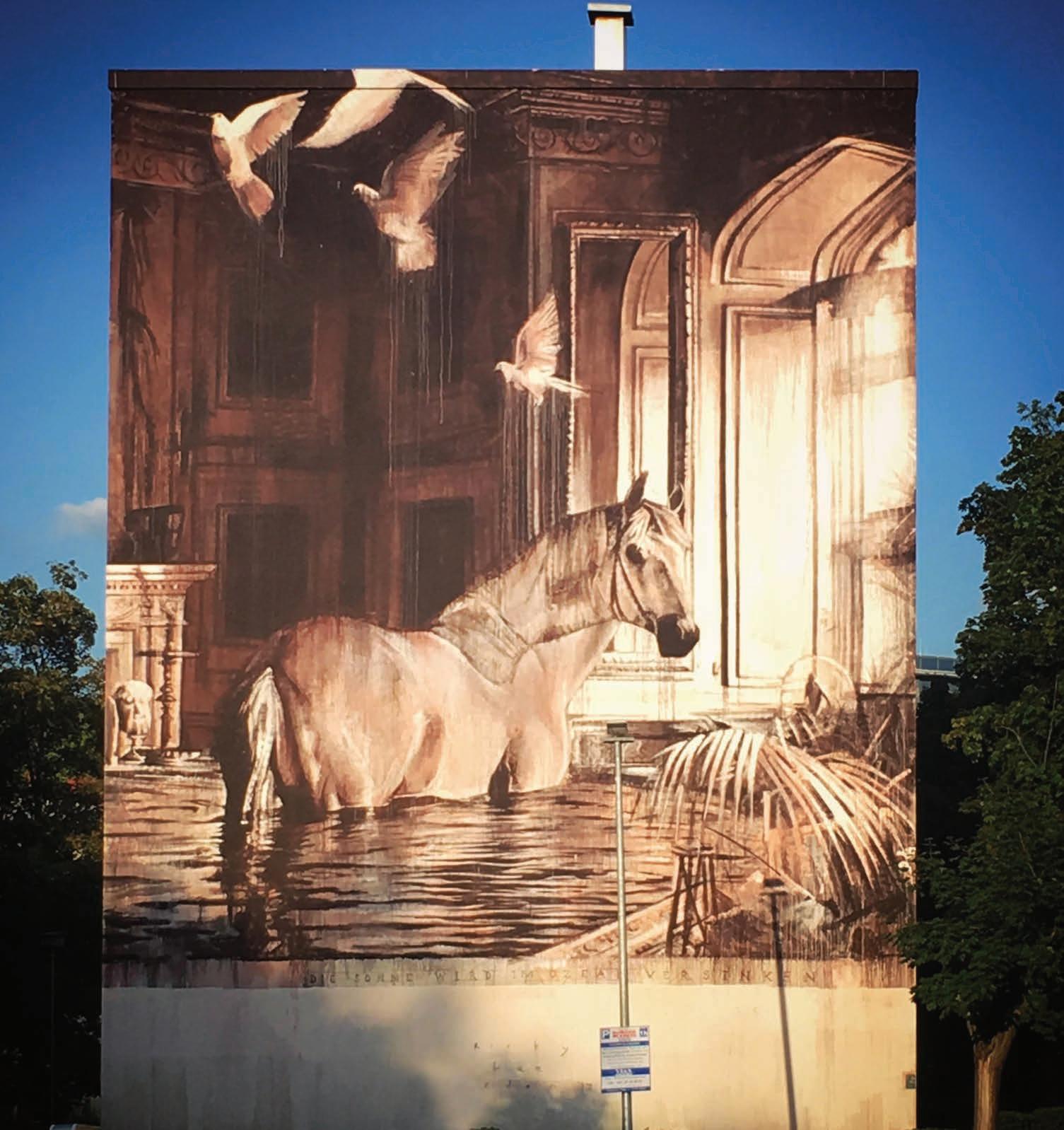
What’s Next SHOP
French design gallery ETĒLINE opens in a serene Chelsea space with an abundance of industrial-era windows framing the New York skyline. Shop for furniture, lighting, and accessories by visionary artists and artisans from France. Private visits scheduled via the website. eteline.com
North Carolina basket maker Delia Fian transforms tangles of kudzu and other invasive vines and woody shoots into sturdy backpacks and beautiful, useful baskets. She offers weaving classes online and through her own nonprofit, School of the Greenwood. deliafian.com
Jim Thompson at The Storeys at One Bangkok (the city’s newest integrated hub for arts and culture) is the brand’s first-ever lifestyle store. Expect luscious Thai silks in jewel tones, available by the yard or made into scarves and chic resort wear (think White Lotus). Stop by Jim’s Terrace rooftop restaurant for a Thai iced tea, seasonal small bites, and views over the city. jimthompson.com

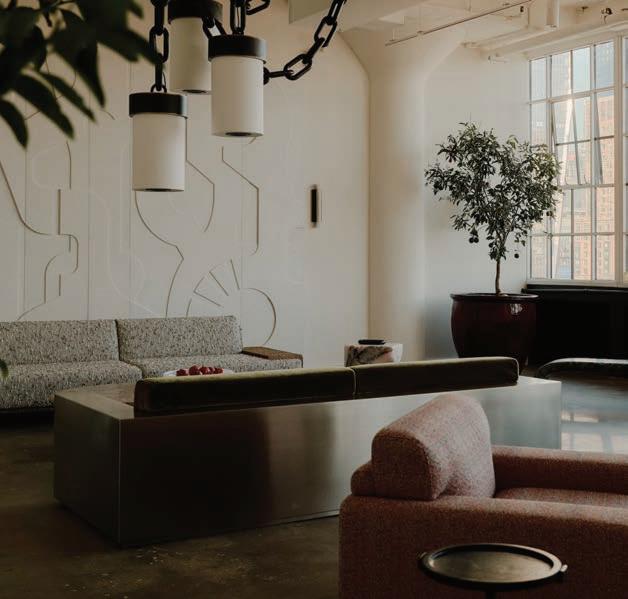
FRESH SCENTS
Invigorating Fragrances to
Try: Inspired by famed whisky brands, fragrance house Kingdom Scotland (from $160; kingdomscotland.com) creates complex scents—black pepper, tobacco, and dark rose—using natural ingredients. Rain Wood by Perfumer H (from $780; perfumerh.com) evokes the scents and stillness of the great outdoors after a rainstorm. Depending on the season, Venice, California–based Strange Invisible Perfumes (from $70; siperfumes.com) purveys various unconventional, botanically based fragrances from the garden. The Maker Hotel (from $42; themaker .com) in New York’s Hudson Valley bottles its signature scents—a beguiling mélange of woodsy and sultry. Scotland’s wild highlands are the inspiration of the Albamhor Collection bath and body products by the 46-room Fife Arms (boxed gift sets from $125; thefifearms.com) hotel in Aberdeenshire.
HANDMADE IN ENGLAND
Rare and Wonderful Goods: There is a waiting list for Somerset-based Studio Ashåy’s (studioashay .com) beautifully tailored clothes (circle skirts, wrap tops, denim jumpsuits), but loyal customers don’t mind waiting. She also makes ready-to-wear pieces. Christine Lewis (@christinelewisstudio) concocts natural dyes from plants (flowers, berries bark, vegetables) to color organic fabrics, which she makes into cushions, curtains, and napkins. In the Forest of Dean, Rhian Wyman (rhianwymandesign.co.uk) weaves a limited number of unique woolen blankets a year. Husband-and-wife team David and Catherine Collins of March & May (march-may .co.uk) design and screen print (by hand) their linen fabric and wallpapers. Request generously sized swatches.

Coral & Tusk, creators of nature-inspired, embroidered woodland pillows, table linens, and cards, introduce new designs with the changing seasons. Once temperatures cool off, look for pillows with winter birds, downhill skiers, and Christmas pillows with little pockets for tiny gifts. coralandtusk.com.
Watch and jewelry retailer Avi & Company—a big name among timepiece collectors—has showrooms in New York, Miami, and now, Aspen, specializing in statement pieces, multicarat engagement rings, and putting-on-the-ritz bracelets and necklaces. aviandco.com
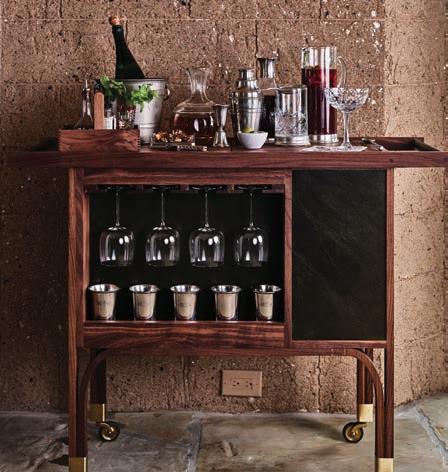
The handsome Blackberry Farm Bar Cart is handcrafted from walnut, brass, and leather. Stylish for dispensing drinks with storage for your sterling julep cups, stirrup cups, and handmade glassware. $11,200; blackberryfarmshop.com
Studio Ashåy
Blackberry Farm Bar Cart
Courtesy Images From Top: ETĒLINE; Coral & Tusk; Blackberry Farm; Studio Ashåy

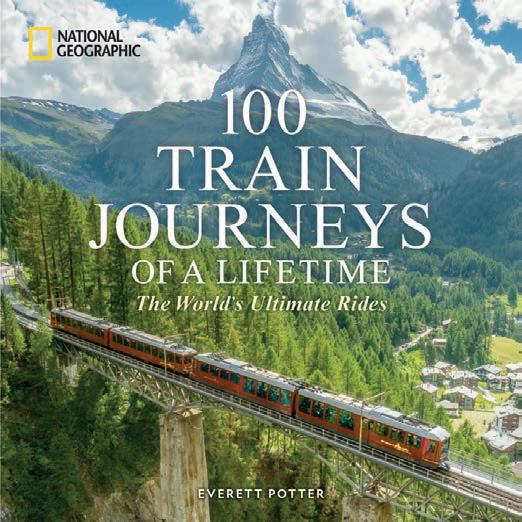

BOOKS
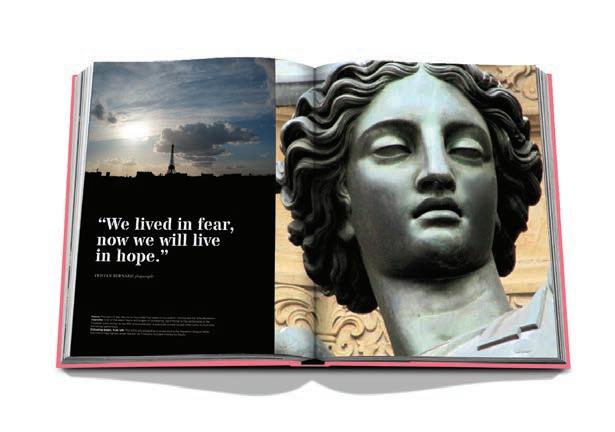
Living with Flowers by Aerin Lauder invites readers into the author’s homes and gardens to enjoy the beauty of flowers— whether it is a simple vase of daffodils, a lush centerpiece for a dinner party, or an entire room papered in a louden floral motif. $60; rizzoliusa.com
National Geographic’s 100 Train Journeys of a Lifetime: The World’s Ultimate Rides by expert travel writer Everett Potter exhibits the greatest railway adventures, from the Canadian Rockies to Italy’s wine country. $40; penguinrandomhouse.com
From the glamorous Belle Époque to the recent Olympic Games, Picasso at the Bateau-Lavoir, jazz in Saint-Germain-des-Prés, and Dior’s New Look, Paris by Paris reviews everything that made the City of Light the world’s most visited city. $250; assouline.com
Karl Lagerfeld: A Fashion History paints a candid portrait of the influential fashion designer, based on interviews with Lagerfeld himself, his muses, and his close associates. $45; rizzoliusa.com
Italian Interiors: Rooms with a View showcases Italy’s most impressive domestic spaces—from historic to contemporary, minimalist to maximalist— lavishly photographed. $70; phaidon.com
All About Yves documents the life of the famous designer, from his childhood to the seminal moments of his career, and includes previously unseen sketches and photographs of Saint Laurent’s key collections. $85; laurenceking.com
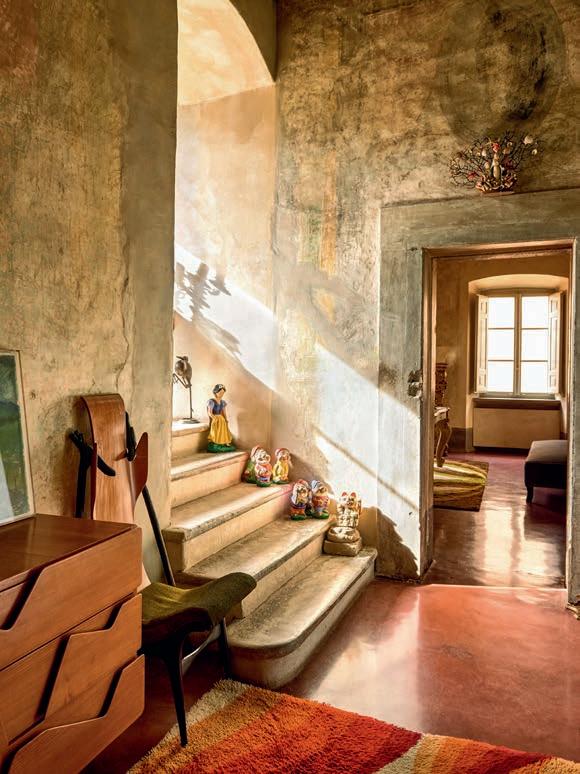
Women Architects at Work: Making American Modernism tells the untold stories of innovative, early- to mid-20thcentury female architects. Source material includes the women’s personal archives and scrapbooks still held by their descendants. $65; press.princeton.edu
Dusty Booze: In Search of Vintage Spirits by Aaron Goldfarb takes a deep dive into the booming world of vintage spirits and intensely passionate collectors who dream of “hidden stashes” and sometimes find them. $27; abramsbooks.com
Turkuaz Kitchen: Traditional and Modern Dough Recipes, a baking book by social media star and baker Betül Tunç, contains tried-and-true methods as well as recipes she’s discovered on her travels. $35; crownpublishing.com


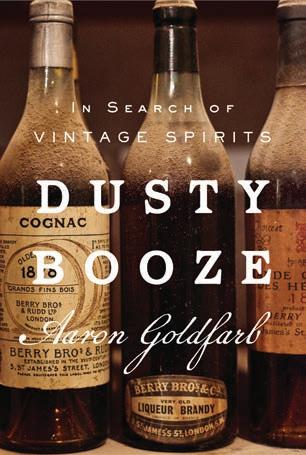
What’s Next FOOD & DRINK
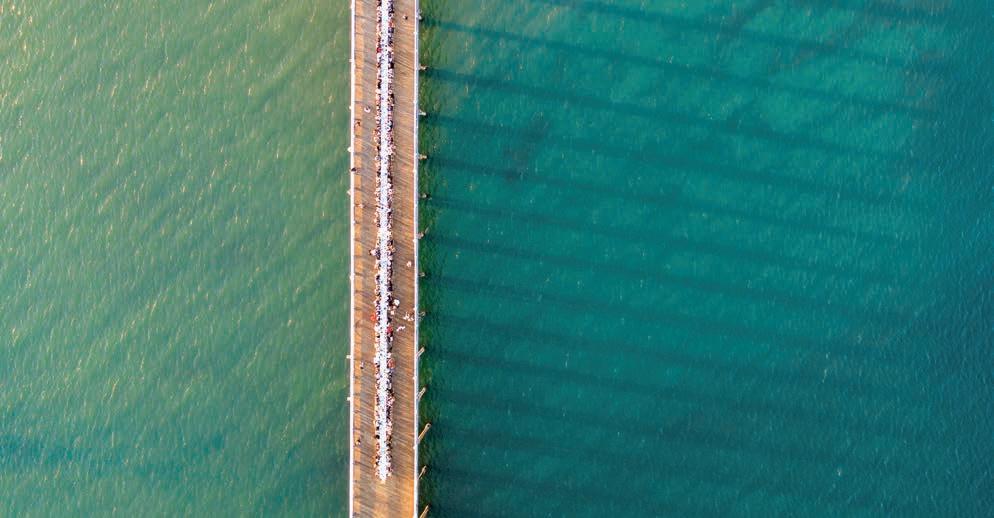
RESTAURANTS
Outstanding in the Field—the ultimate farm-to-table dinners (often held right on the spot in a farmer’s field)—announces upcoming dinners through winter 2025–2026. Choose among many unique locations, from Silver Oak vineyards in California to farms, orchards, and beaches throughout the United States, Canada, Mexico, France, and Italy. outstandinginthefield.com
Parisian-born baker Dominique Ansel, inventor of the donutcroissant-hybrid Cronut, opens a much-anticipated new bakery, Papa d’Amour, in New York’s Greenwich Village. Expect a highly creative fusion of Asian
ingredients (his wife is from Taiwan) and French techniques. papadamourny.com
Jenner Tomaska (a 2024 James Beard Award finalist and the chef behind Michelinstarred Esmé) launches The Alston, a luxurious steakhouse with a French edge in Chicago’s Gold Coast. It will be “this kind of grandiose, 1920s, nouveau era of French cooking,” he says. Dishes include pressed duck carved tableside. thealston.com
Try fine dining on the move via Bustronome. The concept has launched in Paris, London, and now, New York. Enjoy a chef-prepared lunch or dinner (with wine pairings) while the
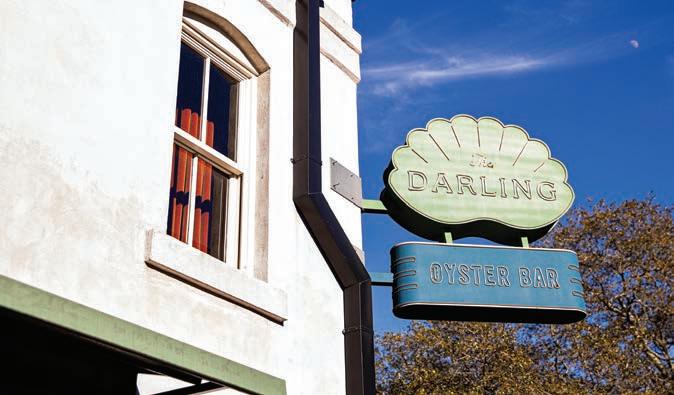
Outstanding in the Field
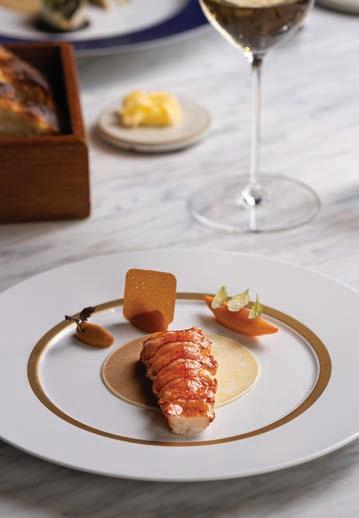
glass-roofed double-decker bus slowly drives past monuments and landmarks. From $109/ person, kids’ menu from $50; bustronome.com
Michelin-starred chef Simon Rogan’s first Mediterranean restaurant, ION Harbour in Valletta, Malta, highlights local flavors in a short- or full-tasting menu that could include wild fennel stuffed grouper, wild prawns, and dry-aged lamb loin with a zesty Brassica rapa sauce. ionharbour.com
Milan’s legendary Sant Ambroeus has opened an outpost in Aspen, combining the warmth of an Alpine chalet with elegant Milanese-style
Italian cuisine influenced by the bounty of Rocky Mountain rivers and farms. Recently: polenta, fegato e funghi, featuring local wild mushrooms; ossobuco alla milanese, including a side of buttery Yukon Gold potatoes. santambroeus.com
The Darling Oyster Bar, always crowded and lively in Charleston, South Carolina, launches in Savannah, Georgia. As you’d expect, the menu features a wide variety of oysters from up and down the Atlantic seaboard, as well as fried oysters, crab cakes, and shrimp and grits. House specialties include scallop ceviche and sautéed
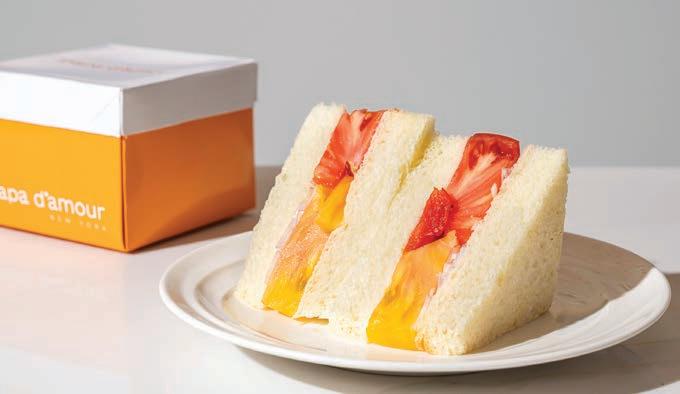
Courtesy Images, Clockwise From Top Left: Outstanding in the Field/Brighton Denevan; ION Harbour; Papa d’Amour/Evan Sung; The Darling Oyster Bar/Andrew Cebulka
Papa d’Amour
ION Harbour
The Darling Oyster Bar
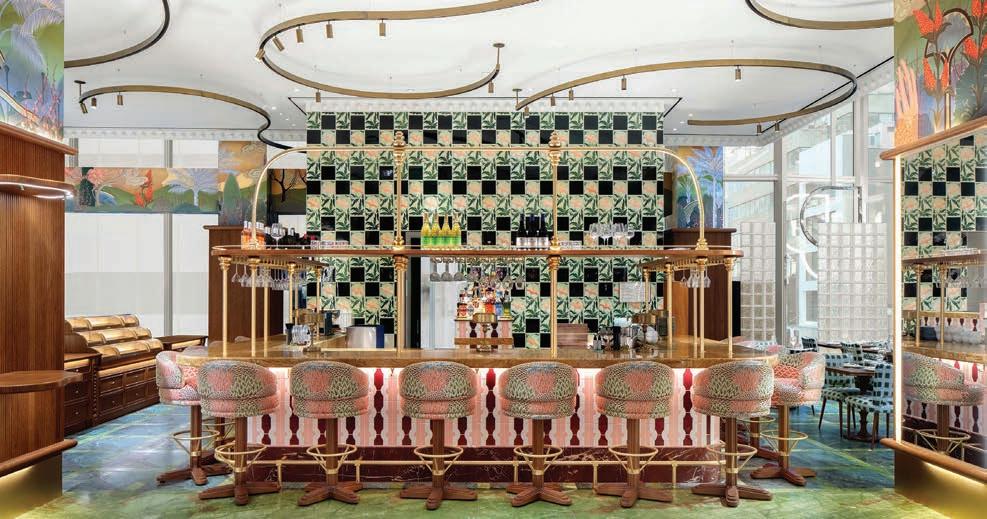
mussels—plus a full bar and dozens of beers on tap. thedarling.com
Serving quintessentially British dishes, The Georgian (on the fourth floor of Harrods) is the epitome of Edwardian glam—starched white linens, twinkling chandeliers, and a piano playing show tunes (at night, a jazz band). It has been a restaurant since 1911. Newly appointed chef Calum Franklin spotlights retro-recipes from Harrods’ archives and an ever-changing menu of beautifully crafted pies. Maybe shoulder of lamb with confit onions or smoked rabbit pâté with marsala jelly? harrods.com
Inside the first US outpost of luxury retailer Printemps at 1 Wall Street in New York, Maison Passerelle (helmed by James Beard Award–winning chef Gregory Gourdet) serves French country dishes imaginatively interpreted using ingredients and techniques from former French colonies—Vietnam, Cambodia, North and West Africa, and Haiti (Gourdet’s ancestral home). Don’t miss the intricately tiled raw bar. maisonpasserellenyc.com
Oslo’s Bar Amour serves Nordic-Portuguese cooking in a tiny, theatrical setting, and earned a Michelin star in 2024. Chef Carlos De
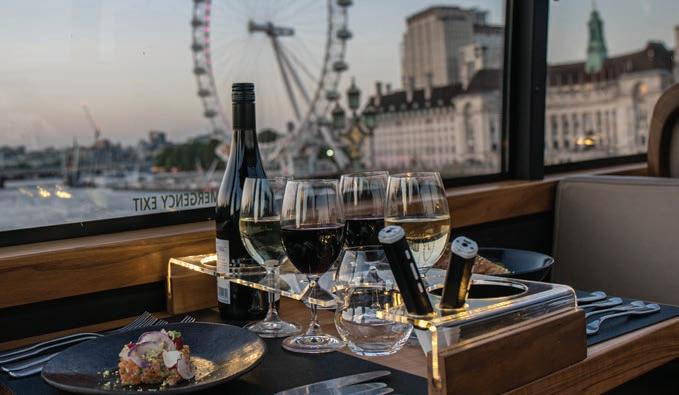
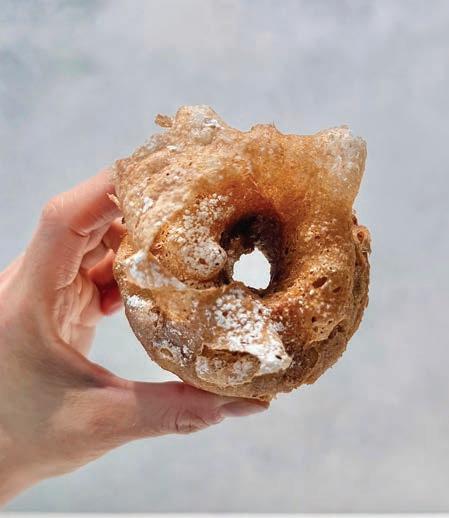
Medeiros blends superb, recognizably Norwegian produce, like skrei cod and reindeer, with influences from his native Portugal. Awardwinning meals using only a Binchotan grill and a waffle iron—set up on the bar. A sixcourse tasting menu offers wine or house-made juice pairings. baramour.com
Vox Restaurant & Bar in Berlin’s Grand Hyatt specializes in seafood, from oysters to lobsters to freshly caught fish. Locals rave about the extravagant sushiand-Champagne events. The elegantly dark bar offers whiskey flights and live music nights. vox-restaurant.de
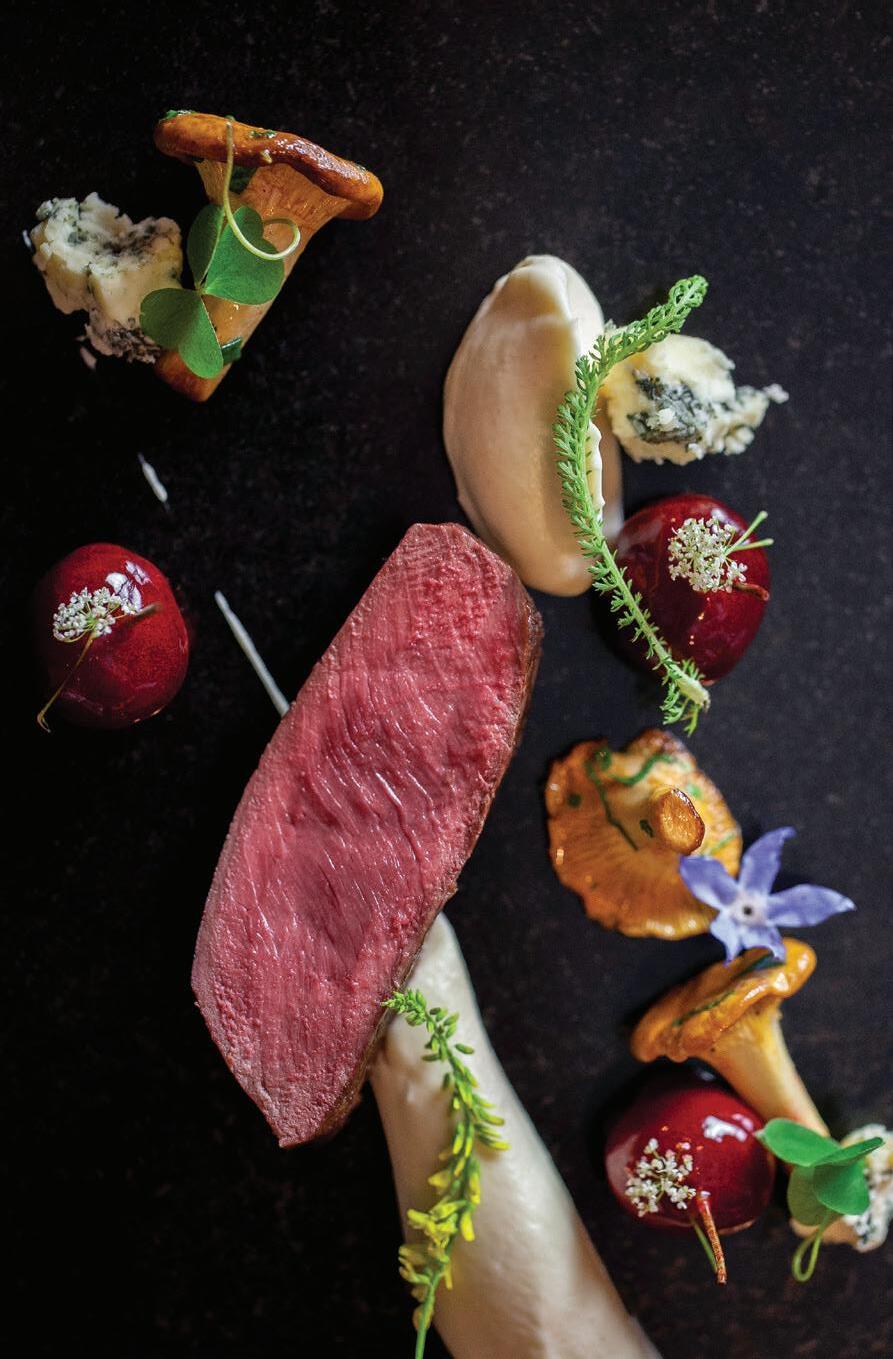
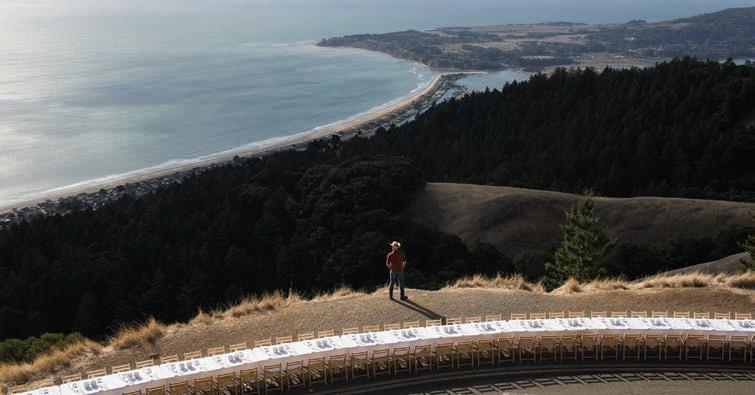
Maison Passerelle
Vox Restaurant & Bar
Papa d’Amour
Bustronome
Outstanding in the Field
What’s Next FOOD & DRINK
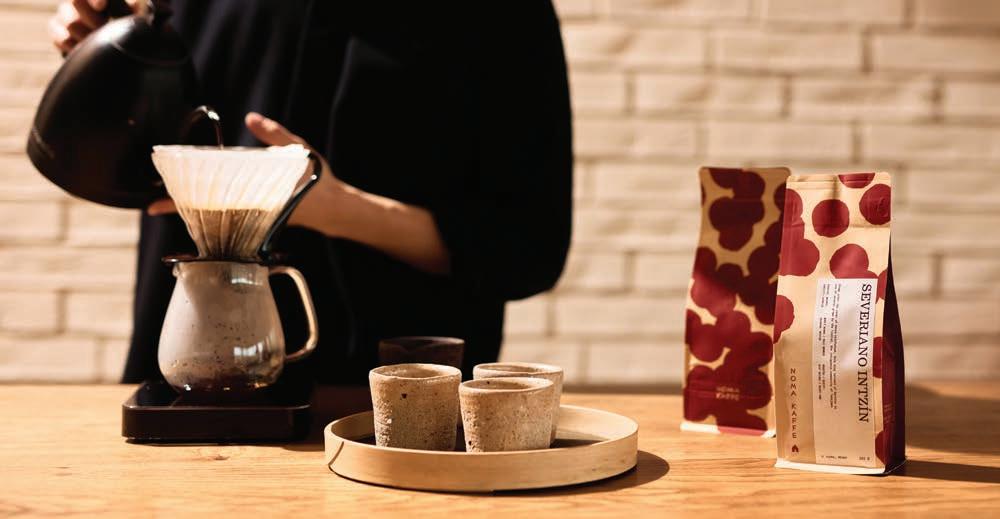
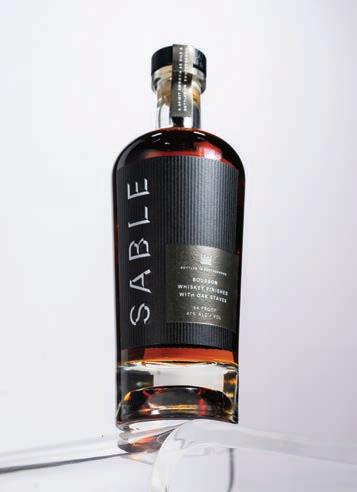

FOOD & DRINK
Noma Kaffe is Noma restaurant’s first coffee offering. Every month, members receive two bags of coffee beans, selected by Noma’s head sommeliers and roasters in Copenhagen, as well as a brewing guide and tasting notes. Monthly, 6-month, and 12-month plans available. From $65/month; nomaprojects.com
Bissinger’s Handcrafted
Chocolatier was founded in Paris in 1668 as confectioners to “The Sun King,” Louis XIV. Now made in the United States (in St. Louis, coincidentally), sweets are still made by hand in small batches, using original recipes. From $52 for the 24-piece Imperial Collection. bissingers.com
Grand Cru de Batz salts are wind-dried and hand-harvested on Brittany’s western coast. Try the East Wind Salt (it was Louis XIV’s favorite) or the Smoked and Flambéed Salt (woodsy with a hint of extra-old cognac). From $28; vinegarshed.com
Katz’s Delicatessen on New York’s Lower East Side, the undisputed pastrami king, offers a new

combo: The Reuben & Rachel Package is a sandwich duo of corned beef and hand-carved turkey ($135), or buy their awardwinning pastrami by the pound ($40). katzsdelicatessen.com
Jessica Koslow’s seasonal and influential LA restaurant, Sqirl, just launched nationwide shipping, which means you can order artful jams such as biodynamic satsuma plum and shiso or Early Girl tomato and coriander. From $15/jar; jam subscription from $72/four months; sqirlla.com
Frances Mayes’ Tuscan estate Bramasole (the setting of her memoir, Under the Tuscan Sun) has released its fall 2024 harvest of extra-virgin olive oil. $200 for six 500 ml bottles; bramasoleoliveoil.com
The newest offerings from Goldbelly: Ina Garten’s carrot cake ($100), Union Square’s Bolognese sauce ($70/three jars), a curated box of slowcooked meats and sides ($170, serves 4–6 people) from World BBQ Champion Melissa Cookston. goldbelly.com
French Broad Chocolates
an Asheville, North Carolina, business hit hard by Hurricane Helene—introduces its hot chocolate collections. Dark chocolate and milk chocolate (crafted with organic cacao from Peru) and cinnamon (spiced with an heirloom Vietnamese cinnamon). From $20; frenchbroadchocolates.com
WINE & SPIRITS
Utah’s Dendric Estate launches a line of dry mountain ciders— produced from organic apples grown on a 20-acre, high-altitude, dry-land farm, using traditional wine-making methods—as well as nonalcoholic mountain tonics and small-batch apple brandy. dendricestate.com
Stranahan’s limited-edition American single malt whiskey Snowflake, released annually in December, has earned a cult-like following. In Denver? Stop by the distillery for a cocktail class, a top-shelf whiskey tour, or a chance to join the volunteer bottling crew, rewarded with lunch and a free bottle. $120; stranahans.com
Courtesy
Images
From Top: Noma Kaffe (2); Sable
Bourbon;
Bissinger’s Handcrafted Chocolatier
Noma Kaffe
Bissinger’s Handcrafted Chocolatier
Sable Bourbon
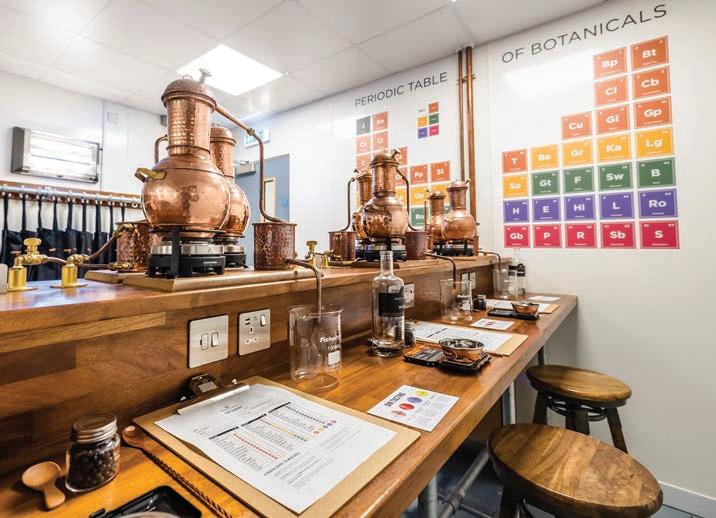
A short drive from Cardiff, Wales, 400-year-old Hensol Castle is now a 23-room hotel with its own golf course and an award-winning distillery. Try the Hensol Castle Welsh Dry Gin (a Myfyr Morganwg limited edition) in an ice-cold martini— shaken, not stirred. From $45; hensolcastledistillery.com
Smooth, smoky, and dark amber, Sable Bourbon (in a heavy, sculptural bottle) is a collab between the artists behind The Best Man movie and Kentucky craft whiskey producer Bespoken Spirits. $63; sablebourbon.com
World Whiskey Society sources ultra-premium bourbons and single malts worldwide. Some of their more unusual releases include partnering with Ducks Unlimited for a 10-year-old Kentucky Straight Bourbon ($300)—the bottle and carrying feature details are from a master hunting rifle engraver. From the Reserve Collection, source difficult-to-find bottles like a 32-year-old Strathmill single malt whisky ($2,500). worldwhiskey.com
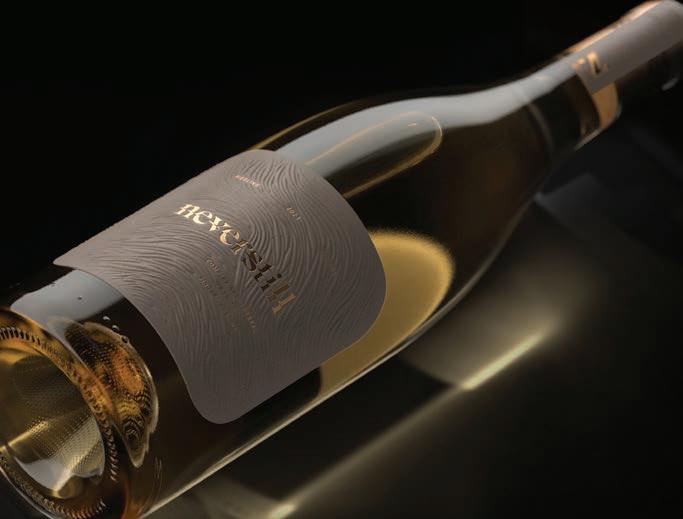
Antica Terra, one of the premier wineries in Oregon’s Willamette Valley, announces an autumn 2025 release for its distinctive 2023 Aurata chardonnay and silky, elegant Botanica pinot noir. Become a member to receive advance notice of the soldout-within-minutes releases. anticaterra.com
Los Poblanos farm grows organic lavender and other botanicals in the village of Los Ranchos, near Albuquerque, New Mexico. Its garden-toglass bar features three very different gins—western dry, lavender, and bourbon-barrel rested. All three are available by the bottle at the farm’s shop and Farm Shop Norte in Santa Fe. The property’s farmto-fork restaurant, Campo at Los Poblanos, is a James Beard Award semi-finalist. lospoblanos.com
BARS
La Noxe Trinity NYC specializes in futurist cocktails and signature martinis from the creative team behind the original La
Noxe (located, improbably, inside the 28th Street subway station). This new bar overlooks Trinity Church in the Financial District. lanoxenyc.com
Neverstill Wine Tasting Room in Hudson, New York, pours flights of handcrafted wines from Neverstill bottles plus local examples from other small wineries in New York’s Finger Lakes and up to the Hudson Valley. neverstillwines.com
At After Eight in Calgary, Alberta, sign up for the 60-minute Cocktail Tasting Experience in this tiny (only eight seats) speakeasy inside the Alt Hotel. Drinks made from locally foraged ingredients and premium spirits are artfully presented. aftereightcdn.ca
Step into the basement of the landmark Book Tower for a dark but inviting place to drink whiskey. The Aladdin Sane Cocktail Bar in Detroit is named after David Bowie’s American road trip rock album. thealaddinsane.com
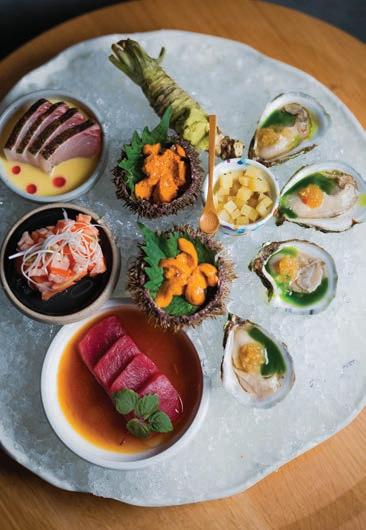

The Aladdin Sane Cocktail Bar
After Eight
Hensol Castle Welsh Dry Gin
Neverstill Wine
What’s Next FOOD & DRINK
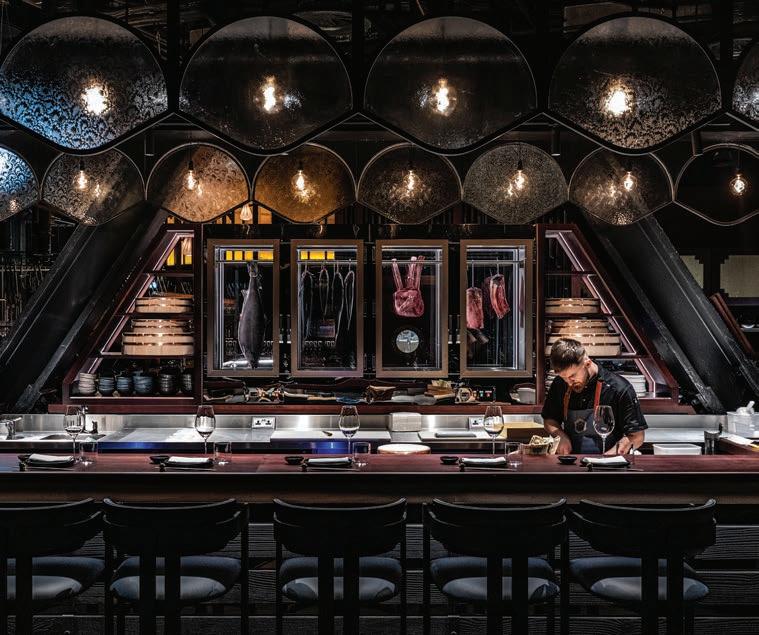

DENMARK’S MICHELIN STAR ROUTE
Follow This Nordic Foodie Trail:
From Copenhagen to the North Sea, Denmark is a gastro-mecca with an impressive 31 Michelin-starred restaurants and an additional 101 recommended establishments in The Michelin Guide Nordic Countries. Start in Copenhagen: Stay at the historic (1755) Hotel d’Angleterre; book dinner at Marchal (one star since 2014) for the six-course menu, which, seasonally, can include smoked salmon tartare, whole black lobster, and stuffed quail
London’s Lucky Cat by Gordon Ramsay remains a perennial favorite and has now opened a location at 22 Bishopsgate: skyline dining with views of the city through floor-toceiling windows. Go for the experimental cocktails in a setting inspired by Tokyo’s 1930s Kissa clubs. DJs provide the evening’s soundtrack. gordonramsayrestaurants.com
Inside Sydney’s the Eve Hotel, find Bar Julius ,
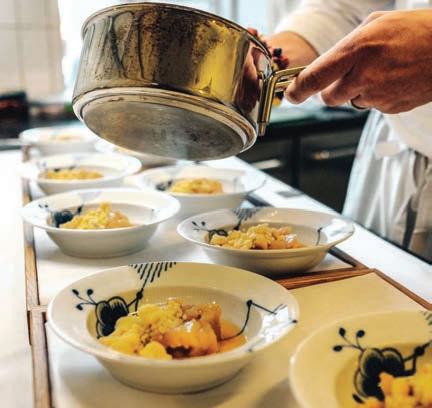
with morel sauce. Also in Copenhagen, try the Alchemist (two stars) for high-concept holistic dishes; Koan (two stars), by a Noma alum, blends high-end Korean with New Nordic; Kadeau (two stars) has a 15-course, winepaired tasting menu; and, of course, Noma (three stars). Driving out of Copenhagen to the northwest, you’ll be in Jutland, where Henne Kirkeby Kro (two stars) has been hosting hungry travelers since 1790. The 12 stylish
a neighborhood place by the group behind Sydney’s other top-shelf drinking establishments. Happy hour features $2 oysters and $6 gin and tonics. Or spring for the $250 half-bottle of Krug with complimentary caviar. liquidandlarder.com.au
For outstanding drinks and a seasonal small-plates menu, try De Vie in Paris for classic cocktails on draft at the bar; behind the curtain, table d’hôte is hosted by Frenchie alum Adam Purcell. devie.bar
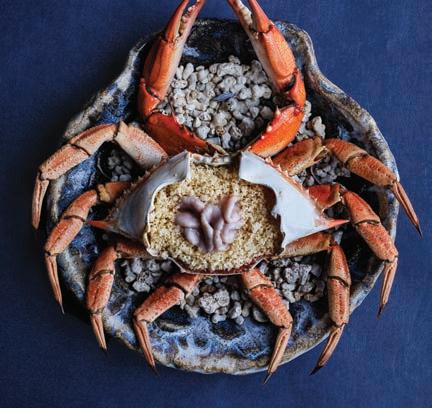
bedrooms have Hästens mattresses. The menu at Lyst (one star) changes daily but always includes fresh-caught and just-picked ingredients. Tre (one star) is seven tables in a tiny coastal town. On a cliff overlooking the North Sea, Villa Vest (one star) features a hugely creative, seafood-centric menu. Linger over a second bottle of wine because it is only a short downhill walk to overnight at Villa Vest Badehotel. visitdenmark.com u
—Irene Rawlings
Henne
Kirkeby
Kro/Thomas
Høyrup
Christensen; Noma
Alchemist
Henne Kirkeby Kro
Noma
Lucky Cat by Gordon Ramsay
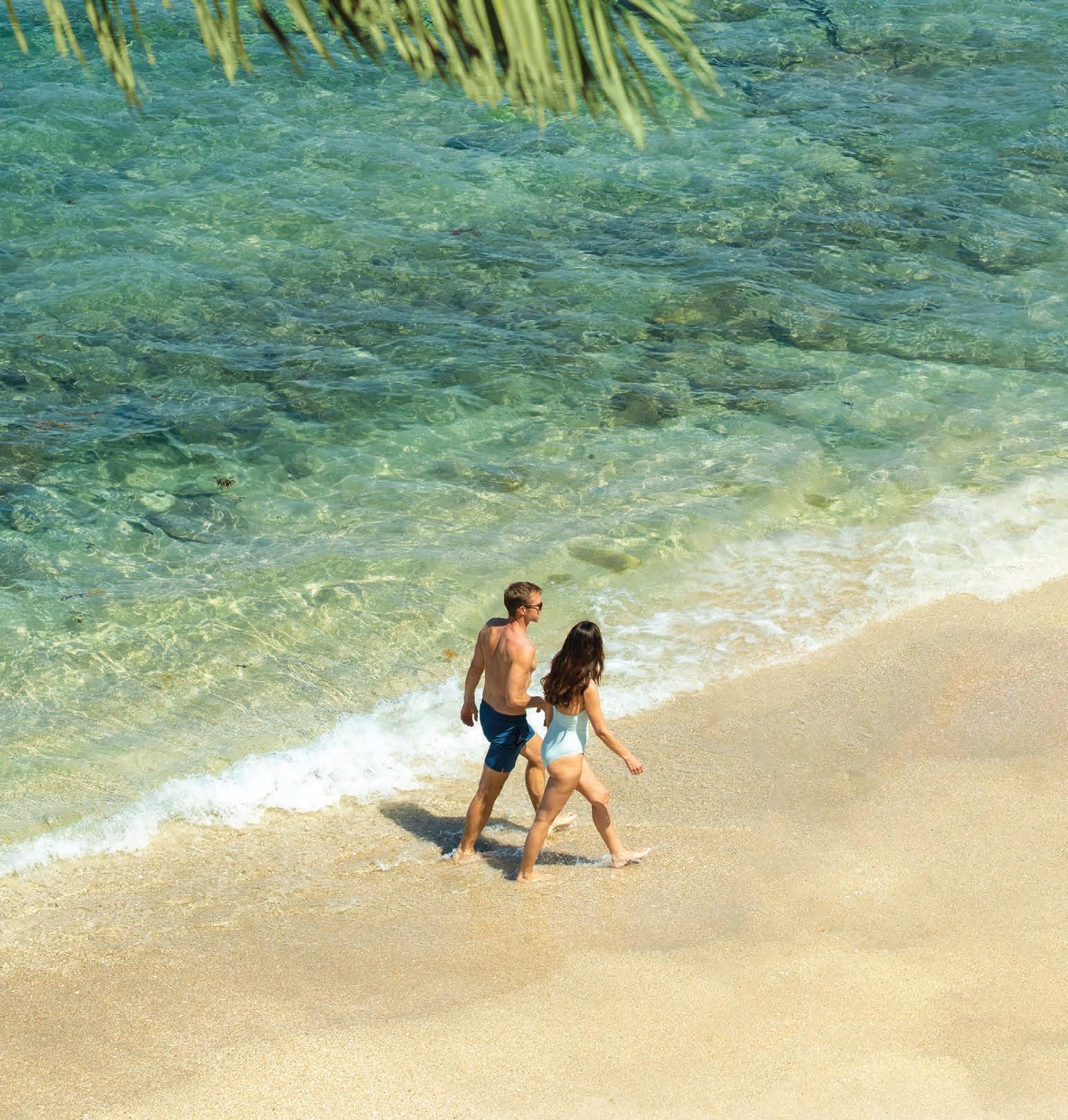
DISCOVER A SOPHISTICATED KIND OF UNWIND
Where elegance meets effortless. Relax on our warm beaches. Indulge in our exquisite restaurants. And get pampered from head to toe in our award-winning spa.
